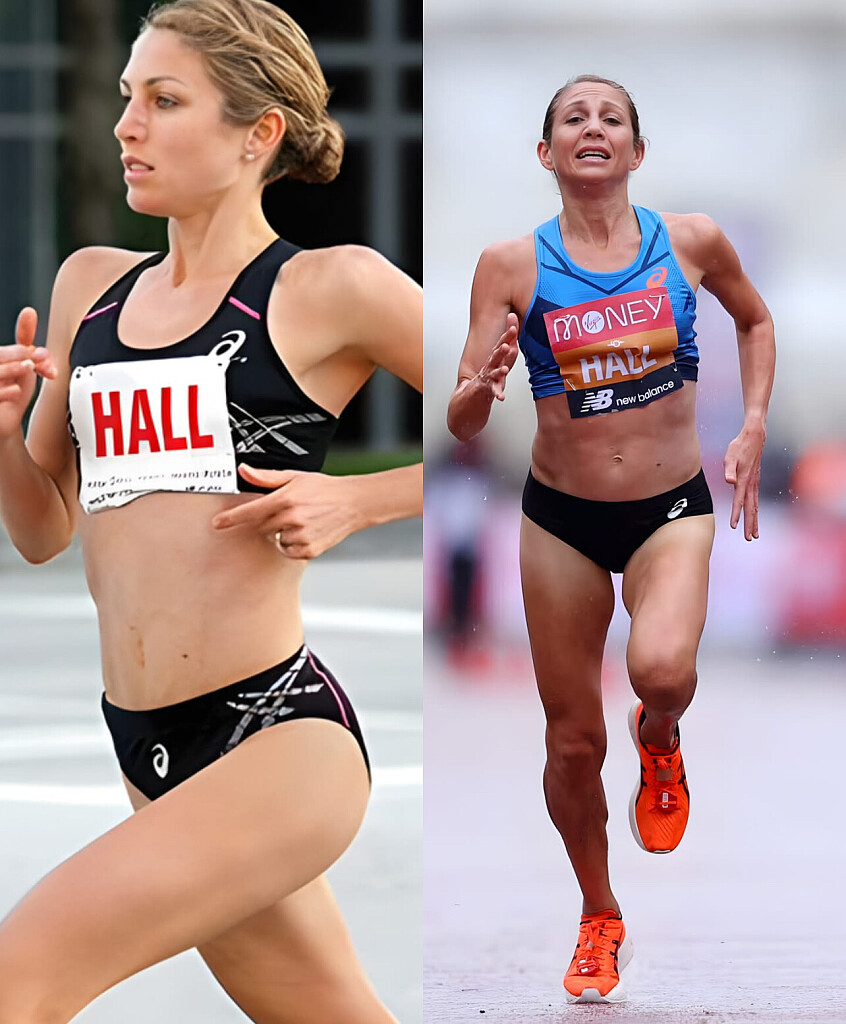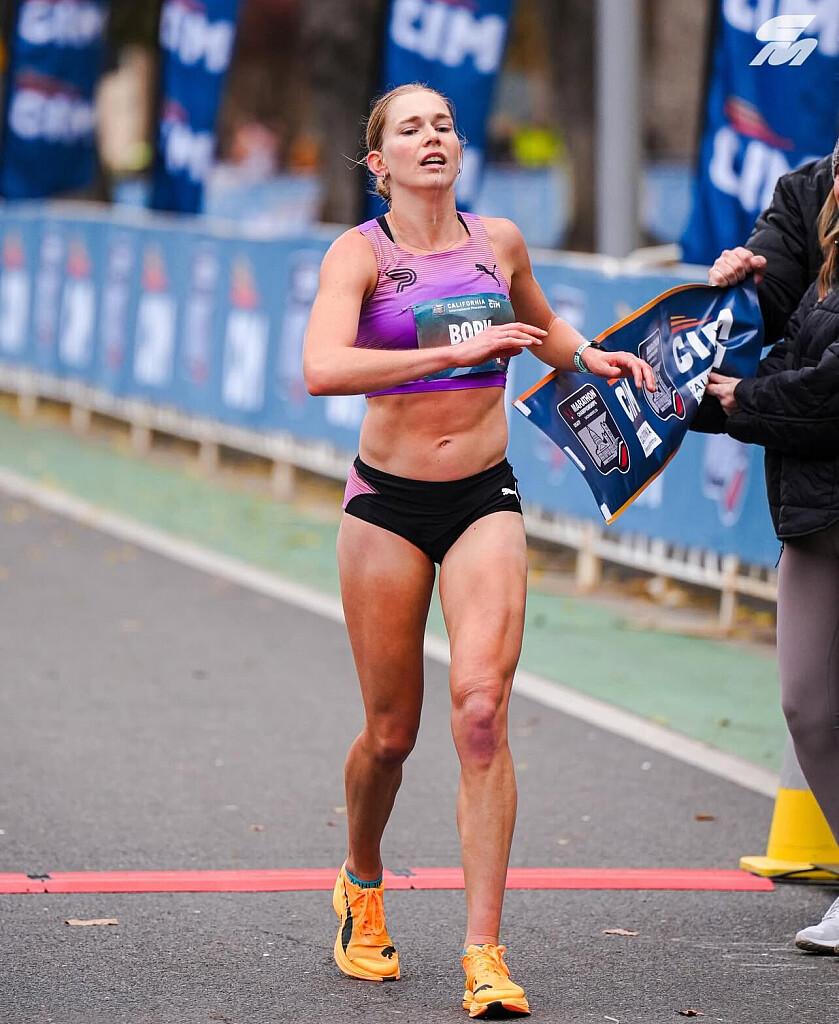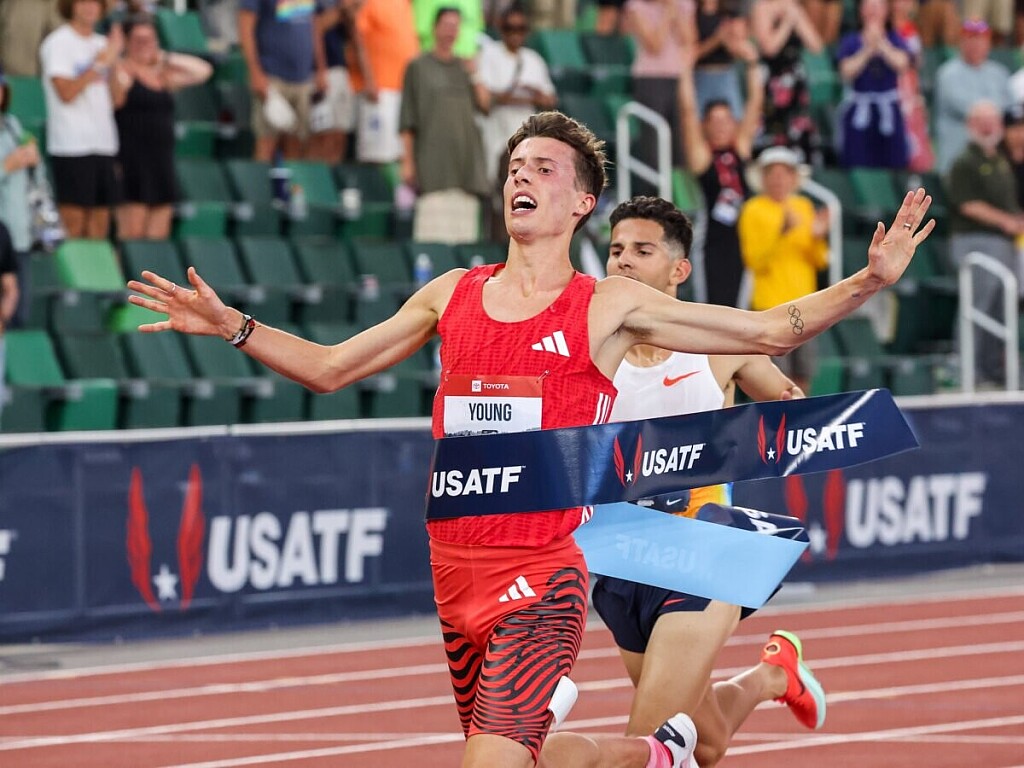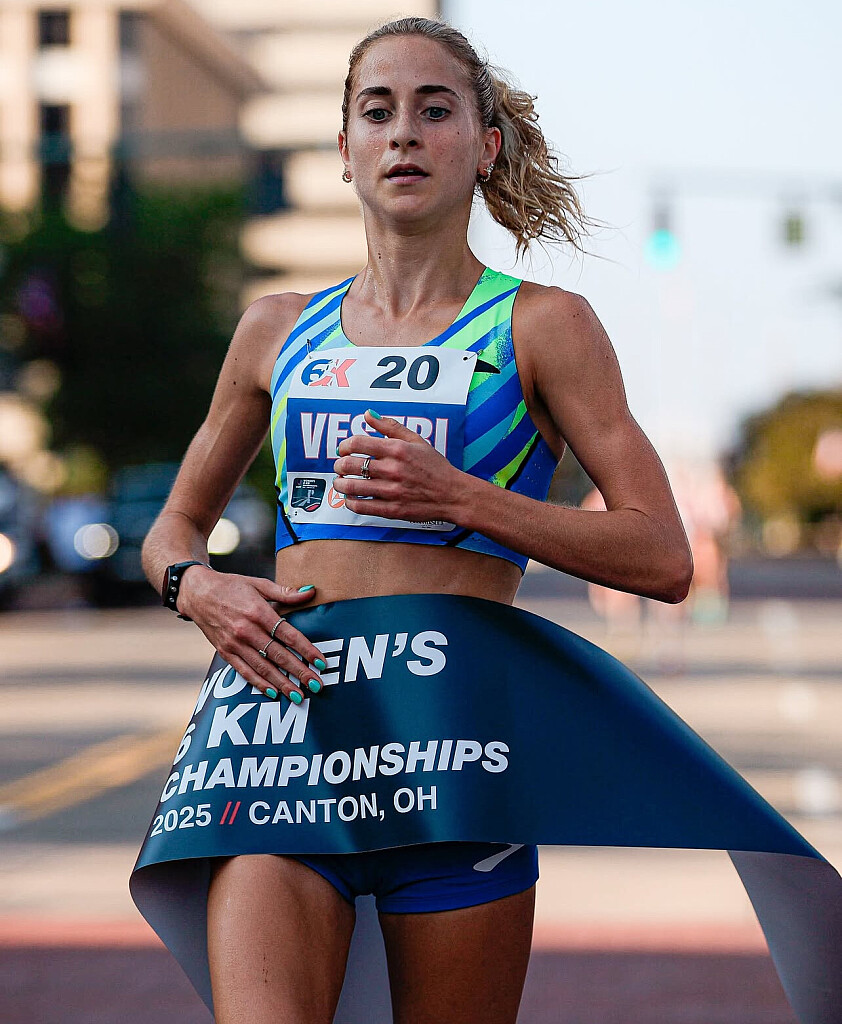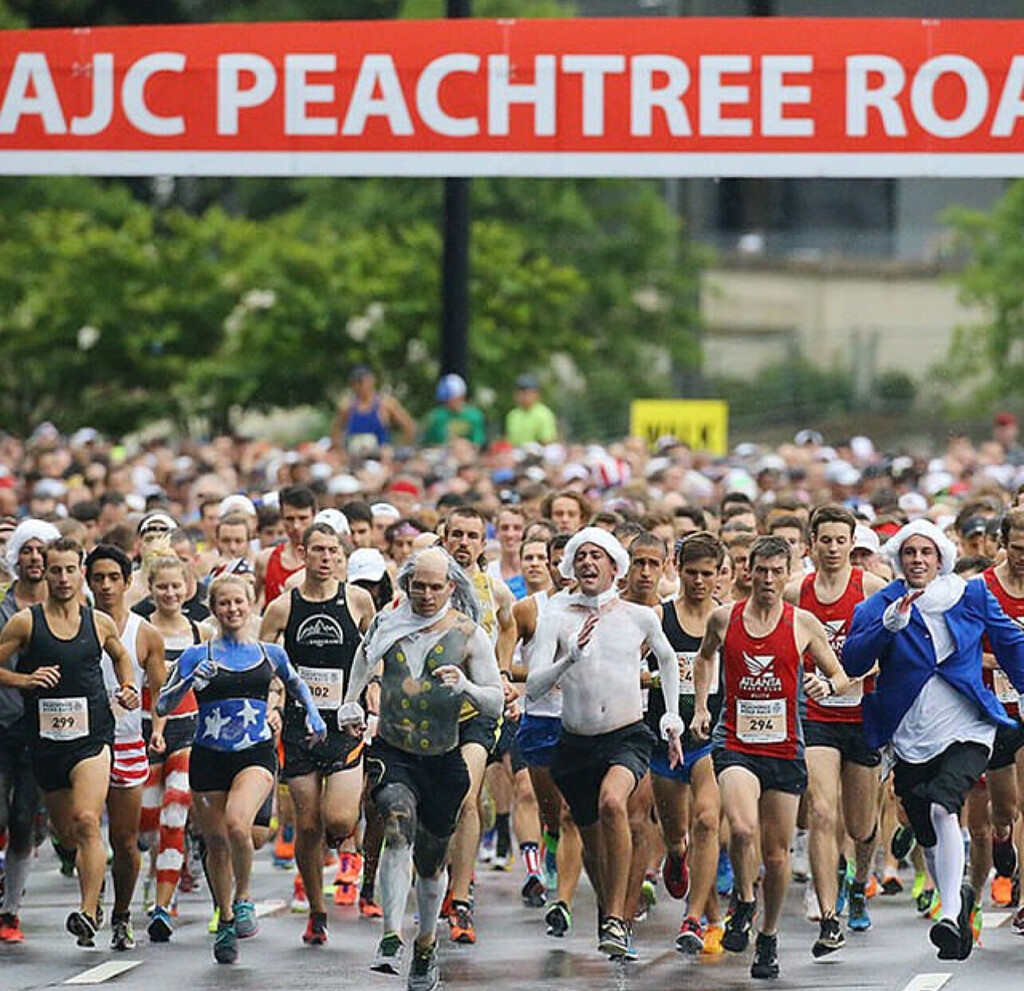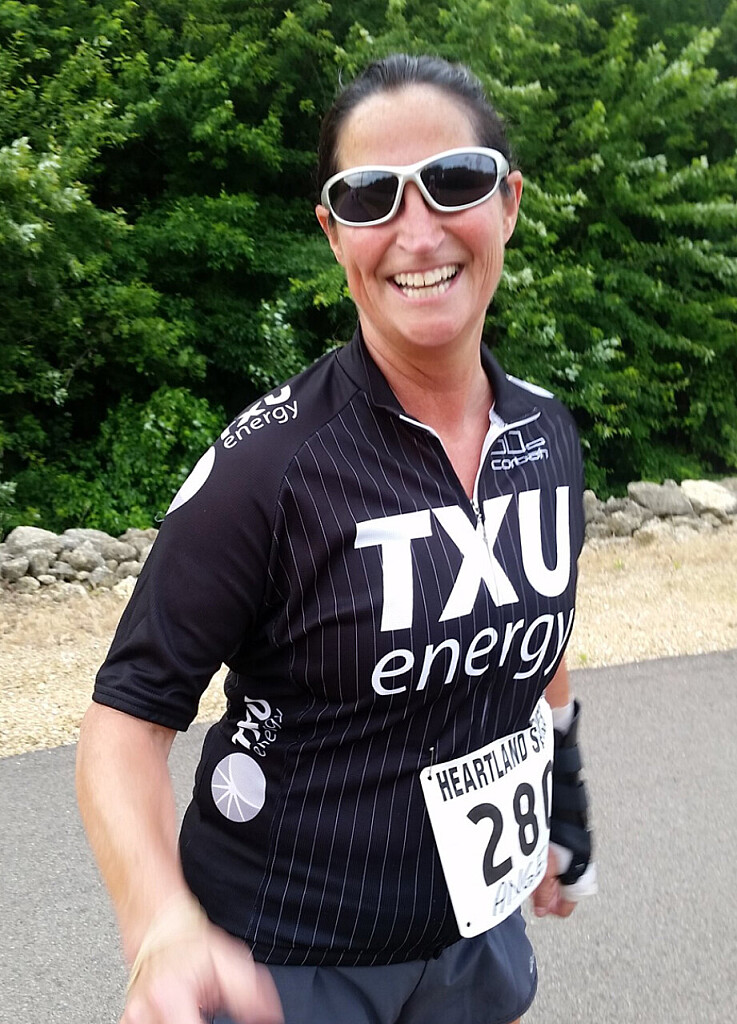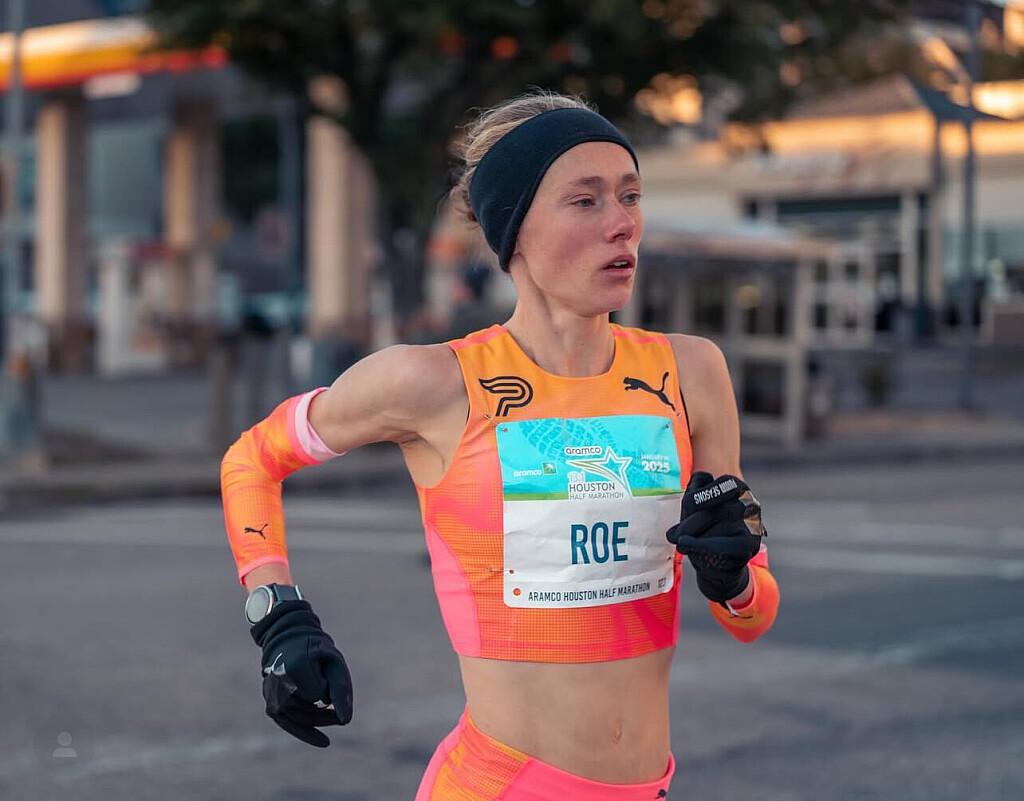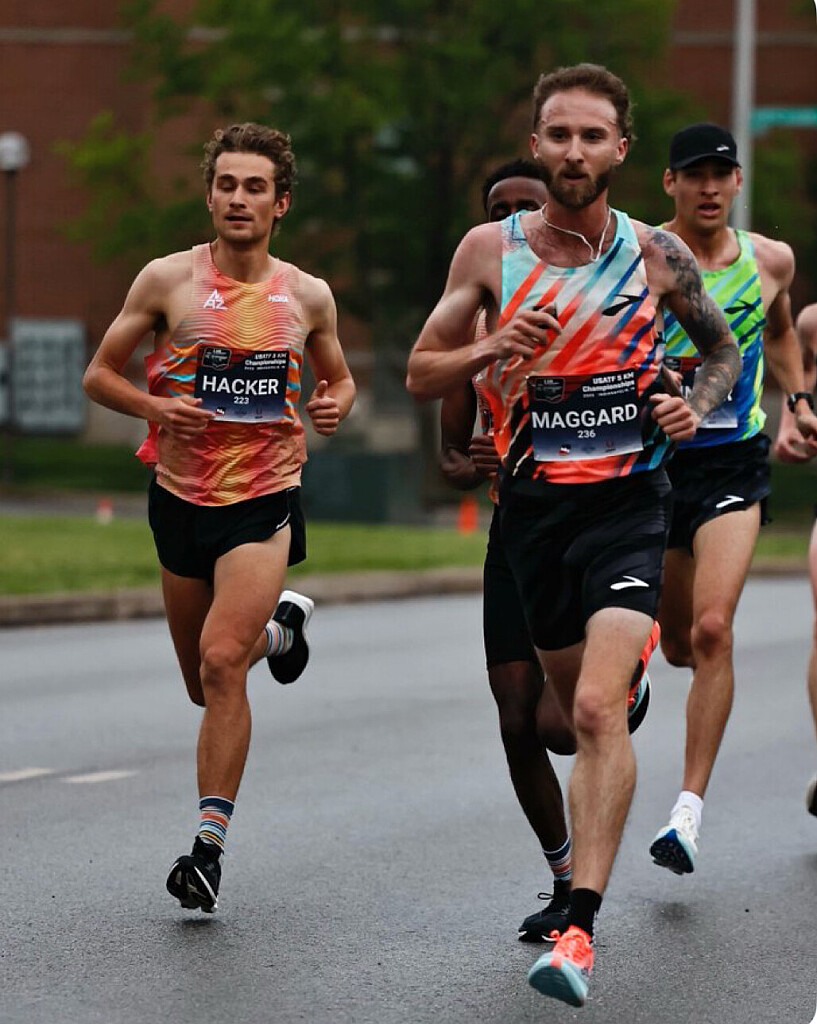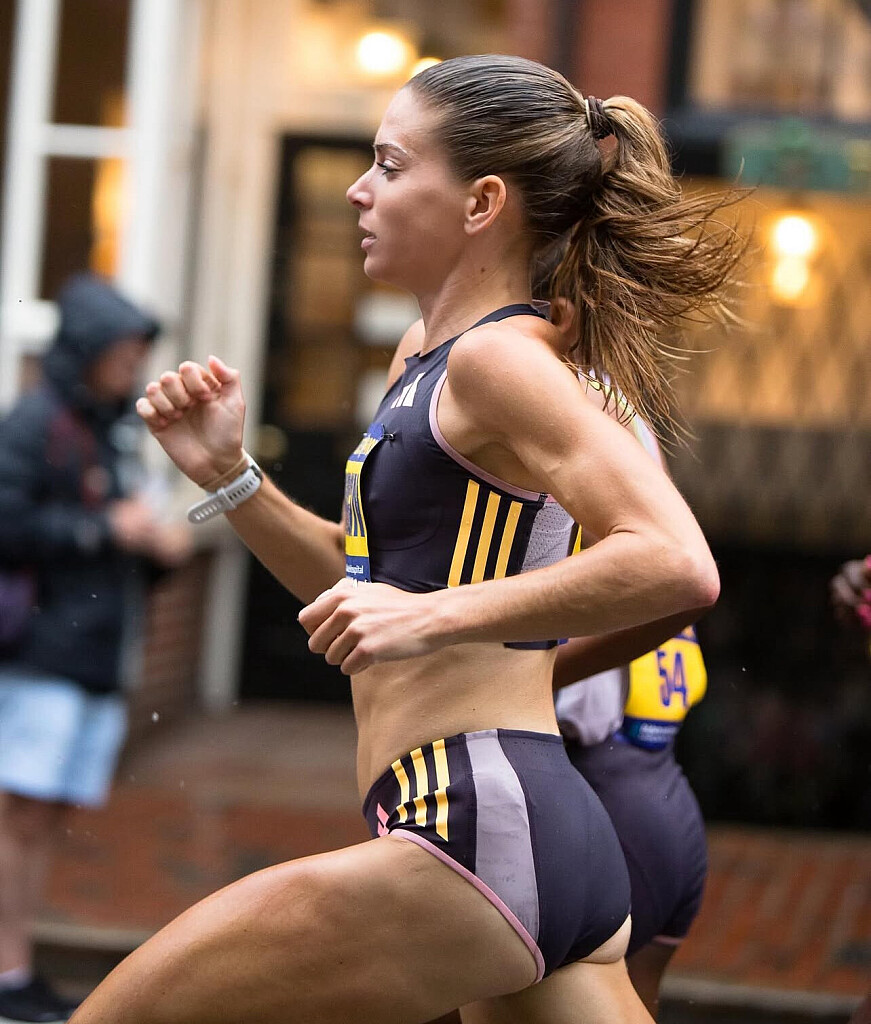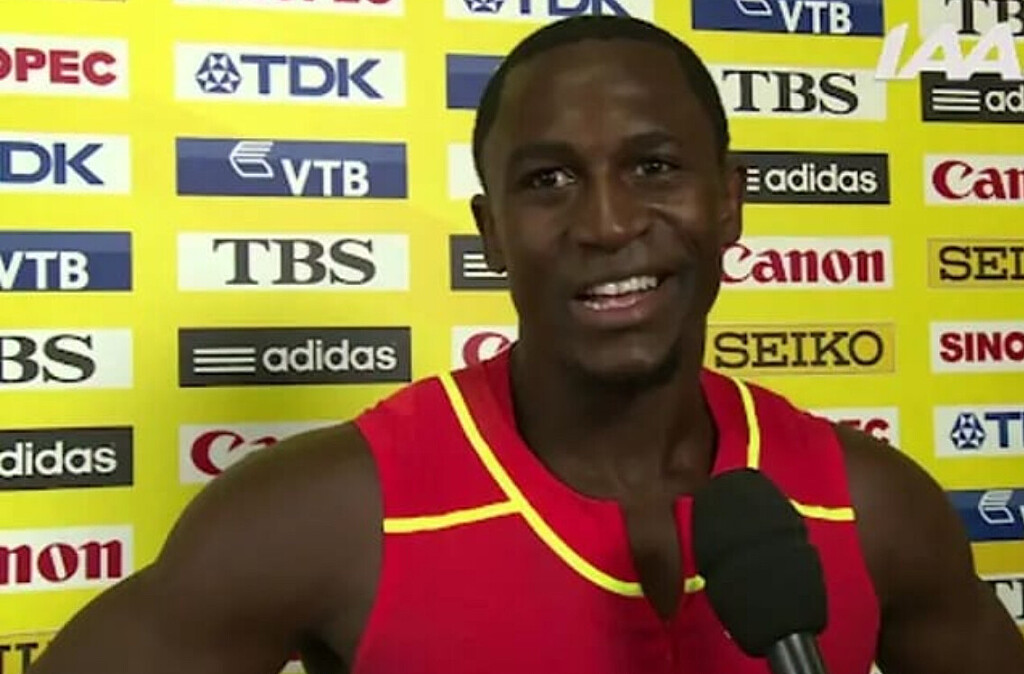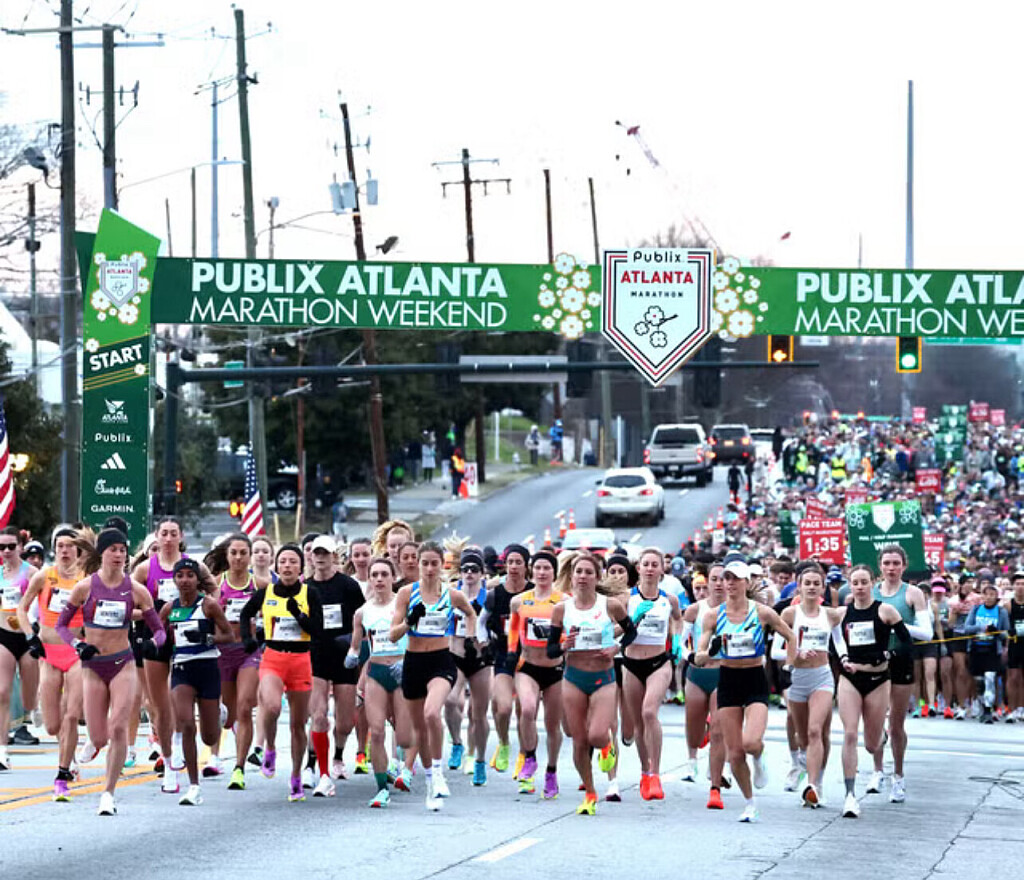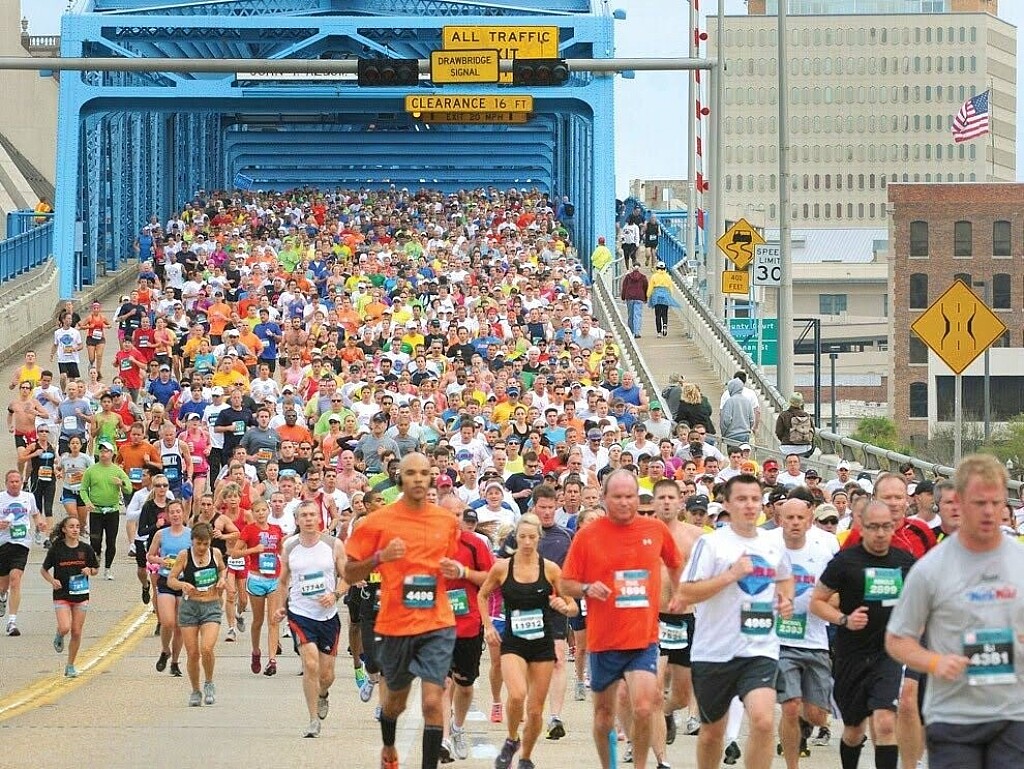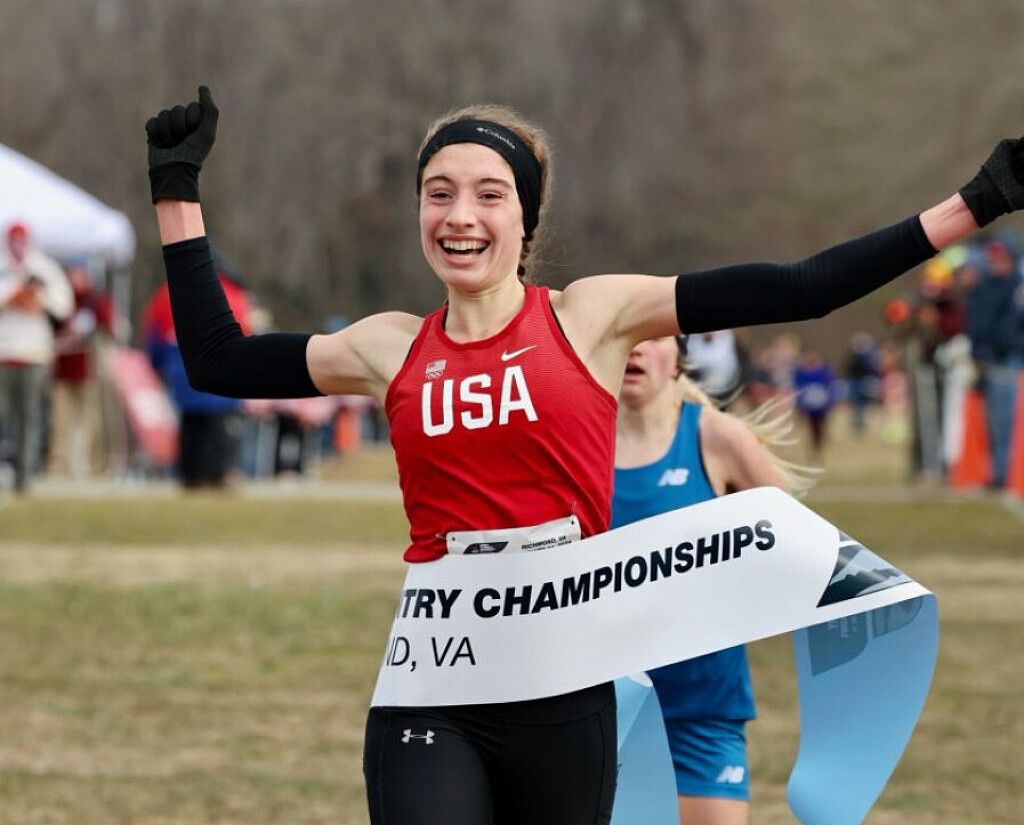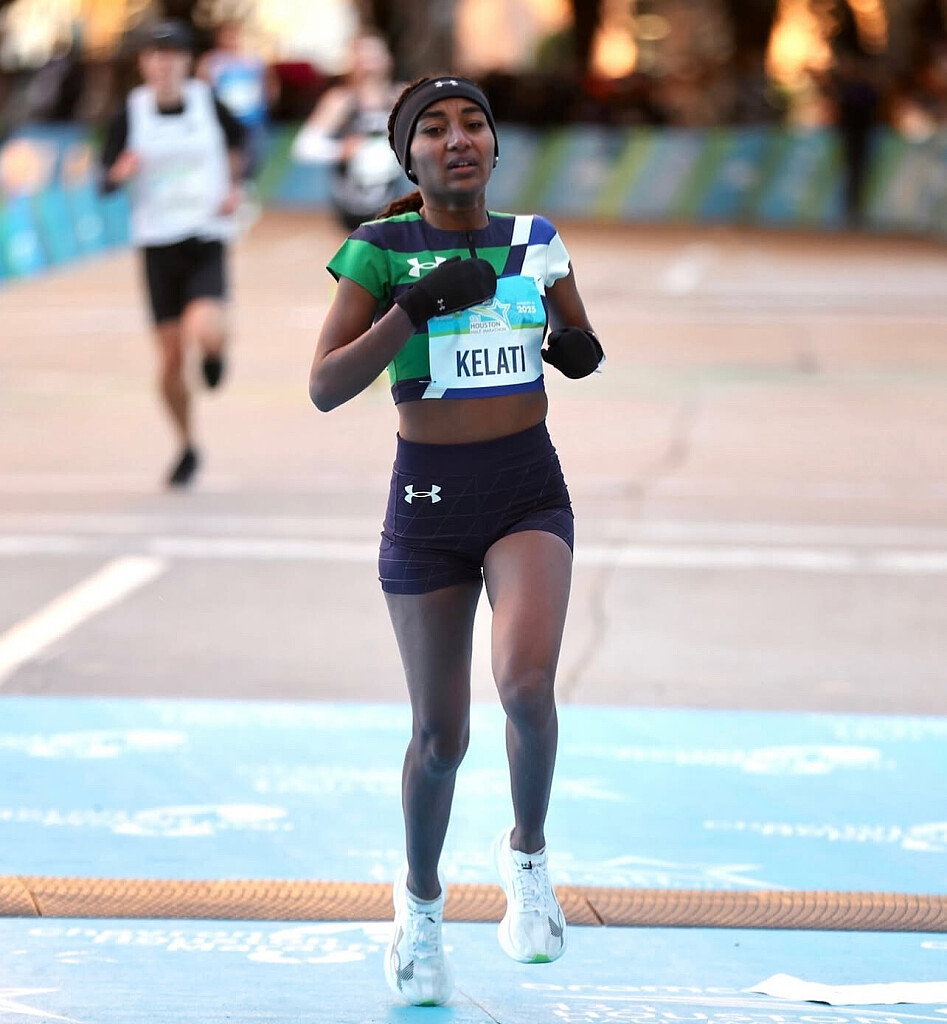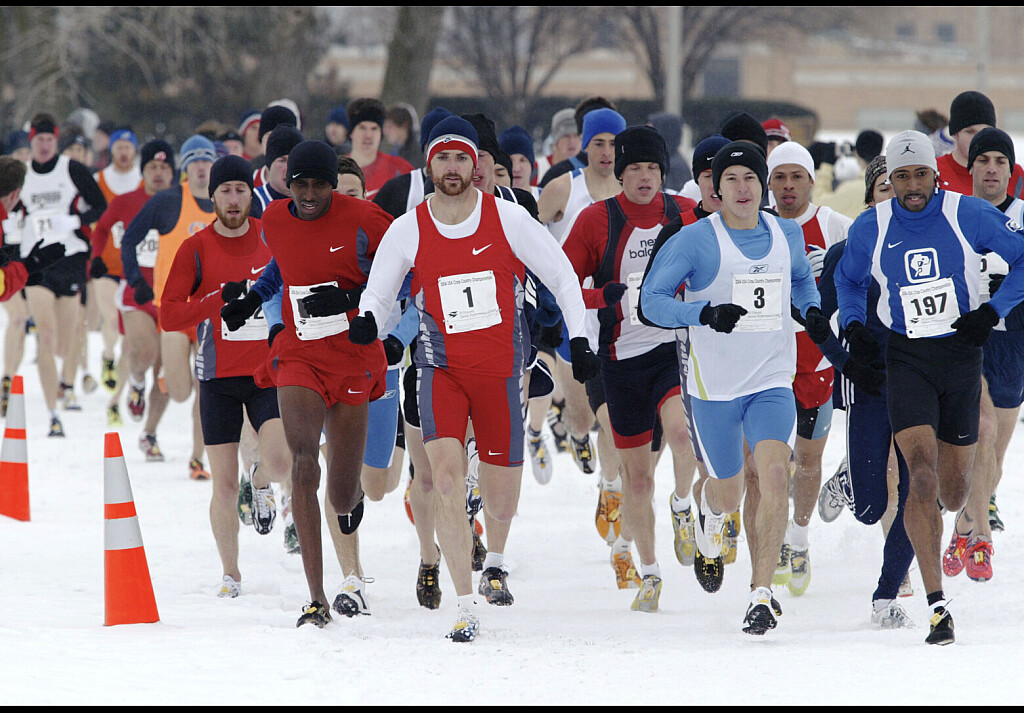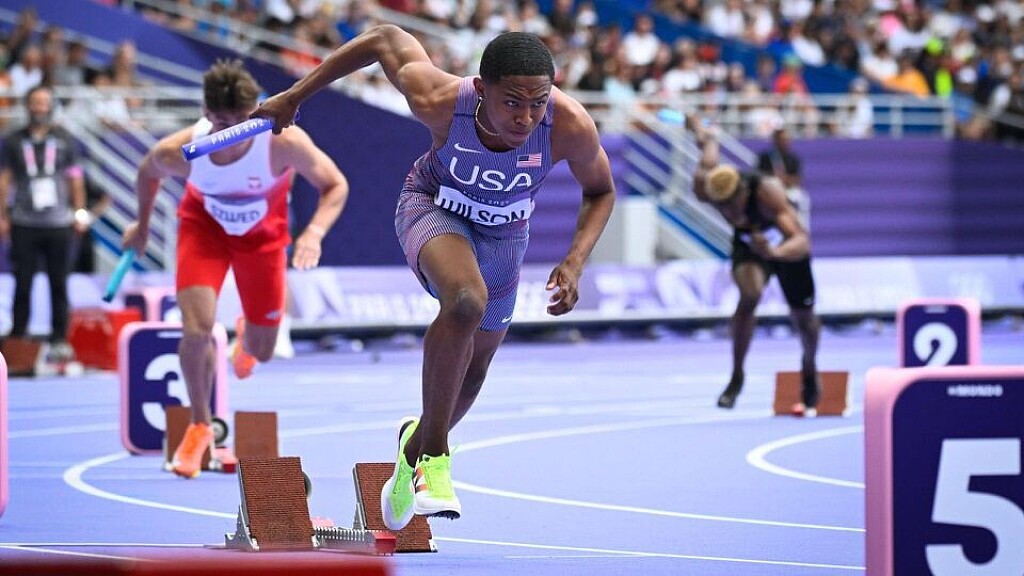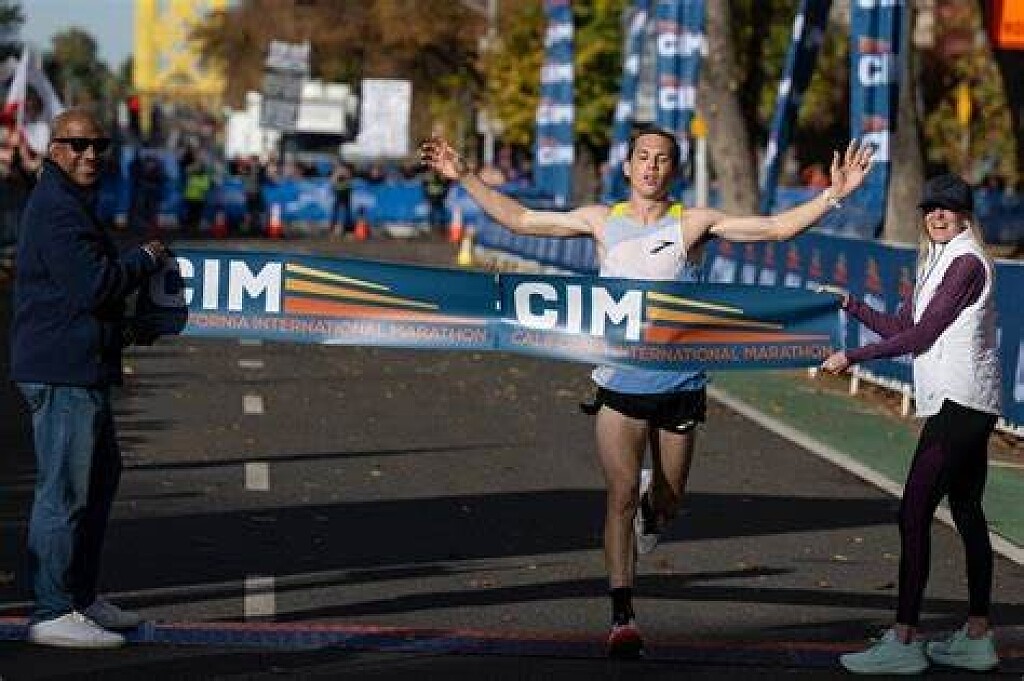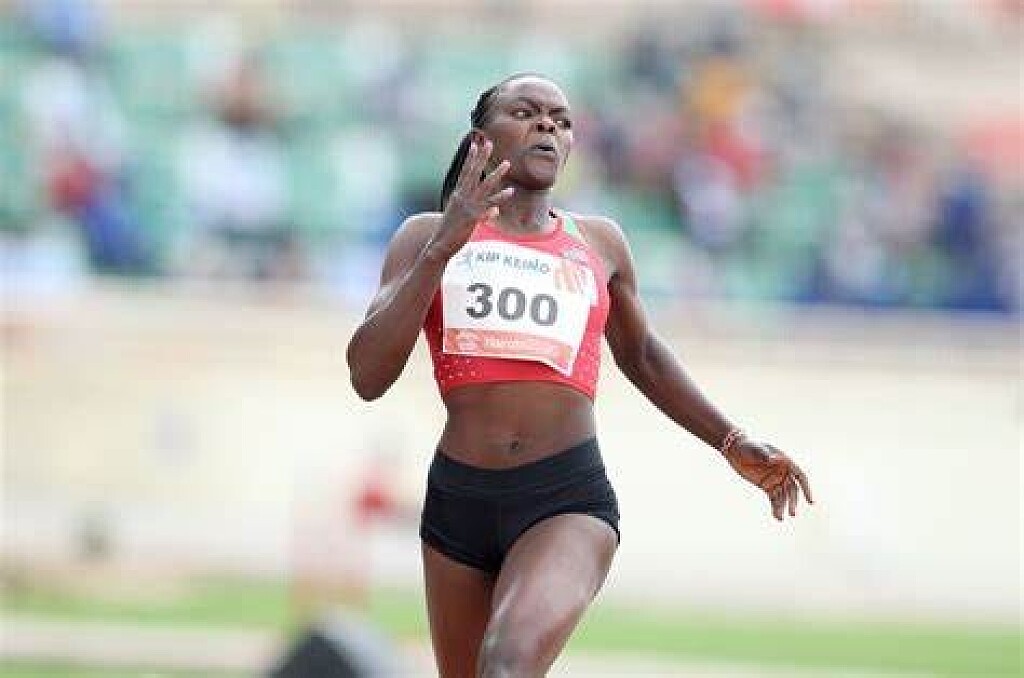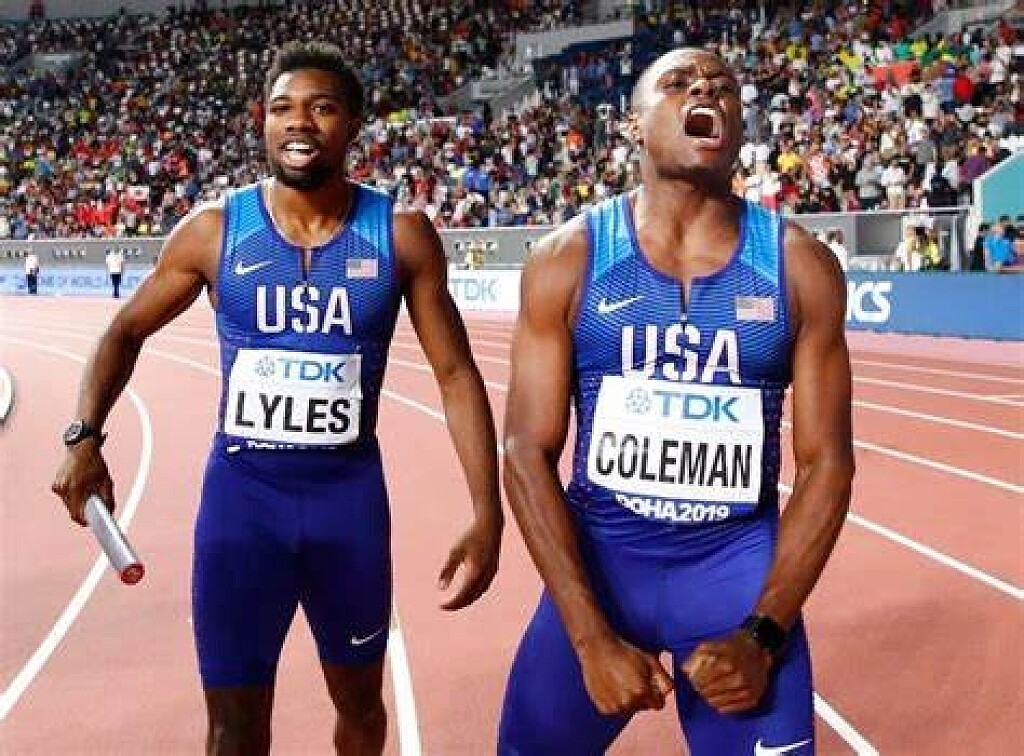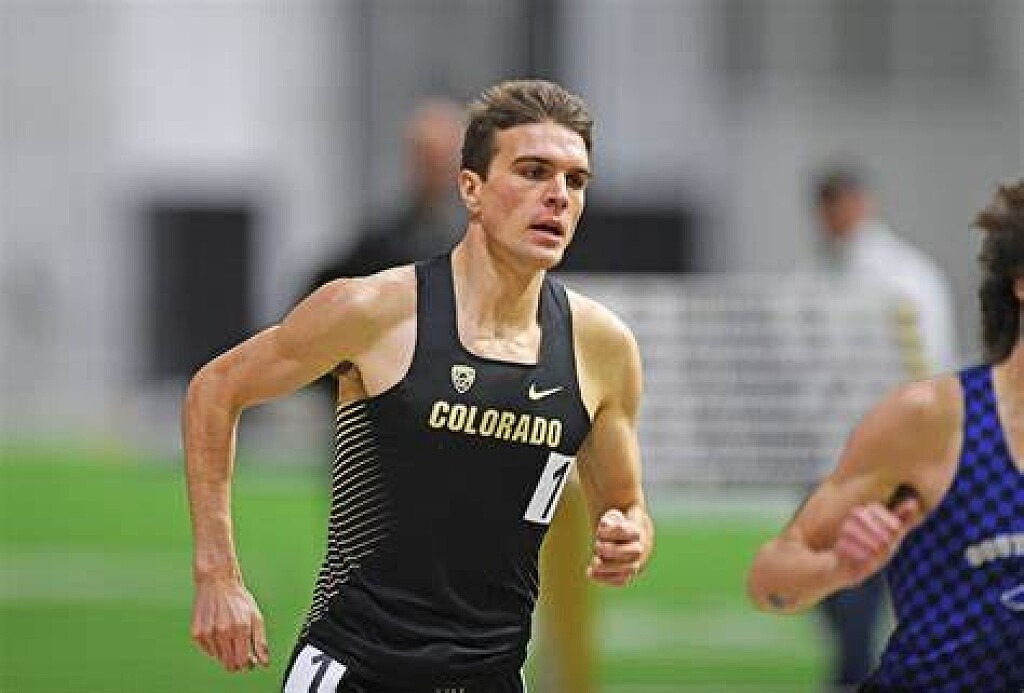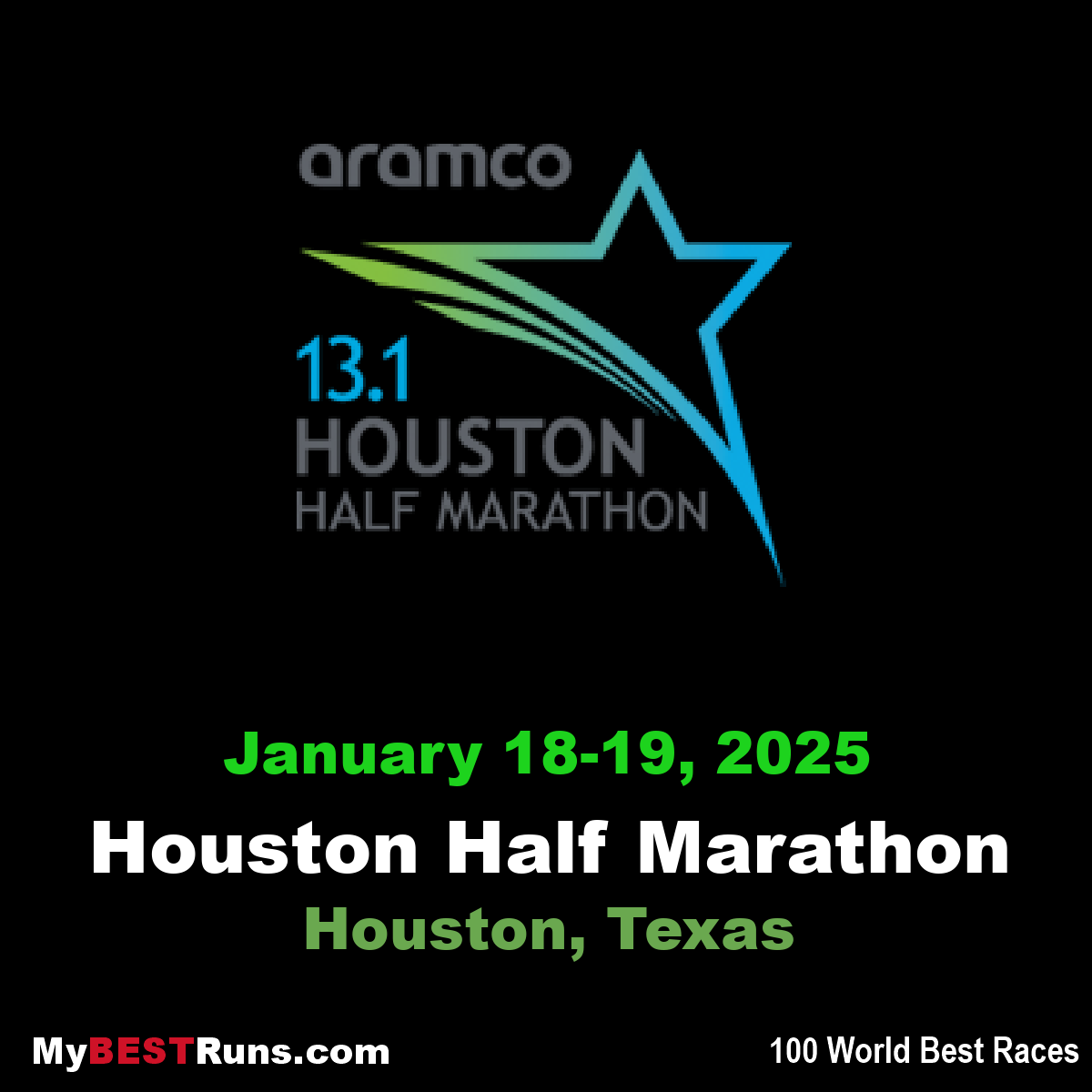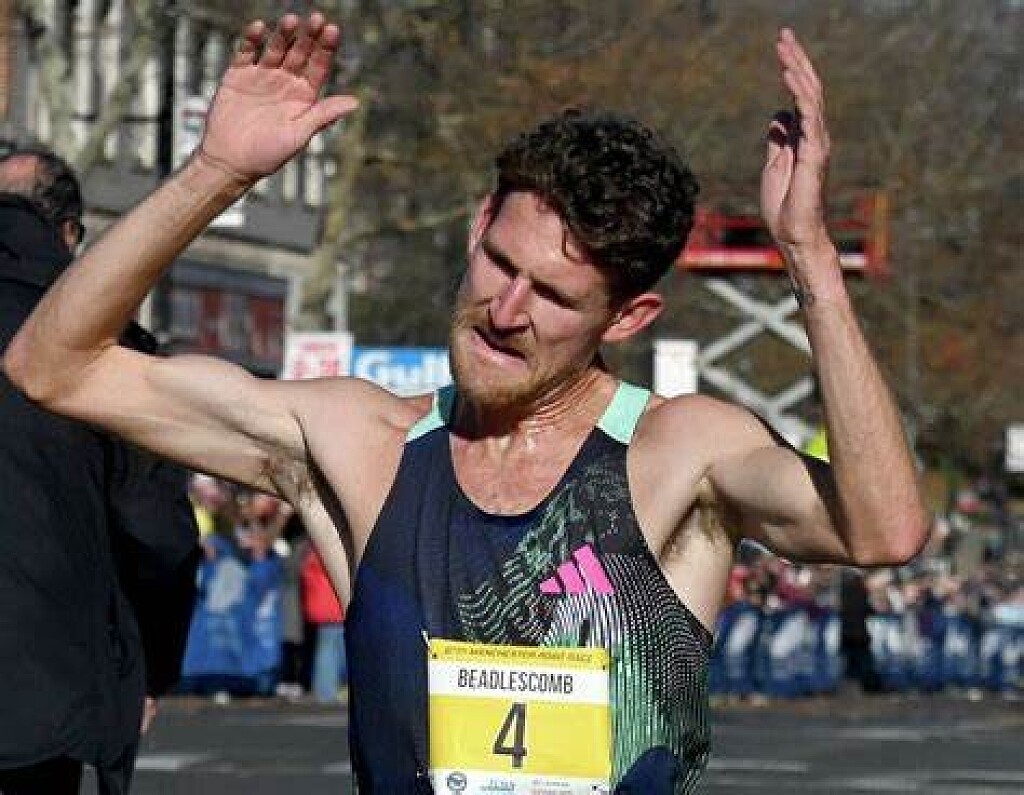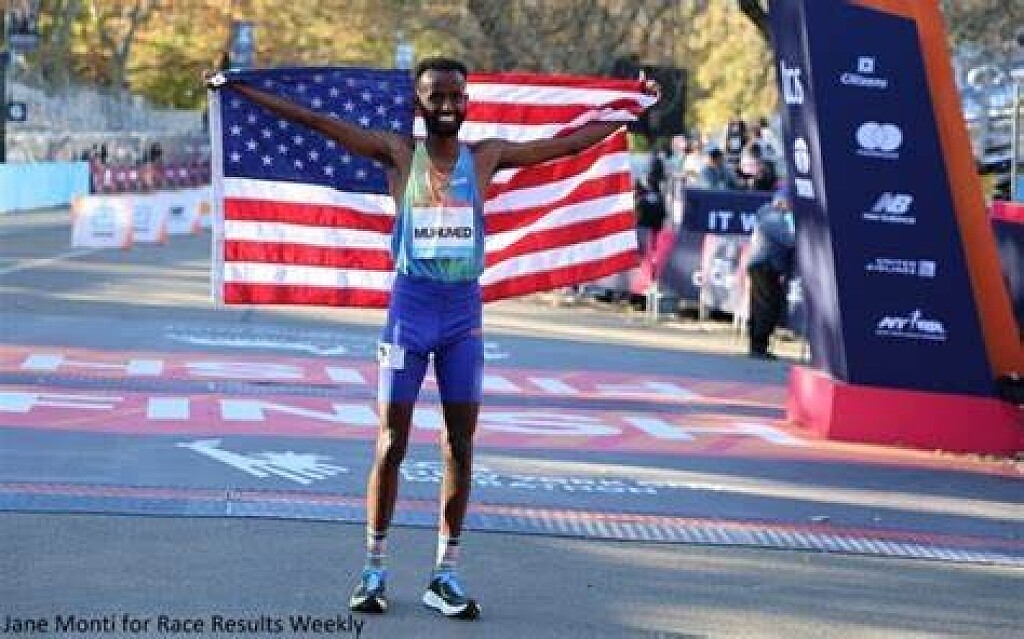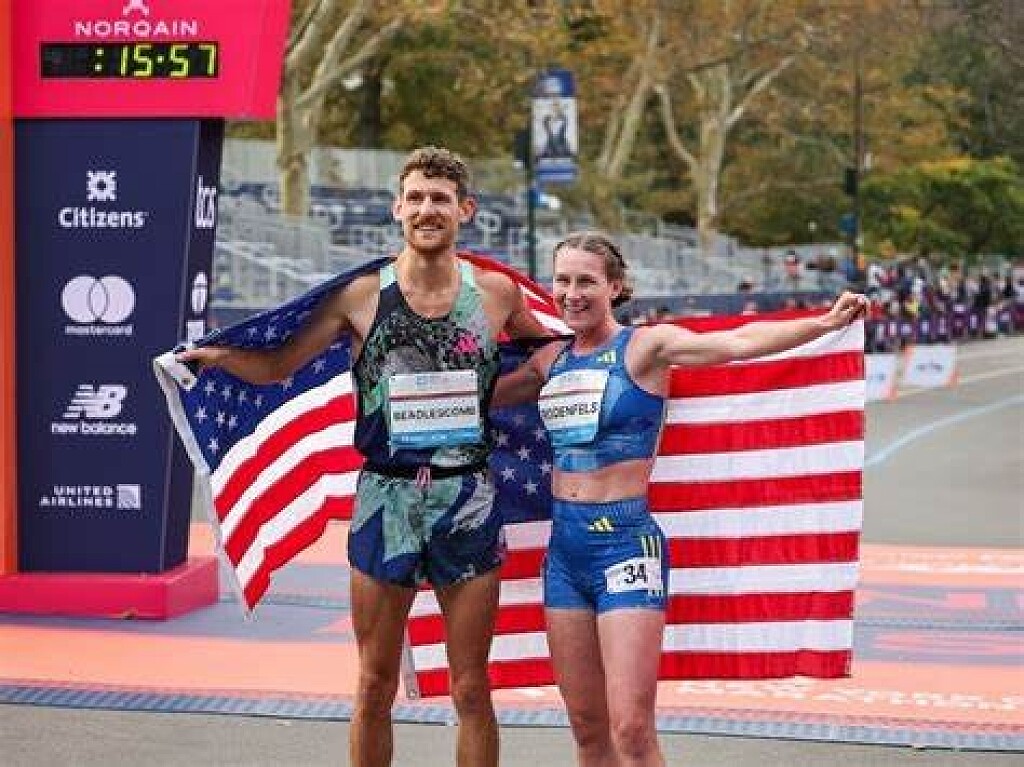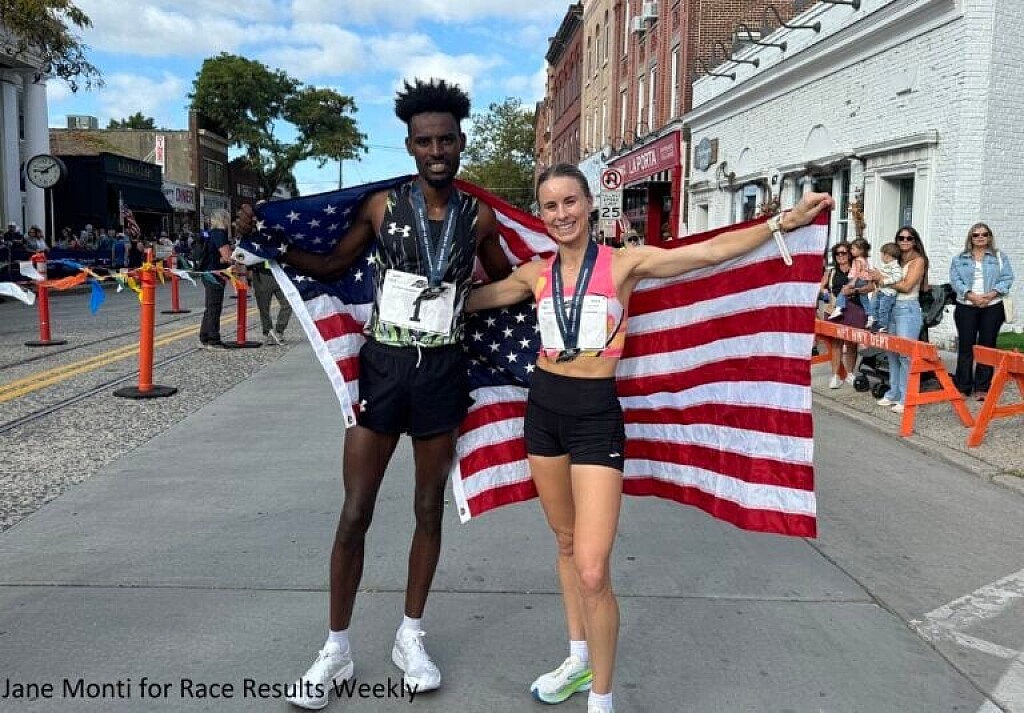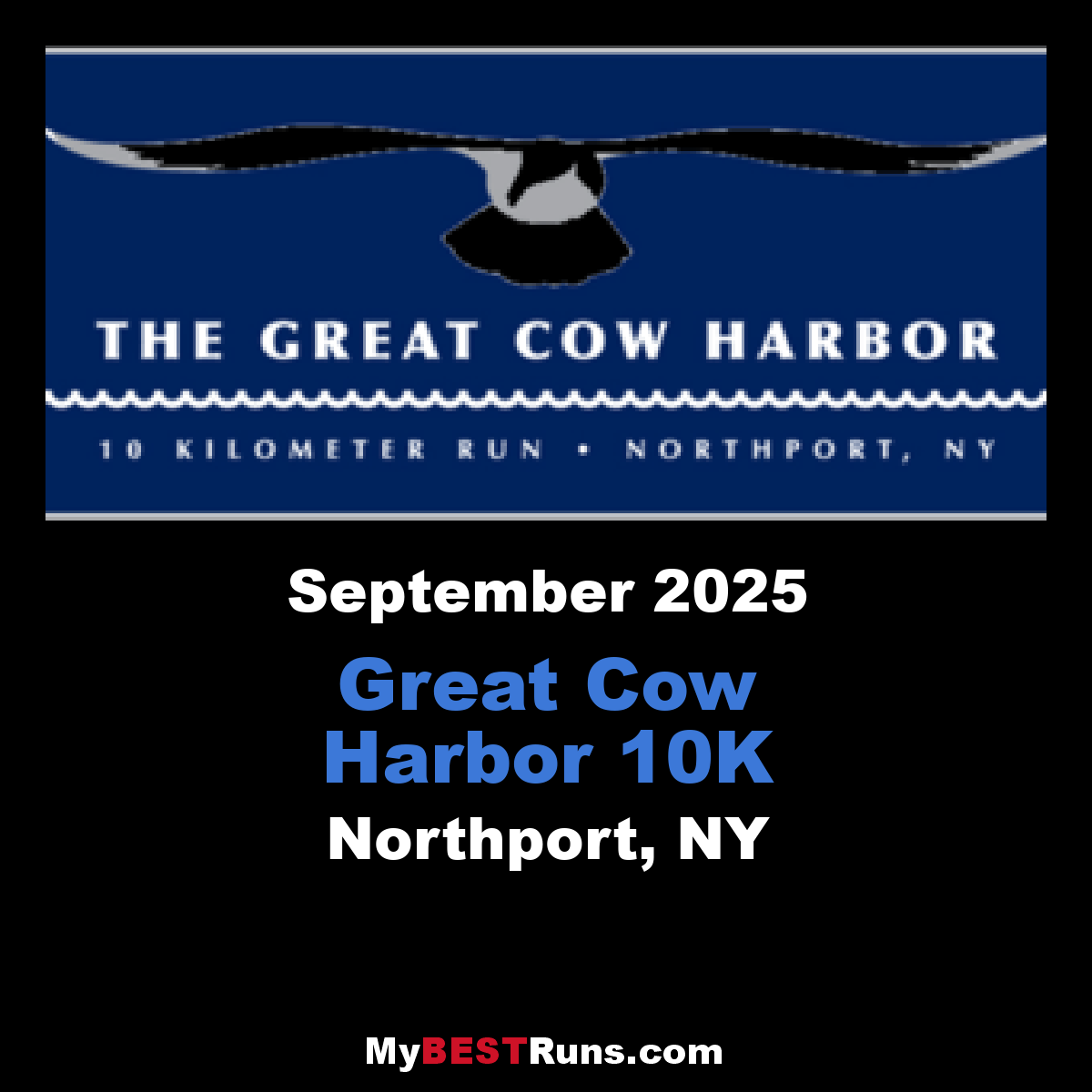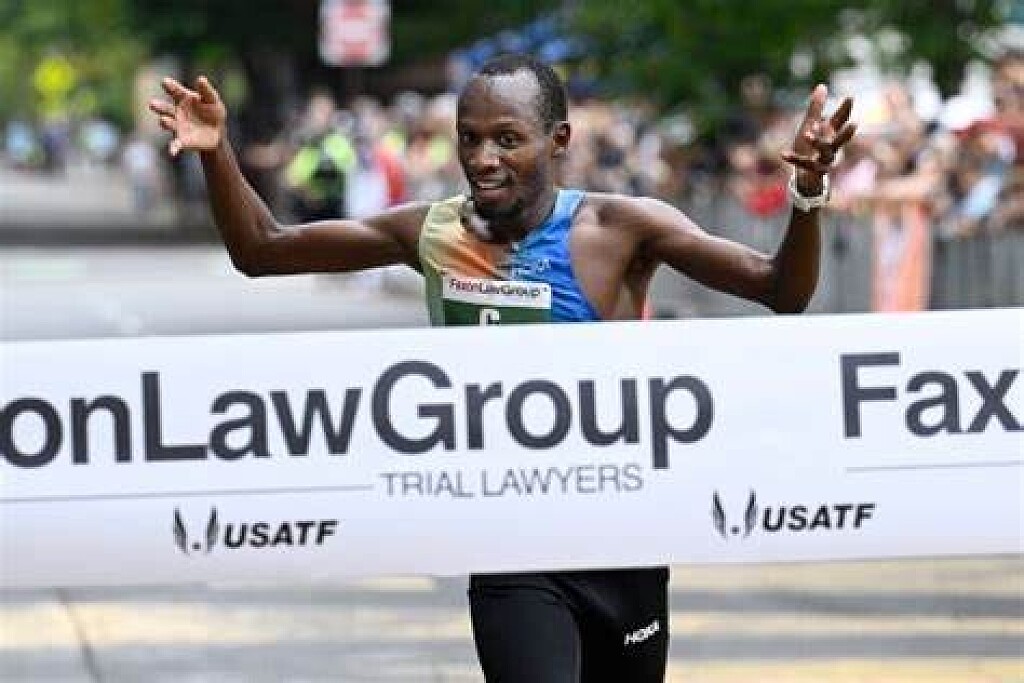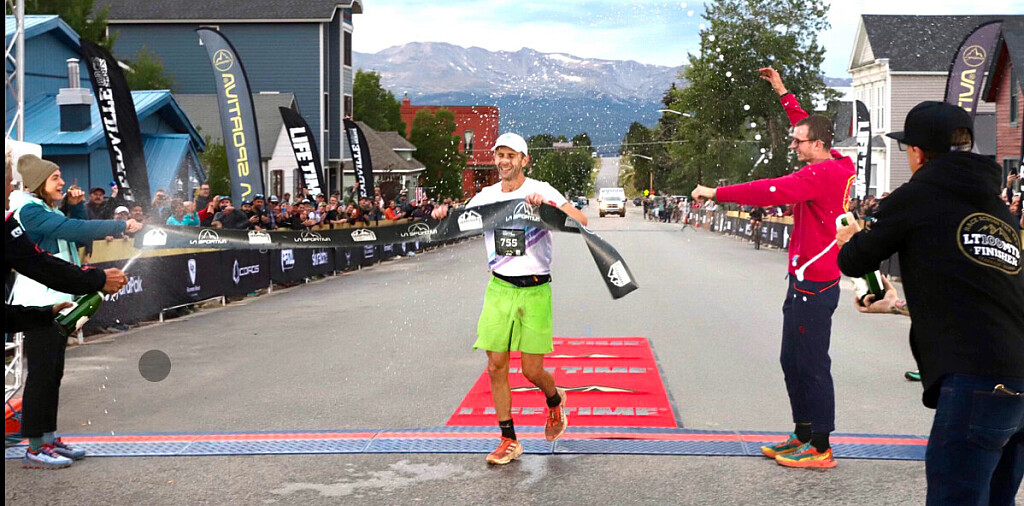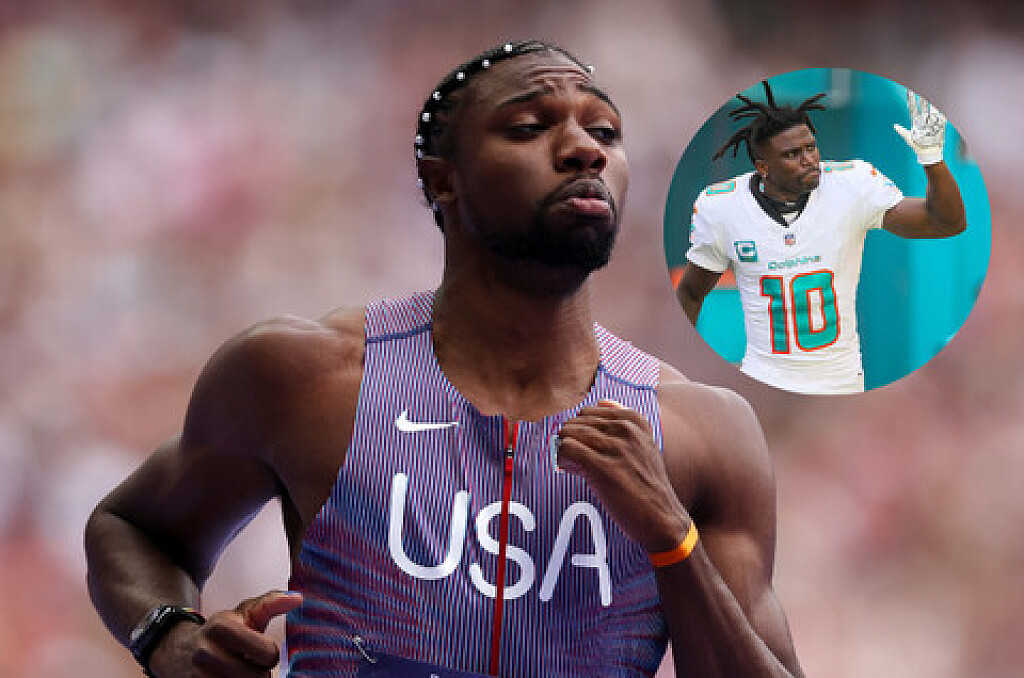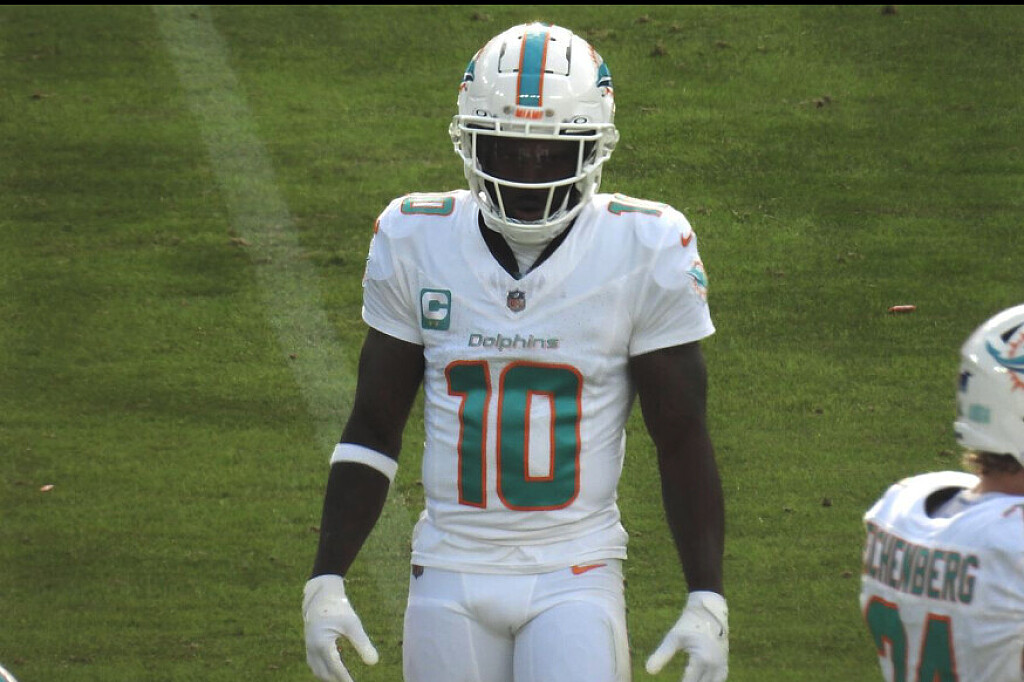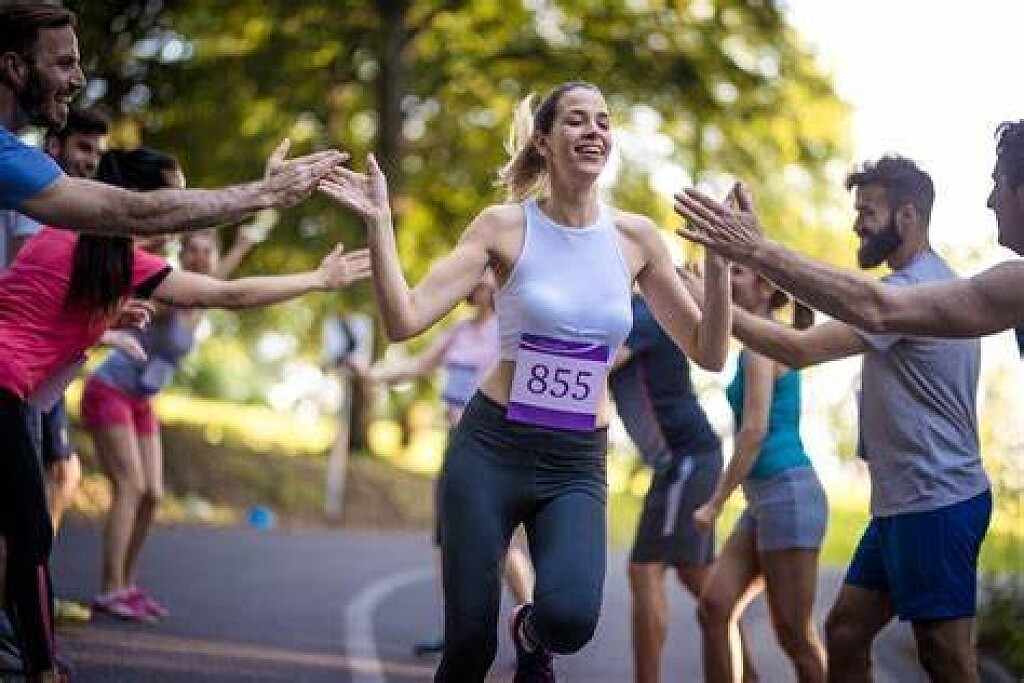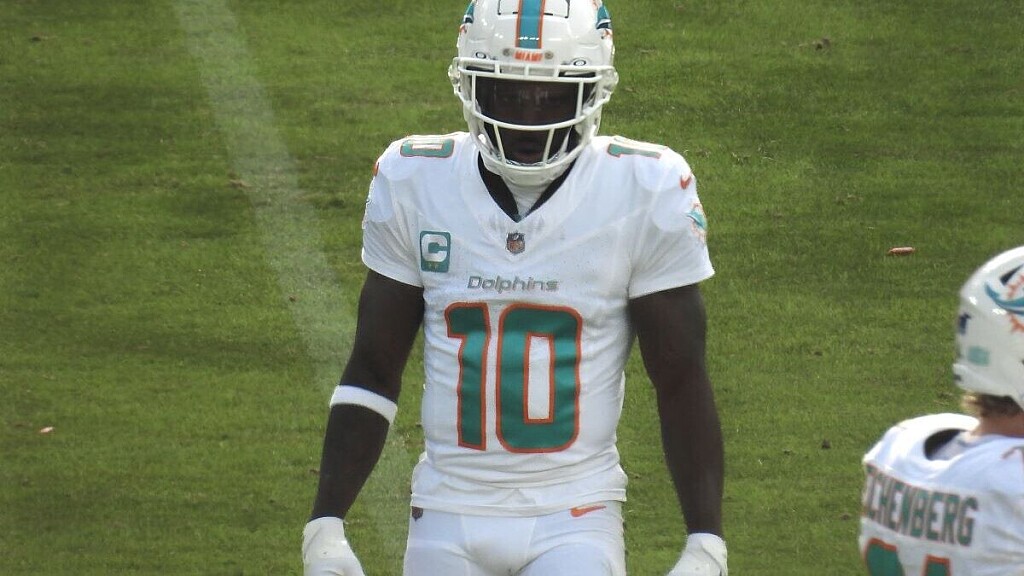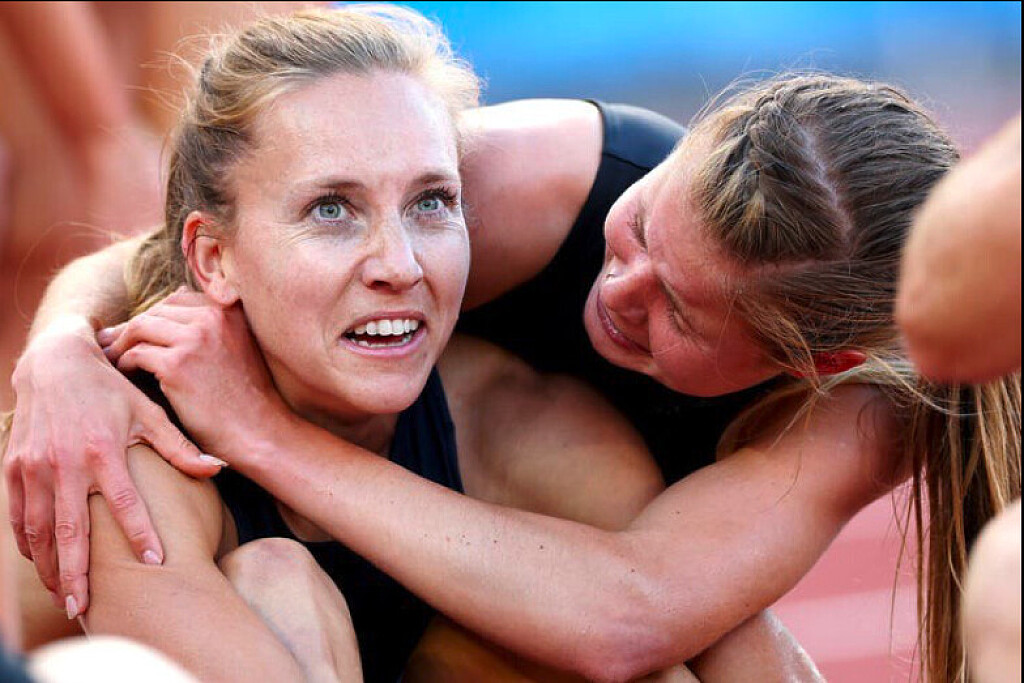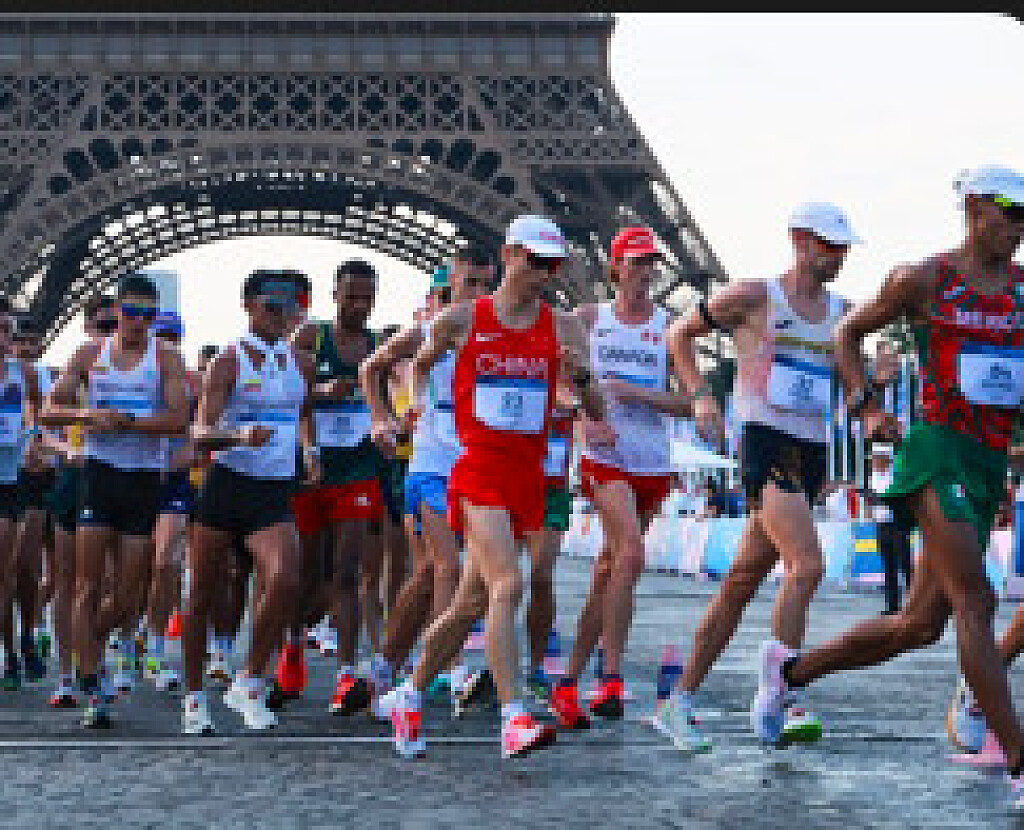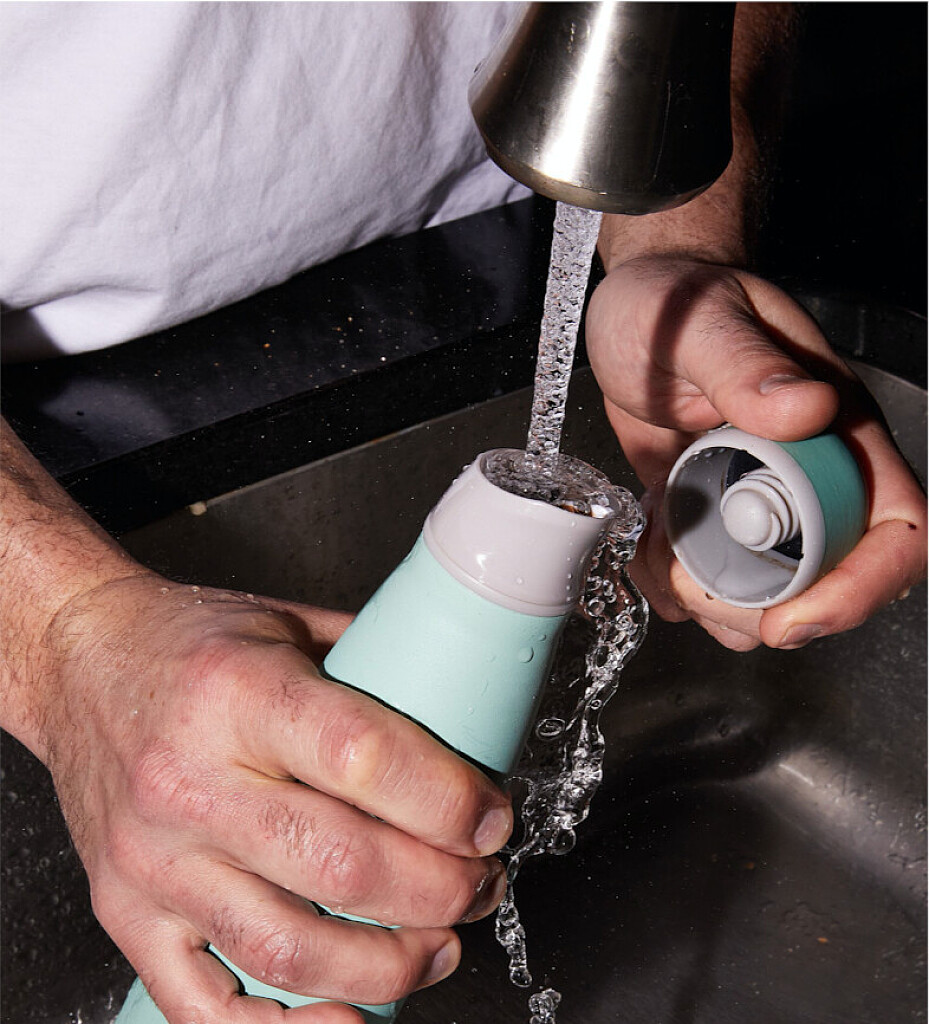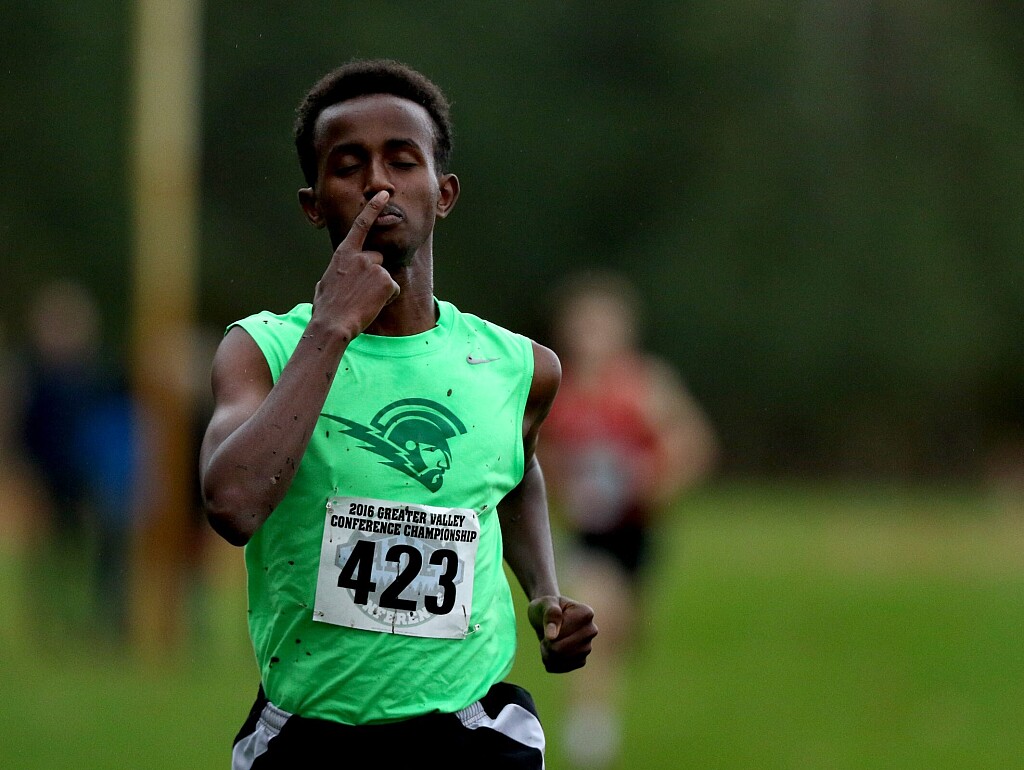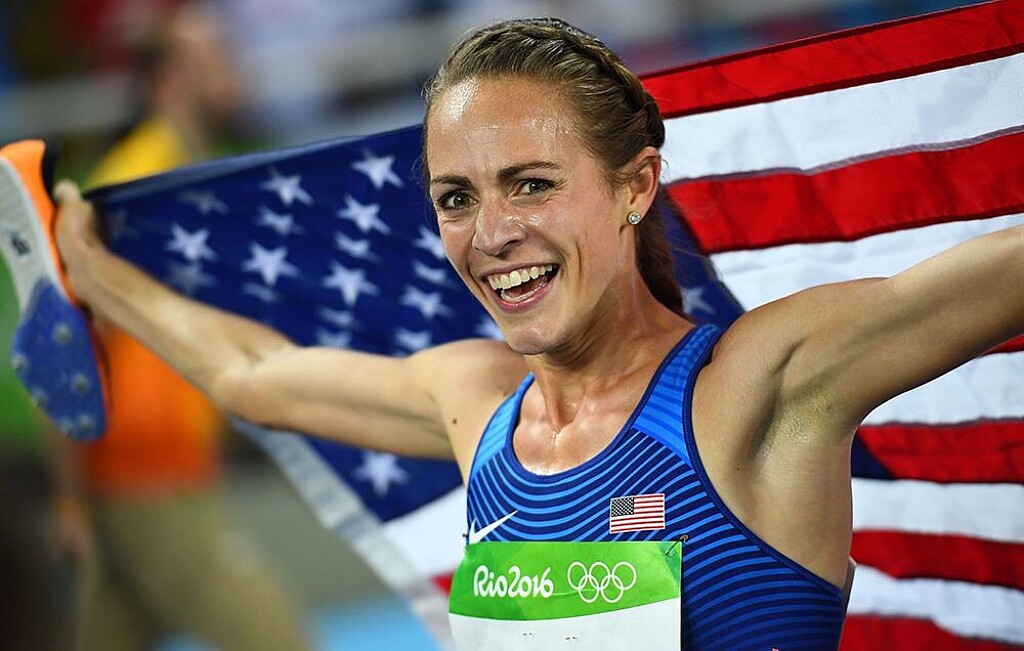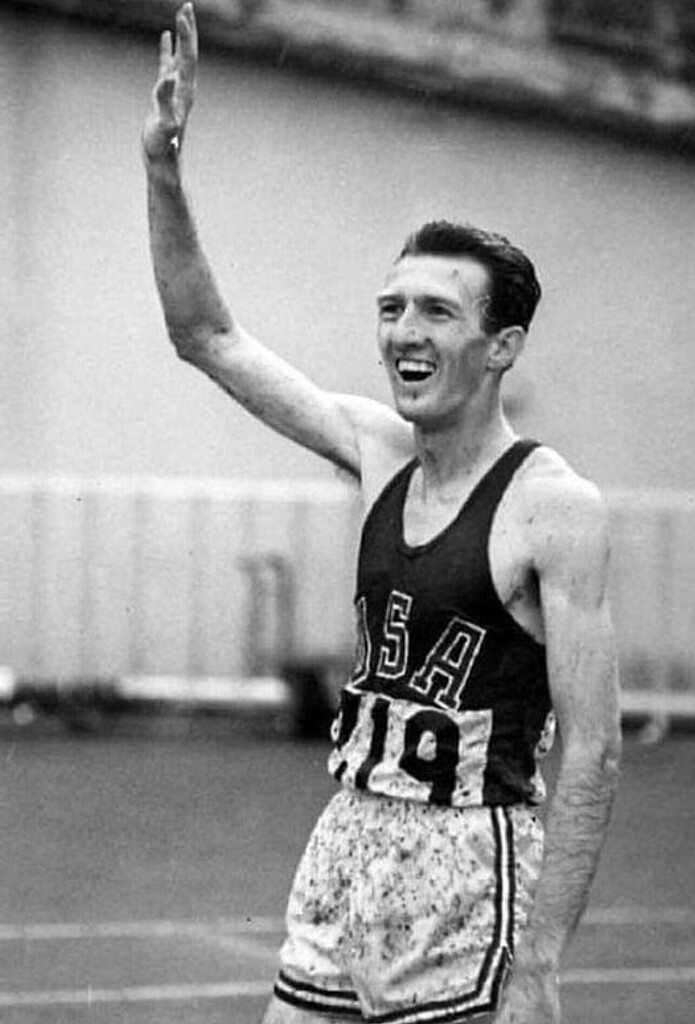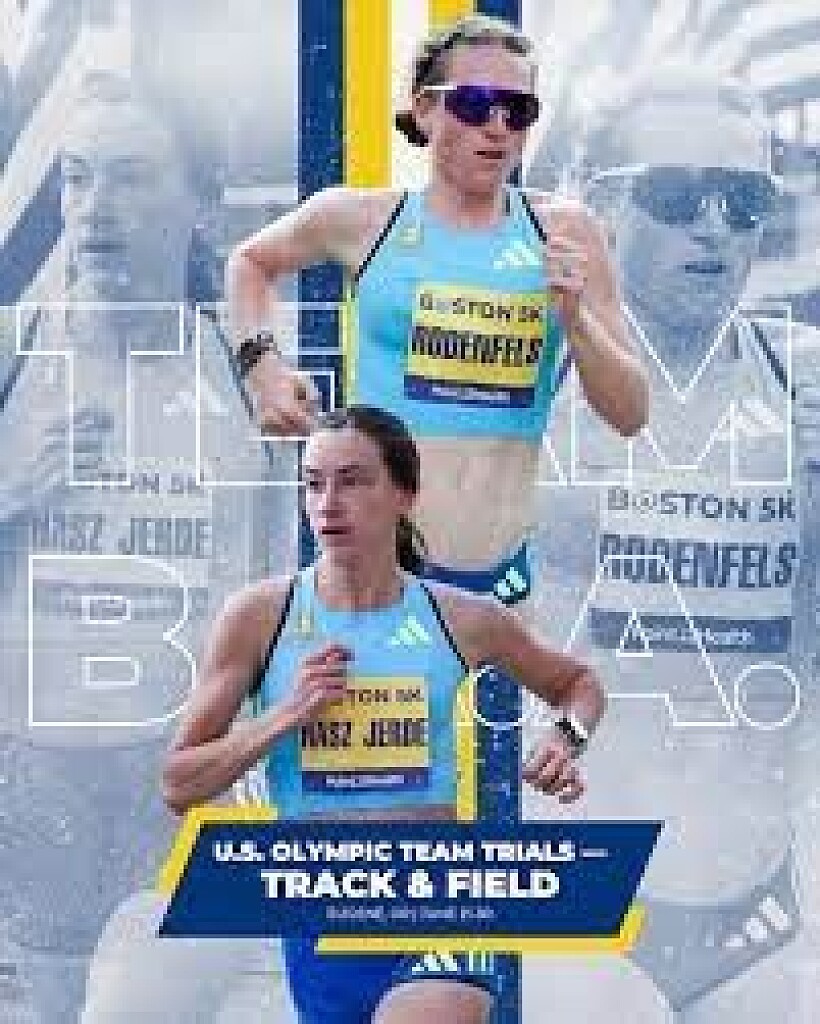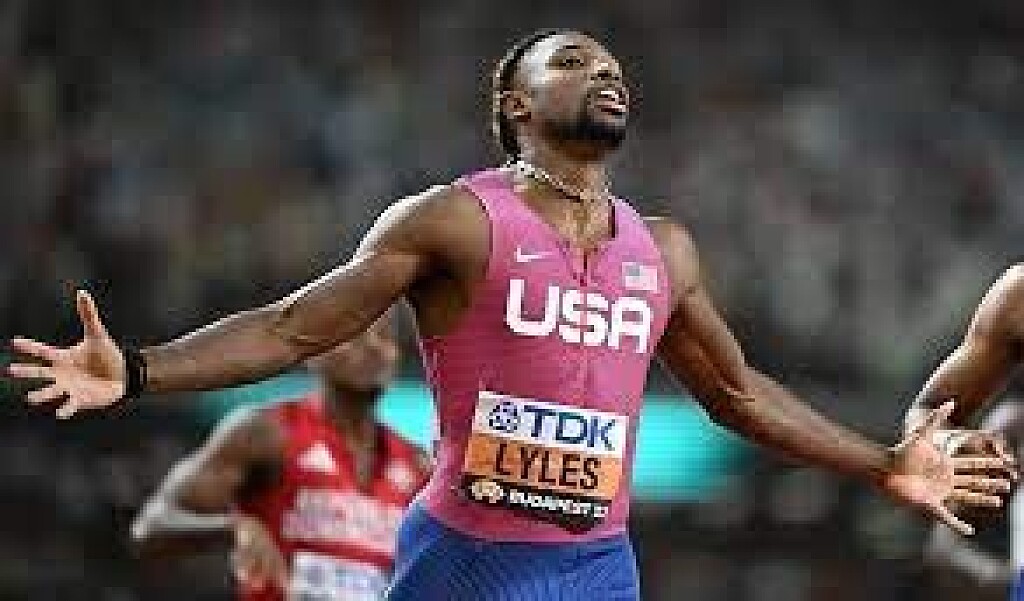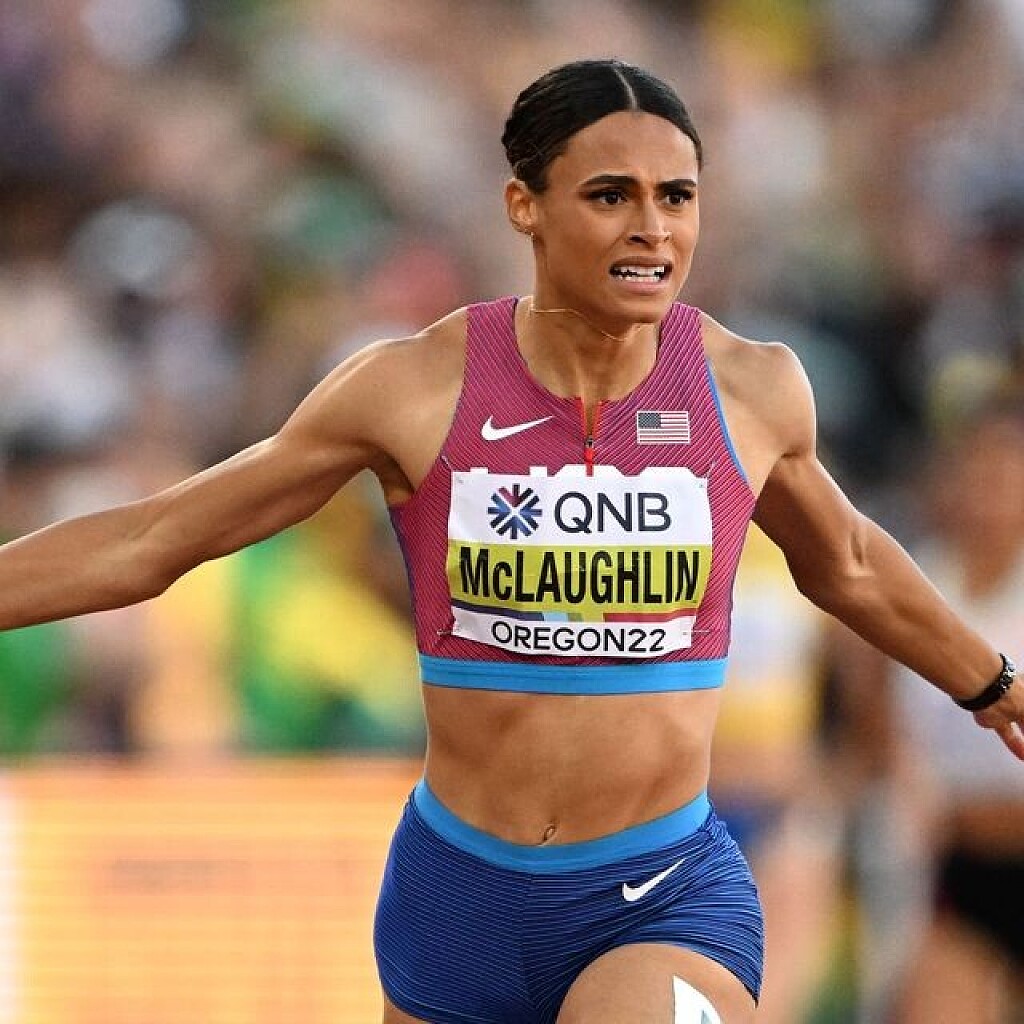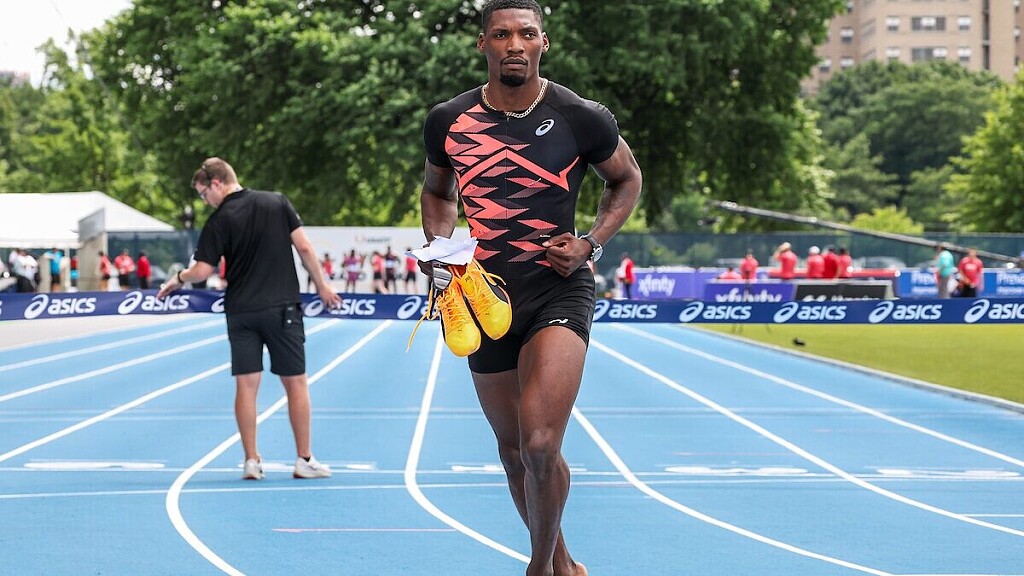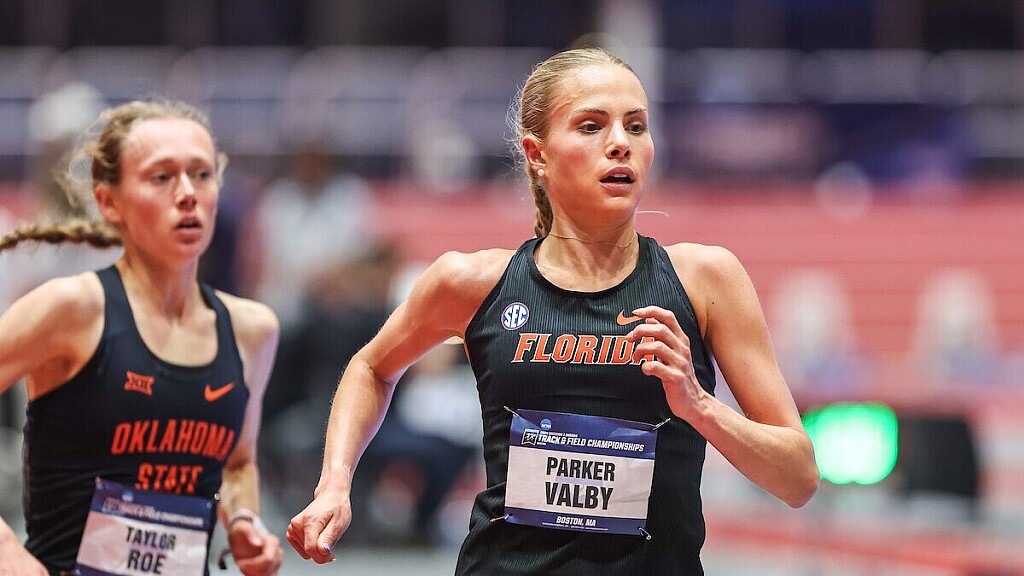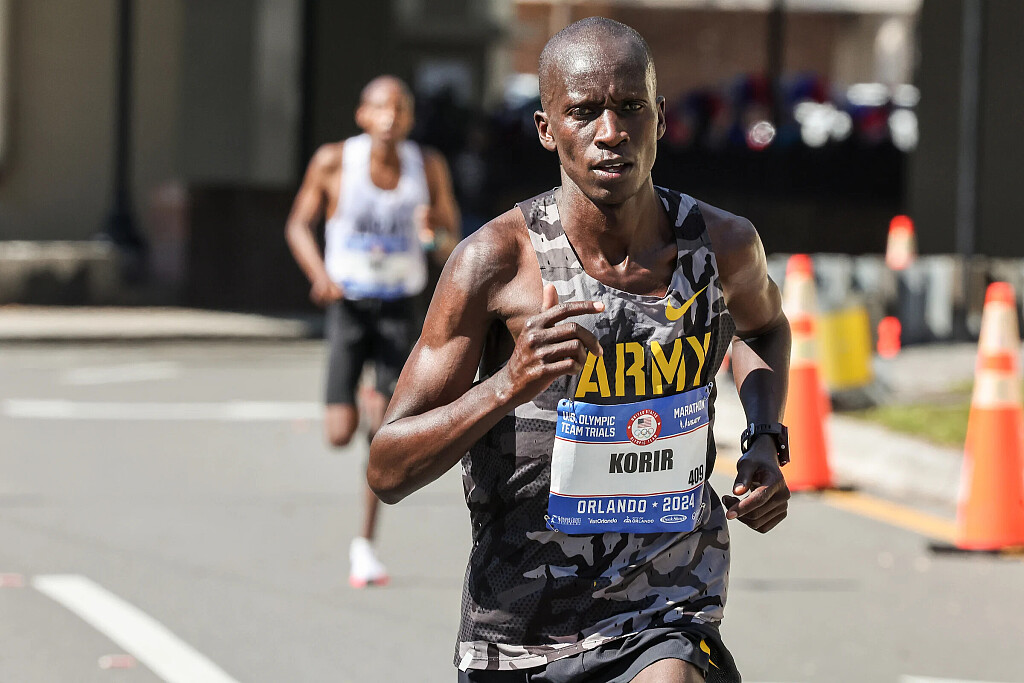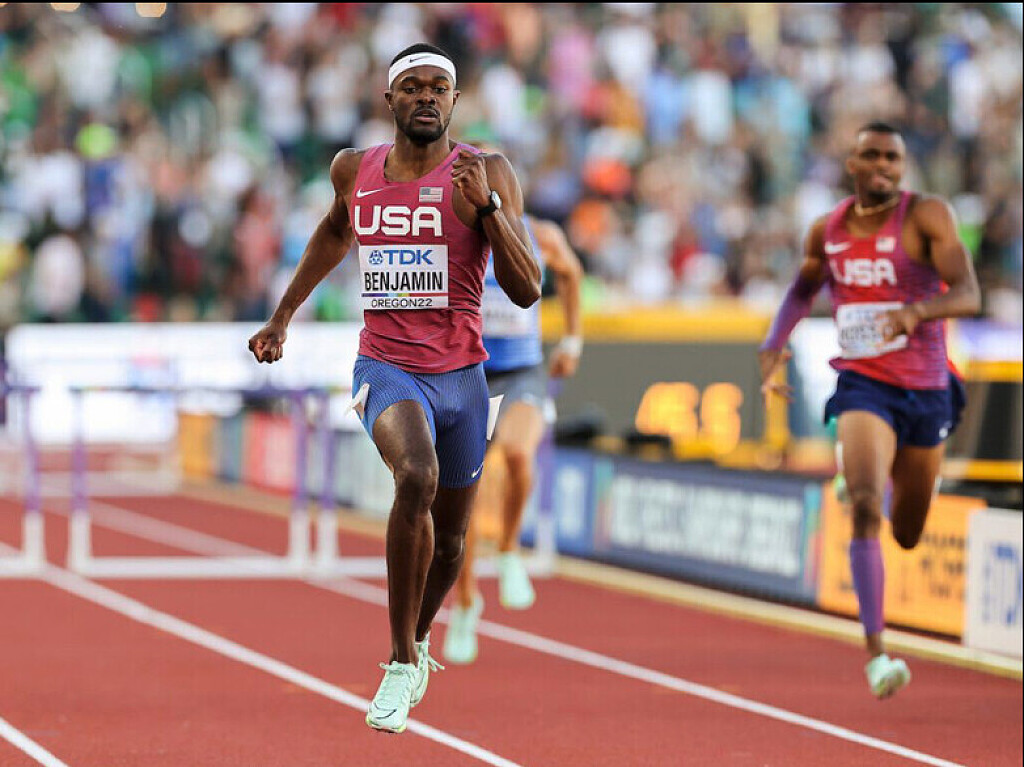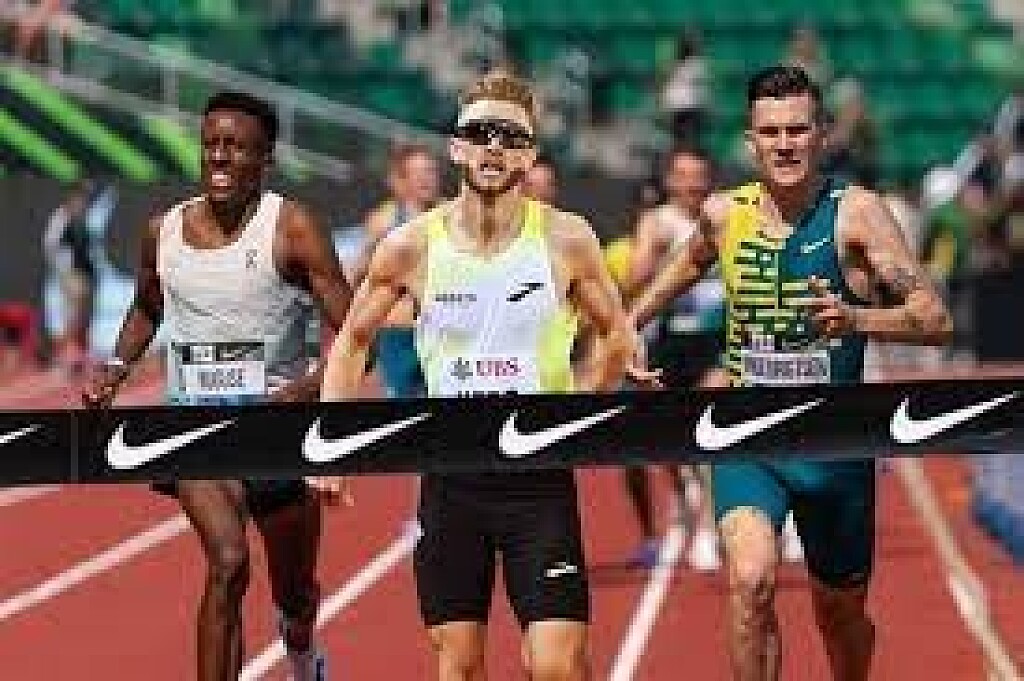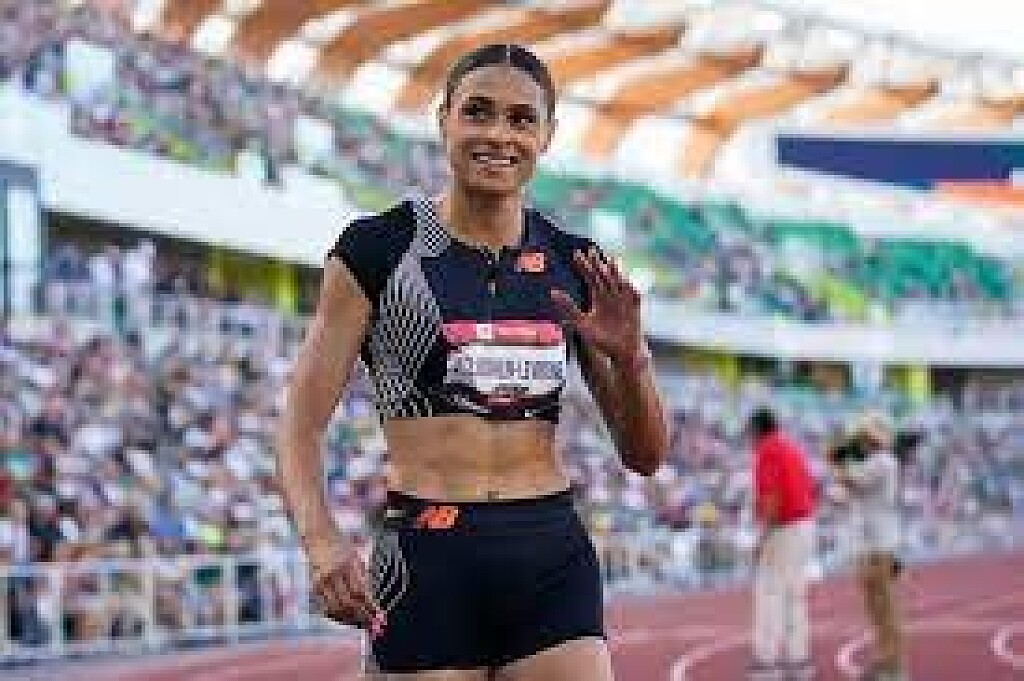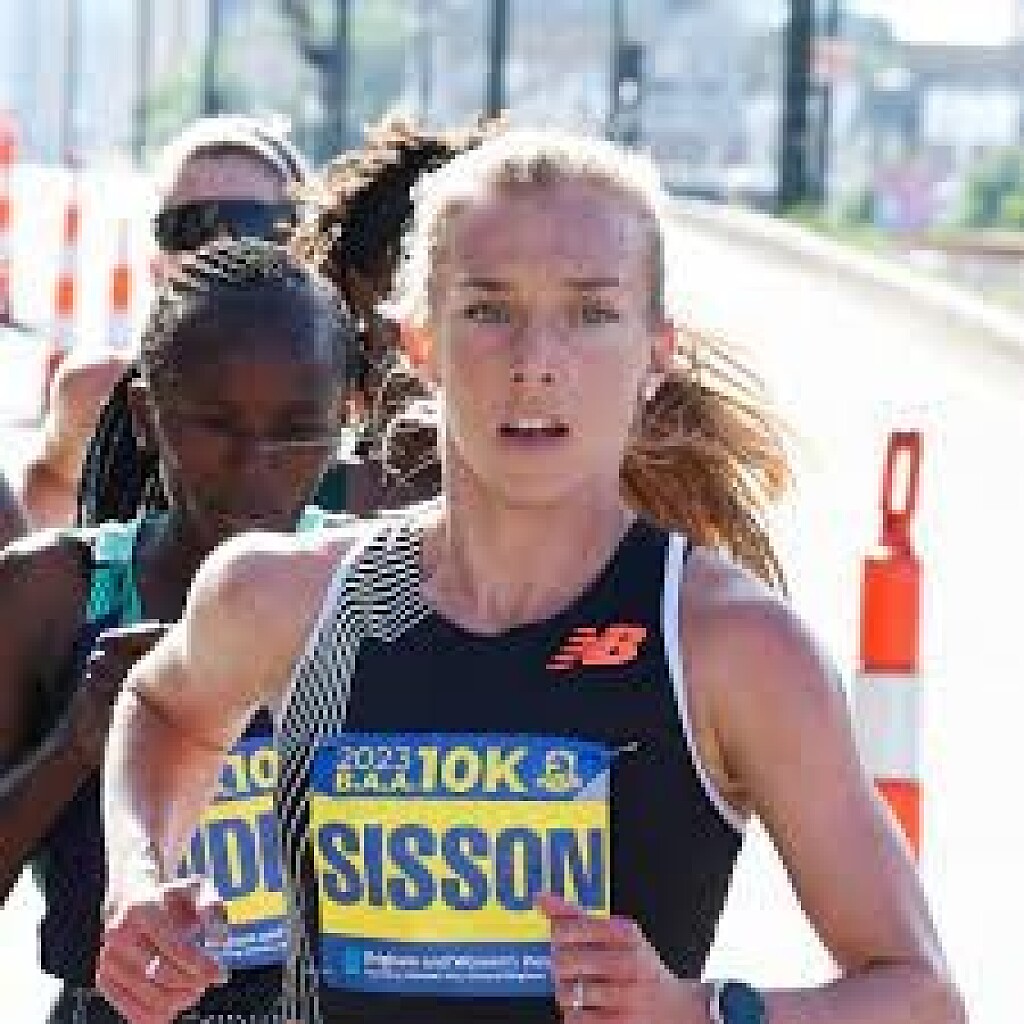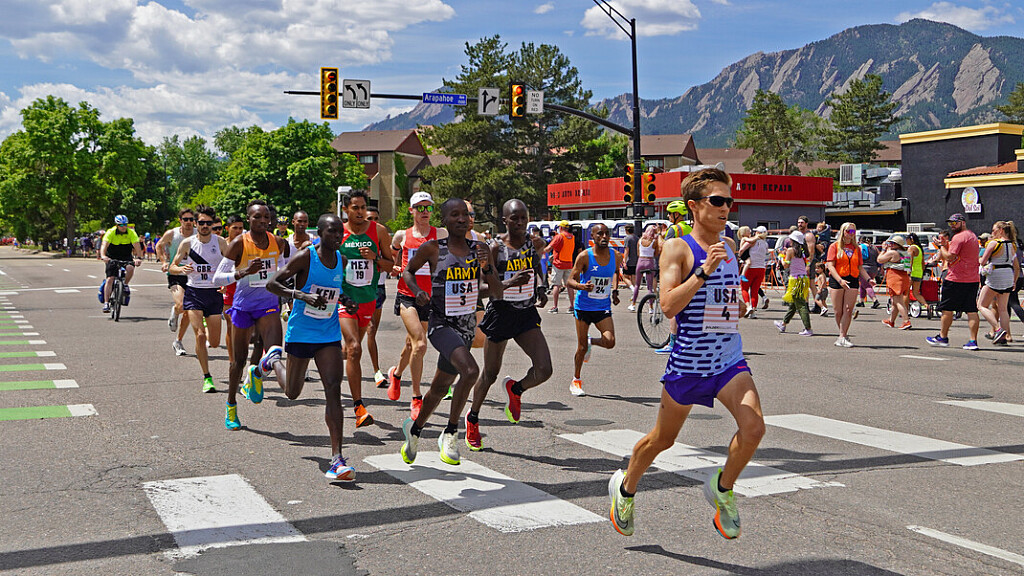Running News Daily
Running News Daily is edited by Bob Anderson. Send your news items to bob@mybestruns.com Advertising opportunities available. Train the Kenyan Way at KATA Kenya and Portugal owned and operated by Bob Anderson. Be sure to catch our movie A Long Run the movie KATA Running Camps and KATA Potato Farms - 31 now open in Kenya! https://kata.ke/
Index to Daily Posts · Sign Up For Updates · Run The World Feed
Articles tagged #USATF
Today's Running News
Sara Hall’s Brilliant California Marathon Run Upstaged by Molly Born’s Historic Debut in Sacramento
At 42 years old, Sara Hall produced one of the finest races of her storied career on Sunday at the California International Marathon — yet even her record-breaking brilliance wasn’t enough to stop the emergence of a new U.S. marathon star.
In a sensational debut that electrified the net-downhill course, 26-year-old Molly Born stormed to victory in 2:24:09, slicing 19 seconds off the women’s course record and claiming the 2025 USATF Marathon Championship title. The Oklahoma State alumna and Chapel Hill resident seized control at mile 19 and powered home with a fearless negative split, averaging a searing 5:30 per mile despite nearly stumbling on the homestretch.
Hall, the pre-race favorite and 2017 CIM champion, ran one of the greatest masters performances in U.S. history. Her 2:24:36 not only marked her fastest marathon since 2020, but also obliterated the American masters record for women over 40 and erased the sting of last month’s DNF in New York.
Megan Sailor completed the podium with a strong 2:25:16, but the day belonged to two runners at opposite ends of their careers: Hall, the enduring veteran proving she can still rise to championship form, and Born, whose fearless debut announces her as a rising force in U.S. distance running.
At a race known for breakthroughs, Sunday’s showdown delivered a generational moment — the established legend running one of her finest marathons, and the newcomer running into history.
by Boris Baron
Login to leave a comment
Molly Born Smashes Course Record in Marathon Debut; Futsum Zienasellassie Returns to the Top at CIM 2025
SACRAMENTO, California — December 7, 2025 The California International Marathon once again lived up to its reputation as America’s fastest championship course, producing breakout performances and reaffirming elite talent at the 2025 USATF Marathon Championships. Two standout athletes—Molly Born and Futsum Zienasellassie—delivered the signature performances of the day.
Born’s Brilliant Debut: 2:24:09 Course Record
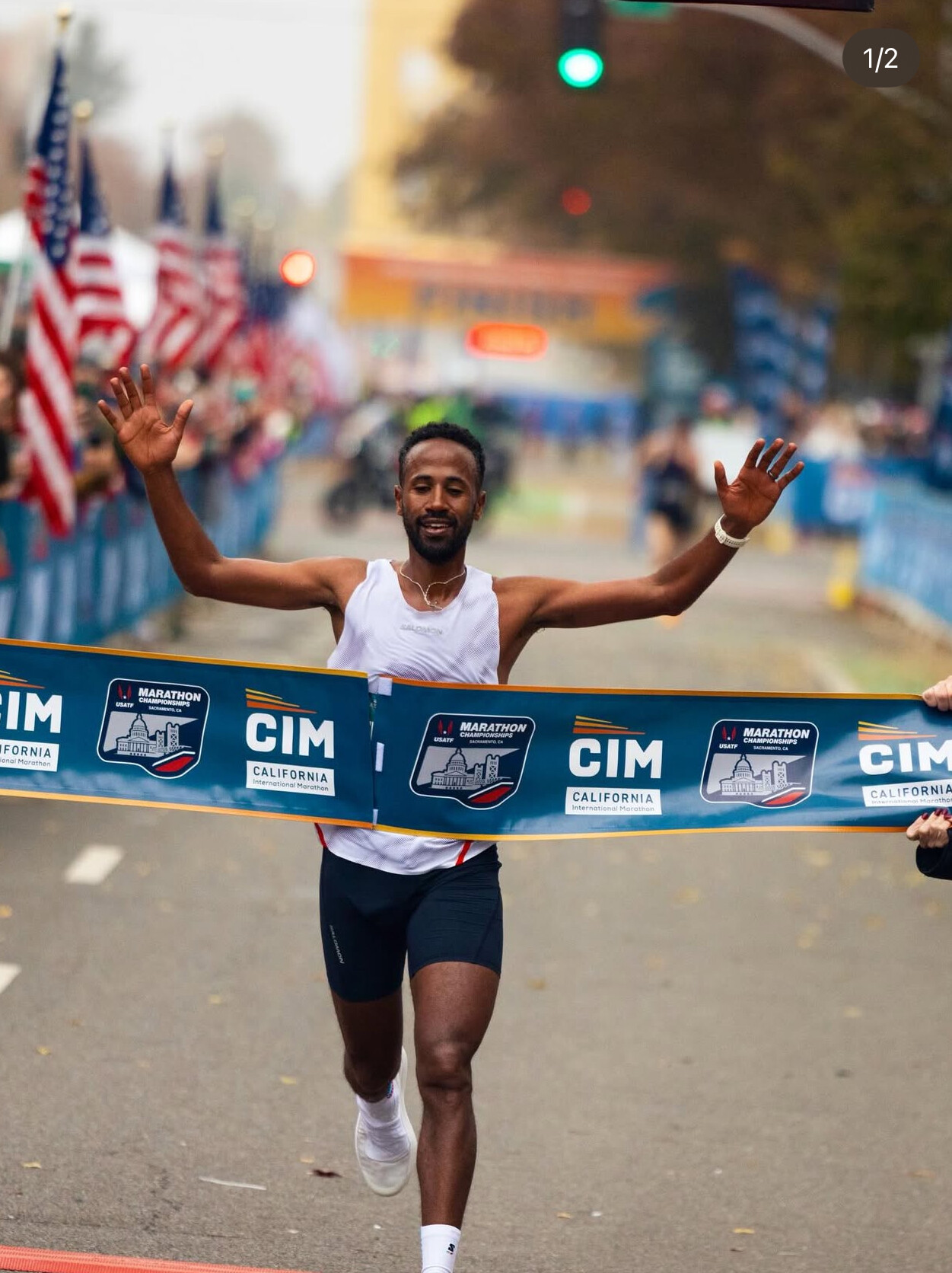
In her first-ever marathon, 26-year-old Molly Born ran with the poise and confidence of a seasoned veteran. The Oklahoma State alumna powered through the rolling downhills from Folsom to Sacramento to claim the 2025 USATF Marathon Championship in 2:24:09, breaking the women’s course record and announcing herself as a major new force in American distance running.
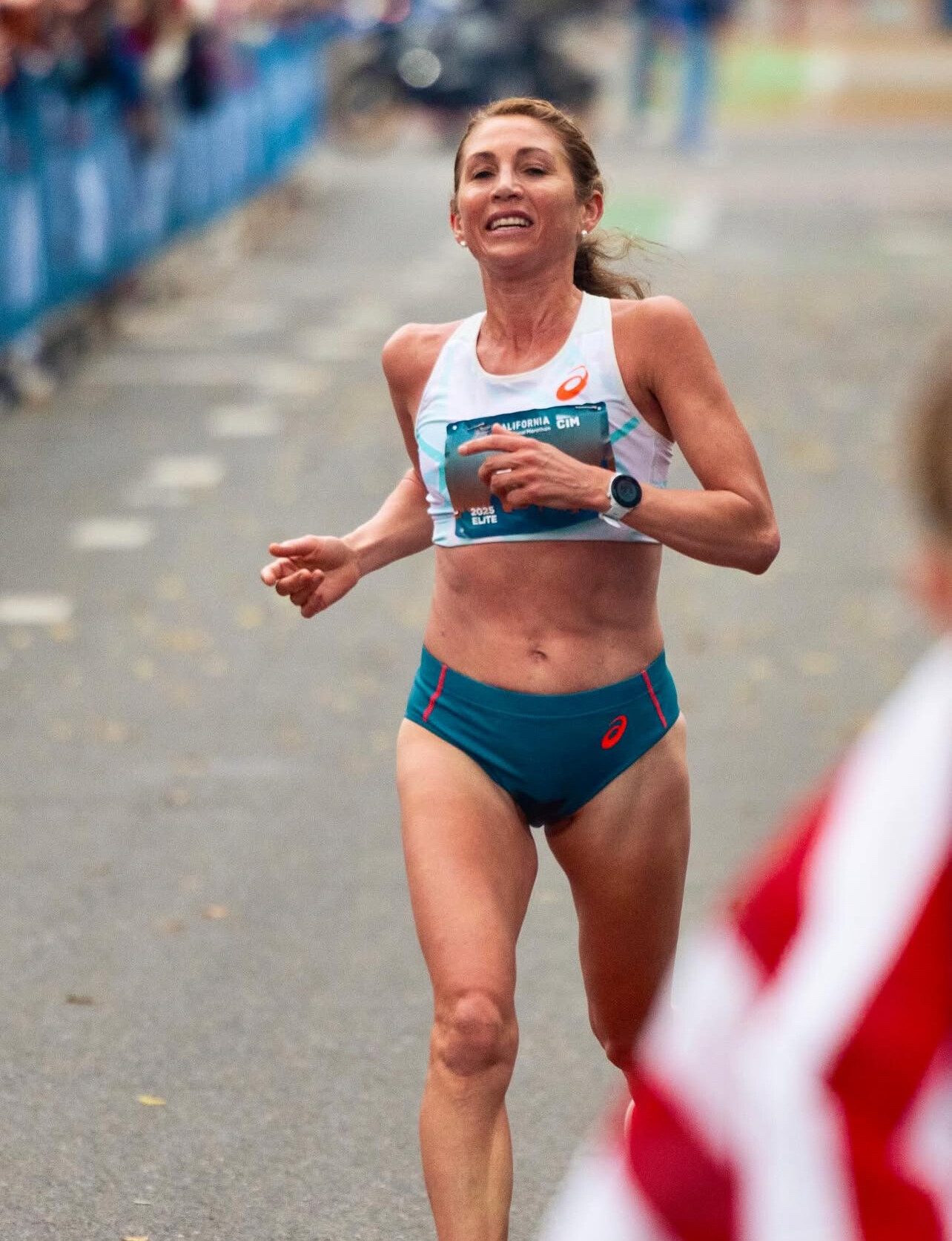
Born excelled at 1,500m through 10,000m during her collegiate career, but never attempted the marathon until today. Her debut suggests she has found her event.
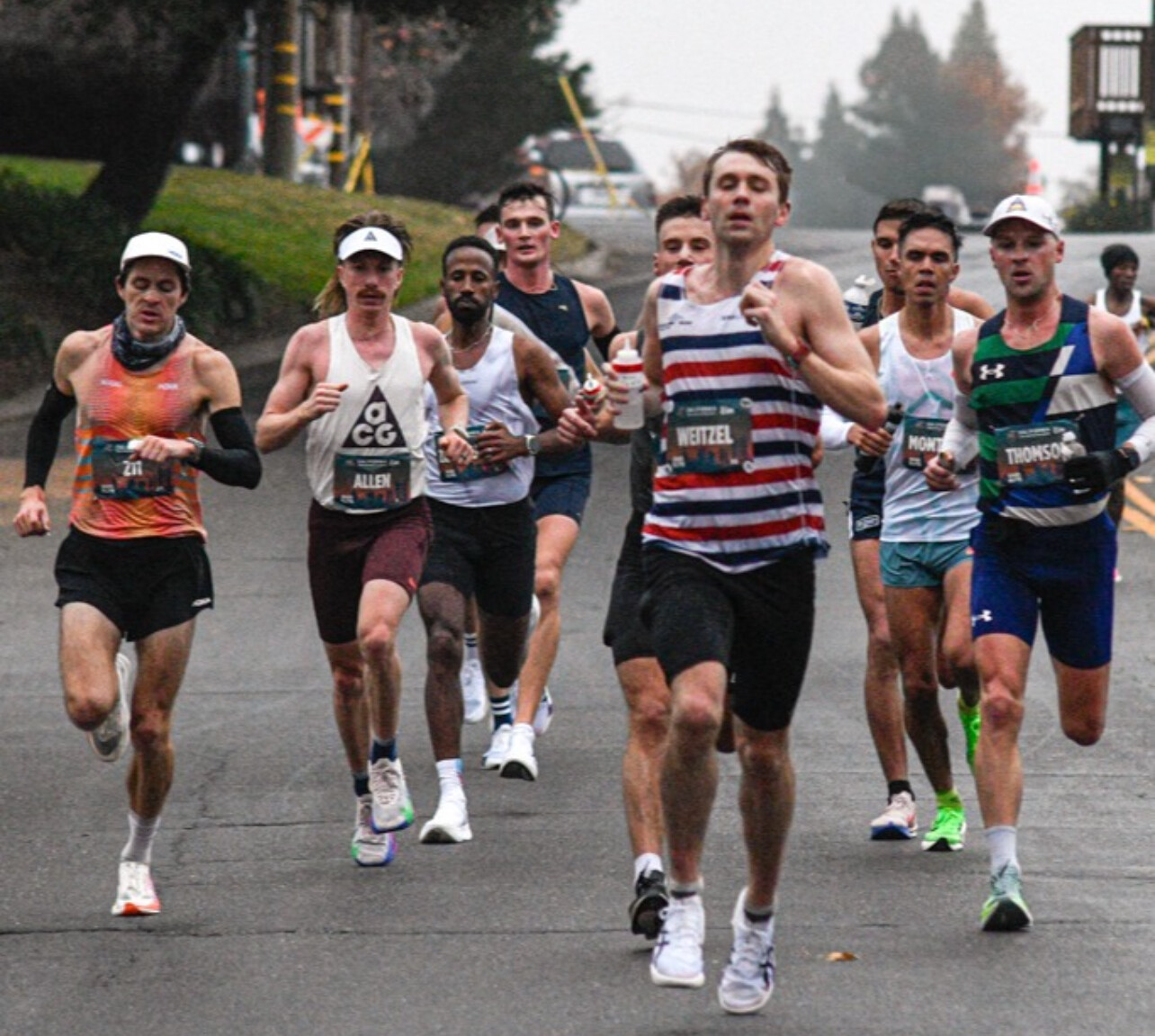
“I knew it was a possibility, but I wasn’t expecting all this,” Born said after winning.
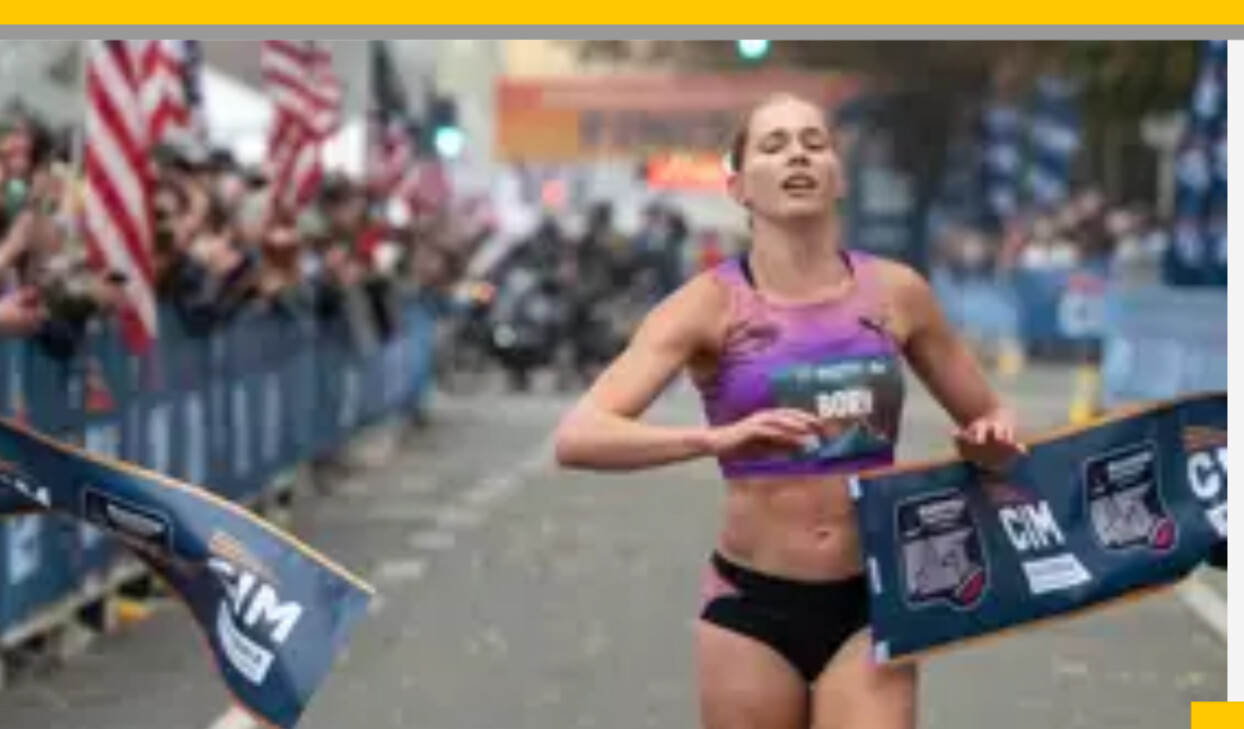
“It feels really good. I think I’ve found my event—going forward, it’s going to be the marathon.”
Women’s Top Five — CIM 2025
1. Molly Born — 2:24:09 (Course Record)
2. Sara Hall — 2:24:36
3. Megan Sailor — 2:25:16
4. Lindsey Bradley — 2:28:41
5. Maya Weigel — 2:28:44
Hall and Sailor also broke 2:26, marking one of the deepest women’s fields ever at CIM.
Zienasellassie Reclaims the CIM Crown
On the men’s side, Futsum Zienasellassie reclaimed the title he first won in 2022, crossing the finish in 2:09:29 to earn his second CIM victory. Smooth, controlled pacing and a strong final 10K separated him from the pack in a deep men’s field.
Zienasellassie famously grew up in Eritrea before starring at Northern Arizona University. His win today continues his rise as one of the most consistent American marathoners.
Men’s Top Five — CIM 2025
1. Futsum Zienasellassie — 2:09:29
2. Joseph Whelan — 2:09:41
3. Christian Allen — 2:09:57
4. Joseph Trojan — 2:10:38
5. Chris Maxon — 2:10:54
Three men breaking 2:10 on the CIM course underscores why this race remains a cornerstone of American distance running.
A Historic Day in Sacramento
Ideal racing conditions and CIM’s fast net-downhill profile helped produce one of the strongest editions in race history:
• A course record in the women’s race
• Three men under 2:10
• A national title decided in dramatic fashion
• An electrifying debut from one of America’s newest marathon stars
The 2025 California International Marathon once again proved why so many U.S. runners come to Sacramento seeking breakthroughs—and today, the event delivered exactly that.
by Boris Baron
Login to leave a comment
California International Marathon
The California International Marathon (CIM) is a marathon organized by runners, for runners! CIM was founded in 1983 by the Sacramento Running Association (SRA), a 501(c)(3) non-profit organization. The SRA Board of Directors is comprised of runners with a combined total of 150+ years of service to the CIM. The same route SRA management created for the 1983 inaugural CIM...
more...Nico Young Clinches U.S. 10,000m Title with Electrifying Finish in Eugene
Eugene, Oregon – July 31, 2025
Nico Young delivered a career-defining performance on Wednesday night at the 2025 USATF Outdoor Championships, storming to victory in the men’s 10,000 meters with a closing display that left the crowd at Hayward Field in awe.
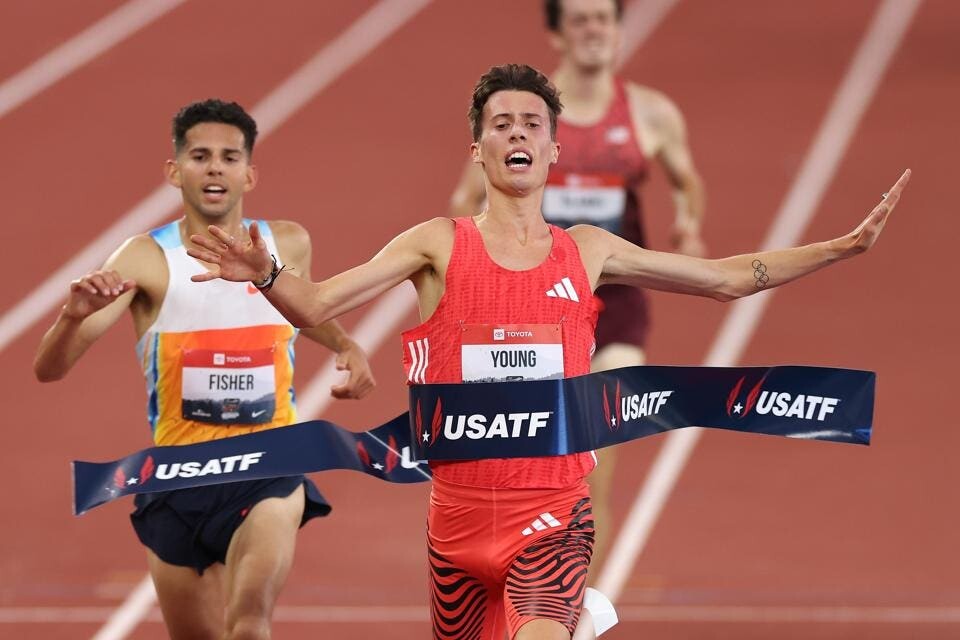
In a tightly contested final, Young surged past established veterans Grant Fisher and Graham Blanks with a stunning final lap of 56.54 seconds, covering the last 1600 meters in under four minutes—an extraordinary finish in a championship 10K. His winning time: 29:02.12.
Grant Fisher, one of the most accomplished distance runners in U.S. history, claimed the silver medal in 29:02.37, while rising star Graham Blanks, fresh off a record-breaking collegiate season, secured bronze in 29:02.43.
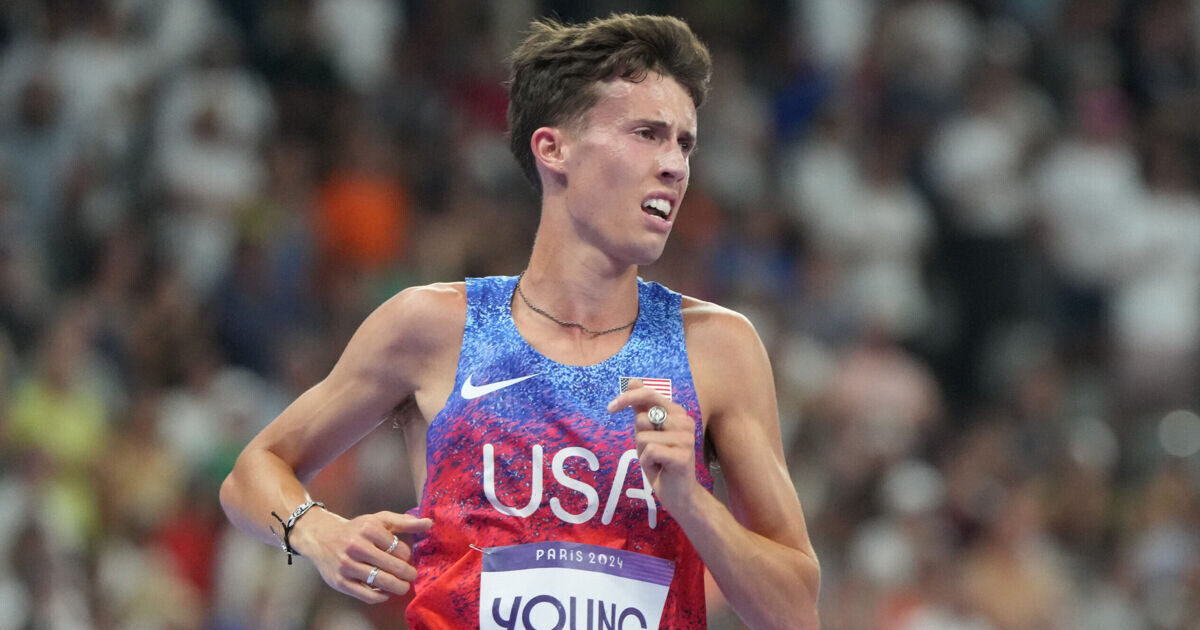
“What a way to end the night in Eugene,” echoed the sentiments of fans and announcers alike as Young crossed the line, arms raised in triumph.
At just 22 years old, Young’s victory represents a passing of the torch and a new era in American distance running. Known for his aggressive style and fearless front-running as a collegiate athlete at Northern Arizona University, Young has now proven he can execute a tactical race and close with world-class speed—a critical asset on the international stage.
The men’s 10,000m capped an electric night of competition at Hayward Field and set the tone for the rest of the championships. With this performance, Young not only claimed his first national title but also firmly established himself as a contender for global medals in the years ahead.
Men’s 10,000m – Final Results
• Nico Young – 29:02.12 (National Champion)
• Grant Fisher – 29:02.37 (National Runner-Up)
• Graham Blanks – 29:02.43 (National Bronze)
Stay tuned to My Best Runs for continued coverage of the 2025 USATF Outdoor Championships and road to the World Championships.
by Boris Baron
Login to leave a comment
Amanda Vestri Claims First U.S. Title with Commanding Win at USATF 6 km Championships
Amanda Vestri earned her first national title in dominant fashion on Saturday morning in Canton, Ohio taking a wire-to-wire victory at the USATF 6 km Championships in Canton, Ohio. The event, part of the Women’s 6K Festival, drew some of the top distance talent in the country, but no one could match Vestri’s front-running strength on a challenging, technical course.
Vestri, who finished second at this race in 2023, wasted no time establishing control. Racing in humid conditions with temperatures nearing 80°F, she charged to the front from the gun, pulling a pack of seven through the first mile in 4:53. As the course shifted onto an uneven stretch of brick road, she surged again—clocking another 4:53 for the second mile—and began to break away from the field.
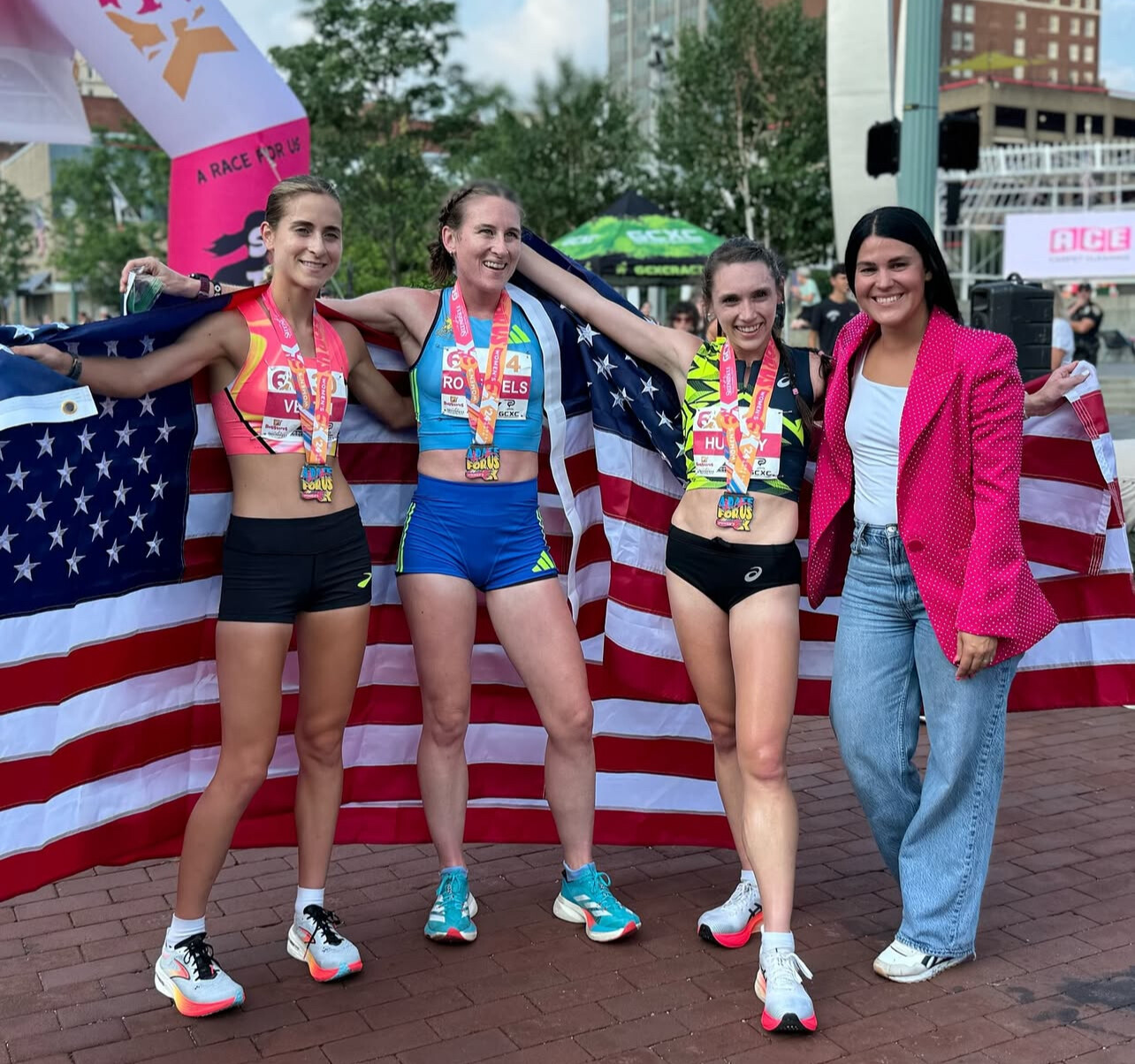
By the time the race reached its longest climb, Vestri’s lead had grown to three seconds over a chase pack that included Annie Frisbie, Fiona O’Keeffe, Molly Born, and Edna Kurgat. Cresting the hill with authority, she extended the gap to seven seconds by the 5K mark—a margin she maintained all the way to the finish line at Centennial Plaza.
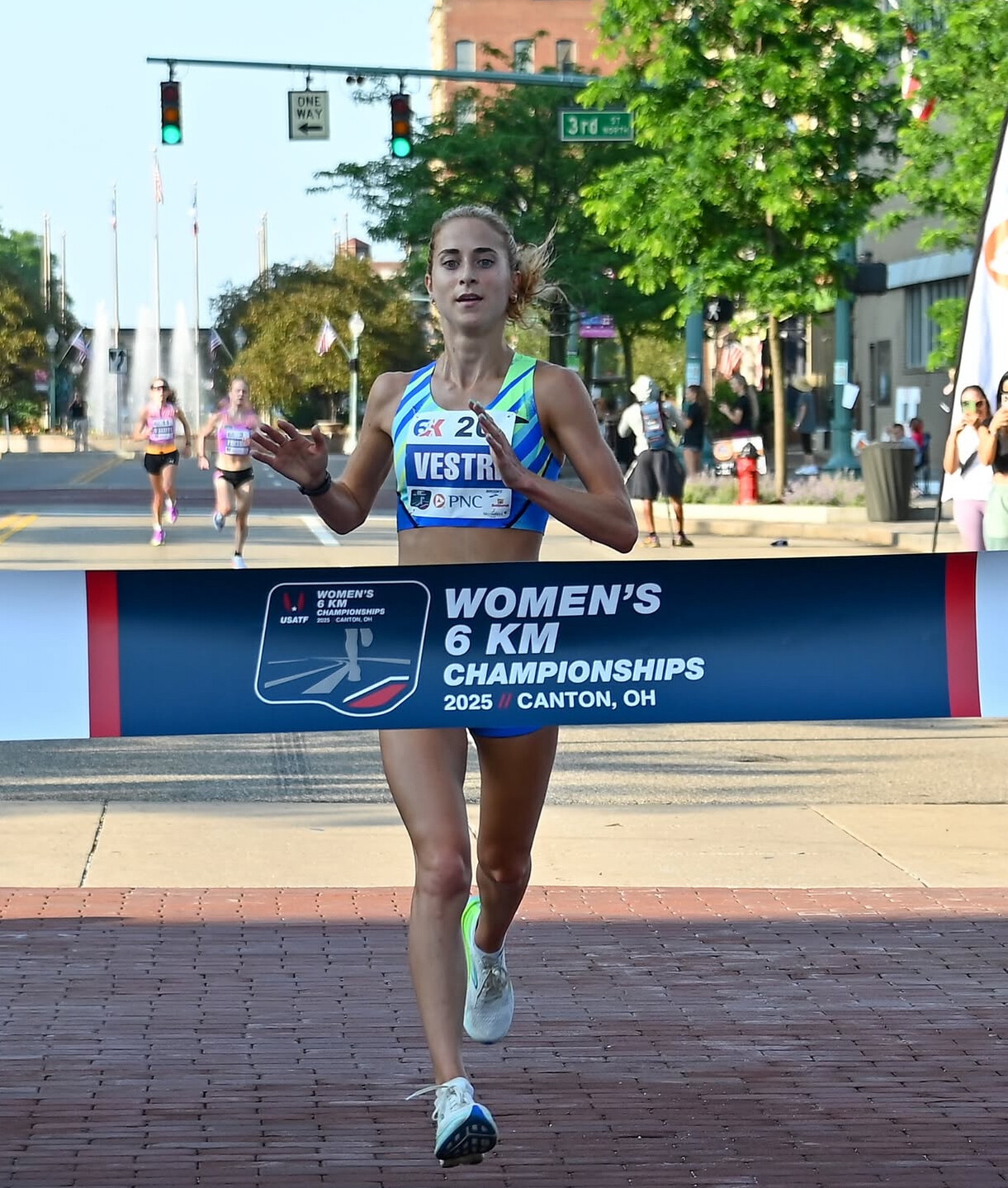
“I just kind of wanted to take it from the gun,” said Vestri after the race. “In these shorter races, I’m not really keen to just sit and run 5:15, 5:20. So, I just wanted to take it out. That’s the best way I run.”
Her aggressive strategy paid off, earning her the national title, $6,000 in prize money, and a move into second place in the USATF Running Circuit standings.
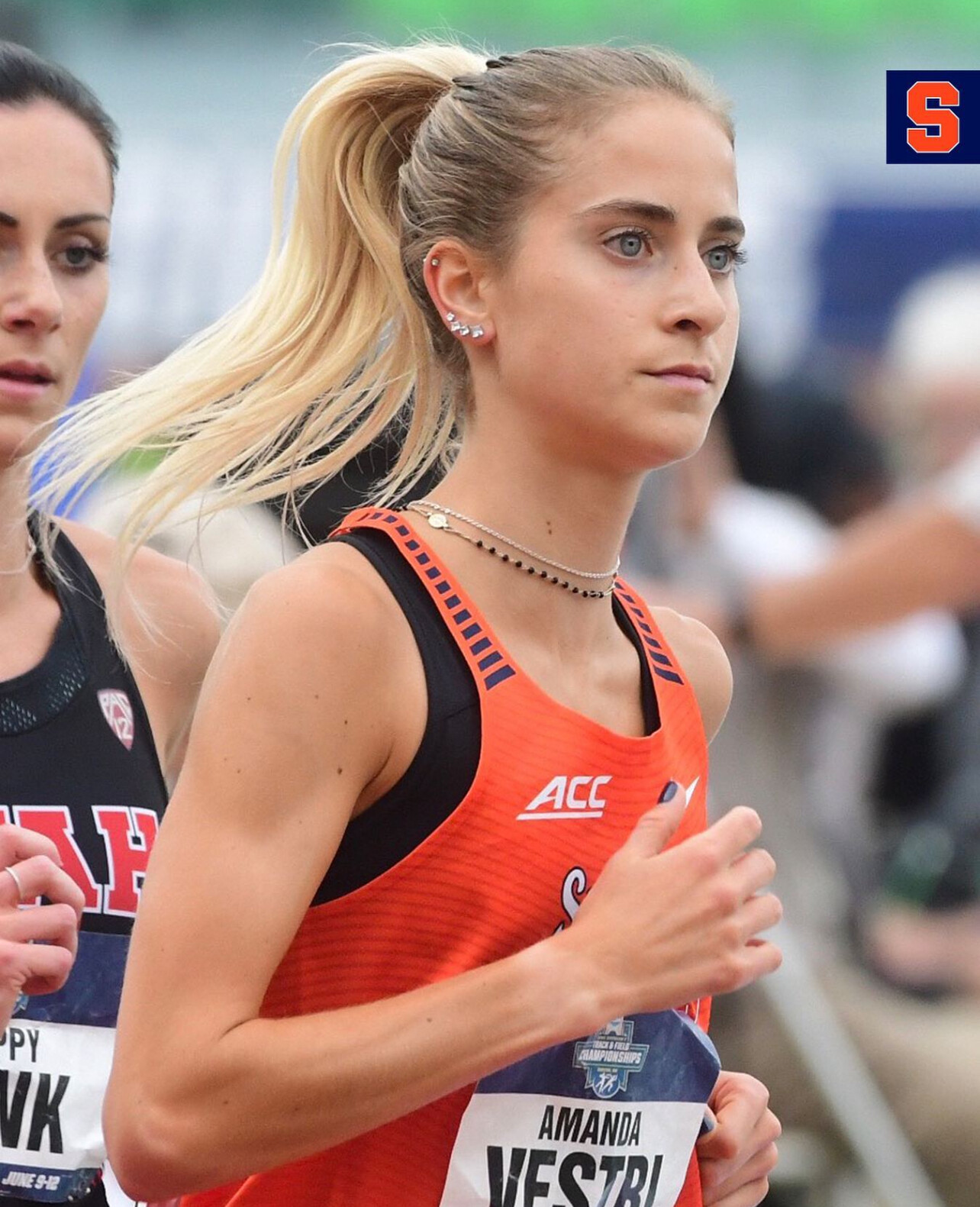
Fierce Finish for Second
The battle for second place came down to the final meters. Annie Frisbie and Olympic 10,000m runner Fiona O’Keeffe ran shoulder-to-shoulder for nearly the entire race before Frisbie edged ahead over the last 400 meters, stopping the clock in 18:36. O’Keeffe finished just two seconds back in 18:38 to round out the podium.
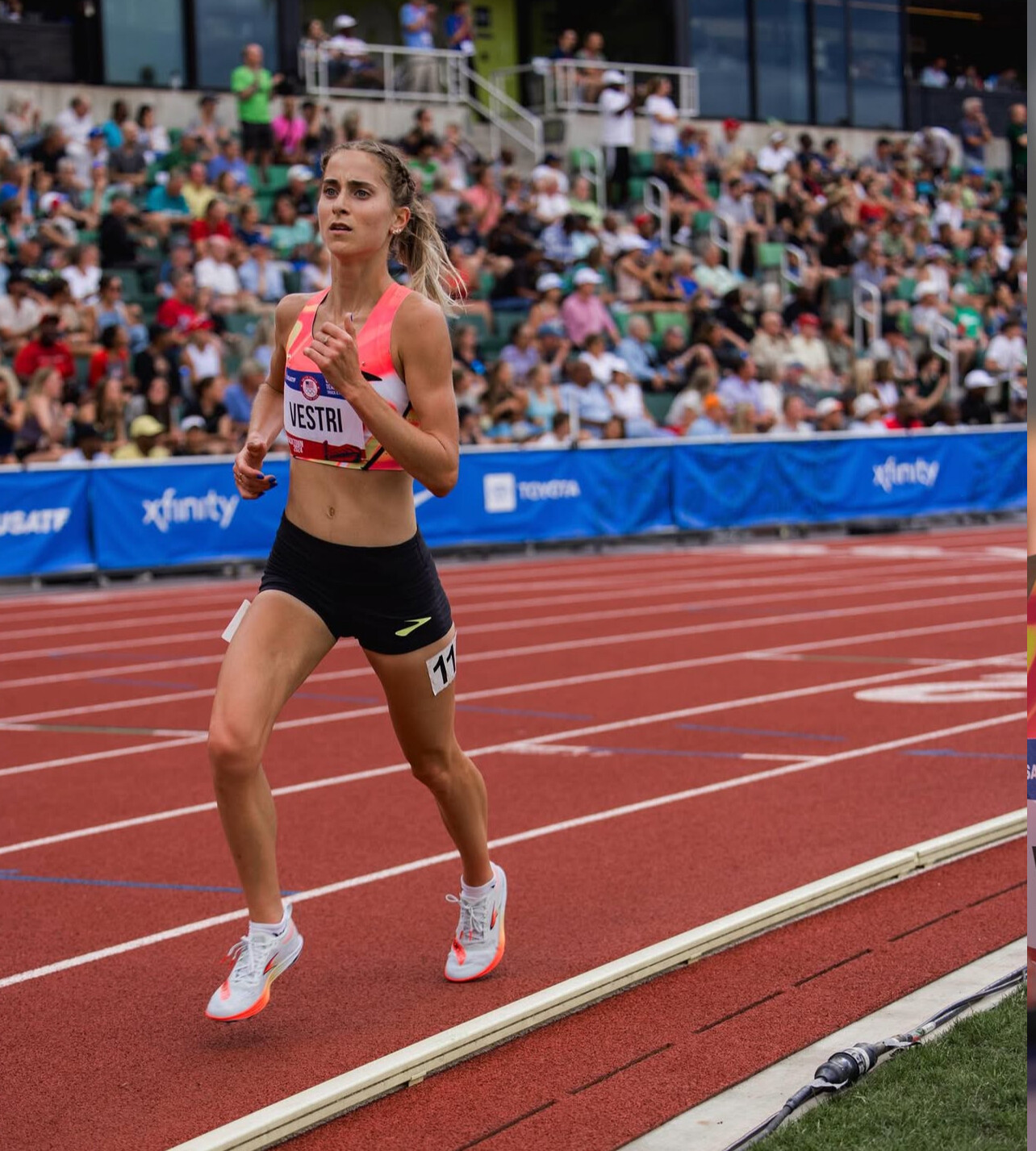
What’s Next
Vestri now shifts her focus to the track, where she’s scheduled to compete in both the 5,000m and 10,000m at the upcoming USATF Outdoor Championships in Eugene, Oregon later this month.
The USATF Running Circuit continues with just two events remaining:
• USATF 20 km Championships in New Haven on September 1
• USATF Marathon Championships in Sacramento on December 7
With momentum clearly on her side, Amanda Vestri will be a name to watch—on the roads and the track—for the rest of 2025.
by Boris Baron
Login to leave a comment
The Peachtree Road Race Returns July 4 with a Legacy of Speed and Celebration
On Friday, July 4, 2025, the streets of Atlanta, Georgia, will once again come alive with the thunder of footsteps, cheers, and celebration as tens of thousands take part in the AJC Peachtree Road Race—the largest certified 10K road race in the world.
Organized by the Atlanta Track Club and now in its 48th running, Peachtree isn’t just a race—it’s a Fourth of July tradition. Capped at 60,000 runners, it’s long been known as one of the most competitive and beloved road races in the U.S., earning a five-star rating and a coveted spot on My Best Runs World’s Best 100 Races list.
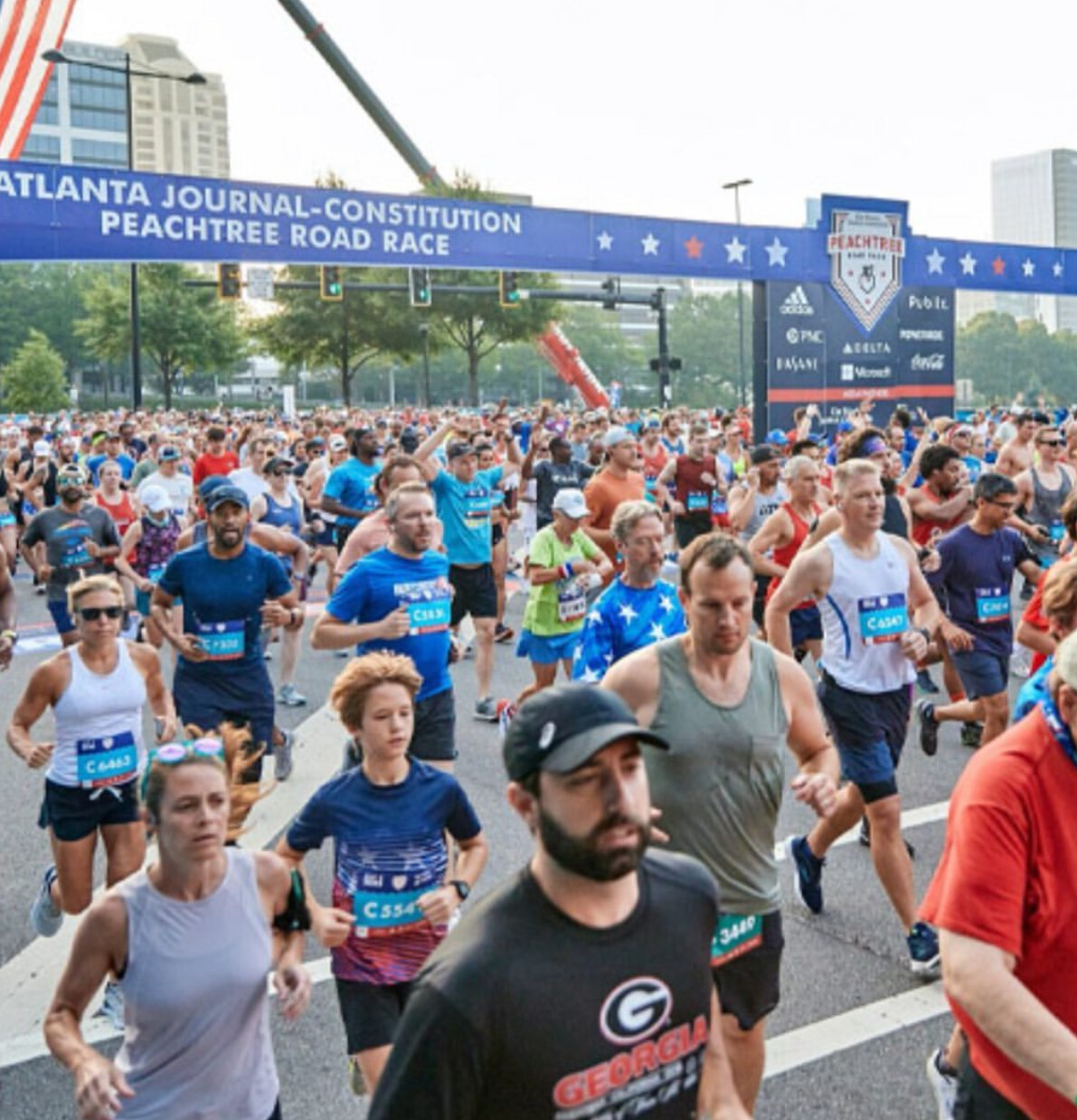
Whether you’re toeing the line in search of a personal best or simply soaking in the patriotic spirit with friends and family, Peachtree delivers an experience like no other.
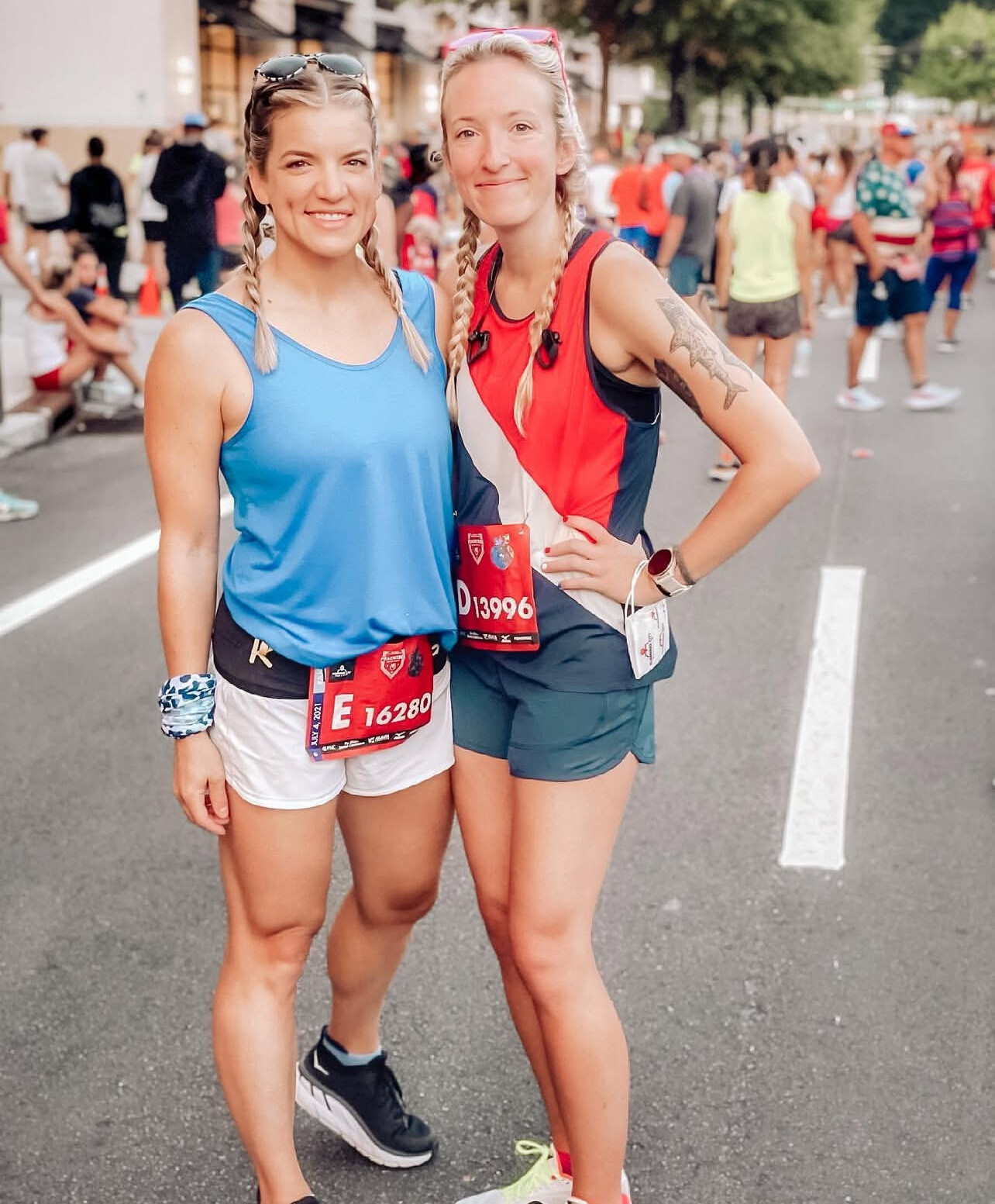
Certified and Celebrated
The Peachtree 10K is USATF-certified and record-eligible, making it one of the premier venues for fast times on American soil. The course stretches from Lenox Square to Piedmont Park, with rolling hills, lively crowds, and the buzz of holiday energy propelling runners forward.
Historic Records That Still Inspire
Peachtree has hosted some of the fastest 10K performances ever run on U.S. soil:
• Men’s Course Record:
Rhonex Kipruto (Kenya) – 27:01 (2019)
A blazing effort that still stands as one of the fastest 10Ks ever run in America.
• Women’s Course Record:
Brigid Kosgei (Kenya) – 30:21 (2019)
The reigning Olympic silver medalist and former world record holder delivered a dominating run.
• Wheelchair Division Records:
Daniel Romanchuk – 19:37
Susannah Scaroni – 21:14.71 (2022)
Notably, in 1996, Kenyan legend Joseph Kimani clocked 27:04, a time that stood as the fastest ever 10K on U.S. soil until Kipruto’s run in 2019.
A Legacy of Legends
Peachtree began humbly in 1970, with just 150 registered runners. Only 110 finished—and instead of medals, finishers received MARTA bus tokens. From those humble beginnings, the race grew into a world-class showcase of talent.
American Craig Virgin set the national bar high in 1981 with his 28:03 finish. For women, Mary Decker ran a then-stunning 33:52 in 1978. Over the years, Peachtree has attracted the sport’s top names—Olympians, national champions, and wheelchair racing pioneers.
More Than a Race
What makes Peachtree iconic isn’t just the elite times. It’s the celebration. The crowds. The coveted finisher’s T-shirt designed by the public. The flags waving. The shared spirit of tens of thousands on Independence Day morning.
“The energy in Atlanta on race morning is unlike anything else,” says My Best Runs founder Bob Anderson. “It’s electric. The Peachtree isn’t just a race—it’s a national treasure.”
Join the Tradition
Whether you’re aiming for a personal best or just running to celebrate freedom, fitness, and fun, the AJC Peachtree Road Race is the place to be on July 4.
by Boris Z Baron
Login to leave a comment
Angela Tortorice’s 1,000 Marathons and a Guinness Record — But Do the Numbers Add Up?
Angela Tortorice, a Dallas-based runner and full-time accountant, has received widespread praise on social media and in the running community for her astonishing endurance achievements. According to Guinness World Records, she holds the title for the most race marathons run in a single year by a woman: an incredible 129 marathons completed between September 1, 2012, and August 31, 2013. Nearly a decade later, she was celebrated again for completing her 1,000th marathon at the Irving Marathon in Texas on April 2, 2022, reportedly making her the first American woman to reach that milestone.
These accomplishments are inspiring — but they also raise serious questions.
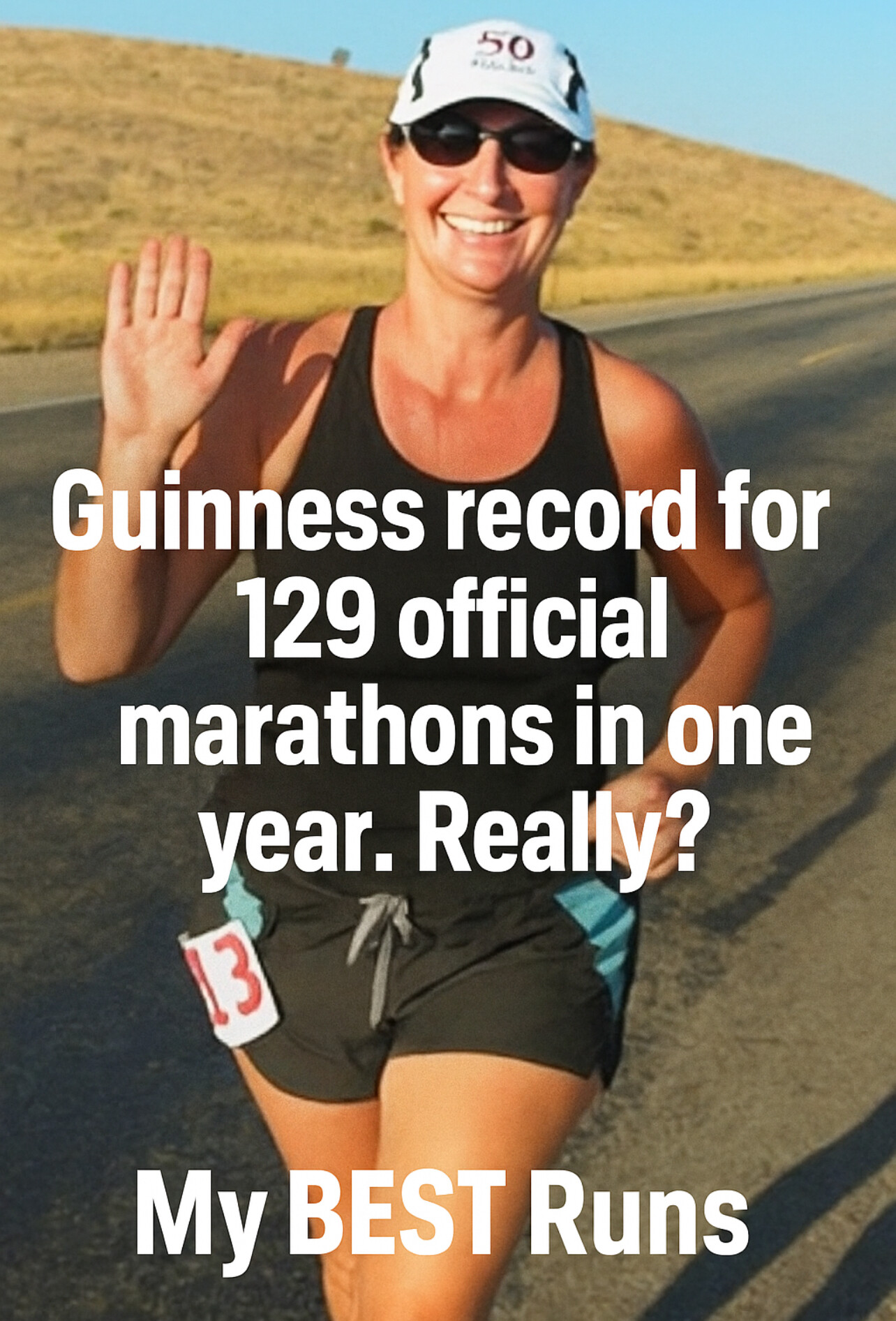
The Math Behind the Record
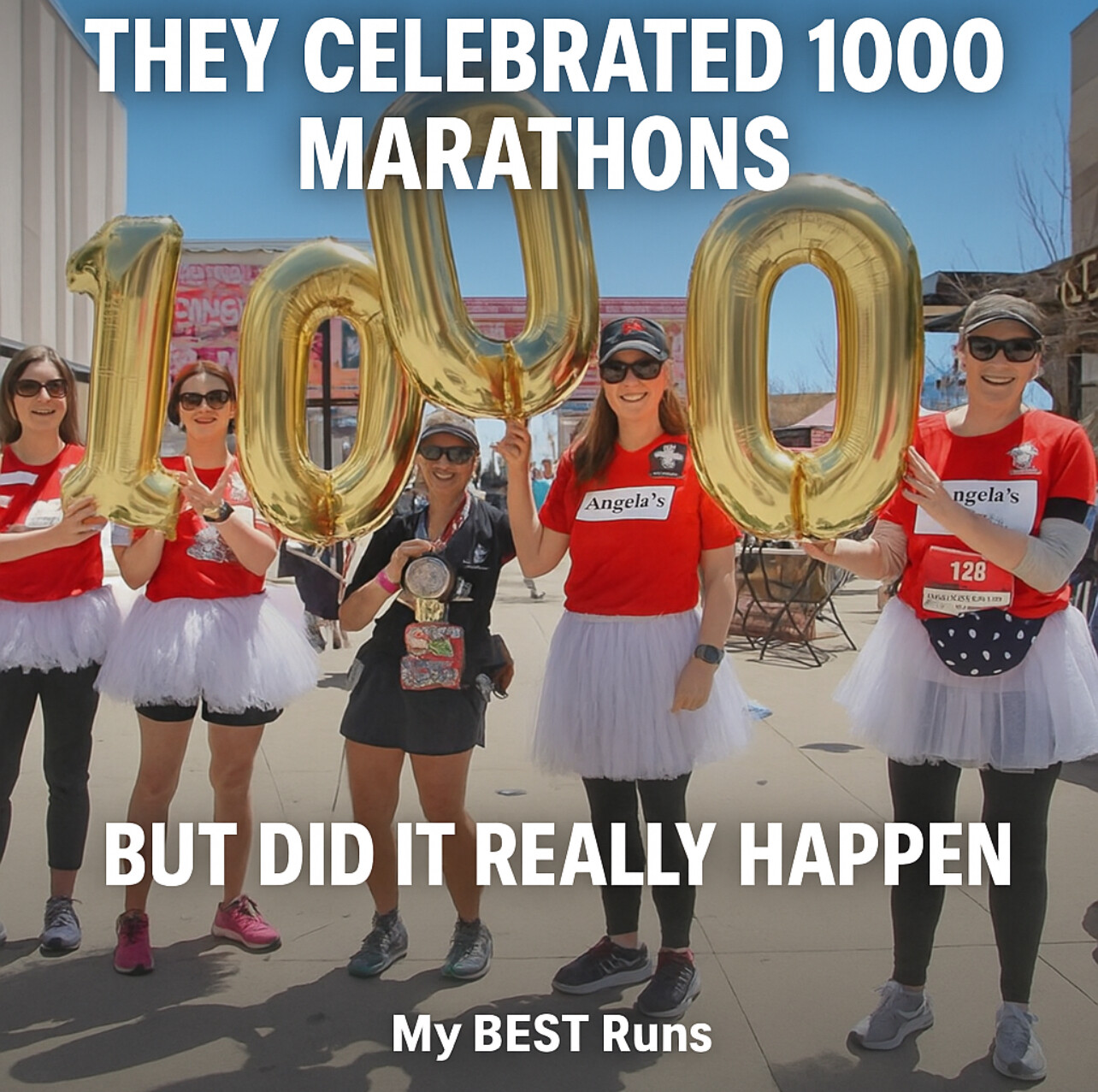
Completing 129 marathons in 365 days averages to one marathon every 2.8 days. Since most official marathons take place on Saturday or Sunday mornings, a runner could theoretically participate in two marathons per weekend — totaling 104 races per year if no weekends were lookmissed. To reach 129 official marathons, one would need to find an additional 25 races held on weekdays, which is highly unlikely, especially in the U.S. where weekday marathons are rare.
Moreover, Angela reportedly maintained a full-time accounting job throughout this year, making the travel, recovery, and logistics of such a schedule even more challenging.
So how was this record verified?
Guinness Confirmation Process
According to Guinness World Records, all record attempts must be supported with documentation, including:
• Official race results
• Event certifications
• Witness statements
• Media coverage
While Guinness confirmed Tortorice’s record, the details of how each marathon was documented and what criteria defined a “race marathon” have not been made public. Many in the running community are left to wonder: Were all 129 races USATF- or IAAF-certified events? Or did some involve multi-loop courses, self-organized races, or training runs that happened to reach 26.2 miles?
If the latter, should they count toward an “official” marathon record?
The 1,000 Marathon Milestone
Tortorice ran her first marathon in November 1997 at the San Antonio Marathon. Reaching 1,000 marathons by April 2022 spans approximately 24.4 years. To accomplish this, she would have had to average more than 41 marathons per year for nearly two and a half decades — while working full time and recovering from each race.
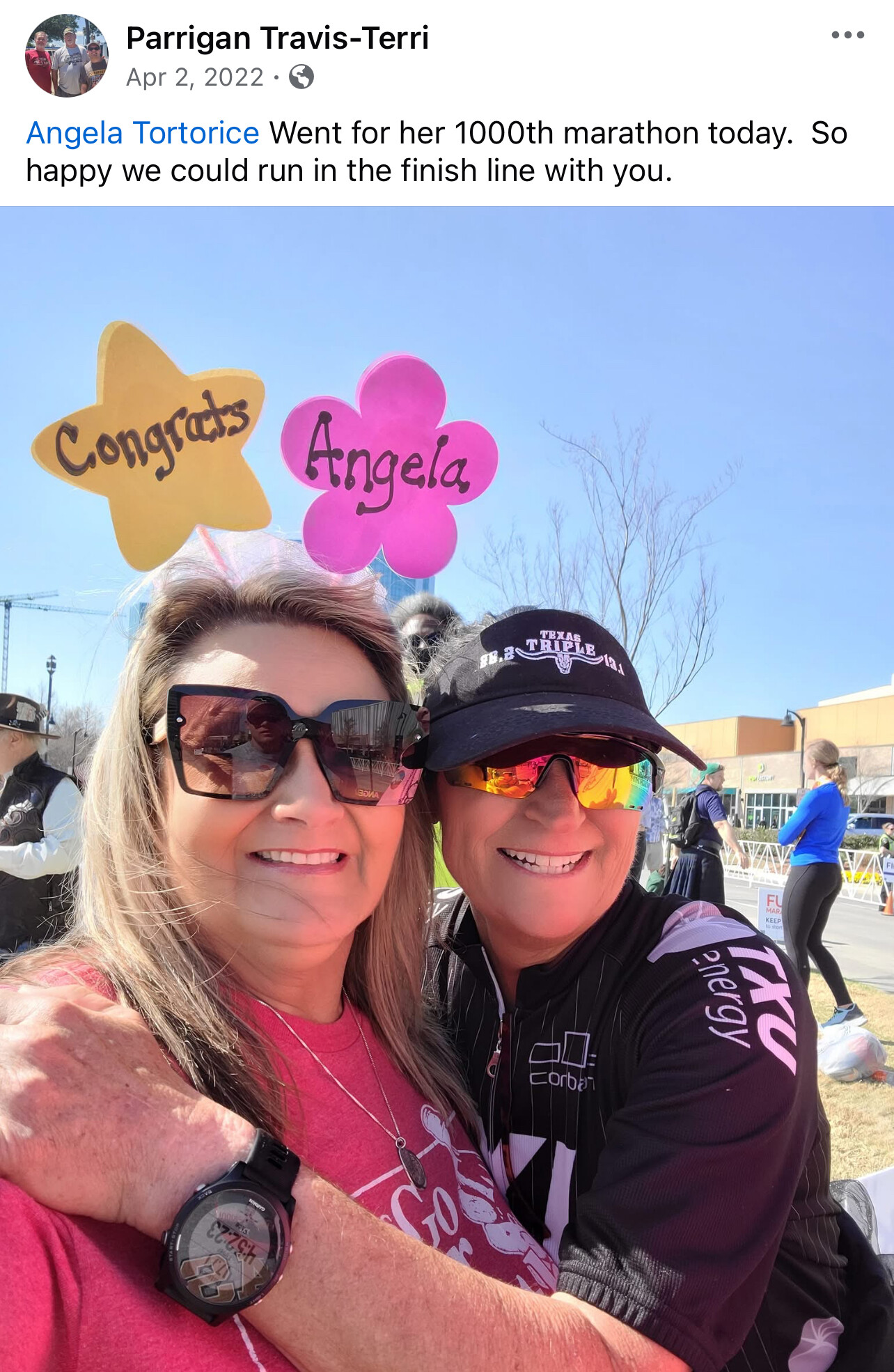
Even with her 129-marathon year included, the pace remains difficult to reconcile with the typical calendar of official events. A search on marathonview.net, a site that tracks certified marathon results, lists only 313 races under her name — far short of 1,000. That gap again raises concerns about how these totals are being calculated and what types of events are being counted.
Ultrarunning Records Raise More Questions
Further complicating the narrative is data from UltraRunning Magazine, which tracks ultramarathon performances across the U.S. According to their published records, Tortorice competed in:
• 6 ultramarathons in 2012, totaling 182 miles
• 5 ultramarathons in 2013, totaling 152 miles
These included timed events like Run Like the Wind (26.7 miles in 6 hours) and longer efforts such as the Sunmart Texas Trails 50K and the Nashville Ultra. Running multiple ultramarathons during the same period she allegedly completed 129 marathons suggests an even greater load on the body — further straining plausibility.
To perform at this level, she would have needed to recover within 24–48 hours, every single week, for a full year, without serious injury. That level of resilience is virtually unheard of in the sport.
A Matter of Integrity
This story began as a celebration of one woman’s determination and consistency. Angela Tortorice clearly has passion and commitment to the sport, and there’s no question she’s run more marathons than most runners will ever attempt.
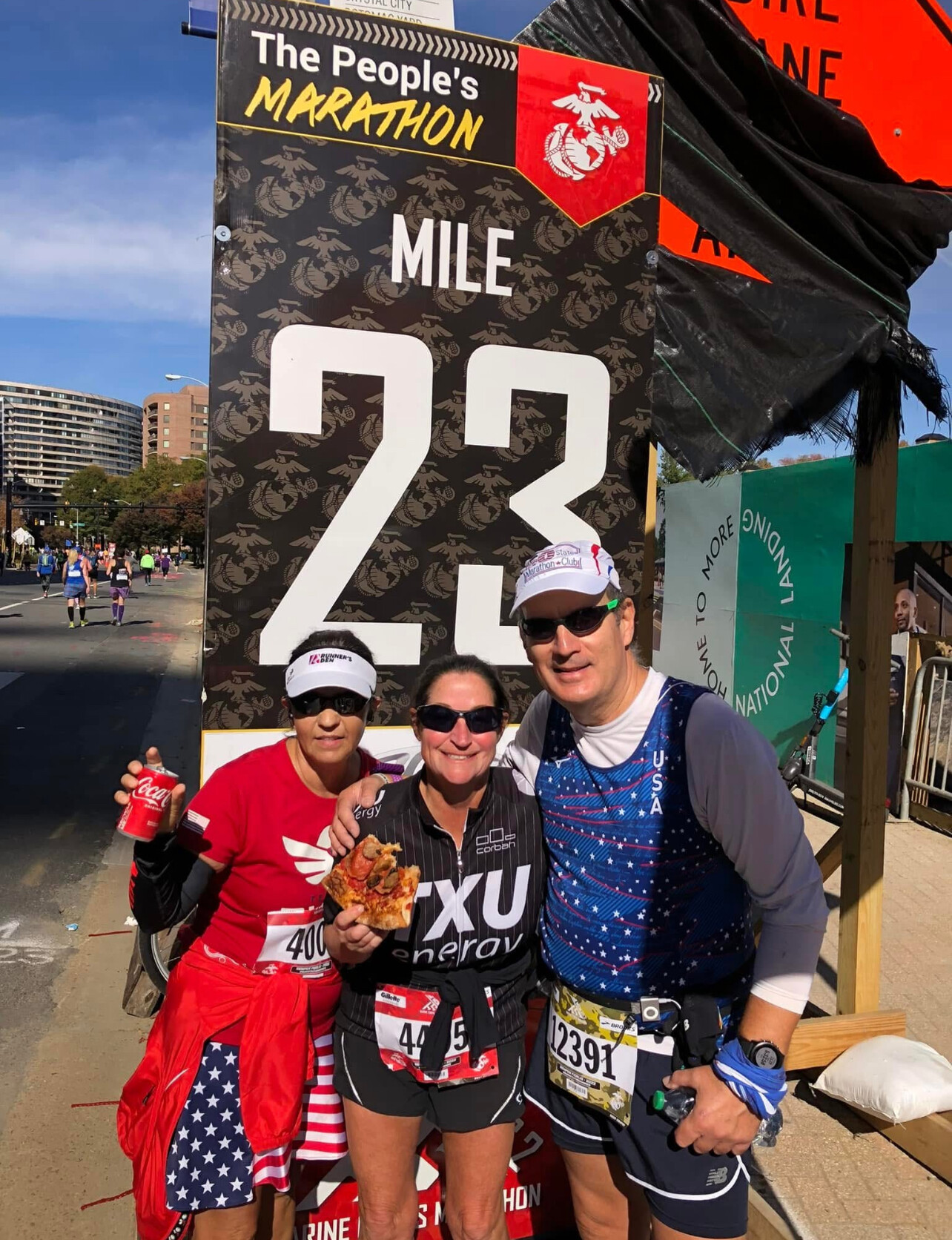
But when numbers like “129 official marathons in one year” or “1,000 official marathons in a career” are published and shared without full transparency, it matters. The integrity of marathon records — and the accomplishments of every runner who pushes through 26.2 miles — depends on clear, consistent standards.
If some of these marathons were self-supported runs or informal events, they are still worthy efforts — but should be categorized appropriately.
800 Marathons by 2019 — Then 200 More in 30 Months?
Another milestone adds complexity to the story. On October 5, 2019, Angela Tortorice celebrated her 800th marathon, as shown in a Facebook post and commemorative photo holding a cake at the finish line. That celebration is just 2 years and 6 months before her 1,000th marathon, reportedly completed at the Irving Marathon on April 2, 2022.
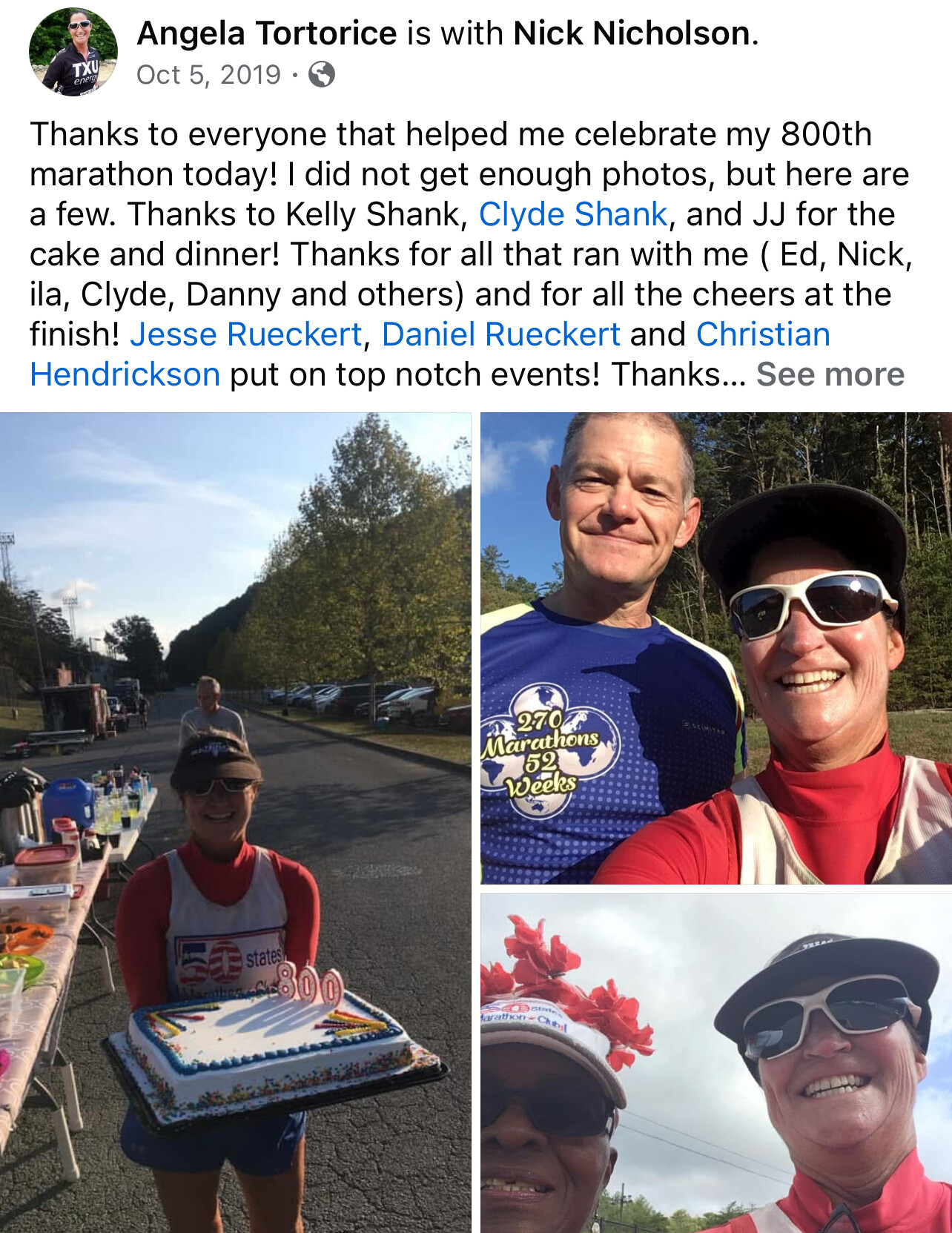
That means she would have completed 200 marathons in just 30 months, averaging over 6.5 marathons per month, or about 1.5 per week, every single week — during the height of the pandemic era when many events were canceled or limited.
Even more striking, race result records from this period show that she was also participating in ultramarathons, including at least one 24-hour race, according to UltraRunning Magazine. These events demand far more recovery than standard marathons. Yet her pace of marathons never seems to slow down.
The Core Question Remains
Angela Tortorice has no doubt logged thousands of miles and displayed a deep love for running. But the record of 129 marathons in a single year, verified by Guinness, was widely interpreted as representing 129 official, certified marathons — the kind that appear in race databases, are publicly timed, and meet governing body standards.
The mounting evidence — including her ultrarunning participation, the 800-to-1000 marathon timeline, and her full-time employment — raises a fundamental question: Were all of these “marathons” part of certified, organized events, or were many informal, self-organized, or private runs?
For a record with such significance, the running world deserves clarity. Not to diminish the accomplishment — but to ensure accuracy and integrity in what we celebrate.
Angela Tortorice has no doubt achieved extraordinary things. But the marathon world deserves clarity: What exactly counts as a marathon in these records? If the claim is that all 1,000 were “official race marathons,” then we must ask — where’s the list?
Until those questions are answered, the celebration must also come with scrutiny. The running community deserves both inspiration and truth.
by Bob Anderson and Boris Baron
Login to leave a comment
Amway River Bank Run Delivers $116,000 in Payouts and Two New American Records
The 48th edition of the Amway River Bank Run May 10th delivered one of its most memorable races in history as both Casey Clinger and Carrie Ellwood shattered American records in the 25K distance. Over 16,000 participants took to the streets of downtown Grand Rapids, reaffirming the race’s place among the World’s Best 100 Races.
Elite Performances and Records
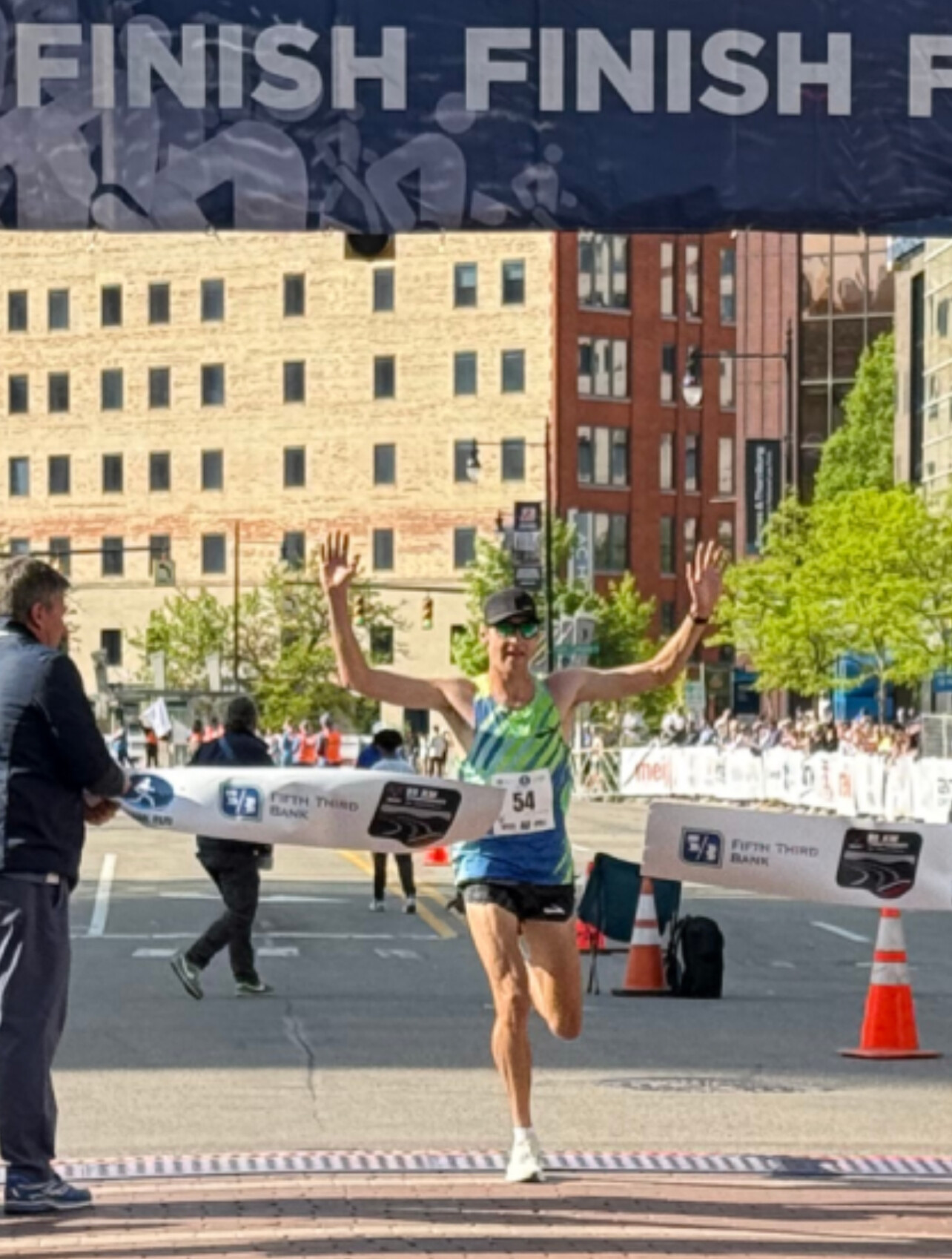
Clinger crossed the line in 1:12:16.82, eclipsing the previous U.S. 25K record of 1:13:08. On the women’s side, Ellwood clocked 1:22:26.19, just under the prior mark of 1:22:30.
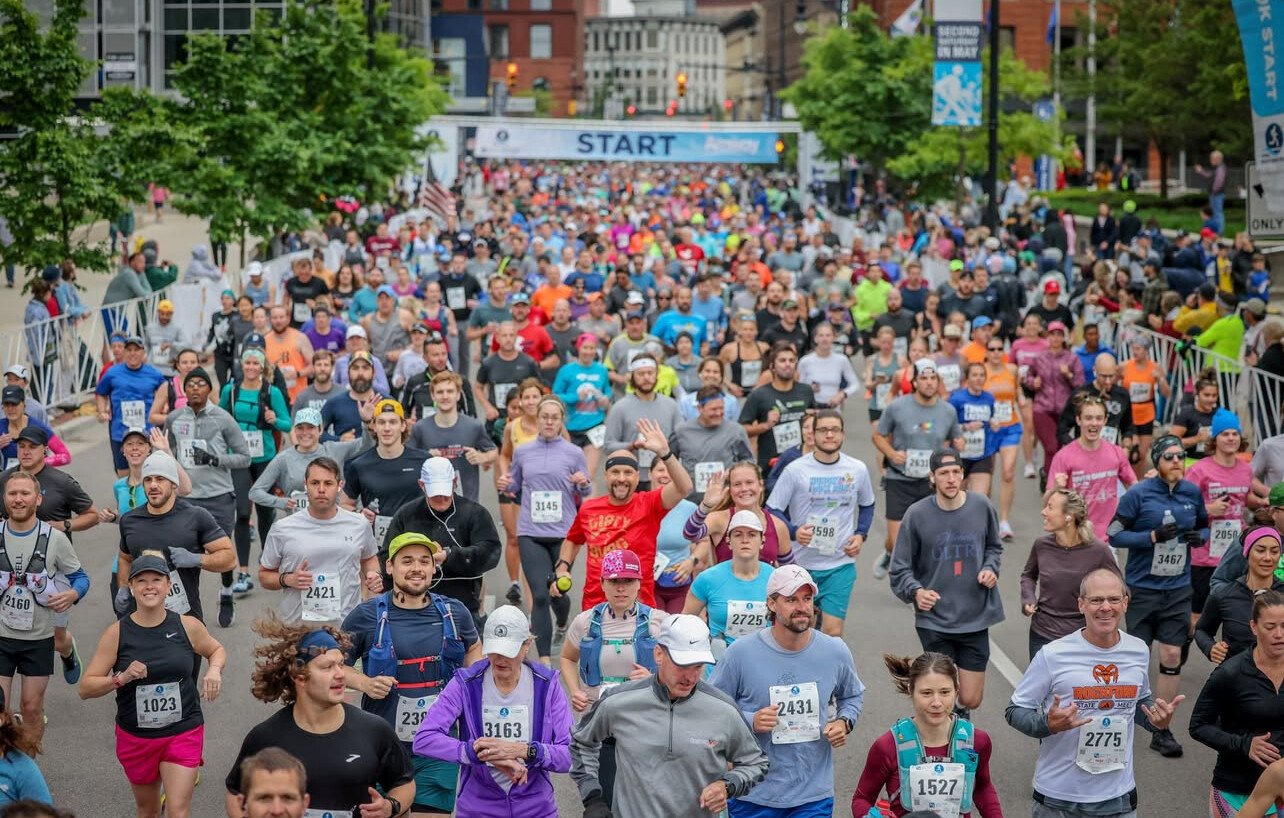
Both champions earned $10,000 for their victories and a $5,000 bonus for setting new American records—bringing their individual prize money totals to $15,000.
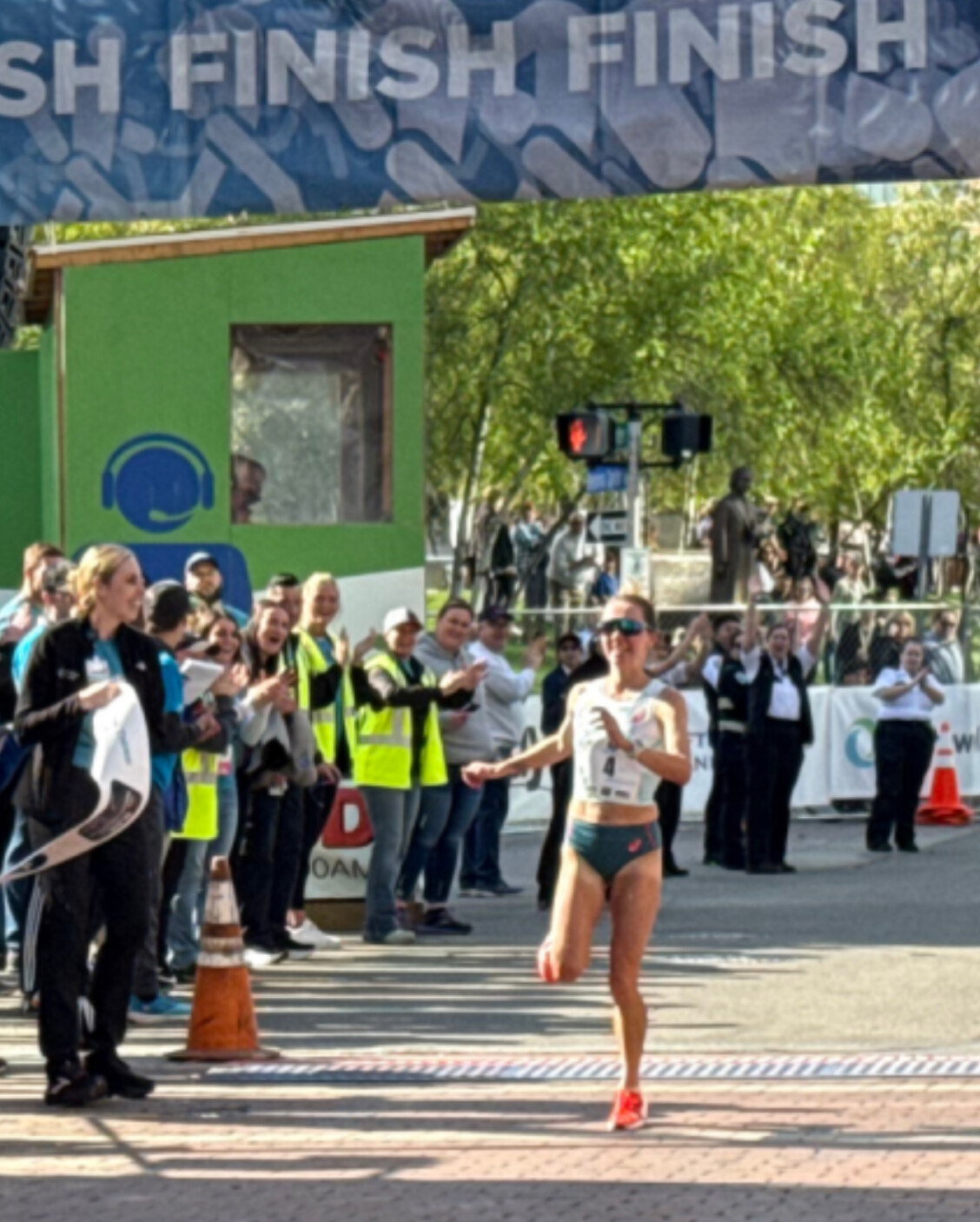
Top 10 Men – 25K
1. Casey Clinger – 1:12:16.82
2. Joe Klecker – 1:12:31.42
3. Hillary Bor – 1:12:52.83
4. Zouhair Talbi – 1:14:46.99
5. Joel Reichow – 1:15:00.13
6. Joseph Trojan – 1:15:40.74
7. Anthony Raftis – 1:15:43.97
8. Patrick Smyth – 1:15:53.89
9. Will Nation – 1:16:37.67
10. Andy Wacker – 1:17:21.29
Top 10 Women – 25K
1. Carrie Ellwood – 1:22:26.19
2. Megan Hasz – 1:23:51.78
3. Kasandra Parker – 1:24:25.05
4. Atsele Tesema – 1:25:21.43
5. Savannah Berry – 1:25:41.29
6. Gabrielle Orie – 1:28:09.24
7. Maya Weigel – 1:28:25.97
8. Piper Atnip – 1:30:32.03
9. Kathryn Fluehr – 1:31:36.85
10. Abby Levene – 1:34:47.89
Masters Division Winners
Prize money of $1,500 was awarded to the top male and female Masters athletes (40+), with additional payouts for age-group champions. The following runners topped their respective age divisions:
• M 40-49 – Dickson Mercer, 1:25:52
• M 50-59 – Rob Hyde, 1:36:14
• M 60-69 – Henry Hofman, 1:39:48
• M 70+ – Larry Ver Merris, 2:08:46
• F 40-49 – Melissa Kessler, 1:39:21
• F 50-59 – Janet Becker, 2:03:27
• F 60-69 – Lisa Veneziano, 1:43:44
• F 70+ – JoAnne Furu, 2:41:37
A Grand Rapids Tradition
The Amway River Bank Run remains the largest 25K road race in the United States and continues to serve as the USATF 25K National Championship. The course winds through the heart of Grand Rapids, offering a mix of flat stretches and rolling hills with vibrant support from local crowds.
With American records falling and a deep field of elite and recreational runners, the 2025 edition delivered everything a great road race should.
by Boris Baron
Login to leave a comment
Taylor Roe’s Record Breaking Rise from NCAA Star to American Road Racing Powerhouse
In just over a year, Taylor Roe has gone from a promising collegiate standout to one of the brightest stars in American distance running. Her 2025 campaign has been nothing short of historic—national titles, American records, and international recognition are stacking up fast for the 24-year-old from Lake Stevens, Washington.
From Washington to the NCAA Podium
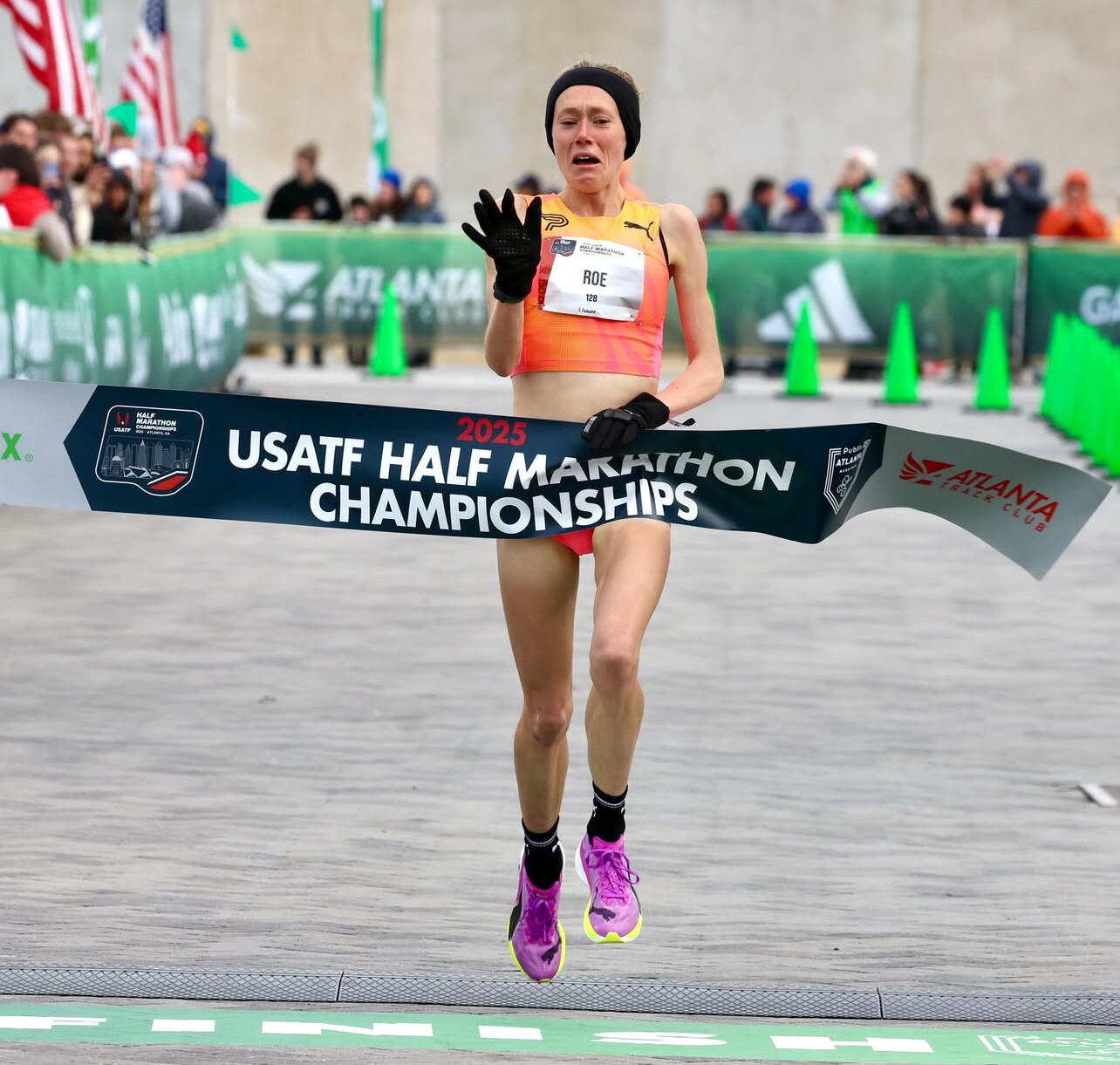
Roe began her running journey in Lake Stevens, where she collected nine individual state titles in cross country and track. At Oklahoma State University, she continued to shine, winning the NCAA Indoor 3000m title in 2022 and placing second at the 2020 NCAA Cross Country Championships. Her final collegiate season in 2024 saw her finish third in the 10,000m and sixth in the 5,000m at the NCAA Outdoor Championships.
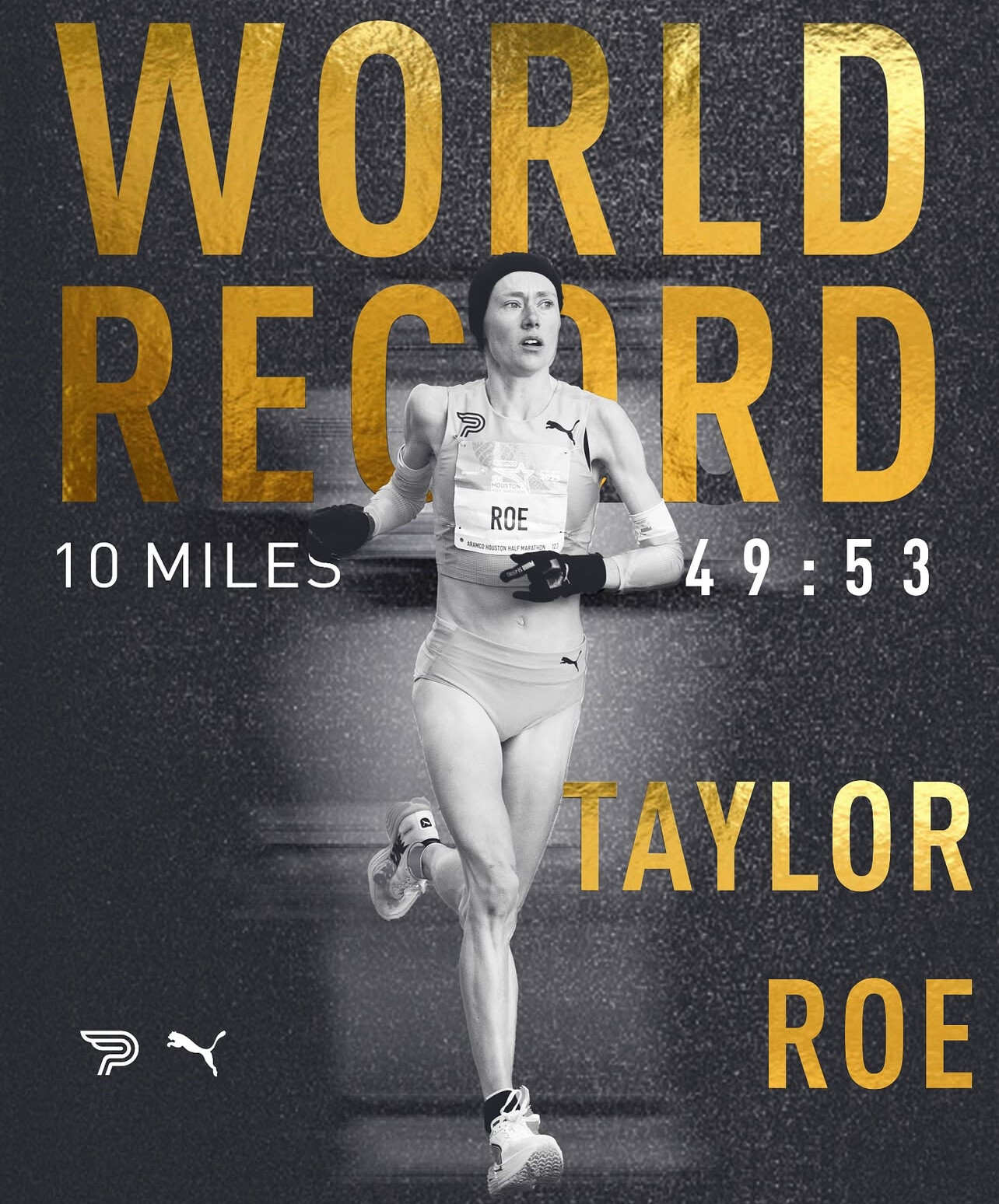
Breakout Year on the Roads
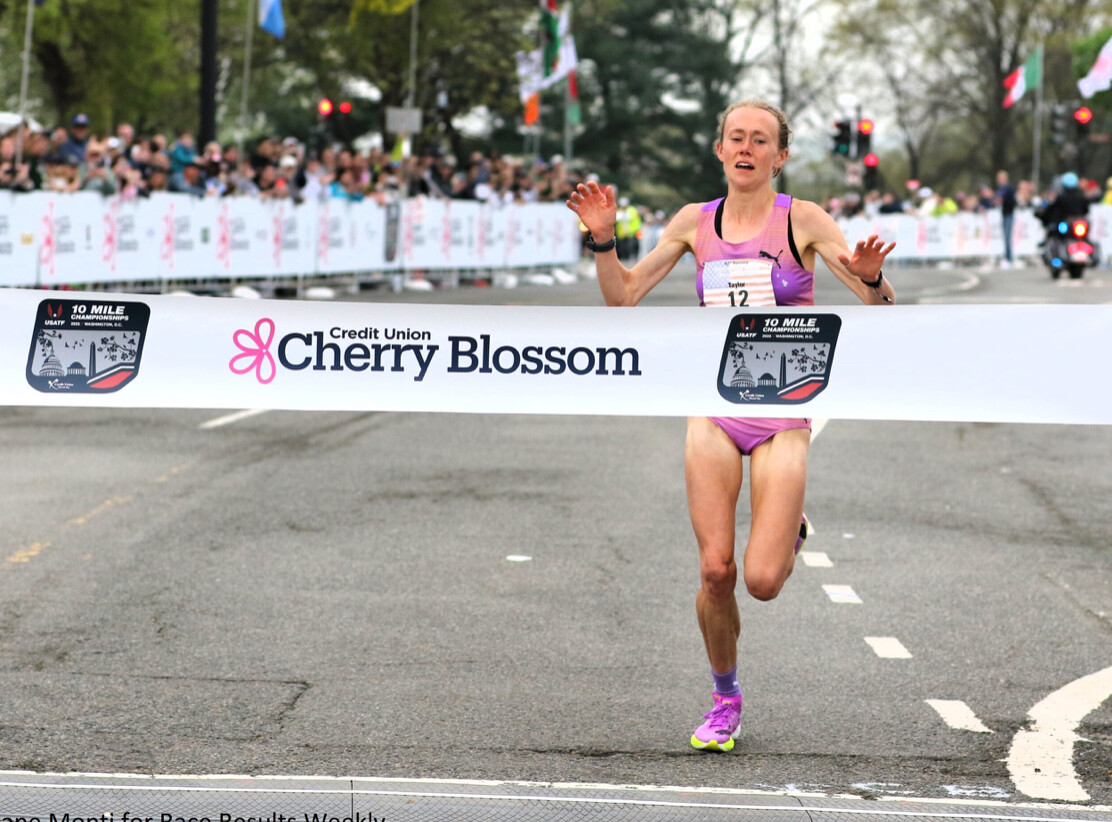
Turning pro in mid-2024 with Puma, Roe wasted no time making her mark. She won the USATF Half Marathon Championships in March 2025 in a personal best of 1:07:22. The win not only earned her a national title but also secured her a spot on Team USA for the World Athletics Road Running Championships.
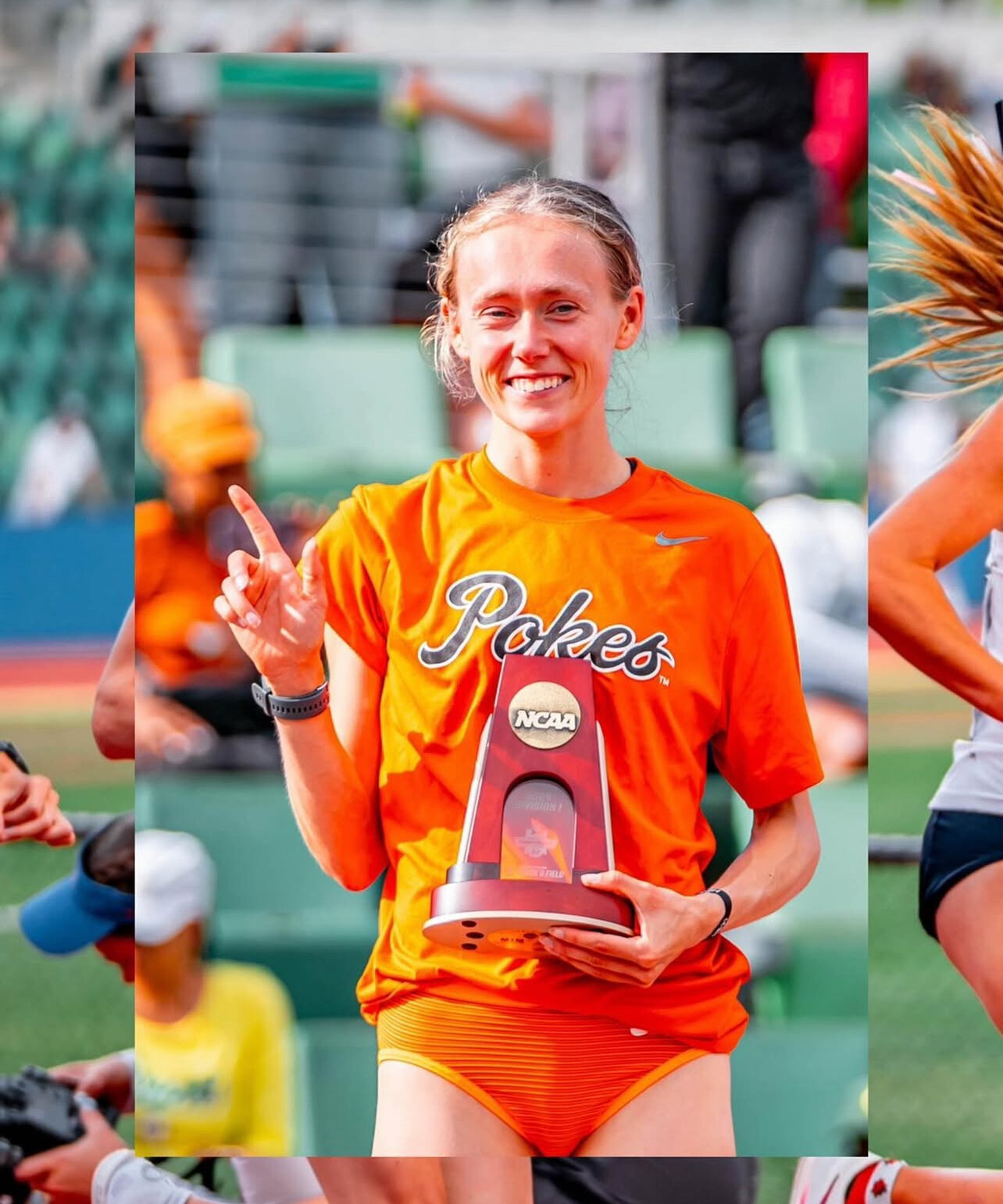
Rewriting the Record Books
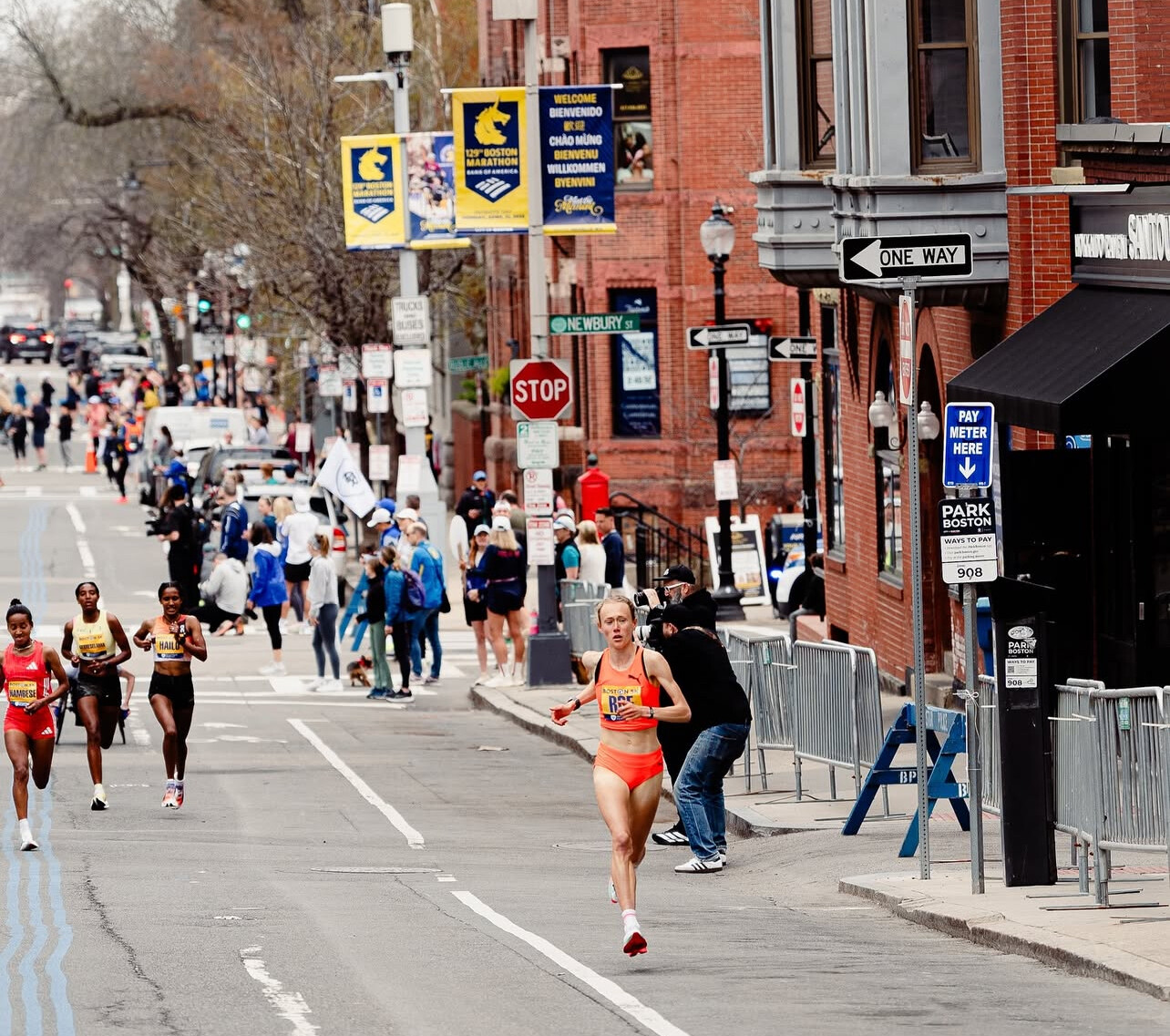
Just a month later, Roe delivered one of the most impressive road racing performances in recent memory. At the USATF 10 Mile Championships in Washington, D.C., she became the first American woman to break 50 minutes for the distance, finishing in 49:53 which is the world best for in an all woman race. On her way to the win, she also set new American records for the 10K (30:56) and 15K (46:24), earning her USATF Athlete of the Week honors.
Breaking down the world best time ever for ten miles in an all woman's race: Looking Ahead
Taylor Roe’s rise has been fast, fierce, and inspiring. As she builds on this foundation, fans of American distance running have plenty to be excited about. With her blend of speed, endurance, and race-day poise, Roe is now firmly on the radar for global championships and Olympic teams. At just 24, she’s entering her prime years with the momentum of a seasoned veteran. If 2025 is any indication, she could soon be the face of American distance running.
Taylor Roe’s 2025 Highlights
• USATF Half Marathon Champion – 1:07:22 (March 2025)
• USATF 10 Mile Champion – 49:53 (April 2025)
• American Records:
• 10K – 30:56
• 15K – 46:24
• 10 Miles – 49:53
• Selected for Team USA – World Athletics Road Running Championships
Taylor Roe’s rise has been fast, fierce, and inspiring. As she builds on this foundation, fans of American distance running have plenty to be excited about.
by Boris Baron
Login to leave a comment
Fast Finishes in Indy as Hacker and Andrews Claim 5K Crowns
On a crisp morning in downtown Indianapolis, the 2025 USATF 5 km Championships delivered thrilling finishes and fast times, with Olin Hacker and Josette Andrews emerging as national champions.
In the men’s race, Olin Hacker of HOKA Northern Arizona Elite made a decisive move in the final kilometer, pulling away from a tightly packed lead group. His surge proved untouchable, and he crossed the finish line in 13:31.93 to claim the national title. Casey Clinger of Brooks was just a stride behind in 13:33.04, with Hacker’s teammate Ahmed Muhumed rounding out the podium in 13:36.88—completing a trio of sub-13:40 finishers.
Men’s Top 10 Finishers
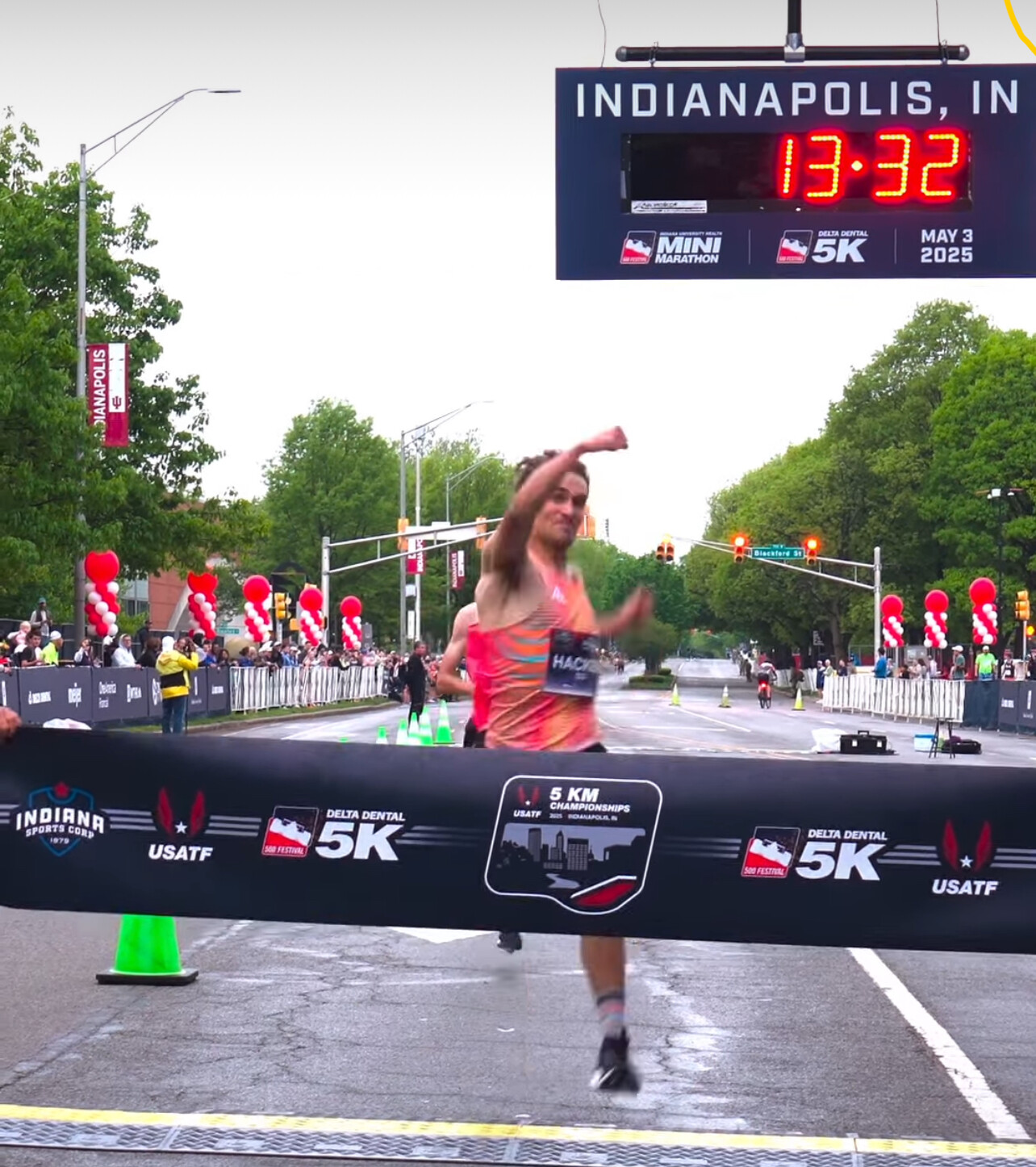
1. Olin Hacker (HOKA NAZ Elite) – 13:31.93
2. Casey Clinger (Brooks) – 13:33.04
3. Ahmed Muhumed (HOKA NAZ Elite) – 13:36.88
4. Morgan Beadlescomb (adidas) – 13:39.50
5. Graham Crawford (Reebok) – 13:42.10
6. Reed Fischer (Tinman Elite) – 13:44.75
7. Sam Chelanga (Nike) – 13:47.30
8. Ben Flanagan (On Running) – 13:49.60
9. Emmanuel Bor (U.S. Army) – 13:52.25
10. Eric Avila (HOKA) – 13:54.80
In the women’s race, Josette Andrews showed impressive strength and timing, kicking hard in the final stretch to take the win in 15:12.34. Emily Infeld of Nike followed closely in 15:14.50, and Karissa Schweizer of Bowerman Track Club secured third in 15:16.75, as the top trio pushed each other to the line.
Women’s Top 10 Finishers
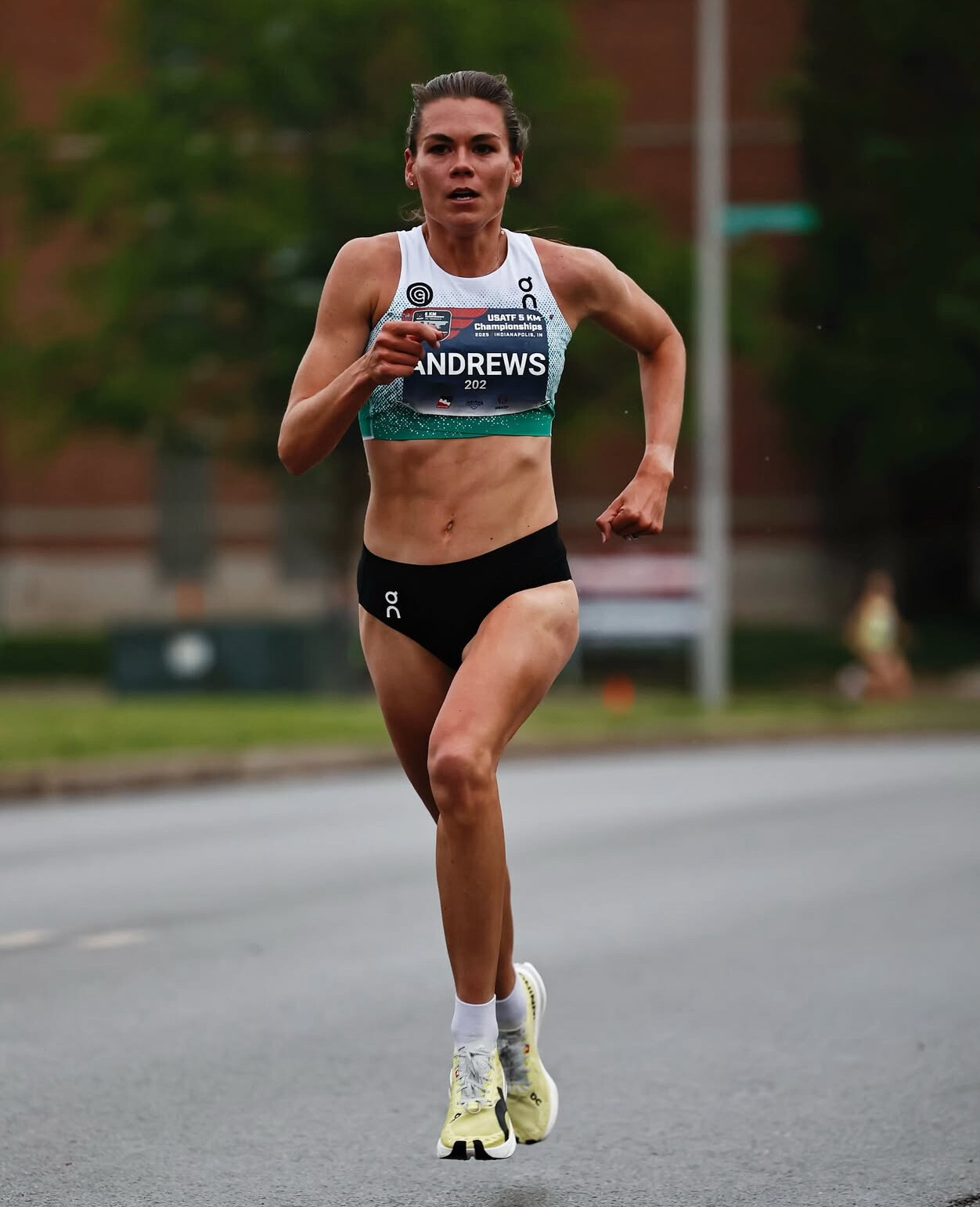
1. Josette Andrews – 15:12.34
2. Emily Infeld (Nike) – 15:14.50
3. Karissa Schweizer (Nike Bowerman TC) – 15:16.75
4. Elly Henes (adidas) – 15:19.20
5. Rachel Schneider (Under Armour) – 15:22.85
6. Abbey Cooper (New Balance) – 15:25.40
7. Molly Seidel (Saucony) – 15:28.95
8. Vanessa Fraser (Nike) – 15:31.50
9. Emily Lipari (adidas) – 15:34.05
10. Natosha Rogers (Hansons-Brooks) – 15:36.60
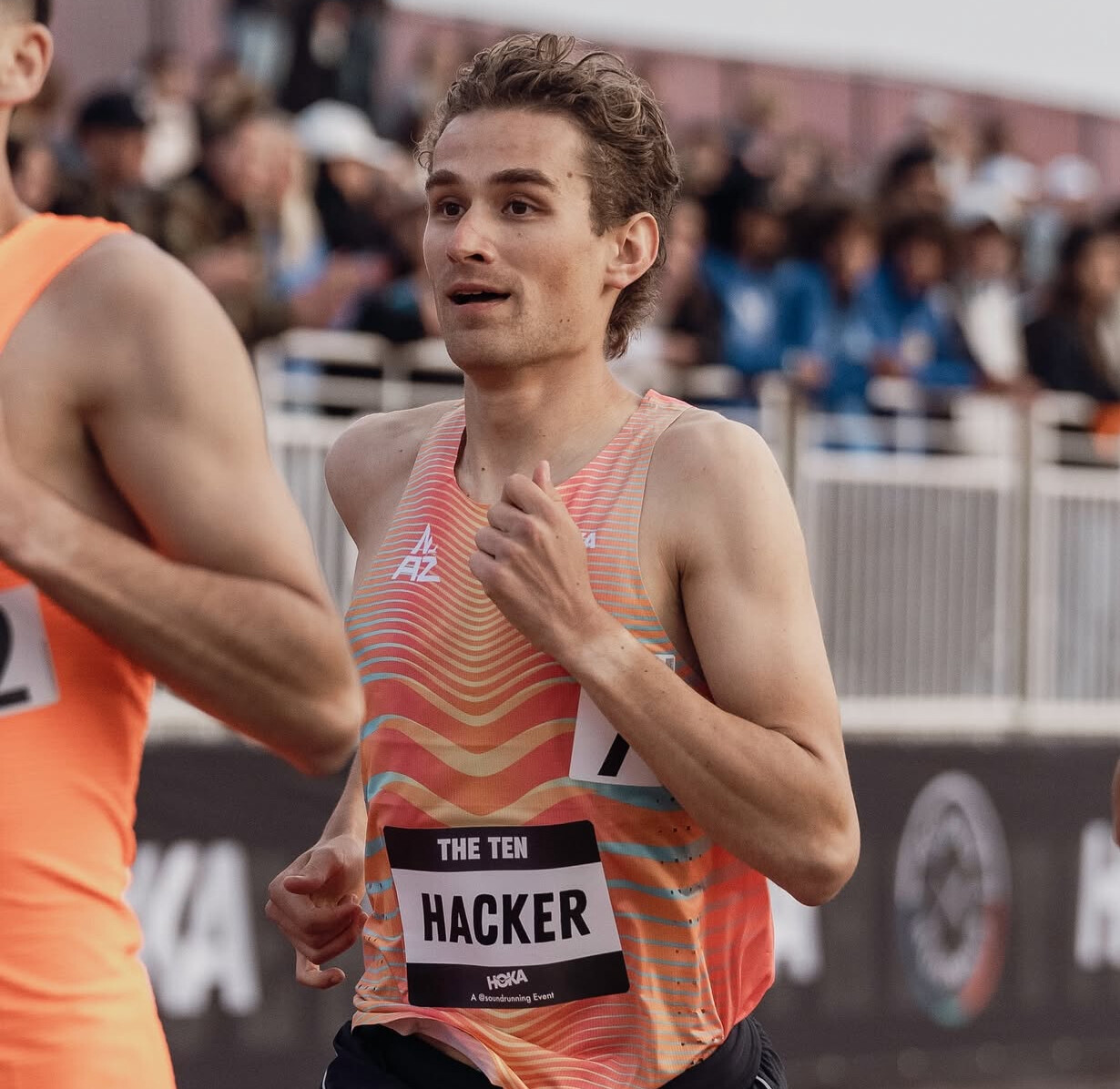
The performances in Indianapolis set the tone for what promises to be a fast and competitive summer racing season across the U.S. road circuit.
by Boris Baron
Login to leave a comment
OneAmerica 500 Festival Mini-Marathon
The mission of the 500 Festival is to produce life-enriching events and programs while celebrating the spirit and legacy of the Indianapolis 500 and fostering positive impact on the city of Indianapolis and state of Indiana. As an organization providing multiple events and programs, many of which are free to attend and impact over 500,000 people annually, our mission to...
more...Emily Durgin Has the Tools to Be a Force in Distance Running
A Profile of Grit, Versatility, and Untapped Potential
Emily Durgin’s name may not yet be a household one in global distance running, but among those who follow American road racing closely, she has earned deep respect for her steady rise, racing range, and professionalism. With standout performances in the 10K, half marathon, and marathon, Durgin has shown she possesses the tools to become a lasting force in the sport.
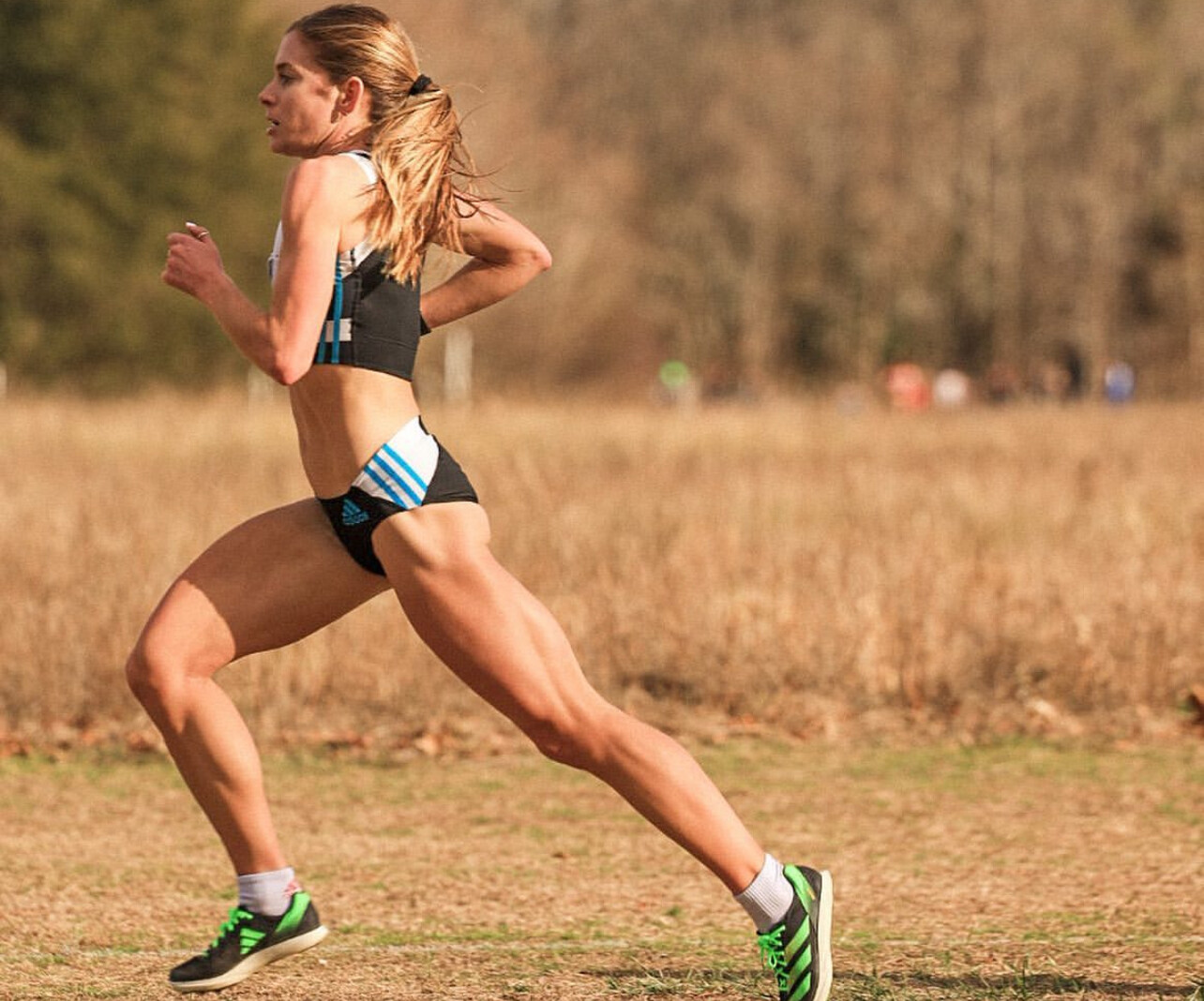
Originally from Maine, Durgin was a nine-time conference champion at the University of Connecticut before making a name for herself on the professional circuit. Her breakout year came in 2022, when she ran 1:07:54 for the half marathon in Houston — one of the fastest times ever by an American woman. She followed that up with a marathon personal best of 2:26:46 at the Toronto Waterfront Marathon in 2023, finishing as the top American.
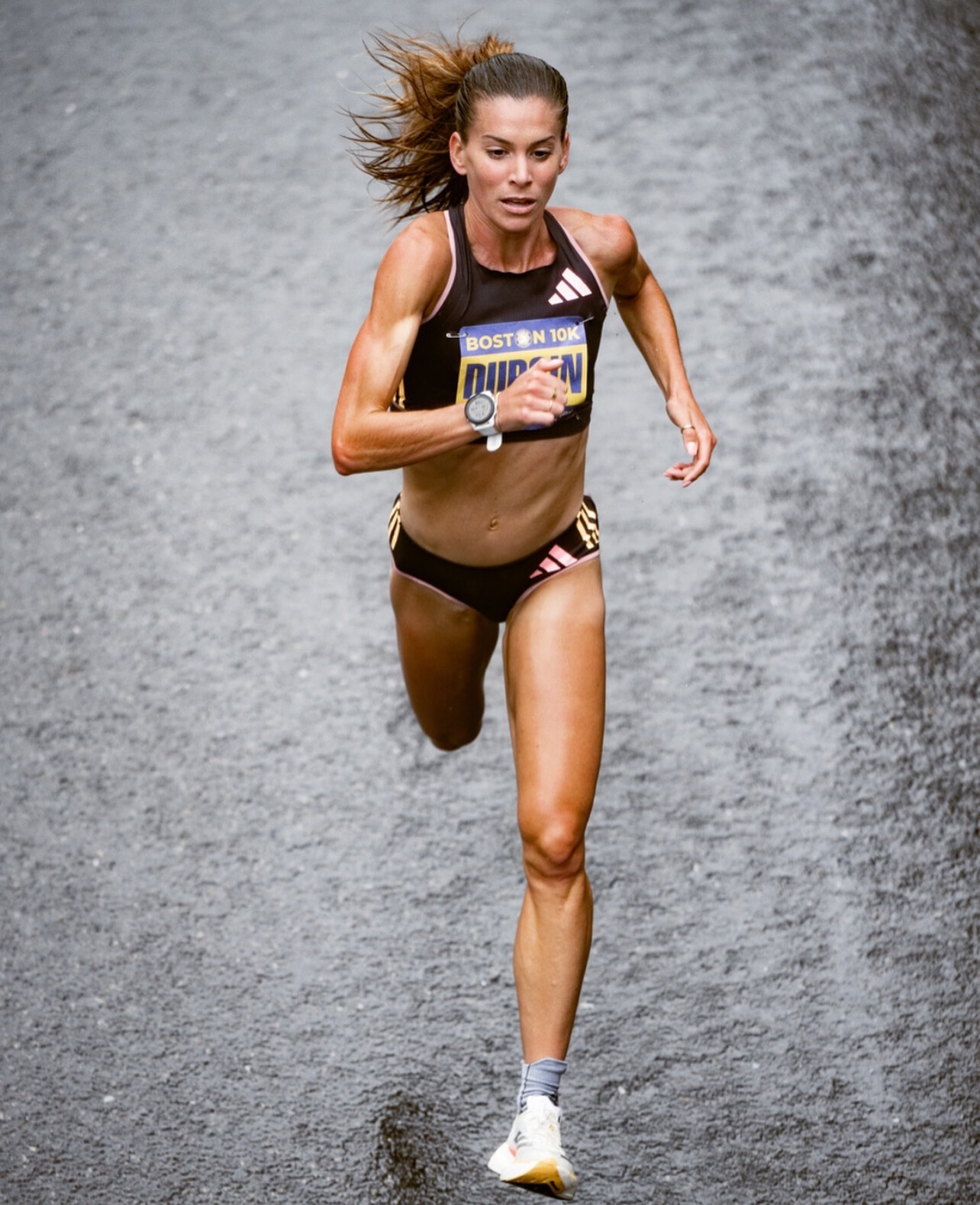
In early 2024, she placed ninth at the U.S. Olympic Marathon Trials and went on to win the USATF 10-Mile Championship in Washington, D.C., with a blazing 51:26 — the fastest time ever by an American in a women-only race at that distance.
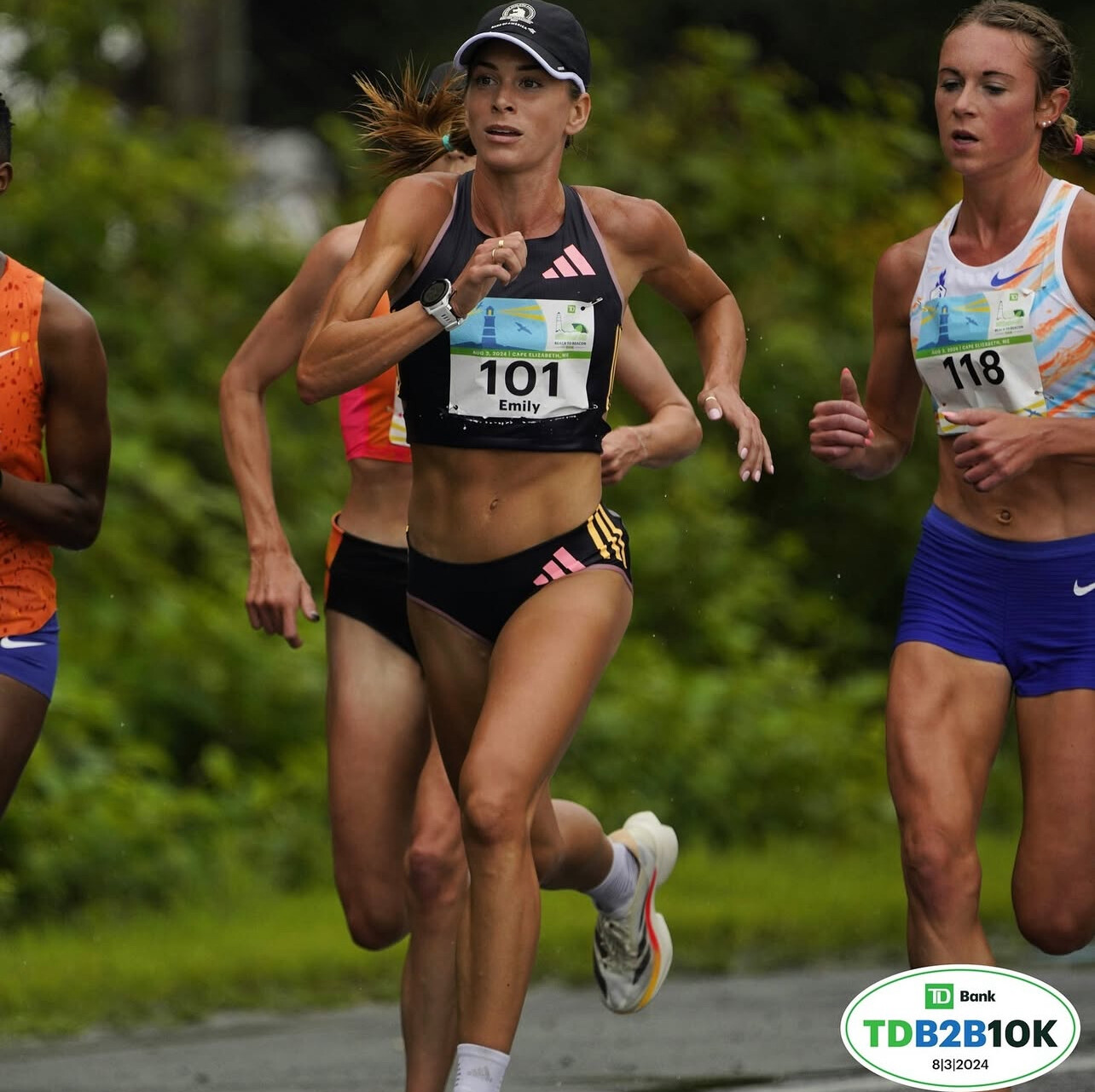
While she had planned to run the Valencia Marathon in December 2024, Durgin did not start the race due to a hamstring issue and a problem sleeping. In a recent social media post she feels she is putting these issues behind her and plan on racing again soon. But she says she is listening to her body and do not want to come back until her body is ready to race at the elite level.
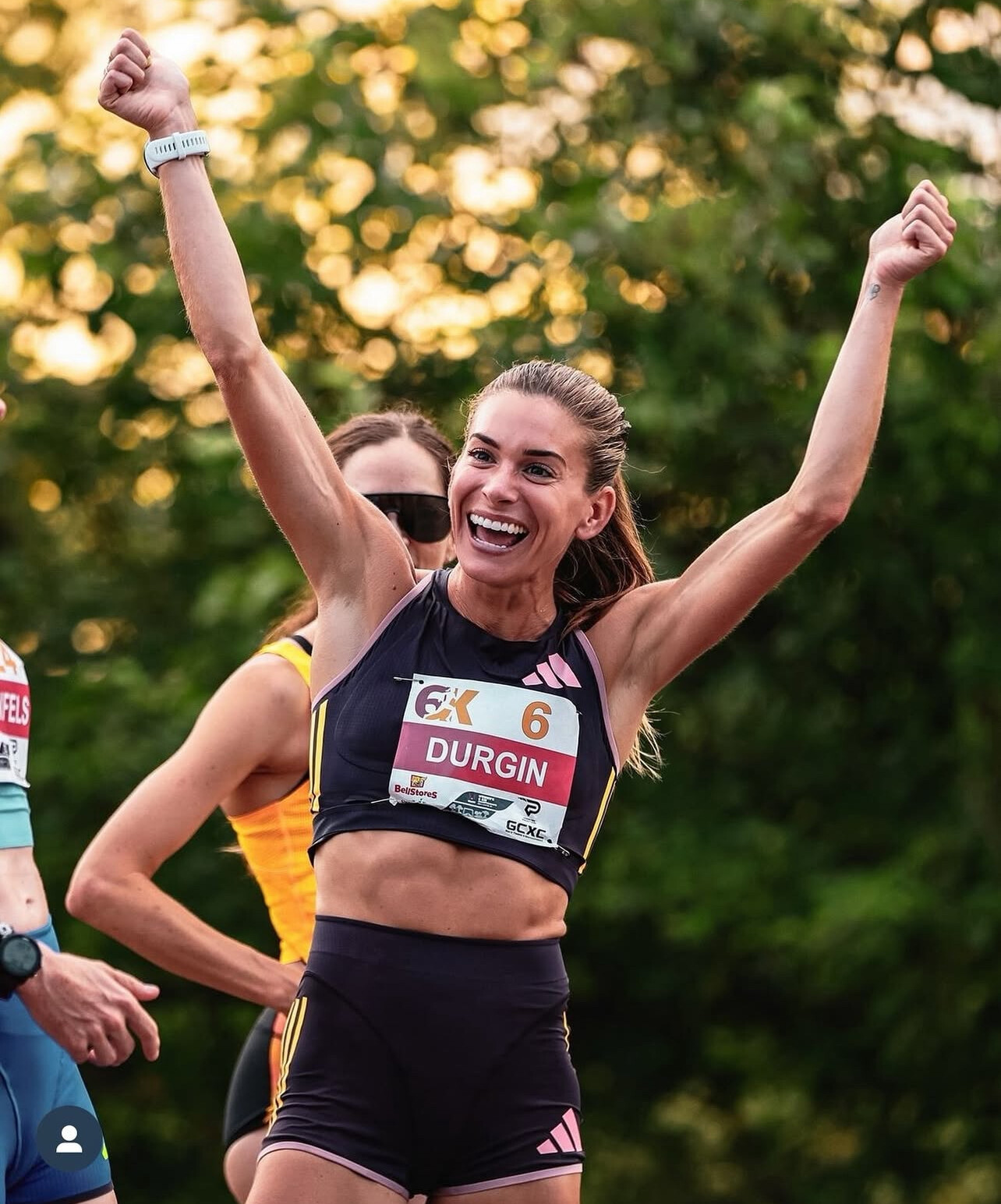
At age 30, she’s in the prime years for a distance runner — and with her ability across distances and proven toughness on the roads, Emily Durgin remains a name to watch.
by Boris Baron
Login to leave a comment
Gerald Phiri Provisionally Suspended Amid Doping Investigation
The Athletics Integrity Unit (AIU) has provisionally suspended former Zambian Olympian and USATF-licensed coach Gerald Phiri as of March 17, 2025. The suspension follows a joint investigation with the US Anti-Doping Agency (USADA) after three athletes coached by Phiri tested positive for the banned substance GW1516.
Phiri, a decorated sprinter, built his athletic career in the UK before moving to the United States as a student-athlete at Texas A&M University. A two-time Olympian (2012, 2016), he finished fifth in the 60m at the 2014 World Indoor Championships. His personal bests include 6.52 seconds in the 60m (2014), 10.03 seconds in the 100m (2014), and 20.29 seconds in the 200m (2008).
Following his retirement from competition, Phiri transitioned into coaching and currently serves as the Director of Track and Cross Country at Montverde Academy in Florida. His suspension casts uncertainty over his future in coaching and his involvement with elite athletes. The AIU and USADA continue to investigate the case, with further details expected in the coming weeks.
by Boris Baron
Login to leave a comment
World Athletics Relocates 2025 Road Running Championships from San Diego
In a recent development, World Athletics has announced that the 2025 World Athletics Road Running Championships, initially slated for September in San Diego, will be moved to a different location. This decision follows comprehensive discussions between World Athletics and the Local Organising Committee of the World Athletics Road Running Championships San Diego 25.
While the official announcement did not specify the reasons for this relocation, discussions within the running community suggest potential factors such as organizational challenges, financial considerations, and coordination issues between local organizers and governing bodies. Notably, some have pointed out that the event’s planning may not have been in direct partnership with USA Track & Field (USATF), potentially leading to logistical complications.
World Athletics is actively engaging with other potential hosts and anticipates announcing a new venue soon. They have expressed gratitude to the San Diego 25 team for their efforts over the past months and remain hopeful about future opportunities to host World Athletics events in San Diego.
Tracy Sundlun, CEO of San Diego 25, commented on the decision: “We really looked forward to welcoming the running world to San Diego this September but sadly it is not to be at this time. For now, all of us here on Team San Diego will do everything in our power to assist World Athletics in the seamless transition of the 2025 Championships to a new venue.”
The World Athletics Road Running Championships is a global celebration of running, featuring races in the half marathon, 5K, and one-mile distances. The event was set to be held in the U.S. for the first time, with San Diego’s selection announced approximately 1.6 years ago. Participants and fans are advised to stay tuned for updates regarding the new host city and event details.
Login to leave a comment
Roe and Maier Dominate USATF Half Marathon Championships
On a chilly morning in Atlanta, runners took to the streets for the USATF Half Marathon Championships on March 2, 2025, battling for national titles and a chance to represent Team USA at the World Athletics Road Running Championships in San Diego this September. With fierce competition and fast times, Taylor Roe and Alex Maier emerged as the day’s champions.
Roe Breaks Away to Claim First National Title
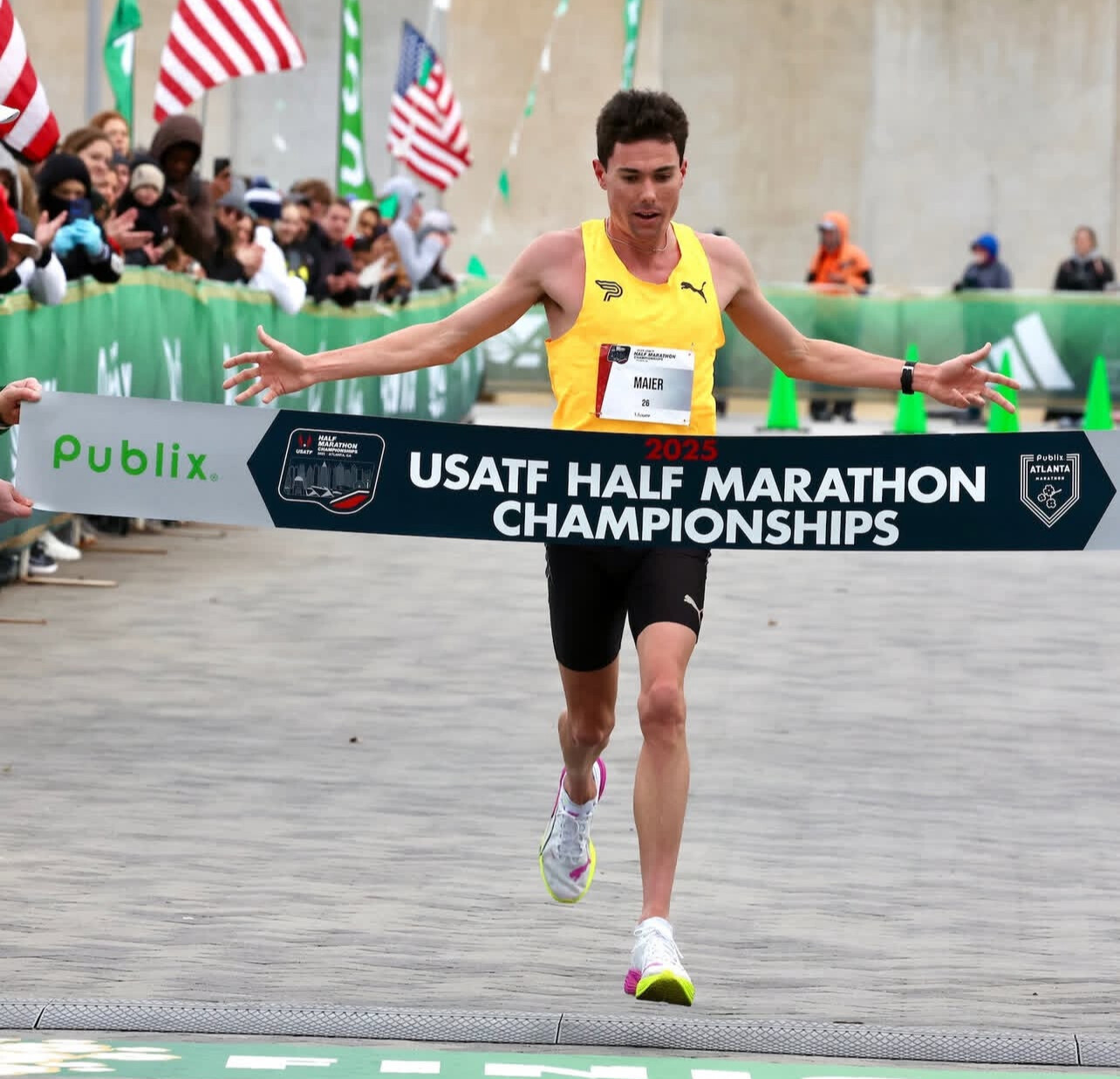
Taylor Roe made a statement in the women’s race, surging ahead in the final miles to secure victory in 1:07:22. The Durham, North Carolina, standout, representing PUMA Elite, held off a strong challenge from Emma Grace Hurley, who finished second in 1:07:35. Amanda Vestri of Blowing Rock, North Carolina, rounded out the podium with a solid 1:08:17.
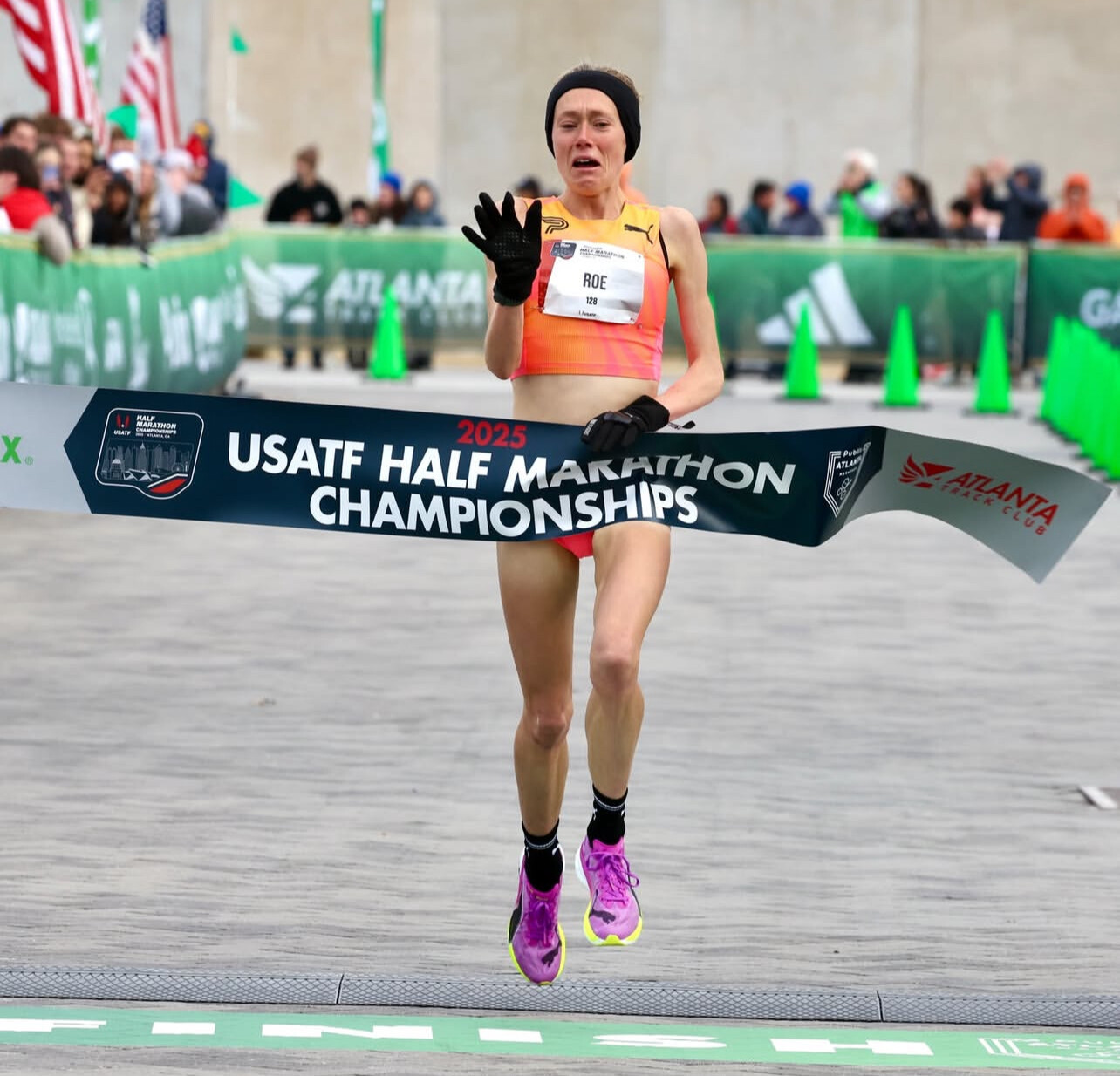
With their top-three finishes, Roe, Hurley, and Vestri secured their spots on Team USA for the World Championships in San Diego.
Top Five Women:
1. Taylor Roe (Durham, NC) – 1:07:22
2. Emma Grace Hurley (Indianapolis, IN) – 1:07:35
3. Amanda Vestri (Blowing Rock, NC) – 1:08:17
4. Jessica McClain (Phoenix, AZ) – 1:08:37
5. Emily Venters (Salt Lake City, UT) – 1:09:03
Maier Holds Off Late Challenge to Take the Men’s Crown
In the men’s race, Alex Maier delivered a strong performance, crossing the finish line in 1:00:48 to claim his first USATF Half Marathon title. The Chapel Hill runner, also representing PUMA Elite, stayed composed as Shadrack Kipchirchir of Colorado Springs pushed hard in the final stretch, finishing just 10 seconds back in 1:00:58. Hillary Bor made it a tight battle for second and third, clocking 1:00:59.
Maier, Kipchirchir, and Bor will now represent Team USA at the World Championships, where they’ll take on some of the world’s best in San Diego.
Top Five Men:
1. Alex Maier (Chapel Hill, NC) – 1:00:48
2. Shadrack Kipchirchir (Colorado Springs, CO) – 1:00:58
3. Hillary Bor (Colorado Springs, CO) – 1:00:59
4. Ahmed Muhumed (Flagstaff, AZ) – 1:01:03
5. Andrew Colley (Blowing Rock, NC) – 1:01:09
All Eyes on San Diego
With the USATF Half Marathon Championships in the books, the focus now shifts to the World Athletics Road Running Championships in San Diego this September. The newly crowned national champions, along with the other top finishers, will have the opportunity to take on the best distance runners from around the globe. If their performances in Atlanta are any indication, Team USA will be ready to make an impact on the international stage.
Login to leave a comment
2025 Gate River Run Elite Battle for USA 15K Glory
The 2025 Gate River Run in Jacksonville, Florida, set for March 1, is not only America’s largest 15K but also serves as the USA 15K Championship—a high-stakes battleground where elite athletes from across the nation and around the globe will clash for glory, record-breaking prizes, and the opportunity to inscribe their names in running history.
This year’s event has rejoined the prestigious Professional Road Running Organization (PRRO) Circuit for the first time since 1993, significantly elevating its status with over $400,000 in total prize money at stake. Competitors face a guaranteed purse of $57,000 with additional bonuses that can boost the total to $62,000, and winners also earn eligibility for a $20,000 PRRO Super Bonus at the season-ending PRRO Championship in Utica, New York.
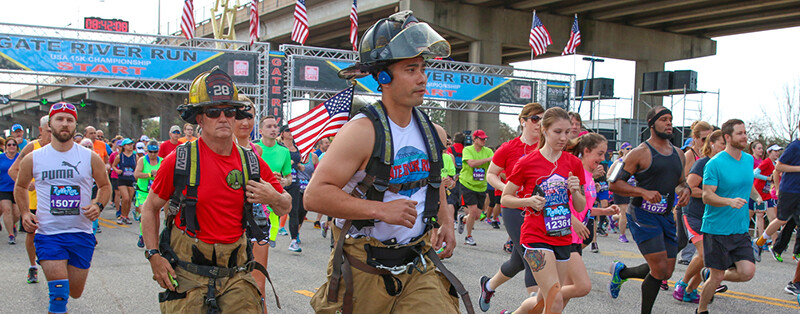
The prize structure is designed to reward outstanding performance and national pride. In the Open Division, the top 10 finishers in both the men’s and women’s fields will earn significant payouts, while U.S. athletes have the opportunity to “double dip” by competing for additional American Cup bonuses, which reward the top five finishers with extra cash ranging from $3,000 to $500. Adding an intriguing twist, the Equalizer Bonus awards the first athlete to cross the finish line—regardless of gender—an extra $5,000, and record-breaking performances are further incentivized with $10,000 for a world record, $5,000 for an American record, and $3,000 for a course record.
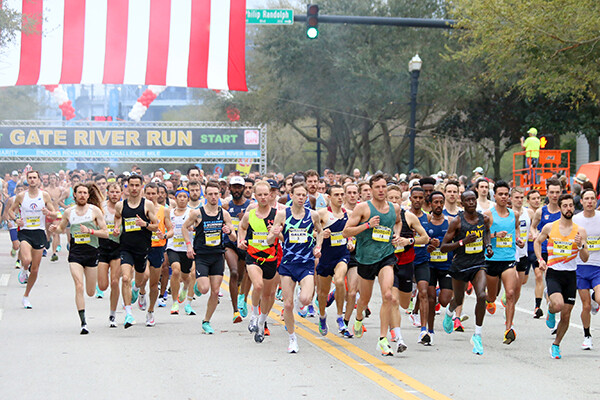
The 15K course itself is a true test of strategy and endurance as it weaves through Jacksonville’s urban landscape and culminates at the base of the Hart Bridge, famously nicknamed the “Green Monster” due to its steep, punishing incline. This final stretch demands that athletes balance blistering speed with tactical acumen as they fight to maintain their momentum and push through fatigue, echoing the challenges faced by past legends who set formidable benchmarks on this course. Organizers have gone to great lengths to support peak performance, providing elite athletes with complimentary airport transfers and accommodations at the Marriott Jacksonville Downtown, along with strict adherence to USATF and IAAF anti-doping policies. Qualification standards are stringent, with men required to finish under 46:00 and women under 53:00 to be eligible for prize money, ensuring that only the very best contend.
Adding to the excitement is the confirmed participation of marquee athlete Jacob Kiplimo, the current 15K world record holder known for his blistering 40:42 performance. Kiplimo’s entry, along with a strong contingent of top U.S. runners and promising international stars already confirmed, underscores the elite quality of the field this year. While the full elite roster is still being finalized, insiders report that several of America’s best middle- and long-distance runners are set to join the competition, with additional names expected to be announced in the coming weeks.
Beyond the elite competition, the Gate River Run remains a celebration of running culture, drawing over 18,000 participants—from dedicated runners to enthusiastic walkers—who join in the festivities and contribute to the event’s storied legacy. For professional athletes, however, this race is a career-defining opportunity; it is where every second matters, every stride is measured, and personal bests and record-breaking performances are the norm rather than the exception.
As the countdown to March 1 continues, anticipation builds among athletes and fans alike. The 2025 Gate River Run promises to be an arena where national pride meets global ambition, a platform for elite runners to test their limits and secure life-changing prizes while setting the stage for the upcoming outdoor season. For registration details, elite entry requirements, and live coverage, visit the official Gate River Run website or follow updates on My Best Runs.
by Boris Baron
Login to leave a comment
Gate River Run
The Gate River Run (GRR) was first held in 1978, formerly known as the Jacksonville River Run, is an annual 15-kilometer road running event in Jacksonville, Fla., that attracts both competitive and recreational runners -- in huge numbers! One of the great running events in America, it has been the US National 15K Championship since 1994, and in 2007...
more...Zariel Macchia: Rising Star in Distance Running and Academics
Zariel "Z" Macchia, an 18-year-old senior at William Floyd High School in Suffolk County, New York, continues to make headlines as a standout talent in American distance running. Her achievements both on and off the track demonstrate her exceptional dedication and potential.
Macchia recently defended her title at the USATF U20 Cross Country Championships in Lubbock, Texas, completing the 6-kilometer course in 21:46 and winning by an impressive 11-second margin. This marked her second consecutive U20 national cross-country title, solidifying her reputation as one of the top young runners in the country. In recognition of this victory, she was named USATF Athlete of the Week.
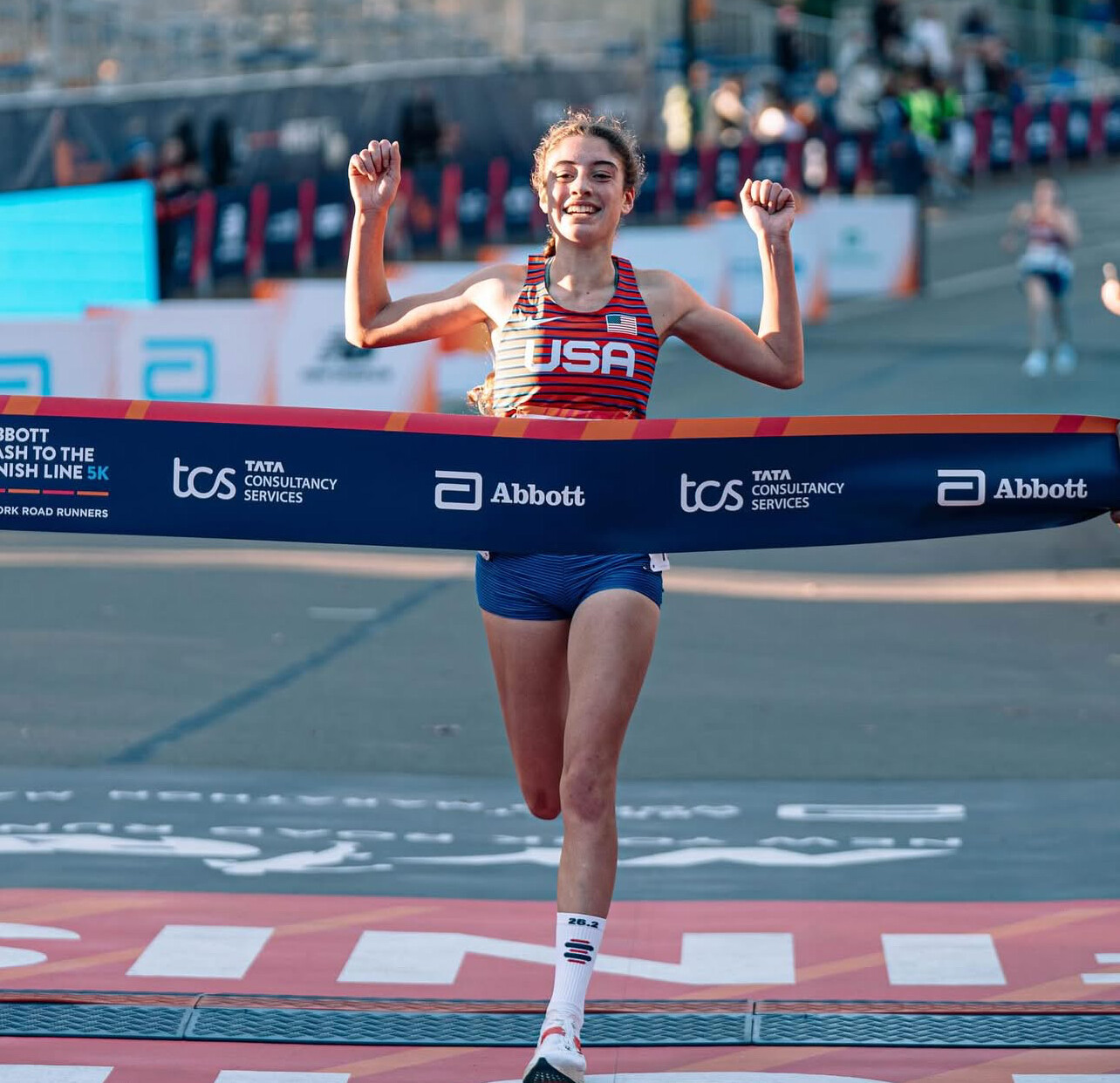
Beyond athletics, Zariel excels academically and was named the News 12/Bethpage Federal Credit Union Scholar Athlete of the Week. This prestigious accolade, awarded to only 30 student-athletes across Long Island during the 2024-25 school year, included a $1,000 scholarship.
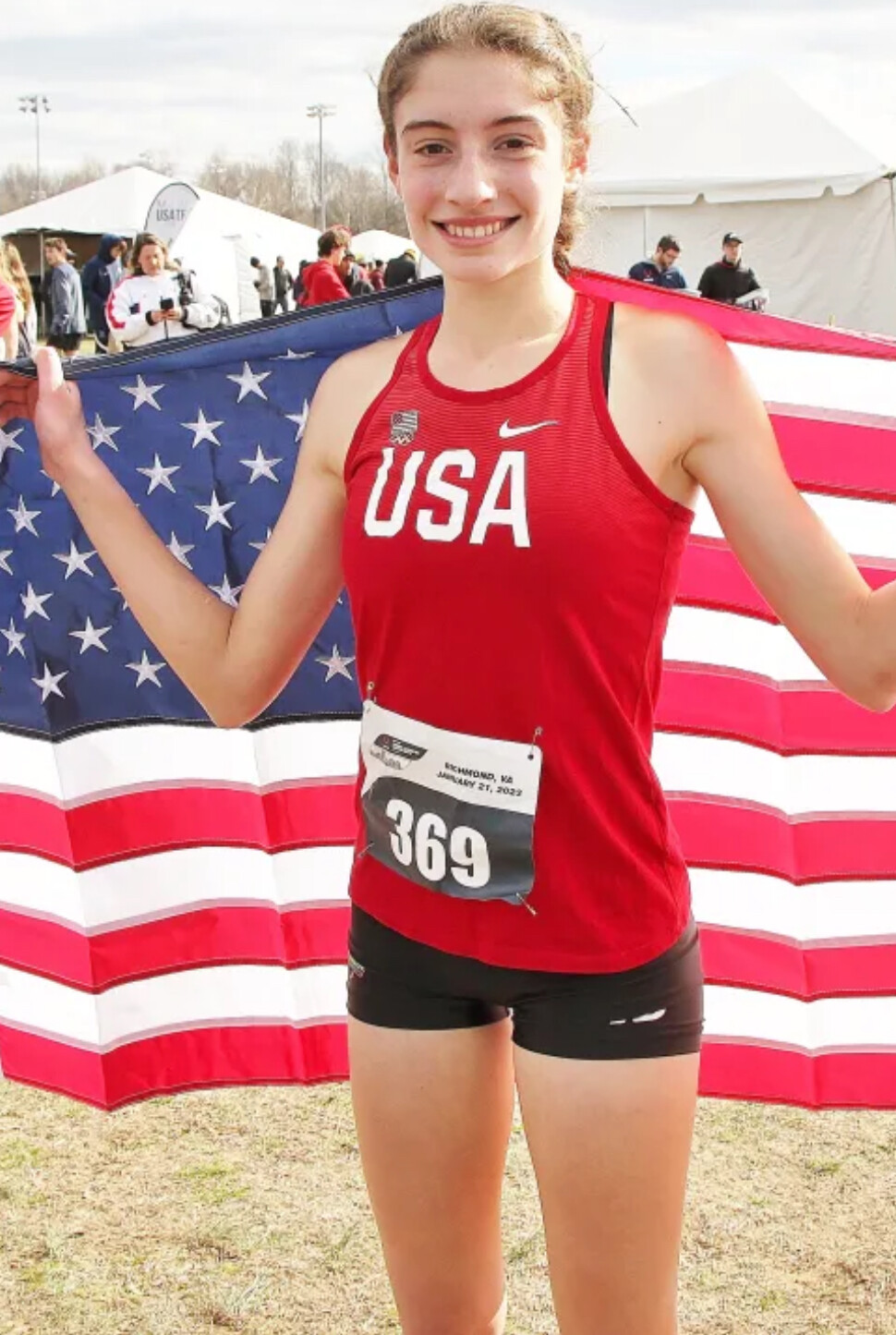
Macchia has also achieved numerous other milestones, including representing Team USA's U20 squad internationally, earning five All-American honors, and securing multiple state championships. She has twice been named Gatorade's New York Girls Cross-Country Player of the Year.
A well-rounded individual, Zariel maintains an A average, serves as captain of her school's science bowl team, and has contributed to her community by establishing an ecological center and tutoring peers. She is committed to balancing her academic and athletic pursuits as she prepares to run cross-country and track at Brigham Young University while pursuing a degree in electrical engineering.
Zariel Macchia'd dedication, work ethic, and remarkable achievements make her a rising star in the world of distance running and a role model for aspiring athletes.
by Boris Baron
Login to leave a comment
A look at Weini Kelati's New American Record at Aramco Houston Half Marathon
On January 19, 2025, Weini Kelati shattered her own American record at the Aramco Houston Half Marathon, finishing with a time of 1:06:09. This performance improved upon her previous record of 1:06:25, set at the same event in 2024.
Despite facing chilly and windy conditions, Kelati demonstrated exceptional endurance and speed. She maintained a consistent pace throughout the race, ultimately securing a second-place finish. Her remarkable time not only set a new American record but also highlighted her as one of the leading figures in U.S. distance running.
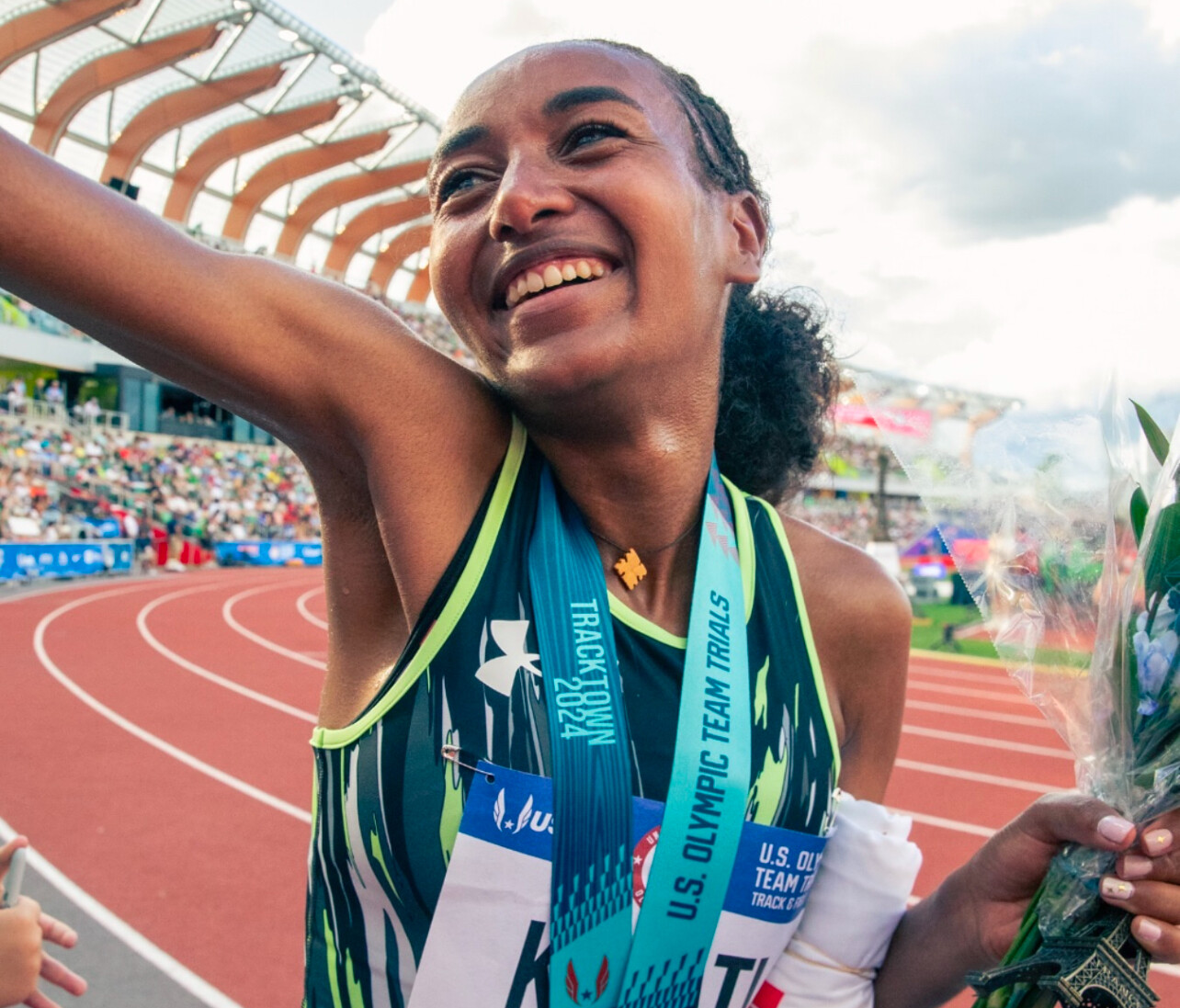
Background and Career Highlights
Born on December 1, 1996, in Eritrea, Kelati sought asylum in the United States in 2014 during the World Junior Championships in Oregon. She became a U.S. citizen on June 23, 2021, and has since represented the United States in various international competitions.
Kelati attended the University of New Mexico, where she had a standout collegiate career, including winning the NCAA Cross Country Championships. She turned professional in December 2020, foregoing her remaining NCAA eligibility.
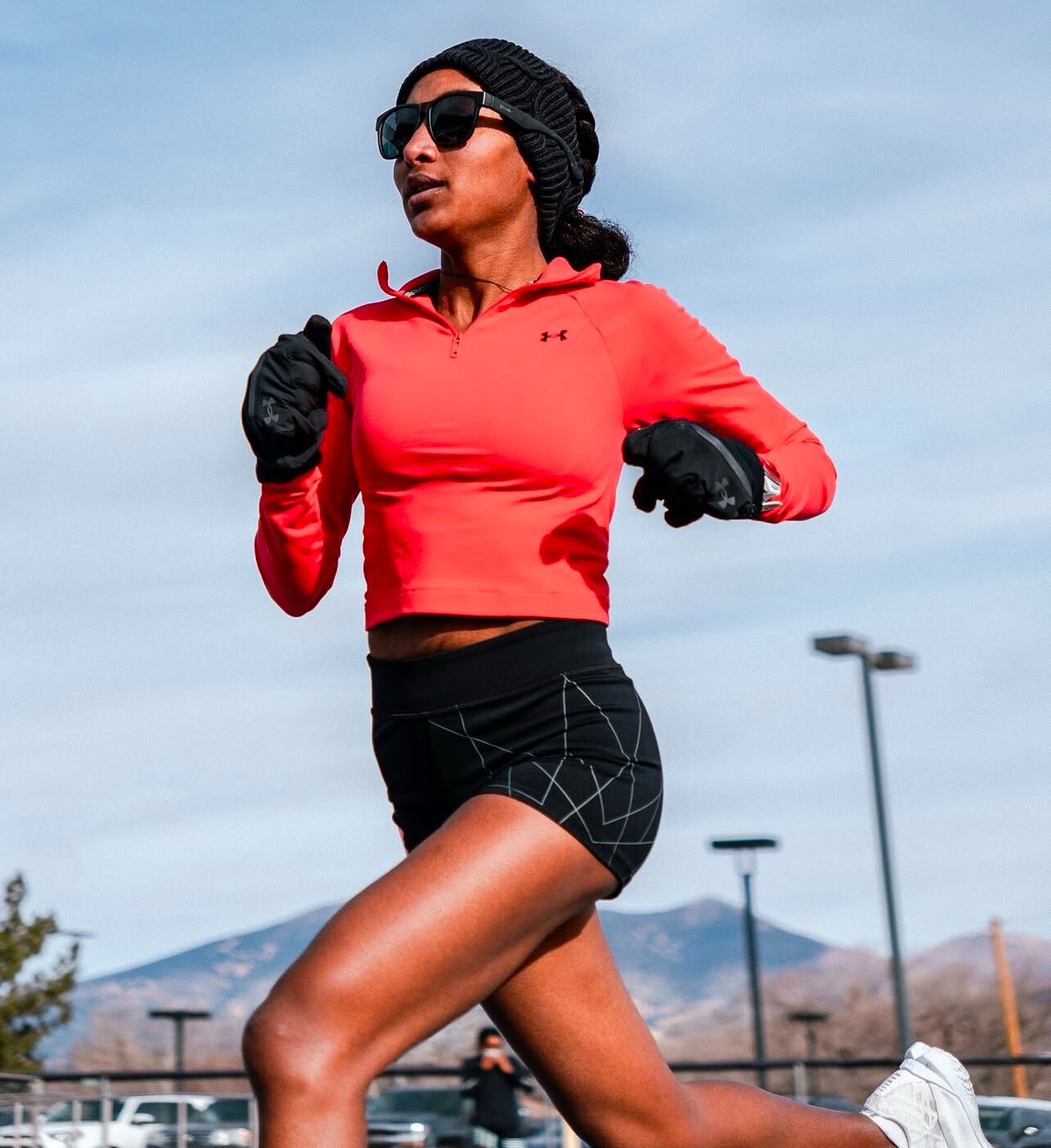
Recent Achievements
In addition to her half marathon success, Kelati has achieved significant milestones in recent years:
2024: She won the USATF 5K Road Championships, setting a course record of 15:18.
2024: Kelati represented the United States at the World Athletics Cross Country Championships in Belgrade, Serbia, finishing as the top American in 15th place.
2024: She qualified for the U.S. Olympic team in the 10,000 meters and competed at the Paris 2024 Olympics, finishing eighth.
Weini Kelati's continuous improvement and record-breaking performances position her as a formidable athlete on the international stage. As she builds upon her achievements, the running community eagerly anticipates her future endeavors and contributions to the sport.
by Boris Baron
Login to leave a comment
You Should Stop Showering Between Runs—and My 7 Other Running Rules for 2025
If you’ve been on social media lately, you might have seen your friends making in-and-out lists. It’s been a thing for a few years—maybe less-so now—but the idea is to come up with some trends that you think will be popular and unpopular.
The best ones are fun and off the top of the head. Some of the thought-out ones about culture are kind of annoying. (Yeah, everyone agrees that “being mean” is out in 2025.)
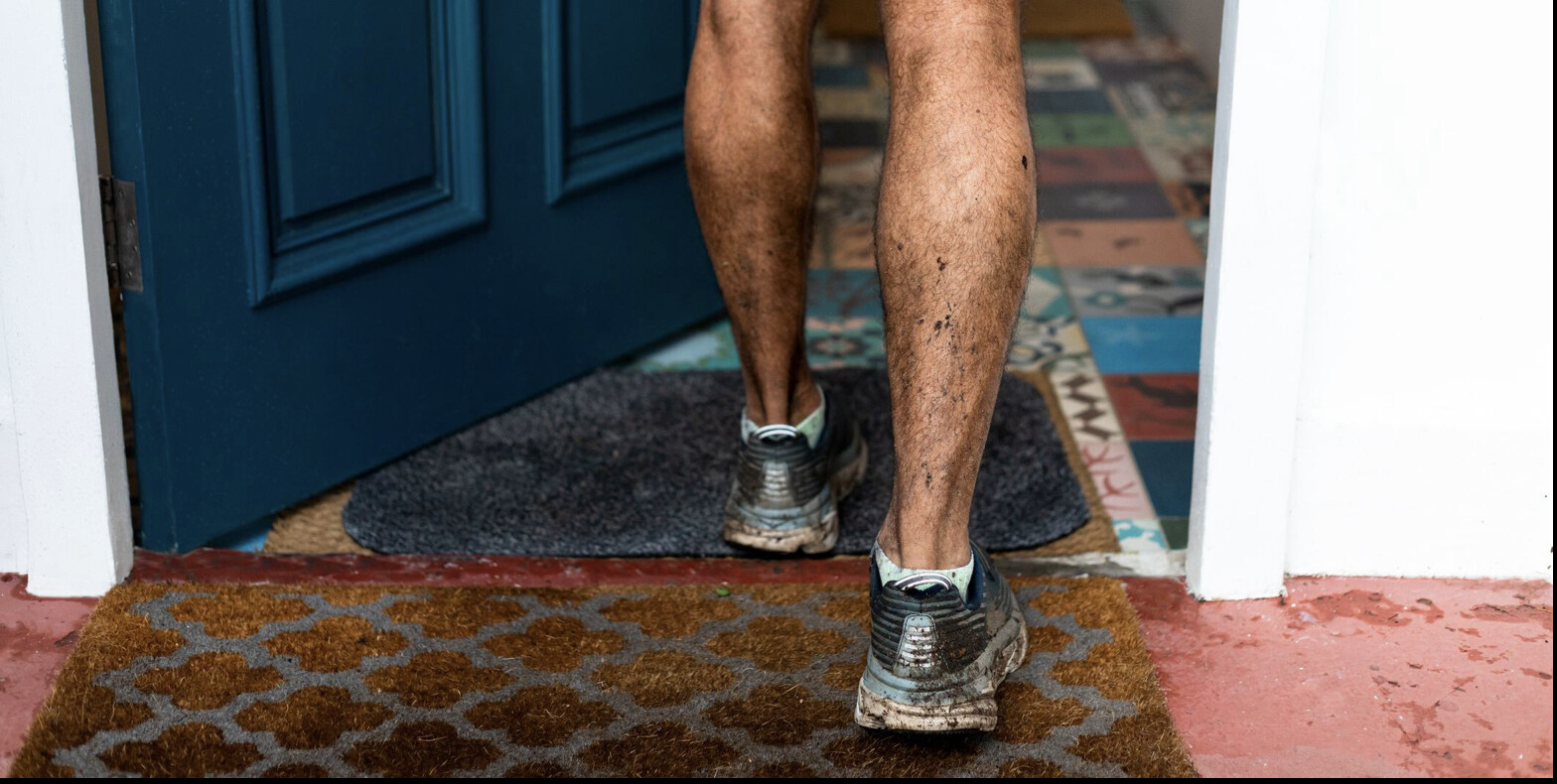
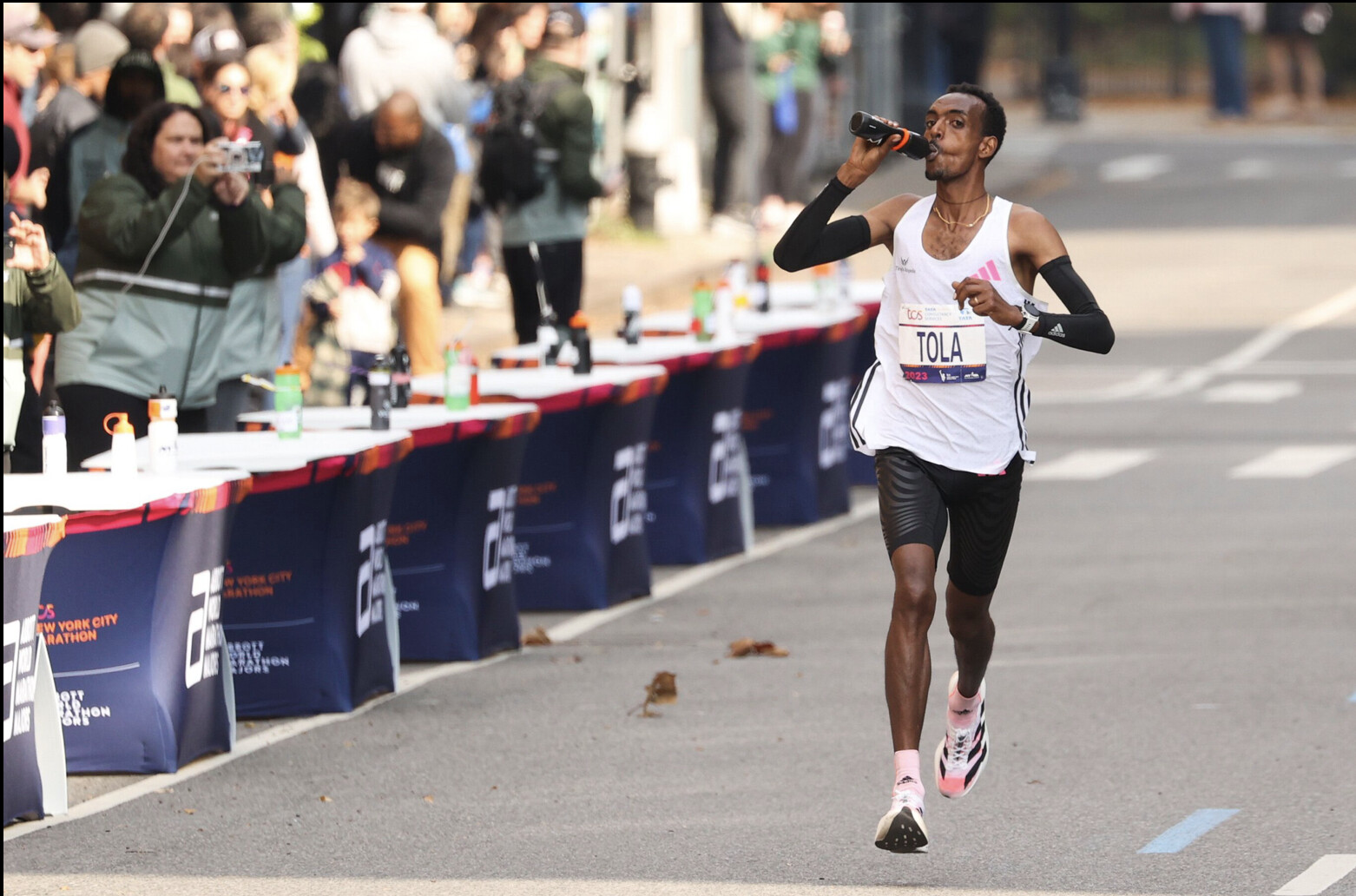
So I took the idea and applied it to my own running. Remember, these are specific to my experience. They’re not mandates or absolutes or even advice.
And at the end of the year, feel free to call me out if I was wrong. I probably was.
Out: Showering between runs
In a normal training week, I run twice a day on Wednesday and Thursday. Those are my recovery days, and I use them as a chance to get ahead on my weekly mileage. Usually, I run between 60 and 85 miles a week during marathon training, so to break it up, I’ll run once before work and then again during lunch or after work. Also known as “doubling.”
But that laundry piles up fast.
So on days when I work from home, sometimes I’ll put off my shower and stay in my workout clothes until my next run or weightlifting session. I live alone, so there’s no one to complain about my odor. (If you live with a roommate, partner, or family, use this strategy at your own risk.)
In: Wearing ugly race T-shirts
Remember the race T-shirts of the 2000s? The ones that looked like they were designed by a middle schooler and had no fewer than 1,000 ads on the back? I’ve gotten so many over the years, and most have gone straight to Goodwill or I’ve used them for yard work. But this year, I’d like to use my race T-shirts for their purpose—and run in them. There’s something fun about wearing an ill-fitting cotton tee with an ad for Jimbo’s Ford Dealership on the back.
Some races are pivoting away from shirts in favor of more environmentally friendly alternatives, but don’t expect them to completely disappear. According to Running USA, 58 percent of participants who took the 2024 Global Running Survey said that commemorative T-shirts are important to their race experience.
Out: Long runs
I’m planning on running Grandma’s Marathon in June, which means I’m building up my mileage now. But I’ve found that long runs are kind of overrated. Hear me out.
During my last marathon training block, I never ran more than 18 miles for my long run. Many programs call for 20 to 23-mile long runs, but my coach and I decided that 18-milers would get the job done. I’ve been running high mileage for close to a decade now, so I have a large aerobic base. The strategy worked, and I ran 2:27:07, hitting my goal of sub-2:28.
Right now, as I build, my coach and I are experimenting with the idea of downplaying the long run. Instead of using it as a key workout (for example, 10+ miles at marathon pace during the run), we’re focusing more on high-volume workouts twice a week, then using the long run just to get time on my feet. Similar to how Jakob Ingebrigtsen, who never runs more than 12.5 miles, trains.
A hard long run takes a large emotional and physical toll on my body, so I’ve found that I respond well when I keep the long run easy and focus on high-volume threshold sessions during the week. Of course, running on tired legs is key to running a good marathon. As I get closer to June, I’m sure there will be weeks where I use long runs as key workouts. But sometimes I need to remind myself that the other six days of the week are just as important.
In: Wearing a T-shirt over a long sleeve
For the past year, I’ve been mulling over buying a running vest. They look cool, but I keep telling myself that I don’t need to buy something that I’d probably only wear on a few runs each year. I live in eastern Pennsylvania, so I’m usually wearing something light in the fall or a full jacket in the winter. Enter, the working man’s vest: the T-shirt over the long sleeve shirt.
The sleeves keeps your arms warm while the T-shirt acts as a protectorate for your torso, insulating (not suffocating) you from the wind. Cooper Teare is a big fan.
Bonus points if you pair the look with an ugly race T-shirt. And double bonus points if you rock the look in a snowy race, like seemingly everyone did at the 2004 USATF Cross-Country Championships in Indianapolis.
In: Sunscreen
Man, I’m bad at this. If I’m preparing to sit out at the beach or pool, I lather up thoroughly. But if I’m heading out for a 90-minute run, I rarely put on sunscreen, justifying to myself that the route is shady or 90 minutes isn’t that long in the sun.
I’ve gotten better at sun protection—I almost always wear a hat and sunglasses year-round now—but I need to get better at lathering up on a regular basis. If you see me jogging this summer, ask me if I have sunscreen on and, if I don’t, shame me until I turn around and go home.
Out: Marathon bottle service
In my debut marathon at Indianapolis in November, I was lucky enough to qualify for the elite field, meaning I got perks like reserved restrooms, a separate warm-up area, and bottle service. For those unfamiliar, bottle service at a marathon is different from bottle service at a Las Vegas nightclub. Instead of access to marked-up Patrón, you get reserved spots on the course where you can stash your race fluid bottles.
Because there’s limited space, bottle stations are typically reserved for the fastest runners at a marathon. Instead of fumbling with the water or electrolyte-drink cups that the masses use, elites can consume whatever they trained with. In most cases, it’s some kind of carbohydrate mix.
At Indianapolis, there were three bottle stations: at miles 8, 14, and 20. I filled mine up with Maurten 160, but honestly, I didn’t feel like the perk was that necessary. I carried eight gels with me, taking them every 15 to 20 minutes, which was plenty. The bottles felt like more of a bonus or palate cleanser. They were cumbersome to hold and drink at race speed, and I found myself only taking a few sips then discarding them. Plus I had to pee the entire race, so I didn’t want to make the situation more dire.
Previously, I thought bottle service was non-negotiable to running a fast 26.2. But my mind has changed. If you envy the pros for their bottle access, don’t worry, you’re not missing out. Gels get the job done.
In: Off-distance races
I’m stealing this one from my 2024 in-and-out list. Off-distance races are events that diverge from traditional race distances (like the 5K, 10K, and marathon). Popular examples include the Bix 7 Road Race in Iowa (a 7-miler), the Boilermaker 15K in New York, and the Manchester Road Race in Connecticut (4.737 miles).
My favorite off-distance event is the Run for the Diamonds in Berwick, Pennsylvania. It’s a Thanksgiving day 9-miler that’s been going strong since 1908. The whole town comes out and cheers the runners up and down the massive hill that’s sandwiched in the middle of the route. Plus, the top seven men and women get real diamonds!
In: Short trail races
Speaking of race distances, let’s make short trail races a thing in 2025. Ultramarathons get most of the attention, but they’re not for everyone. At risk of contradicting myself against my previous “in,” there are plenty of trail options at the 5K, 10K, and half-marathon distance. Local state parks may host them, or sometimes there are running races tied in with mountain bike or cyclocross races. (Fifth Street ‘Cross in Pennsylvania does a great job of putting on both.)
I’d love to jump in a trail half marathon this summer between my two marathon training blocks. There won’t be any pressure to run a certain time, and let’s be real, running on the roads gets boring sometimes.
Login to leave a comment
'I'll be back in the 757!'-Quincy Wilson makes huge waves with emotional return announcement for 2025 season
Quincy Wilson is set to return to the track, announcing his first race since his Olympic triumph in Paris.
America's teenage sprint sensation Quincy Wilson has announced his highly anticipated return to the track, months after winning a gold medal at the Paris Olympics.

The 16-year-old athlete revealed that he will be making his first appearance at the VA Showcase in Virginia Beach, Virginia, marking a new chapter in his remarkable athletic journey.
Wilson, who skyrocketed to fame in the track world earlier this year, first caught the spotlight during the New Balance Nationals Indoor Championships.
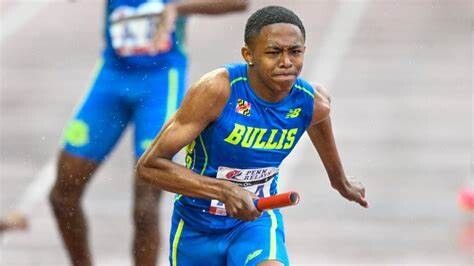
His performances throughout the season were nothing short of extraordinary, setting new personal bests in the 400m and establishing himself as one of the top junior athletes in the country.
Wilson made his mark at the U.S. Olympic Track and Field Trials, held at Hayward Field, where he captivated fans with his speed and determination.
"I'll be back in the 757!!" Wilson wrote on Instagram, announcing his return to competition.
His words stirred excitement among fans, as the VA Showcase will be his first race of 2025 and the track community is eager to see how he builds on his remarkable success.
Wilson's commitment to returning to the track after his historic Olympic achievement is a testament to his relentless pursuit of greatness.
At the U.S. Olympic Trials, Wilson made history by breaking the U18 400m World Record twice, stunning the track world with his incredible performances.
Despite finishing sixth in the finals, his efforts earned him a spot on the U.S. team for the 4x400m relay at the Paris Olympics.
There, the team claimed the gold medal, and Wilson became the youngest U.S. male athlete to win an Olympic gold in track and field.
Since the Olympics, Wilson has taken time to reflect on his journey, concluding his season and focusing on other aspects of his life, including college visits.
“I want to take a moment to speak to everyone out there who's faced doubt or fear. One of my most important lessons I've learned is to never ever doubt yourself. Believe in yourself. It's the foundation of everything, whether it's sports, life, or anything you pursue,” Wilson wrote, inspiring countless fans and aspiring athletes.
“There were many times when I didn’t know if I could make it, but I learned that if you trust yourself, keep working, and stay focused on your goals, the possibilities are endless,” he continued.
This empowering message resonated with many of his followers, reinforcing his belief in the importance of self-confidence and perseverance.
In recognition of his incredible accomplishments throughout 2024, Wilson was named the USATF Youth Athlete of the Year.
This prestigious award highlighted his growth as an athlete, his unwavering determination, and his contributions to U.S. track and field.
At the ceremony, he took the opportunity to express his gratitude, thanking his family, friends and coach for their continuous support.
by Festus Chuma
Login to leave a comment
California International Marathon is this weekend and defending champion CJ Albertson and Calli Hauger-Thackery headline the elite field
The 41st annual California International Marathon is this Sunday, Dec. 8 bringing some 10,000 runners and spectators to Folsom and the Sacramento region. Along with the many participants comes a number of road closures the day of the event.
The marathon begins at the intersection of Folsom Auburn Road and Folsom Lake Crossing at 7 a.m.The course continues through Orangevale, Citrus Heights, Fair Oaks, Carmichael, and Sacramento, and concludes at the State Capitol. Road closures include Folsom-Auburn Road from Folsom Dam Road to Greenback Lane, Folsom Lake Crossing Road from East Natoma Street to Folsom-Auburn Road, and Oak Avenue Parkway from Folsom-Auburn Road to Santa Juanita Avenue. Closures begin at 3 a.m. and roads are planned to reopen at 10 a.m. Detours will be clearly marked.
The CIM was founded in 1983 by the Sacramento Running Association, a 501(c)(3) nonprofit organization. The event brings an estimated 10 million dollar to the Sacramento County economy each year.The event is certified and sanctioned by USATF and is a Boston Marathon and U.S. Olympic Trials Marathon qualifier. Learn more at runsra.org. For a complete listing of road closures, schedules, and courses, visit the CIM website or see a summary at the conclusion of this article.
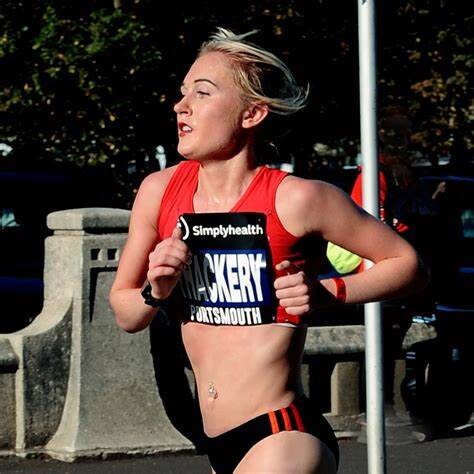
With good weather in the forecast, participants and organizers are excited about this year’s event and according to the Sacramento Running Association the event will feature 2024 Paris Olympian Calli Hauger-Thackery and defending 2023 CIM champion CJ Albertson, alongside a mix of returning veterans and first-time participants, setting the stage for potentially record-breaking performances.
The elite men’s and women’s fields will compete for a combined $100,000 prize purse, with additional bonuses for breaking course records. The current records stand at 2:10:27 for men, set in 1993 by Jerry Lawson, and 2:26:02 for women, set in 2022 by Paige (Stoner) Wood.
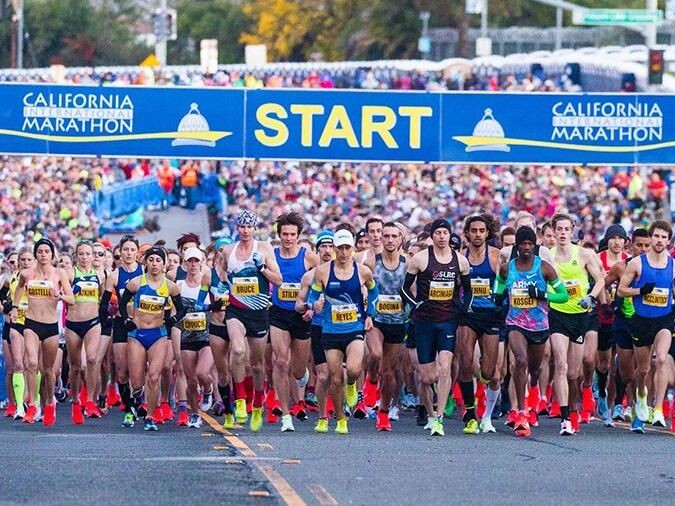
Hauger-Thackery, representing Great Britain at the 2024 Paris Olympics, holds the fastest personal best in the women’s field—2:21:24, achieved at the 2024 Berlin Marathon earlier this fall. She will make her CIM debut, joining her husband, 2:12 marathoner Nick Hauger, who is also competing.
“I’m excited to do this race for many reasons,” Hauger-Thackery said. “The main one being that my husband has had only fond experiences here over the past two years. I’m also excited because my dad raced CIM in the ’90s, and California is my favorite place! CIM has been on my radar for quite some time now.”
Hauger-Thackery will face stiff competition from four other women who have run sub-2:30 marathons: Laura Thweatt of Superior, Colo., with a personal best of 2:25:38; Jackie Gaughan of Boston, 2:27:08; Stephanie Bruce of Flagstaff, Ariz., 2:27:47; and Allie Kieffer of Austin, 2:28:12, who was the 2023 CIM runner-up.
Bruce returns to CIM with a strong record, having placed second in both the 2016 (2:32:36) and 2018 (2:29:21) editions. Since then, she has achieved milestones such as running her personal best of 2:27:47 at the 2019 Chicago Marathon and placing sixth at the 2020 U.S. Marathon Olympic Trials.
“Returning to CIM feels like an awesome homecoming because it was the first marathon I ran postpartum with my two boys in 2016,” Bruce said. “Now, eight years later, I’m coming back after giving birth to my third baby. I love the city, the energy, and the people who make this race so special.”
The men’s field includes three notable returners: defending champion CJ Albertson (Fresno, Calif.), 2023 runner-up Milton Rotich, and 2019 champion Elisha Barno. Joining them is CIM newcomer Tsegay Tuemay Weldlibanos, a 2:09:07 marathoner currently training in Flagstaff, Ariz., who is expected to push the pace.
“To race at CIM is very special for me,” Weldlibanos said. “Many of my teammates have found success here, and I hope to do the same. I want to make my family, team, and coach proud.”
Albertson has enjoyed a standout year, placing fifth at the 2024 U.S. Olympic Marathon Trials (2:10:07), seventh at the Boston Marathon (2:09:53) and Chicago Marathon (2:08:17), and tenth at the New York City Marathon (2:10:57). Another CIM victory will likely require a course record performance.
Barno, who won the 2019 CIM, has a personal best of 2:09:14. Rotich, last year’s runner-up, boasts a 2:08:55 personal best. Both are strong contenders to challenge Albertson and Weldlibanos for the win and the 2:10:27 course record.
“We’re thrilled about the 2024 elite field at CIM,” said Scott Abbott, executive director of the Sacramento Running Association. “This year has a unique homecoming feel, with so many ‘CIM alumni’ returning. It’s further evidence that CIM is a favorite among elite runners. We expect a strategic race between these battle-tested veterans, and we hope to see both course records fall.”
The Sacramento Running Association, a nonprofit organization, is dedicated to encouraging people of all ages and abilities to run. The SRA focuses on developing quality running events that appeal to a wide range of participants.
by Alan Inderkane
Login to leave a comment
California International Marathon
The California International Marathon (CIM) is a marathon organized by runners, for runners! CIM was founded in 1983 by the Sacramento Running Association (SRA), a 501(c)(3) non-profit organization. The SRA Board of Directors is comprised of runners with a combined total of 150+ years of service to the CIM. The same route SRA management created for the 1983 inaugural CIM...
more...Mary Moraa 'back to the grind' ahead of tough 2025 season
Mary Moraa has resumed training as she plans to defend her world title amid the rise of strong 800m runners including Keely Hodgkinson and Athing Mu.
Mary Moraa has resumed training ahead of a tough 2025 season where she has a huge task of defending her world title at the World Championships in Tokyo, Japan.
The reigning world champion will battle for the title alongside very formidable 800m runners who have emerged this season. The Commonwealth Games champion lines up against Keely Hodgkinson, Tsige Duguma and Athing Mu alongside other 800m athletes.
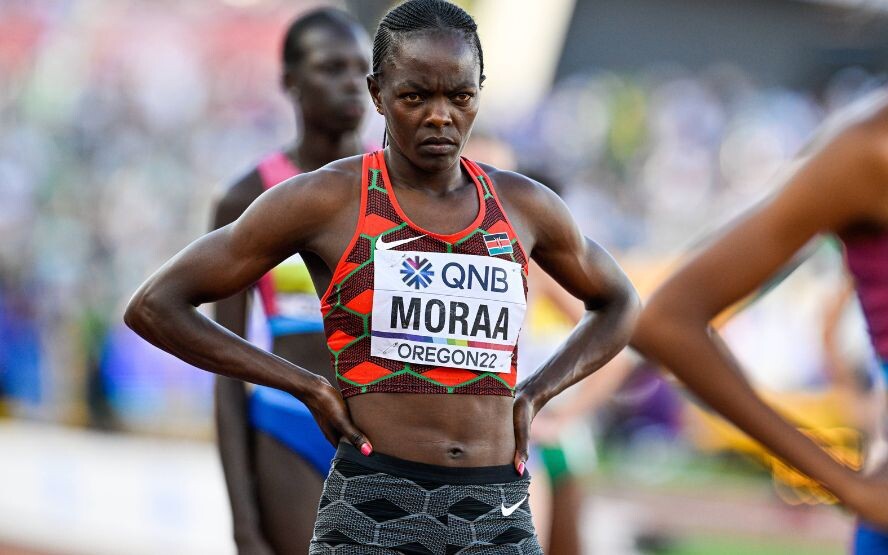
Mary Moraa had a mixed season this year and she will be looking to work on the finer things so as to be ready next season. She was off to a great start to her season, winning the 400m at the African Games then anchored the 4x400m mixed relay team to a bronze medal.
The Kenyan 800m star then proceeded to claim the win at the Kip Keino Classic before reigning supreme at the Diamond League Meeting in Doha and finished second at the USATF Los Angeles Grand Prix and Prefontaine Classic.
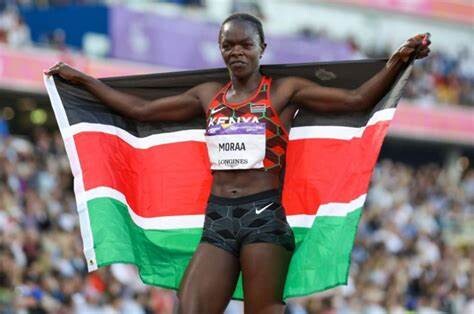
Moraa then finished second at the Kenyan Olympic trials and then won the bronze medal at the Paris Olympics. She bounced back to take the win at the Diamond League Meeting in Lausanne and finished third in Silesia. She won the 600m in a world best time at the ISTAF 2024 and then claimed wins in Zurich and the Diamond League Meeting final in Brussels.
Mary Moraa rounded up her season with a second-place finish at the Athlos NYC. Going back into training, she hopes to polish a lot of things and bounce back stronger to maintain a winning streak in 2025.
“It's about time...back to the grind ?,” Mary Moraa shared in a post on her Facebook page, adding, “Nice morning cruise with Brandon and the gang after a deserved break.”
Her competitors are also not resting on their laurels with Keely Hodgkinson, the reigning Olympic champion, making it clear that she will be going for the world title since it’s one of the titles she has yet to win.
Her coaches, Jenny Meadows and Trevor Painter have also revealed that she will be attacking both the indoor and outdoor world records in the near future.
“There’s no silvers and bronzes, now we have to do gold all the way forward, we don’t want to take any backward step and I just hopefully think that Keely can dominate and we’ve got the indoor world record to go at and in the next couple of years we’ll go after the tough world record. I think she can do it,” Jenny Meadows said.
“If she’s got the leg speed to get closer to her rivals, then they can’t out strength her so it was magic. The indoor one is easier to get than the outdoor but we’ll have a crack of both and see what happens,” Trevor Painter added.
On her part, after a heartbreaking 2024 season marred with injuries and missing out on the Paris Olympic Games, Athing Mu has already started preparation for the 2025 season.
The former world champion noted that the World Championships are her major target for the season and she is working towards making it through the trials and then heading to Tokyo.
“Well, trackwise we have the World Championships in September next year and it’s in Tokyo…first of all I pray we make it through trials and then we make it to that race,” Athing Mu said.
“I feel like it’s going to be a circle moment for me because that’s basically where I started and then I had some highs and lows.”
by Abigael Wafula
Login to leave a comment
'I wouldn't say we are friends' - Olympic champion Noah Lyles opens up on heated rivalry with Christian Coleman
Olympic champion Noah Lyles has shed new light onto his relationship with fierce rival Christian Coleman in new Netflix docuseries SPRINT.
Olympic champion Noah Lyles has opened up about his relationship with fierce sprinting rival, Christian Coleman revealing a complex dynamic between the two competitors in the recent Netflix docuseries Sprint.
The reigning 100m champion spoke candidly about his relationship with Christian Coleman, his sprinting counterpart, explaining that they have a mutual respect but little friendship.
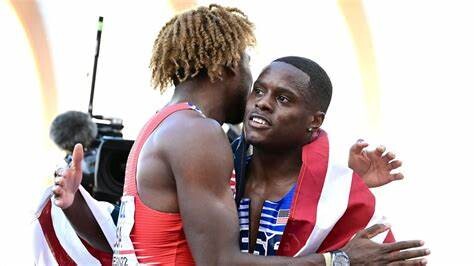
"I came more to his playground than he came into mine. His main event was the 100m, and mine was the 200m," Lyles said, underscoring their different specialties within track.
The two sprinters have crossed paths frequently in recent seasons, but, as Lyles clarified, "I wouldn't say we are friends."
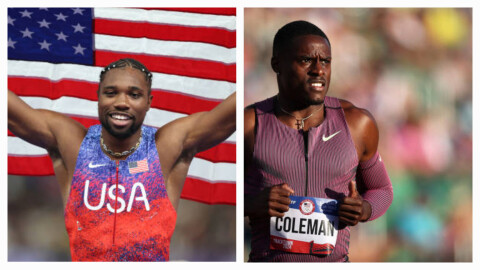
This rivalry between Lyles and Coleman has become one of the most exciting storylines in track and field over the past year.
Their head-to-head battles in the shorter 60m indoor races have been especially thrilling, with each trading wins and losses.
The two faced off at marquee events like the USATF Indoor Championships and the World Indoor Championships, both showcasing their world-class talent and fueling their rivalry.
However, Lyles’s performance at the 2024 Paris Olympics has shifted the dynamic.
Lyles clocked an impressive 9.79 seconds in the 100m final, securing the title of the world's fastest man.
Coleman had to watch from home as one of his fiercest rival got his crowning moment in an event that he missed out on altogether.
This achievement not only marked a career-defining moment for Lyles but also established him as the man to beat heading into the 2025 season.
With Lyles’s recent success and Coleman’s absence from the Olympic stage, the coming season may mark a new chapter in their rivalry with fans eager to see whether Coleman will reclaim his place among sprinting’s elite or if Lyles will continue his reign unchallenged.
For now, Lyles holds the upper hand, and the tension between the two sprinting titans shows no sign of slowing down.
by Stephen Awino
Login to leave a comment
Joe Klecker Plans His Half Marathon Debut
In a live recording of The CITIUS MAG Podcast in New York City, U.S. Olympian Joe Klecker confirmed that he is training for his half marathon debut in early 2025. He did not specify which race but signs point toward the Houston Half Marathon on Jan. 19th.
“We’re kind of on this journey to the marathon,” Klecker said on the Citizens Bank Stage at the 2024 TCS New York City Marathon Expo. “The next logical step is a half marathon. That will be in the new year. We don’t know exactly where yet but we want to go attack a half marathon. That’s what all the training is focused on and that’s why it’s been so fun. Not that the training is easy but it’s the training that comes the most naturally to me.”
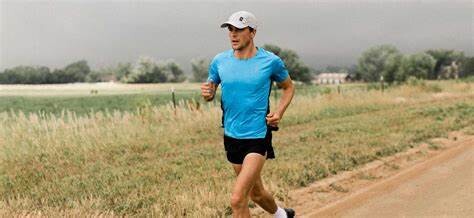
Klecker owns personal bests of 12:54.99 for 5000m and 27:07.57 for 10,000m. In his lone outdoor track race of 2024, he ran 27:09.29 at Sound Running’s The Ten in March and missed the Olympic qualifying standard of 27:00.00.
His training style and genes (his mother Janis competed at the 1992 Summer Olympics in the marathon and won two U.S. marathon national championships in her career; and his father Barney previously held the U.S. 50-mile ultramarathon record) have always linked Klecker to great marathoning potential. For this year’s TCS New York City Marathon, the New York Road Runners had Klecker riding in the men’s lead truck so he could get a front-row glimpse at the race and the course, if he chooses to make his debut there or race in the near future.

The Comeback From Injury
In late May, Klecker announced he would not be able to run at the U.S. Olympic Track and Field Trials in June due to his recovery from a torn adductor earlier in the season, which ended his hopes of qualifying for a second U.S. Olympic team. He spent much of April cross training and running on the Boost microgravity treadmill at a lower percentage of his body weight.
“The process of coming back has been so smooth,” Klecker says. “A lot of that is just because it’s been all at the pace of my health. I haven’t been thinking like, ‘Oh I need to be at this level of fitness in two weeks to be on track for my goals.’ If my body is ready to go, we’re going to keep progressing. If it’s not ready to go, we’re going to pull back a little bit. That approach is what helped me get through this injury.”
One More Track Season
Klecker is not fully prepared to bid adieu to the track. He plans to chase the qualifying standard for the 10,000 meters and attempt to qualify for the 2025 World Championships in Tokyo. In 2022, after World Athletics announced Tokyo as the 2025 host city, he told coach Dathan Ritzenhein that he wanted the opportunity to race at Japan National Stadium with full crowds.
“I’m so happy with what I’ve done on the track that if I can make one more team, I’ll be so happy,” Klecker says. “Doing four more years of this training, I don’t know if I can stay healthy to be at the level I want to be. One more team on the track would just be like a dream.”
Klecker is also considering doubling up with global championships and could look to qualify for the 2025 World Road Running Championships, which will be held Sept. 26th to 28th in San Diego. To make the team, Klecker would have to race at the Atlanta Half Marathon on Sunday, March 2nd, which also serves as the U.S. Half Marathon Championships. The top three men and women will qualify for Worlds. One spot on Team USA will be offered via World Ranking.
Sound Running’s The Ten, one of the few fast opportunities to chase the 10,000m qualifying standard on the track, will be held on March 29th in San Juan Capistrano.
Thoughts on Ryan Hall’s American Record
The American record in the half marathon remains Ryan Hall’s 59:43 set in Houston on Jan. 14th, 2007. Two-time Olympic medalist Galen Rupp (59:47 at the 2018 Prague Half) and two-time U.S. Olympian Leonard Korir (59:52 at the 2017 New Dehli Half) are the only other Americans to break 60 minutes.
In the last three years, only Biya Simbassa (60:37 at the 2022 Valencia Half), Kirubel Erassa (60:44 at the 2022 Houston Half), Diego Estrada (60:49 at the 2024 Houston Half) and Conner Mantz (60:55 at the 2021 USATF Half Marathon Championships) have even dipped under 61 minutes.
On a global scale, Nineteen of the top 20 times half marathon performances in history have come since the pandemic. They have all been run by athletes from Kenyan, Uganda, and Ethiopia, who have gone to races in Valencia (Spain), Lisbon (Portugal), Ras Al Khaimah (UAE), or Copenhagen (Denmark), and the top Americans tend to pass on those races due to a lack of appearance fees or a stronger focus on domestic fall marathons.
Houston in January may be the fastest opportunity for a half marathon outside of the track season, which can run from March to September for 10,000m specialists.
“I think the record has stood for so long because it is such a fast record but we’re seeing these times drop like crazy,” Klecker says. “I think it’s a matter of time before it goes. Dathan (Ritzenhein) has run 60:00 so he has a pretty good barometer of what it takes to be in that fitness. Listening to him has been really good to let me know if that’s a realistic possibility and I think it is. That’s a goal of mine. I’m not there right now but I’m not racing a half marathon until the new year. I think we can get there to attempt it. A lot has to go right to get a record like that but just the idea of going for it is so motivating in training.”
His teammate, training partner, and Olympic marathon bronze medalist Hellen Obiri has full confidence in Klecker’s potential.
“He has been so amazing for training,” Obiri said in the days leading up to her runner-up finish at the New York City Marathon. “I think he can do the American record.”
by Chris Chavez
Login to leave a comment
Aramco Houston Half Marathon
The Chevron Houston Marathon provides runners with a one-of-a-kind experience in the vibrant and dynamic setting of America's fourth-largest city. Renowned for its fast, flat, and scenic single-loop course, the race has earned accolades as the "fastest winter marathon" and the "second fastest marathon overall," according to the Ultimate Guide to Marathons. It’s a perfect opportunity for both elite athletes...
more...Morgan Beadlescomb Withdraws From Manchester Road Race
Just hours after Manchester Road Race officials announced that Morgan Beadlescomb was set to defend his title, the elite runner withdrew from the 2024 field.
Race officials said Beadlescomb had committed to compete in Manchester several weeks ago, and his entry was announced by race organizers Monday. He notified the Manchester Road Race Committee later on Monday about his decision not to compete in this year's event.
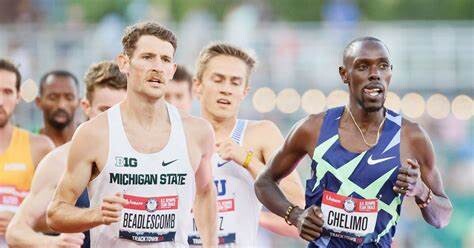
The 26-year-old Beadlescomb ran in the USATF 5-Kilometer Championship in New York City on Saturday and finished in 10th place. He won that race in 2023.
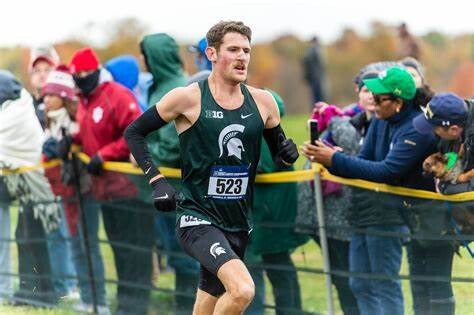
"We've been informed that Morgan consulted with his coach after Saturday's performance at the national 5-K race, and they decided that he would not be able to compete at the required level to give a good showing in Manchester," said Dr, Tris Carta, the longtime president of the Manchester Road Race. "We’ll certainly miss having him with us this Thanksgiving, and we hope that he’ll be back here in the near future."
Beadlescomb, an All-American runner at Michigan State University, won the 2023 MRR in a close race with runner-up Conner Mantz. A year earlier, he finished a close second here behind Mantz, who set the MRR course record of 21:04. Beadlescomb recorded 21:05, the second fastest time ever run on the Manchester course.
by Chris Dehnel
Login to leave a comment
Manchester Road Race
The Manchester Road race is one of New England’s oldest and most popular road races. The 86th Manchester Road Race will be held on Thanksgiving Day. It starts and finishes on Main Street, in front of St. James Church. The Connecticut Sports Writers’ Alliance recently honored the Manchester Road Race. The CSWA, which is comprised of sports journalists and broadcasters...
more...2024 USATF 5K: Ahmed Muhumed And Annie Rodenfels Win
Annie Rodenfels went back-to-back while Ahmed Muhumed claimed his second US title of the year at the 2024 USATF 5K Road Championships on Saturday morning in Central Park. Rodenfels, who runs for the B.A.A. High Performance Team, broke away from Emily Venters and Emma Grace Hurley in the final mile to win in 15:20.
Muhumed, who won the US 8k road title in July and was the runner-up here last year, dropped the field with a hard move at 2 miles and held off a late charge from Sam Prakel to win in 13:38 to Prakel’s 13:39.
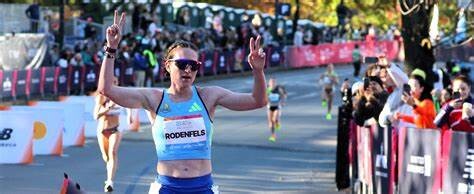
Top 10 results
Men
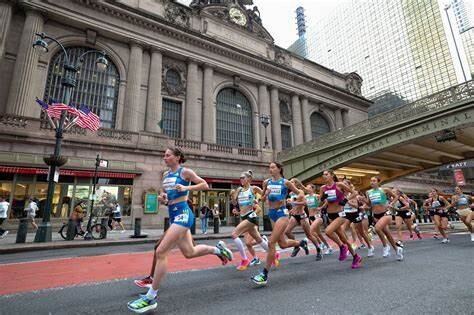
1. Ahmed Muhumed, HOKA NAZ Elite 13:38
2. Sam Prakel, adidas 13:39
3. Brian Barraza, Roots Running Project 13:42
4. Kirubel Erassa, unattached 13:44
5. Hillary Bor, HOKA One One 13:45
6. Anthony Rotich, US Army 13:48
7. Drew Bosley, unattached 13:49
8. Afewerki Zeru, McKirdy Trained 13:52
9. Abbabiya Simbassa, Under Armour 13:57
10. Morgan Beadlescomb, adidas 13:59
Women
1. Annie Rodenfels, B.A.A. 15:20
2. Emily Venters, Nike 15:25
3. Emma Grace Hurley, Asics 15:31
4. Bailey Hertenstein, Nike 15:32
5. Susanna Sullivan, Brooks 15:36
6. Abby Nichols, HOKA NAZ Elite 15:41
7. Paige Wood, HOKA NAZ Elite 15:41
8. Taylor Roe, Puma 15:43
9. Natosha Rogers, Puma 15:45
10. Molly Born, Puma 15:47
by Jonathan Gault
Login to leave a comment
Dash to the Finish Line
Be a part of the world-famous TCS New York City Marathon excitement, run through the streets of Manhattan, and finish at the famed Marathon finish line in Central Park—without running 26.2 miles! On TCS New York City Marathon Saturday, our NYRR Dash to the Finish Line 5K (3.1 miles) will take place for all runners who want to join in...
more...Defending champions Morgan Beadlescomb and Annie Rodenfels return to the Abbott Dash to the Finish Line 5k
New York City Marathon weekend kicks off with a much-anticipated USATF 5 km Championships at the Abbott Dash to the Finish Line 5k on Saturday, November 2, taking place the day before the 53rd running of the TCS New York City Marathon.
The USATF 5 km Championships at the Abbott Dash to the Finish Line 5k are the 11th stop on the 2024 USATF Running Circuit. Live coverage of this year’s championships will be broadcast on USATF.TV, starting at 8:20 a.m. ET, with the men’s race going off at 8:30 a.m. and the women starting five minutes after at 8:35 a.m.
Defending champions Morgan Beadlescomb and Annie Rodenfels return to the streets of Midtown Manhattan after winning last year’s USATF 5km Championships in their respective races.
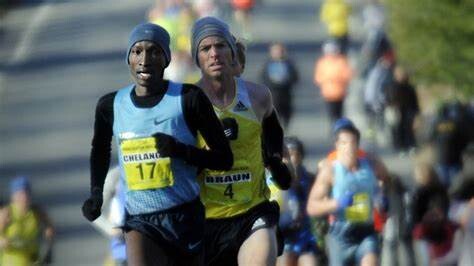
The former Michigan State Spartan Beadlescomb surged away from Ahmed Muhumed, Tai Dinger and Daniel Schaffer in the final stretch to win last year’s men’s title in 13:44, besting the field by a comfortable three seconds to claim his first USATF crown.
Looking to become the first men’s repeat champion since Ben True in 2011-12 when the USATF 5 km Championships were held in Providence, R.I., Beadlescomb will take on another tough field that will feature Muhumed (second), Schaffer (fourth) and Brian Barazza (fifth) from last year’s race, as well as a handful of others with impressive credentials.
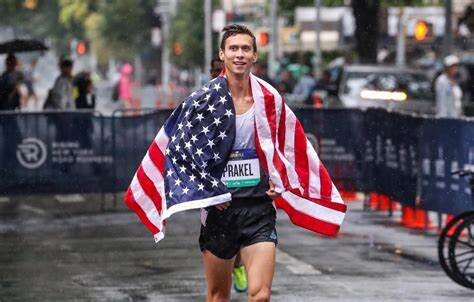
Beadlescomb could also become the first male athlete to win two USATF 5 km Championships titles at the Abbott Dash to the Finish Line 5k course, along with 2019 USATF 5 km champion Anthony Rotich making his way back into the field for the first time since winning the 2019 title.
Muhumed is the only competitor in the field that has won a USATF title this year on the USATF Running Circuit, winning the USATF 8 km Championships back in July in Kingsport, Tennessee. The USATF 8 km Championships were also the last time Muhumed raced this year.
Sam Chelanga, Sam Prakel and Josh Thompson join Beadlescomb, Rotich and Muhumed as three more USATF national champions set to race, bringing the total to six national champions in Saturday’s field.
Chelanga, a two-time USATF champion, will go after his first USATF national title since 2016 when he won the USATF 10 Mile title. He’s raced twice this season on the USATF Running Circuit, finishing third at the USATF 10 km Championships and fourth at the USATF 20 km Championships.
Prakel, the 2023 USATF Road Mile champion, and Thompson, the 2020 USATF Indoor 1500 champion, are both eyeing a second national title of their own.
Parlympian and New York native Michael Brannigan is slated to race after competing for the United States at the 2024 Paris Paralympic Games, where he came away with his second Parlympic medal in the men’s T20 1500, earning bronze to go with his 2016 gold from the Rio Games.
Derek Johnson, Titus Winder and Kirubel Erassa will be other names to watch out for in the men’s race.
Rodenfels earned her first USATF national title by defeating Rachel Smith by four seconds in last year’s women’s race, running 15:22.
Rodenfels has since won another USATF national title earlier this season, winning the 2024 USATF 6 km Championship race by 13 seconds on July 13 in Canton, Ohio.
With a win on Saturday, Rodenfels could join Weini Kelati as the only competitors to repeat as USATF 5 km champions at the Abbott Dash to the Finish Line 5k course and the sixth woman to complete consecutive national titles in the history of the USATF 5 km Championships.
Challenging Rodenfels will be Emma Grace Hurley, who will be racing in her seventh USATF Running Circuit race this year, with her latest effort being a third-place finish at the USATF 10 km Championships in Northport, New York, on September 21.
Hurley, who was ninth at last year’s USATF 5 km Championships, has finished as high as second place in two USATF Running Circuit races this year at the USATF 8 km Championships and the USATF Cross Country Championships.
Susanna Sullivan and Natosha Rogers are a pair of veterans coming off great races in their recent outings looking to mix it up in the top half of the field.
Sullivan completed this year’s Chicago Marathon as the top American, running a lifetime best of 2:21:56 to finish seventh overall, making her the 10th-fastest American marathoner in history.
Rogers won the Medtronic Twin Cities 10 Mile in St. Paul/Minneapolis, Minnesota, on October 6, in 52:29 just two weeks after finishing second at the USATF 10 km Championships.
Logan Jolly, Cailie Logue and Elena Hayday are other competitors entered in this year’s USATF 5 km Championships with past results on this year’s USATF Running Circuit.
2023 Cross Country champion Katie Wasserman adds some intrigue to the field, running in her first road race since 2022.
About the USATF Running Circuit
The USATF Running Circuit is a USATF road series featuring USATF championships from one mile through marathon and consistently attracts the best American distance runners with more than $500,000 awarded in total prize money. A total of $60,000 in prize money will be awarded at the USATF 5 km Championships.
The first ten U.S. runners earn points at each USATF Running Circuit race. For the USATF 5 km Championships, scoring is set as 15 for first, 12 for second, 10 for third, 7, 6, 5, 4, 3, 2, and 1, with those earning the most points receiving prize money at the end of the series.
The mission of the USATF Running Circuit is to showcase, support and promote U.S. runners. Since its inception in 1995, the USATF Running Circuit and its race have provided over $7 million to U.S. Distance runners.
by Keenan Gray
Login to leave a comment
Dash to the Finish Line
Be a part of the world-famous TCS New York City Marathon excitement, run through the streets of Manhattan, and finish at the famed Marathon finish line in Central Park—without running 26.2 miles! On TCS New York City Marathon Saturday, our NYRR Dash to the Finish Line 5K (3.1 miles) will take place for all runners who want to join in...
more...Jessica McClain And Biya Simbassa Capture USATF Road Titles At Great Cow Harbor 10k
That’s what Jessica McClain shouted as she broke the tape at the Great Cow Harbor 10-K here this morning where she won her first-ever national title. The 32 year-old from Phoenix, who finished fourth at the 2024 USA Olympic Team Trials Women’s Marathon last February, stopped the clock at 31:40, a new course record by 13 seconds.
She’ll leave this picturesque seaside town on Long Island with total race winnings of $10,500: $8,000 for first place and $2,500 for setting a new course record. Her time was also a championships record, bettering Marla Runyan’s 2002 mark of 31:46 set in Boston.
“It was so fun,” an elated McClain told Race Results Weekly just after finishing. “I was literally out here just to race and have a good time before New York (City Marathon), and the motivation now is just head-down training, staying in Phoenix the next six weeks.”
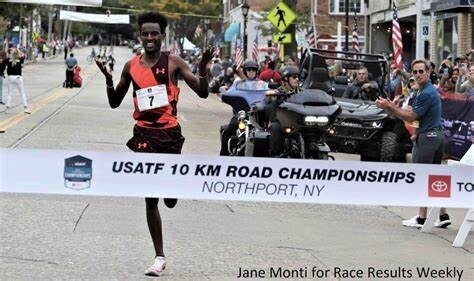
McClain was part of a strong lead pack in the first mile which included Natosha Rogers, Erika Kemp, Emma Grace Hurley, and Amanda Vestri. Keira D’Amato, Annie Rodenfels, and Katie Izzo ran together about six seconds back. The quintet ascended the steep James Street Hill in the second mile, then ran together towards the 5-K mark, unable to appreciate the breathtaking views of Northport Harbor to their left. Rogers got the $500 5-K prime, but McClain held back. She was thinking instead about the overall title.
“I knew some of the women would be motivated by the 5-K bonus,” McClain explained. “So I was like, just tune-out and stay in the mix until then, and then just feel it out. When I felt comfortable enough, make a move and make it definitive.”
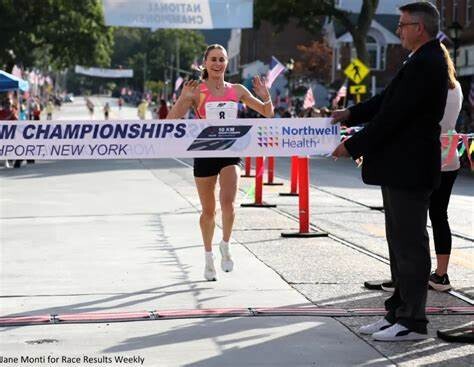
Her legs full of strength from marathon training, McClain pulled away in the fourth mile. She ran the mostly downhill second half of the race in a snappy 15:42, much faster than the second-place Rogers (16:03). Spurred on by the hundreds of spectators who lined both sides of the course, the Brooks-sponsored athlete sailed to the finish line on Main Street alone. She was particularly pleased with her tactics today.
“I’ve been really bad about getting out and making half-assed moves,” McClain admitted with a chuckle. “I was really trying to get to a point where I was antsy and just go.”
Despite suffering from a badly upset stomach in the final mile, Rogers was a clear second in 32:00. Hurley, the overall leader in the USATF Running Circuit points race, took third in 32:05 and Kemp, who won here in 2021, got fourth in 32:10. D’Amato, who will run the Bank of America Chicago Marathon in three weeks, completed the top-5 in 32:13.
Her legs full of strength from marathon training, McClain pulled away in the fourth mile. She ran the mostly downhill second half of the race in a snappy 15:42, much faster than the second-place Rogers (16:03). Spurred on by the hundreds of spectators who lined both sides of the course, the Brooks-sponsored athlete sailed to the finish line on Main Street alone. She was particularly pleased with her tactics today.
“I’ve been really bad about getting out and making half-assed moves,” McClain admitted with a chuckle. “I was really trying to get to a point where I was antsy and just go.”
Despite suffering from a badly upset stomach in the final mile, Rogers was a clear second in 32:00. Hurley, the overall leader in the USATF Running Circuit points race, took third in 32:05 and Kemp, who won here in 2021, got fourth in 32:10. D’Amato, who will run the Bank of America Chicago Marathon in three weeks, completed the top-5 in 32:13.
by David Monti
Login to leave a comment
Great Cow Harbor 10K
One of the Most Prestigious 10K Races in the Country Background The Great Cow Harbor 10K Run has been designated as the 2024 USA Track & Field National 10K Championship. Runner's World has named the Great Cow Harbor 10K Run as one of the top 100 races in the US, and New England Runner regularly places it in its Top...
more...Hillary Bor sets national record at the New Haven 20K, Keira D’Amato wins women’s race
Two-time Olympian Hillary Bor fell in the U.S. Olympic Trials in the steeplechase and did not make it to Paris.
Neither did Keira D’Amato, who dropped out of the Olympic Marathon Trials after running with
Hilary Bor and Keira D'Amato won USATF national titles in the 20K Monday by winning the men's and women's races at the 47th Faxon Law New Haven Road Race.Bor finished the 20K (12.4 miles) race in 58 minutes, 9 seconds, while D'Amato crossed the finish line in 1:06:25.
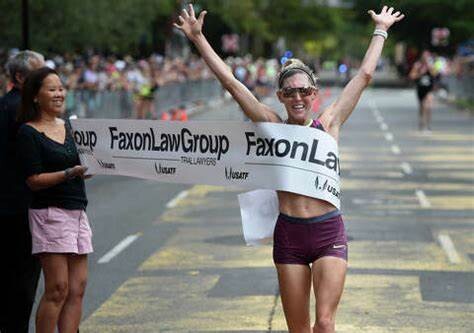
Bor's time set the national championship record. He pulled away from Nathan Martin (58:26), Biya Simbassa (59:29) and Aidan Reed (58:31).
Bor, from Colorado, was a member of the 2016 U.S. Olympic team and competed in the steeple chase.
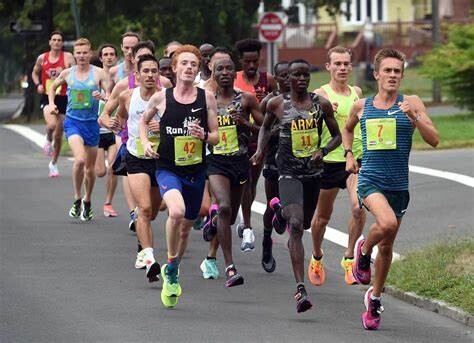
D’Amato, from Virginia, also won the Faxon Law New Haven 20K in 2022 when she set the course record. She held off Jess McClain (1:06.50), Savanah Berry (1:07:03) and Annie Frisbie (1:07:19).
Both earned the Ryan Shay Memorial Award, given annual in honor of the 2004 Faxon Law New Haven Road Race winner who died while participating in the 2007 Olympic Trials Marathon in New York City. The award is presented in recognition of Shay’s hard work and dedication to the sport, as well as longtime support of the New Haven Road Race, which he ran four times.
Connecticut's top finisher in the male division was West Hartford's Grant O'Connor, who placed 23rd in 1:02:54. The top state performer in the female division was Glastonbury's Alyssa Natario, whose time of 1:14:41 was 13th.
Other Connecticut residents to place in the top 25 in the female division were: Fairfield's Megan Connolly, Wallingford's Katie Overstrum, Woodbridge's Laura Pierce, Manchester's Olivia Mondo, Colchester's Alayna Bigalbal and East Lyme's Rebecca Snielson
The race, which drew more than 5,000 participants, also included a 5K, half marathon, half marathon relay and kid's fun run.
Benjamin MacDonald of Susbury, Mass. won the half marathon in 1:10:01, with Tabea Themann of Hamburg, Virginia winning the female division in 1:18:11. Westport's Clare Kutnick was second in the division in 1:21:48.
Prospect's Colin Slavin won the 5K title in 15:31 for the men, while Milford's Courtney Kitchen won the female division in 17:46.
by Lori Riley
Login to leave a comment
New Haven Road Race
The Faxon Law New Haven Road Race, renowned as the longest-running USATF 20K National Championship, is scheduled for Monday, September 1, 2025 (Labor Day), in New Haven, Connecticut. This event will once again host the Men's and Women's USATF 20K National Championships, attracting elite athletes, including past champions and U.S. Olympians. Participants can choose from various race options, including the...
more...In His First 100-Miler, David Roche Demolishes the Legendary Leadville 100 Course Record
Matt Carpenter’s record stood for 19 years.
In his first 100-mile race of his career, trail runner and coach David Roche took down a legendary record in the sport. On Saturday, the 36-year-old broke Matt Carpenter’s storied Leadville 100 course record from 2005, winning in 15:26:34—over a 16-minute improvement of the record.
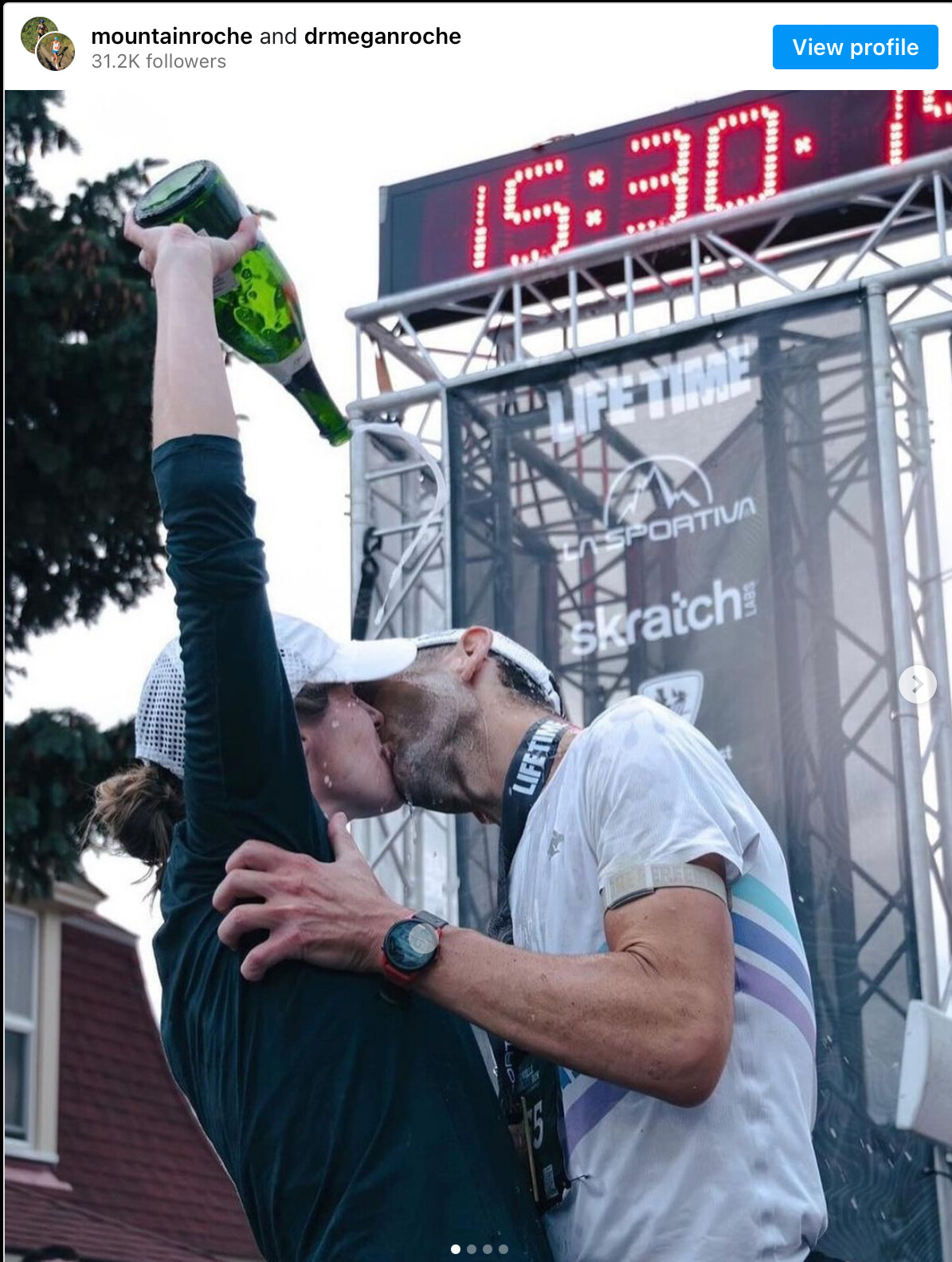
Roche won the men’s race by 30 minutes, on the dot. Adrian Macdonald was second in 15:56:34, and Ryan Montgomery placed third with a time of 16:09:40. In the women’s race Mary Denholm dominated, winning in 18:23:51. Zoë Rom took runner-up honors (21:27:41) while Julie Wright rounded out the podium in 21:48:57.
The Leadville course is notoriously difficult, primarily due to its situation at high altitude. The town of Leadville, Colorado—where the race starts and ends—sits at 10,119 feet above sea level. The “Race Across the Sky” covers more than 18,000 feet of vertical gain and at its highest point, runners reach an elevation of 12,600 feet. (For context, “high altitude” is generally considered to begin around 5,000 feet above sea level.)
Roche went out aggressively and built a sizable cushion on Carpenter’s record of 15:42:59. At the halfway mark, Roche was ahead of course-record pace by over 25 minutes, according to iRunFar. By the 87.4 mile split, the gap had decreased to 15 minutes, but it was enough of a buffer for Roche to maintain.
After the race, Roche posted on Instagram recapping the feat and noting some prerace nerves.
“I put a big scary goal out there early this year: chasing the historic 15:42 Leadville 100 course record by one of the GOATs, Matt Carpenter,” he wrote. “Approaching my first 100 miler, though, I’m not sure I truly believed. I kept joking about where I’d drop out and what my order would be at the Leadville Taco Bell.”
While Roche is an accomplished trail runner, he’s historically had the most success at shorter distances, like the half marathon and 50K. In 2014, he was named the 2014 USATF Sub-Ultra Trail Runner of the Year, and he’s represented Team USA internationally.
Roche, along with his wife, Megan, are well-known in the running community for their coaching business and podcast: Some Work, All Play (SWAP). According to its website, SWAP’s professional roster includes athletes like mountain running world champion Grayson Murphy, three-time Barkley Marathons finisher John Kelly, and steeplechaser/mountain runner Allie Ostrander.
Login to leave a comment
'What has he done to deserve it?' - Why Noah Lyles will not put up his Olympic gold medal in prospective challenge against Tyreek Hill
Lyles has dismissed the idea of betting on his gold medals as well as Hill's NFL rings, citing he is "not interested" as the war of words between the two over who is faster continue.
American sprint sensation Noah Lyles has firmly declined the idea of using his Olympic gold medal as a wager in a potential race against NFL star Tyreek Hill.
Lyles, who recently clinched the gold in the 100 meters at the Paris Olympics, is open to racing Hill, but only on his terms—over the 100-meter distance, widely recognized as the definitive race for determining the fastest man on the planet.
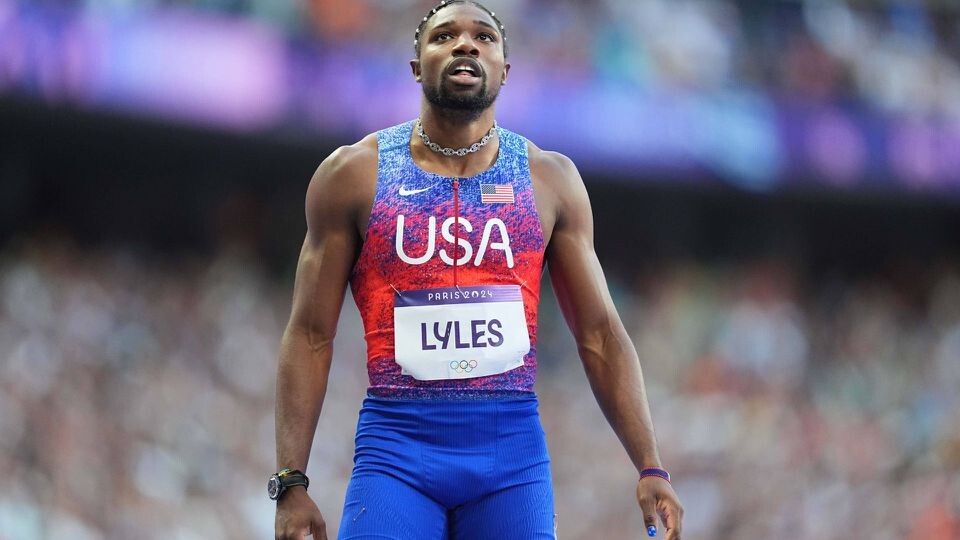
The public feud between Lyles and Hill began after the Miami Dolphins wide receiver took aim at Lyles over comments he made in 2023, criticizing American sports leagues for referring to their champions as "world champions."
Hill, in an interview with Kay Adams, was quick to dismiss Lyles’ opinion, especially after the sprinter’s bronze medal finish in the 200 meters, where he tested positive for COVID-19 after the race.

“Noah Lyles can’t say nothing after what just happened to him,” Hill said during the podcast. “Pretend like he’s sick, I feel like that’s horseradish. So for him to do that and say that we’re not world champions of our sport, come on, bruh. Just speak on what you know about, and that’s track.”
Hill later escalated the tension by challenging Lyles to a 50-yard dash, boldly claiming he would come out on top. “I would beat Noah Lyles,” Hill asserted. “I wouldn’t beat him by a lot, but I would beat Noah Lyles.”
Lyles, however, was unimpressed by Hill’s challenge and made it clear during a Wednesday interview on the Dan Patrick Show that his Olympic gold medal is off the table.
“What has he earned to deserve that status?” Lyles asked rhetorically. “He plays football and is a great football player, but you do not get to jump the line because you think you are fast. There are tons of those people out there.”
When asked if he would be interested in one of Hill’s NFL rings as a wager, Lyles was dismissive. “I do not want a Super Bowl ring. I am very content with my Olympic medals,” he stated.
Lyles also doubled down on the conditions for any potential race, stating that it would have to be in the 100 meters or not at all. “Again, I’m not here to do gimmicks,” Lyles told NBC News. “You want to challenge me, ‘the world’s fastest man,’ if you want to challenge that, you have to challenge that in his event.”
Lyles further referenced NFL wide receiver DK Metcalf’s attempt to compete in the 100 meters, noting that Metcalf had the courage to face sprinters on the track in a legitimate event.
In May 2021, Metcalf ran the 100 meters in 10.36 seconds at the USATF Golden Games and Distance Open, finishing ninth in his heat. While he didn’t qualify for the Olympic Trials, Metcalf’s effort was praised by Lyles as a serious attempt to prove his speed.
“Any time someone fast comes up, he would try to race them. If he really wanted to race people, he would’ve showed up like DK Metcalf,” Lyles said in a separate interview on Night Cap.
“The man [Hill] dodges smoke. I don’t got time for that. He’s challenging me. We’re racing in the 100, we can race. If he’s truly serious about it. If he’s truly serious about it, and I’m not talking about you’re just talking on the internet … you’ll see me on the track.”
by Mark Kinyanjui
Login to leave a comment
NFL player says he'd beat Noah Lyles in a race
Noah Lyles has faced a challenging week in the media, especially after winning bronze in the men’s 200m at the 2024 Paris Olympics and attributing his loss of the gold (and silver) to contracting COVID-19. (Many found this unconvincing.) One of his critics is NFL wide receiver Tyreek Hill, who didn’t hold back on his opinion of Lyles’ abilities, confidently stating that he could beat the new Olympic 100m champion in a race.
During a pre-season interview on YouTube’s Up and Adams Show, Hill shared his thoughts on Lyles: “Noah Lyles can’t say anything after what just happened to him. For him to lose like that and still say we’re not world champions in our sport? Come on, bruh. Just stick to what you know, and that’s track.”
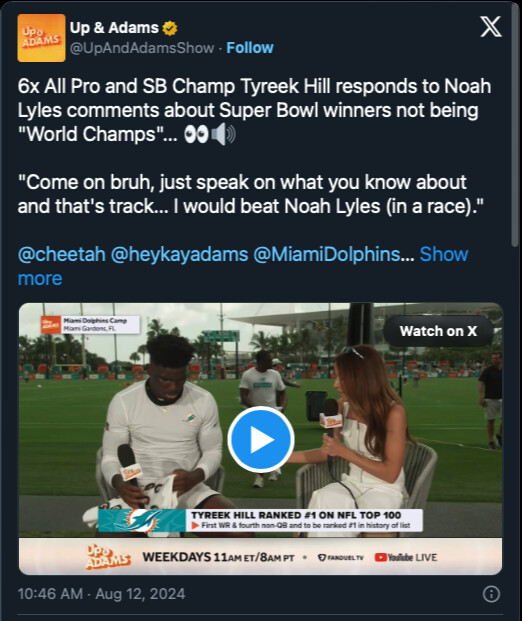
Hill went on to say he would beat Lyles in a race (although he did not specify the distance). “I wouldn’t beat him by a lot, but I would beat Noah Lyles.”
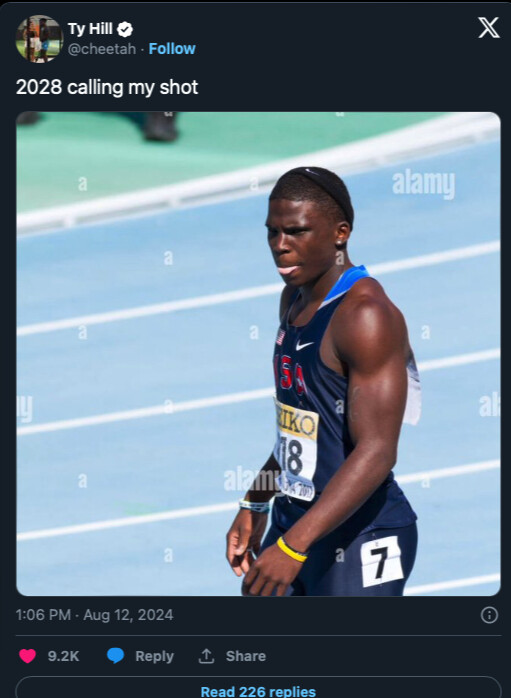
Hill, who goes by the nickname “Cheetah,” is renowned for being one of the fastest players in professional football. While his focus has been on football for most of his life, he comes from a track and field background. Hill represented Team USA at the 2012 World Junior Championships in Barcelona, winning gold in the men’s 4x100m relay and bronze in the 200m (20.54).
Although Hill hasn’t made a return to track and field since, he did race over 60 metres at the 2023 USATF Masters Indoor Championships, clocking 6.70 seconds. His time ranked him 213th in the world for the men’s 60m event last year. In contrast, Lyles won a world championship silver medal in the 60m at the 2024 World Indoor Championships in Glasgow, with a time of 6.44 seconds—trailing only American Christian Coleman, the world record holder in the 60m event.
Hill has admitted in multiple interviews that he doesn’t plan to return to track anytime soon, making a showdown with Lyles unlikely. Even so, the numbers speak for themselves: Lyles’ 100m winning time of 9.79 seconds in Paris is half a second faster than Hill’s personal best of 10.19 seconds. While Hill’s times are impressive for someone not competing professionally, the likelihood of him beating Lyles without a few years of focused training seems slim.
by Running Magazine
Login to leave a comment
Run the tangents to crush your race-day goals
Running faster isn’t just about building strength and endurance—sometimes, it’s about getting smart with your strategy. One often overlooked technique is running the tangents. By taking the shortest possible race route, you can shave off precious seconds and even minutes from your time. Here’s how you can master the art of running tangents and blast to a race-day PB.
Maximize efficiency, minimize extra mileage on race day with this technique
What are tangents?
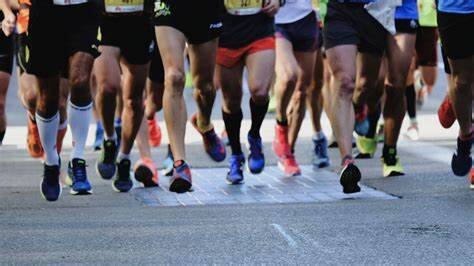
Running the tangents simply means taking the shortest path around a course, and is derived from a basic principle: the shortest distance between two points is a straight line. Imagine a race course filled with curves and corners—instead of sticking to the center of the road or weaving back and forth, running tangents involves cutting straight lines from one apex to another. By doing this, you minimize the distance you run and maximize your efficiency.
For instance, if you’re running a race with a lot of turns, you’d be amazed how much less mileage you’ll have to run if you stick to the inside of each curve, rather than the outside. Consider a typical marathon with numerous turns—by consistently choosing the shortest path, you might easily cut out hundreds of unnecessary meters.
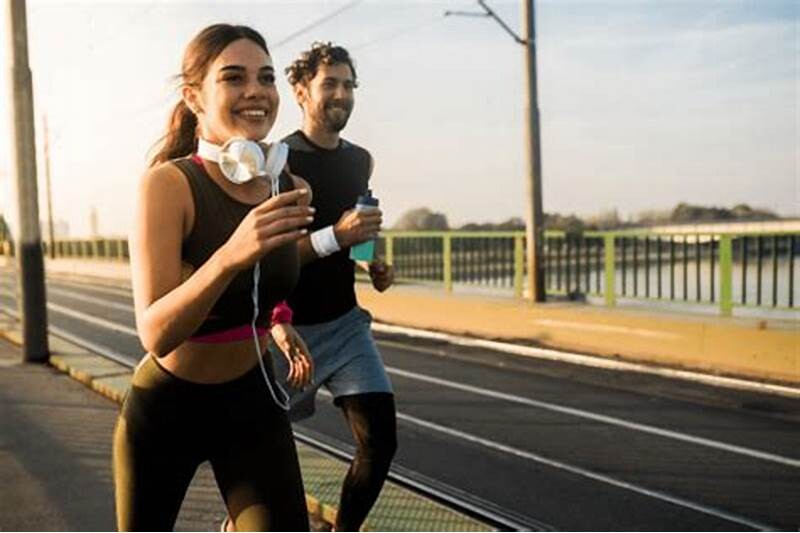
It’s a strategy elite runners use to their advantage, and you can, too—while it sounds intuitive, you probably aren’t paying enough attention to the concept. Over the course of a marathon, these small adjustments can add up to save you significant time and energy.
Do it like the pros
A USATF-certified marathon course is measured precisely, to the inch–and it’s not measured from the middle of the road: “You might envision the shortest possible route as a string, stretched tightly along the course so that it comes within one foot of all corners, straight through S-turns, and diagonally between corners when crossing a street,” USATF explains on their website. When you run along this invisible line, you are running the tangents.
For races with qualification standards where even seconds count (like the Boston Marathon, for example), running the tangents can be key to hitting or missing the race of your dreams.
Practice and preparation
Running tangents effectively takes some practice and a bit of foresight. Plan your route before race day, studying the course map and identifying where the turns are. Visualizing your route in advance can help you plan where to cut the tangents. Incorporate tangent running into your regular training runs—on your next run, practice cutting the corners efficiently to get a feel for the technique.
Race day mastery
During the race, keep an eye on the road ahead. Look for the shortest line through each curve, and adjust your position accordingly. Ensure that you’re not cutting corners illegally by staying within the designated course boundaries—being safe and following the rules comes first. It’s a good idea to check over your shoulder to make sure no one is bearing down on you before changing your position, and start gradually moving to the inside of an upcoming curve a few dozen metres ahead of time.
by Keeley Milne
Login to leave a comment
NFL player says he’d beat Noah Lyles in a race
"I wouldn’t beat him by a lot, but I would beat Noah Lyles," said Miami Dolphins receiver Tyreek Hill
Noah Lyles has faced a challenging week in the media, especially after winning bronze in the men’s 200m at the 2024 Paris Olympics and attributing his loss of the gold (and silver) to contracting COVID-19. (Many found this unconvincing.) One of his critics is NFL wide receiver Tyreek Hill, who didn’t hold back on his opinion of Lyles’ abilities, confidently stating that he could beat the new Olympic 100m champion in a race.

During a pre-season interview on YouTube’s Up and Adams Show, Hill shared his thoughts on Lyles: “Noah Lyles can’t say anything after what just happened to him. For him to lose like that and still say we’re not world champions in our sport? Come on, bruh. Just stick to what you know, and that’s track.”
Hill went on to say he would beat Lyles in a race (although he did not specify the distance). “I wouldn’t beat him by a lot, but I would beat Noah Lyles.”
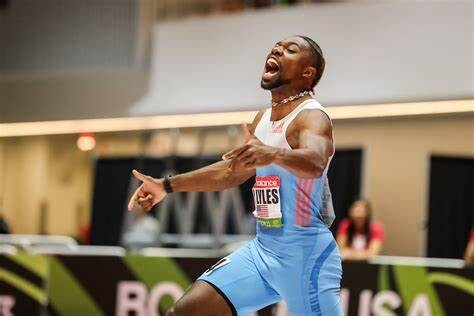
Hill, who goes by the nickname “Cheetah,” is renowned for being one of the fastest players in professional football. While his focus has been on football for most of his life, he comes from a track and field background. Hill represented Team USA at the 2012 World Junior Championships in Barcelona, winning gold in the men’s 4x100m relay and bronze in the 200m (20.54).
Although Hill hasn’t made a return to track and field since, he did race over 60 metres at the 2023 USATF Masters Indoor Championships, clocking 6.70 seconds. His time ranked him 213th in the world for the men’s 60m event last year. In contrast, Lyles won a world championship silver medal in the 60m at the 2024 World Indoor Championships in Glasgow, with a time of 6.44 seconds—trailing only American Christian Coleman, the world record holder in the 60m event.
Hill has admitted in multiple interviews that he doesn’t plan to return to track anytime soon, making a showdown with Lyles unlikely. Even so, the numbers speak for themselves: Lyles’ 100m winning time of 9.79 seconds in Paris is half a second faster than Hill’s personal best of 10.19 seconds. While Hill’s times are impressive for someone not competing professionally, the likelihood of him beating Lyles without a few years of focused training seems slim.
by Marley Dickinson
Login to leave a comment
This 31-Year-Old Runner Is a Mom and an Olympian
Buoyed by her faith, motherhood, and family, Marisa Howard never relinquished her dream of becoming an Olympian
As a young girl, Marisa Howard dreamed about becoming an Olympian one day. But her focus was on another Olympic sport, gymnastics. She had no idea what the 3,000-meter steeplechase even was.
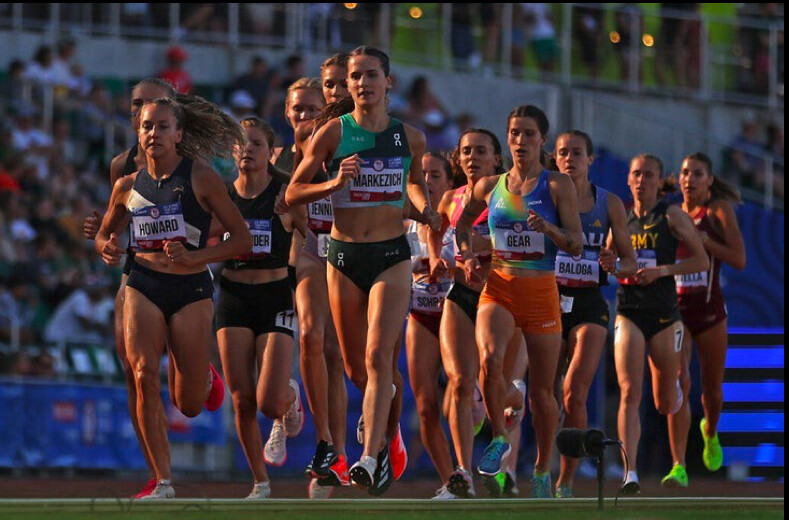
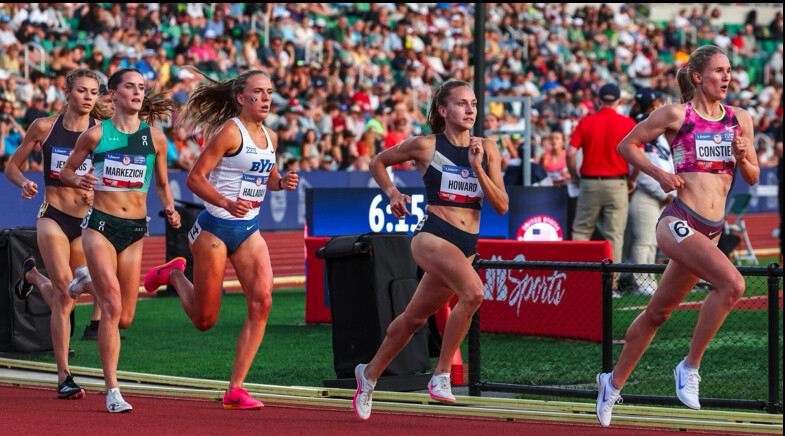
She also had no idea she’d be a mom when the dream actually came true.
Over the last two decades, Marisa, 31, has gone through numerous highs and lows, near-misses, injuries, a lack of sponsor support, and joyful life changes—most notably giving birth to son, Kai, in 2022. But the steeplechaser from Boise, Idaho, never let go of the dream. Relying on her faith, a strong family support system, and the frugal but full life she shares with her husband, Jeff, the dream came true on June 27 with a third-place finish in the steeplechase at the U.S. Olympic Trials in Eugene, Oregon.
After chipping away at her craft for three Olympic cycles, Marisa ran the race of her life—finishing with a 15-second personal best of 9 minutes and 7.14 seconds—to earn a spot on Team USA.
Her dream of running for Team USA in the Olympics officially materialized on August 4 when she lined up to race in the prelims of the 3,000-meter steeplechase in Paris. She ran with the lead pack in her heat as long as she could, but with two laps to go she slid to seventh and finished in that position in 9:24.78, missing the chance to advance to the August 6 final by two places and about seven seconds.
“I think it just becomes a lot more real when you see people that have been kind of knocking on the door for years and finally break through. It’s like, ‘Wow, we’re human and we can do it.’ Dreams do come true,” Marisa said. “I was six or seven or eight years old when this Olympic dream was born, and I plan on competing until he’s that age, hopefully, to show him what it’s like to do hard things and chase your dreams. I think it’ll be cool in 10 years when I show Kai these videos and be able to tell him, “Look at what Mommy did when you were two.”
In between making the team in late June and arriving in Paris in late July, Marisa’s life returned to normal—as if being a mom with a 2-year-old is ever normal, or at least consistent, on a day-to-day basis. That month included rough bouts of stomach flu for her and her son, the continued day-to-day management of Kai with Jeff, juggling workouts with childcare help from family and friends, reestablishing normal sleep patterns for everyone, and of course, finalizing travel plans to get the family to Paris.
It all came with a humbling reminder of the perspective that has been the bedrock of Marisa’s postpartum revival as an athlete.
“The day after I qualified, we were driving back home to Idaho and we were all tired. Kai was exhausted and screaming in the car, and I told my husband, ‘He doesn’t care that I’m an Olympian, he just wants food and sleep and, really, I’m just mom,’” she said. “It’s humbling—there’s nothing more humbling than taking care of your sick baby—and I think as a parent, we’re humbled every single day, and we come up short sometimes despite doing the best we can, but I’m thankful that there’s grace and forgiveness. I think it makes those high moments so much sweeter.”
Marisa is part of a new wave of elite runners that aren’t putting their family plans on hold due to their career, and one of several moms who competed at the U.S. Olympic Trials. Stephanie Bruce raced the 10,000 meters just nine months postpartum after giving birth to her daughter, Sophia, in September 2023, while Kate Grace ran strong preliminary and semifinal 800-meter races to advance to the final of that event just 15 months after giving birth to son, River, in March 2023.
Elle St. Pierre gave birth to her son, Ivan, at about the same time, and returned to racing six months postpartum, finishing seventh in a speedy 4:24 at the Fifth Avenue Mile in New York City. That was just the beginning for St. Pierre, who broke the American indoor record in the mile (4:16.41) in January then won the gold medal in the 3,000 meters at the indoor world championships in Glasgow in March. At the Olympic Trials, Pierre won the 5,000 meters and placed third in the 1500, qualifying for Team USA in both events, even though she declined the Olympic entry for the 5,000.
After Howard gave birth to Kai in late May 2022, she began doing pelvic floor therapy along with general strength training and some easy jogging. By the time she started running in earnest that fall, she was surprised at how quickly her aerobic fitness came back to her.
“What’s really surprised me is that I’m able to run paces that I never hit before pregnancy with the same amount or less effort,” she says. “My aerobic engine has just gotten so strong. You do see women come back stronger, but it’s a wide range of how long it takes them to come back. ”
When she returned to the track, she was aiming for a top-three finish at the 2023 U.S. championships to qualify for the world championships in Budapest. She made it to the final and was in third place with two laps to go, but just didn’t have the closing speed. However, she did get the Olympic Trials standard by clocking a near-PR of 9:22.73, demonstrating she was just as fast as her pre-pregnancy self despite limited training and two years away from racing.
By late 2023 and early 2024, Pat McCurry, Marisa’s coach since college, was able to add more volume and intensity to her training, setting up what he thought would be her best season yet. And while Marisa admittedly didn’t race as well as hoped in her races before the Olympic Trials, McCurry knew she was capable of great things.
“She was on a different level once we got back to that base fitness post-pregnancy, and I think that’s what’s paid off in massive fitness dividends,” said McCurry, who has coached Marisa on Idaho Afoot training group since 2015. “The racing didn’t look amazing from the outside. The training was spectacular. We were doing things in training since January that we’ve never done before—just the level of intensity and volume we were sustaining was stellar.”
Marisa picked up running at Pasco High School in Washington, and carried on with the dream at Boise State University. There, she also met Jeff Howard, a Boise State runner who held the school record in the 10,000 meters. But more important than their common athletic passion, they shared the same Christian values that were the foundation of her life. They married in the summer of 2013 just after he graduated. He eventually took a job as a high school teacher at a nearby school, while she blossomed into a three-time NCAA Division I All-American for the Broncos, notching a runner-up finish at the 2014 NCAA championships and fourth-place finish the following year as a senior.
After she graduated, she picked up a small sponsorship deal with women’s apparel brand Oiselle and set her sights on the 2016 U.S. Olympic Trials . She got injured and missed the trials that year. But Howard and her husband bought a house in Boise and started their family life in earnest. That added stability, along with the guidance of McCurry, who she began working with in 2016, allowed her to dig deeper into training and continue to make progress in the steeplechase, lowering her personal best to 9:30.92 at a race in Lapinlahti, Finland.
The Oiselle sponsorship evaporated after about three years but that didn’t seem to matter. She and Jeff were living frugally and loving life, especially because, by then, most of their family had moved to Boise. Marisa had two aunts who had lived in the area before she went to college, and Jeff’s parents moved to town shortly after they were married. Marisa’s parents, and later her best friend, Marianne Green, also picked up their roots and relocated to town.
The ensuing years brought a variety of highs and lows—several near-miss fifth place finishes at U.S. championships, a silver medal at the 2019 Pan American Games, a few injuries that delayed her progress, a breakthrough eight-second PR in the semifinals of the 2020 Olympic Trials, and, of course, welcoming Kai into the world in 2022.
What makes Marisa’s situation especially challenging is that she’s run competitively without a traditional sponsor since 2017, more or less collectively bootstrapping the dream on her husband’s high school teacher’s salary and working part-time as a schol nurse and as a coach. (She will officially join the Boise State staff as an assistant coach after the Olympics.) She often stays with friends when she travels to races and says she’s grateful to the meet directors who have flown her out to race, put her up in hotels, and also paid her to pace races.
She also earned USATF Foundation grants and in 2022 was the recipient of a $10,000 grant to offset child care expenses from a program sprinting legend Allyson Felix organized through Athleta’s Power of She Fund and the Women’s Sports Foundation. Marisa competed at the 2024 Olympic Trials as part of the Tracksmith Amateur Support Program, which provides a small quarterly stipend, running apparel, and shoes to about 40 athletes in all disciplines of track and field.
“We’ve found ways to make it work. We drive used cars, and we refinanced in 2020, so thankfully our mortgage is very low,” she says. “So really a lot of my expenses are just shoes, a little bit of travel, coaching fees, gym fees, and things like that. But it does add up. But thankfully we live well within our means and are able to do it. As I’ve said before, the Lord always provides.”
But even with that support and her continued progress, Marisa entered the Olympic Trials as a dark horse contender to make Team USA. And that’s despite knowing that Emma Coburn and Courtney Frerichs, the top stars of the event for the past 10 years, were sidelined with injuries. She hadn’t run great in her races leading up to the trials, and her confidence was waning, McCurry says.
“I felt like not having a full contract [from a shoe sponsorship] had kind of eroded away at some of her confidence, and she was starting to have a little bit of imposter syndrome at races,” says McCurry. “We just had a really firm talk where I was like, damn it, you’re better than this,” he says. “Not we, not the training, you, Marissa Howard, are better than this.”
That pep talk was just what she needed. It helped remind Marisa about her bigger purpose, just as much as packing diapers, toys, and pajamas for Kai did before she and Jeff made the eight-hour drive to Eugene for the Olympic Trials.
In her semi-final heat at the trials on June 24, Marisa ran aggressively and finished second behind Gabbi Jennings in 9:26.38. After the race, she said she was looking forward to the final, but, for the moment, was most interested in making sure Kai got to bed on time.
Running with purpose and caring for her son emboldened her for the final, where she ran with conviction among the top five before moving into the lead briefly with a lap to go. In what was a thrilling final lap, Val Constien retook the lead and sprinted to victory down the homestretch in an Olympic Trials-record 9:03.22, followed by a surging Courtney Wayment (9:06.50) and a determined Marisa (9:07.14) as the top nine finishers all set new personal bests.
“My husband and I talk about competitive greatness: You want to rise to the occasion when everyone else is at their best. So it’s like, gosh, I was able to do it! I think a lot of it for me has always been about having my priorities in place. I’m a Christian first, and then a wife, and then a mom, and then a runner. And I think if I keep those in that line, that’s where I see success,” Marisa says.
“I’ve sat next to gold medalists and other high-level athletes in chapels before U.S. championship races and they’ve told me, ‘I’ve won that gold medal and it doesn’t fill that void in my heart.’ And just knowing that a medal or success isn’t going to change you, ultimately, you have to be secure in who you are. So just remembering where my priorities lie helps to kind of keep me grounded.”
Login to leave a comment
Training for a Marathon? Why Time on Feet Is a Key Metric
According to coaches, focusing on time has key benefits for both new and experienced runners.
Rather than hold yourself to a specific number of miles when you go out for a run, what if you focused more on the time on your watch? You do the work, keep an eye on the clock, and when your time is up, that’s it. You’re done.
This training method is known as “time on feet” and it is both simple and effective. Time on feet measures how much time you spend running, walking, and cross-training rather than the distance you cover. For example, when you wake up on a Sunday morning instead of setting a distance goal, you might run for 75 minutes. Shorter midweek runs may clock in between 30 and 45 minutes.
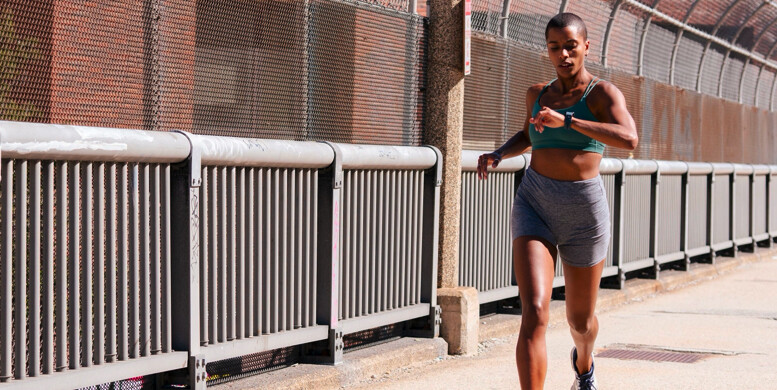
How far you go will depend on your pace, and other elements that affect runs, like weather, terrain, and how you feel that particular day. It’s the time on feet that matters, though, not the other metrics, such as distance and pace.
To learn more about when to include time on feet in your training plan, we spoke with three different running coaches. Here’s what they had to say about counting minutes instead of miles.
The Benefits of Following Time on Feet as a Metric
Whether you’re a new runner or a runner with loads of miles in your shoes, using time on feet can improve your runs.
It Helps Distance and Pace Progression
“I coach almost exclusively in time instead of mileage,” Will Baldwin, USATF and VDOT-certified running coach tells Runner’s World. Baldwin explains that when researchers look at how running affects your body, they do so in time increments, not mileage.
“We know, on average, it takes 30 to 35 minutes of time on feet to get a measurable aerobic benefit from a run,” Baldwin says. For one runner, 35 minutes may equate to five miles. For another, it may mean three miles.
Runs of at least 30 minutes provide enough stimulus for predictable aerobic adaptations, such as increased mitochondrial density, enhanced capillary growth, and improved fat metabolism, says Baldwin. Importantly, this duration allows the body to begin utilizing fat as a fuel source, which is a crucial aspect of endurance training. “A minimum of 30 minutes helps to ensure meaningful and measurable improvements in aerobic fitness,” Baldwin adds.
“If you’re brand new to the sport, adding five to 10 minutes of running in lieu of adding miles can make things a bit more manageable,” Matt Forsman, USATF/RRCA-certified running coach and race organizer at Sasquatch Racing tells Runner’s World.
Beginners and new runners will eventually see their distance increase during their typical run time. “As fitness goes up, even though it’s the same amount of time, you might actually run quite a bit farther because you’re able to move faster,” Forsman says. “It can be motivating seeing how much farther you’re getting in the same amount of time.”
If you’re training for a race, it helps to combine both time on feet and mileage. For example, the Galloway run/walk plans include both time on feet (during the week) and distance (for weekend long runs). This helps runners get familiar with what a specific distance feels like.
It’s Key for Specific Types of Races
While time on feet is a helpful metric for new runners, it’s also helpful for those going for super long distances.
“[Time on feet] is useful when running ultramarathons, as not all miles are created equal when tackling distances beyond 26.2 miles,” Forsman says. “If you’re training for ultras, it’s likely you’re doing it on the trails, which means uneven terrain, hills, and variable pacing throughout the course of your runs. So, a time-on-feet approach versus a strict mileage-based approach makes sense.”
Similarly, if you’re training to run a multi-day race, it helps to plan back-to-back runs that align with your event, no matter the distance. “You definitely want to have that experience of time on feet day after day as part of your training block,” says Chris Twiggs, chief training officer of Galloway Training Programs, an Atlanta-based coaching company, and a marathoner and ultrarunner. “You want to try to simulate what you’re going to go through in a multi-day event.”
One thing to keep in mind: If you’re training for a long endurance event, Twiggs warns that once you creep over the six-hour mark during a training run, “you’re going to see diminishing returns” and “you’re going to have a hard time recovering from that.”
It Offers a Psychological Boost
Most long-distance training plans, including those for a marathon or half marathon, don’t have you running the full distance of the race in one go. However, logging comparable time on your feet prerace can boost your confidence before an event, even if you don’t run that distance at race pace.
Twiggs says that just walking for your predicted race time establishes a sense of capability while offering real training benefits.
“Doing a five-hour walk, for example, will not give you the same pounding that you would get from a 26-mile run,” Twiggs says. “But if you are out there for the same amount of time that you’re going to be, and if you do it at the same time of day that the event’s going to take place and over the same sort of terrain, then you’re getting those adaptations as well.”
Plus, it helps you mentally prepare for the length of time you’ll be out there moving your body, potentially helping you develop the mental stamina required for running long distances.
How to Calculate Time on Feet in a Training Plan
There’s no clear-cut formula to determine how much time you need on your feet because it depends on a handful of factors, including event type and distance, typical pace, current levels of experience and fitness, and your schedule.
“For something like a 5K, you’ll likely want to gradually get to a point where you can handle [about] 40 minutes of continuous running,” Forsman says. “This time frame roughly aligns with the amount of time it takes most new runners to complete the 5K distance.”
Of course, your race time will vary depending on your pace. So, even if you prefer to use time-on-feet training, knowing your average mile time is helpful, as it determines how long it will take you to finish a specific distance.
Also, there is more that goes into race training than only time on feet—especially if you have a goal time in mind. “If you’re training for a road half marathon and want to run two hours, it’s a bit trickier,” Forsman says. Building up to two hours of time on feet is really just step one. You also need quality work, like tempo runs and intervals, which involve targeted pace work. This is what will help you develop the ability to hold a 9:09-per-mile pace to reach your two-hour half-marathon goal. “So, strictly using a time-based approach for this kind of goal might not be the best idea,” he adds.
Mixing in distance-based runs can also provide assurance that your training is on track. Baldwin almost always gives marathoners a 20-mile run during their training. “For whatever reason, that’s a huge mental barrier for a lot of folks. It makes them feel very confident that they’ve run 20 miles going into a marathon,” he explains.
Likewise, during marathon training, tapering with time on feet—cutting back on running volume and intensity in the days or weeks leading up to an event—follows the same general principles, whether you’re using time or distance as a metric. For example, in the final three weeks of training, marathoners typically reduce their weekly mileage by 20 to 30 percent each week. If you’re using time on feet, you simply trim your minutes by the same percentage.
Other Factors That Play Into Time on Feet
When it comes to accounting for daily activity, don’t overthink it. The coaches recommend focusing on intentional workouts when tallying time on feet, so you don’t need to factor in a leisurely walk or your daily steps. Though you do want to keep in mind that if you’re limiting time on feet during a taper or the days before a race, walking will add up.
As for cross-training, like cycling or the elliptical, unless you’re working with a coach or training platform that can accurately calculate the difference in training modalities, just use the same time you would if you were running. So, if you’ve got a 35-minute run on the calendar but need to jump on the elliptical, do a 35-minute workout. “It’s not going to be perfect. We’re not going to get the same amount of fitness,” Baldwin says. “But at least we’re keeping our schedule and our rhythm.”
by Runner’s World
Login to leave a comment
Are You Drinking Water Wrong? According to Researchers, You Probably Are
Here’s how to hydrate for better performance.Here’s how to hydrate for better performance.Staying hydrated seems simple enough—drink water when you’re thirsty and stop when you feel like you’re done, right? Well, it’s a bit more complicated than that, especially for runners.
That’s because not understanding the complicated equation of race distance and intensity combined with water and electrolyte intake can ruin a long run or race, not to mention have serious health repercussions. Drink too little and your ability to power through your workout suffers; drink too much and you can get sidelined by nausea and frequent pee breaks.
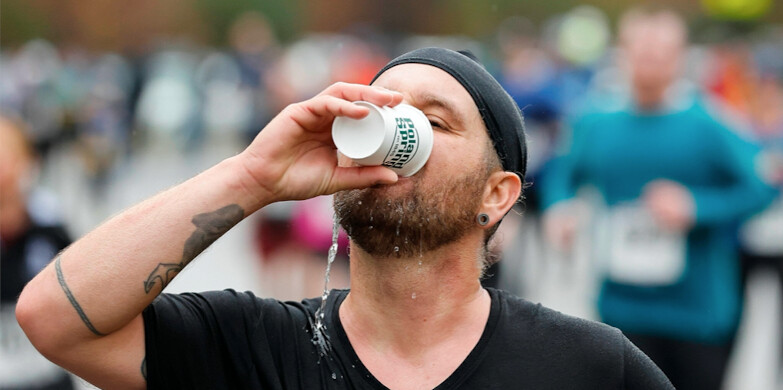
And even though you might first worry about dehydration for those summer runs, researchers found that the newer you are to running and the slower you run, the more likely it is that you will drink too much water while racing. (We’ll talk more about this later.)
To that end, much of the research demonstrates that mastering the art of hydration when you run isn’t as simple as it seems. Keep reading to find out if you drink water the wrong way—and how to drink water right.
6 Ways You Drink Water Wrong and 6 Ways to Drink Water Right
❌ Wrong Way: Gulping water during a race
✅ Right Way: Sip as you run
It’s okay to slow a little to make sure you’re getting in your fluids during a race, but gulping water at each aid station can ultimately slow you down and also lead to an upset stomach.
That’s because drinking too much water too quickly overloads the stomach, causing it to rapidly stretch. This can lead to discomfort and potential nausea, Justin Mullner, M.D., a board-certified primary care sports physician with the Orlando Health Jewett Orthopedic Institute in Florida tells Runner’s World.
Take small sips of water (or electrolyte drink) every 15 to 20 minutes, depending on the temperature and intensity of the run.
Combining a run with too much water is even more likely to cause nausea. That’s because intense exercise directs blood flow away from the stomach and toward the muscles, causing digestion to slow down. “So you put a bunch of water in there and the stomach really can’t handle it effectively and efficiently,” Mullner says.
A better strategy is to take small sips of water (or electrolyte drink) every 15 to 20 minutes, depending on the temperature and intensity of the run. “This approach helps maintain a steady level of hydration and prevents the stomach from becoming overly full,” Meghan Kennihan, a RRCA- and USATF-certified running coach, tells Runner’s World.
❌ Wrong Way: Drinking from a dirty water bottle✅ Right Way: Regularly clean your bottle
Your trusty water bottle is always there when you need it. Sadly, constant use means you’re probably getting more than water. Unless you regularly clean your water bottle—which means daily according to Mullner—you could be getting a dose of bacteria or even mold.
Every time you put your mouth to the water bottle and use your hands to open and close it, you transfer bacteria that can make its way inside. The moist environment inside your water bottle provides an optimal breeding ground for bacteria and mold, especially if you live in hot, humid areas. If left unchecked, the bacteria and mold can continue growing, potentially causing you to experience symptoms similar to food poisoning (such as stomach pain or cramps, diarrhea, and vomiting), per the Centers for Disease Control and Prevention. People with mold sensitivities can have a flare-up of allergy symptoms.Ideally, you’d wash out your reusable bottle—whether plastic, stainless steel, or glass—with soap and warm water each time, Mullner says. “It’s even more important if you’re using the bottle every single day or drinking beverages other than water,” he says. Mixing electrolyte powders or adding a sports drink to your bottle, for example, means more material for bacteria.Signs your bottle could use a good scrubbing include visible residue, a funny or foul odor, or changes in how things taste, Mullner says.
❌ Wrong Way: Waiting too long to hydrate before a run or race✅ Right Way: Start early
When preparing for a long run or race, many runners forget to hydrate until they’re practically toeing the starting line, “which is a bad idea because it doesn’t give the body enough time to absorb and utilize the fluids,” Kennihan says.
Staying well-hydrated in the days leading up to your long run or race can help you perform well, avoid feeling overly full, and reduce restroom stops. Be especially diligent about drinking water starting the day before a long run or race, and check your urine color to be sure you’re getting enough. “Really dark yellow is a sign that you’re not well-hydrated,” Mullner says. “Ideally, it has a slight tinge of yellow.”
Drink 16 to 20 ounces of water about 2 to 3 hours beforehand and then another 8 to 10 ounces 20 to 30 minutes before running.
Individual fluid needs vary. However, a general guideline for the day of the event is to drink 16 to 20 ounces of water about 2 to 3 hours beforehand and then another 8 to 10 ounces 20 to 30 minutes before running, Kennihan says. You may need to adjust your intake according to your body size, run distance, and outside temperature.
❌ Wrong Way: Drinking too much water on long runs✅ Right Way: Balance electrolyte intake with water
It’s critical to drink enough water during long training runs and races. However, drinking lots of water, and only water, can lead to overhydration, meaning you have too much water in your body.
Hyponatremia is an extreme version of overhydration, and occurs when sodium levels in the blood are lower than recommended, leading to muscle cramps, headaches, nausea and vomiting, low energy, and confusion, per the Cleveland Clinic. Normally, your body keeps your electrolytes in balance by taking the minerals from the foods you eat and filtering the excess through your urine. However, intense exercise causes electrolytes (particularly sodium) to be quickly lost through sweat, and hot, humid temperatures only accelerate this loss, per the American College of Sports Medicine.
It's not just new runners who tend to overhydrate. At the other end of the spectrum, 41 out of 63 finishers at an ultramarathon also finished with mild or severe hyponatremia, according to a 2019 Frontiers in Nutrition study.
Take in electrolytes in addition to water if you’re running for longer than 60 minutes or in hot, humid temperatures. Drinking water without replacing electrolytes dilutes the remaining electrolytes (again, sodium in particular) in your blood. “You can potentially get yourself into trouble with hyponatremia,” Mullner says.
To prevent an electrolyte imbalance, take in electrolytes in addition to water if you’re running for longer than 60 minutes or in hot, humid temperatures. Bring an electrolyte drink, some gels, or another electrolyte supplement.
❌ Wrong Way: Drinking a pure sports drink✅ Right Way: Water it down
Sports drinks offer a convenient delivery system for carbs and electrolytes while running. Still, many runners prefer to water things down.
“Many sports drinks are too concentrated, leading to stomach cramps and nausea. Diluting them can still provide the necessary electrolytes and carbohydrates without overwhelming the stomach,” Kennihan notes.
The optimal ratio of sports drink to water depends on your preferences and the makeup of your drink. Mullner suggests diluting your sports drink to the point where it’s most palatable for you.
Diluting sports drinks can still provide the necessary electrolytes and carbohydrates without overwhelming the stomach.
The exception: Don’t dilute a sports drink that contains carbohydrates if you’re using it for energy purposes. “Some sports drinks have carbs in there to help extend the amount of time you can perform, and if you’re trying to absorb carbs better, you would have it with some electrolytes,” Mullner says. Adding water can cut down on how many carbs you get per sip, limiting performance benefits.❌ Wrong Way: You don‘t know about your med’s side effects
✅ Right Way: You read labels and talk to your pharmacist
Some over-the-counter and prescription medications can affect an athlete’s hydration, says Kennihan. NSAIDs, such as ibuprofen and aspirin, can reduce blood flow to the kidneys, which can impair their ability to conserve water and electrolytes, potentially leading to dehydration, especially during prolonged physical activity like running.
Similarly, diuretics, which are prescribed for conditions such as hypertension and edema, increase urine production and promote the excretion of water and electrolytes from the body. Increased urine output can lead to a significant loss of fluids and electrolytes, making it easier for runners to become dehydrated, particularly in hot and humid conditions or during long-distance runs.
Likewise, antihistamines can reduce saliva production and increase the risk of dry mouth and dehydration, while laxatives can cause increased bowel movements and fluid loss.Lastly, stimulant medications, such as those used for attention deficit hyperactivity disorder (ADHD), can increase sweating and fluid loss, potentially leading to dehydration if fluid intake is not adequately maintained.
Bottom line: As a runner, remember that hydration is as much a part of your performance as actual time on your feet.
The authors of a 2019 article published in the International Journal of Sport Nutrition and Exercise Metabolism recommended that runners develop a “personalized and practiced race plan” to optimize their fluid and carbohydrate intake based not only on their distance and intensity, but also taking into account their body composition, as well as the weather and other race conditions, such as refueling stations, at each event.
Login to leave a comment
Muhumed, Smith win USATF 8K road titles at Crazy 8s 8K Race
The Crazy 8s 8K Race has been a staple in Northeast Tennessee for decades. Saturday night, however, marked the first time it would serve as the USA Track & Field 8K road race championship for both men and women.
The competition did not disappoint in the humidity of the Model City.
Warren, Bayless inducted into Tennessee Sports Hall of Fame
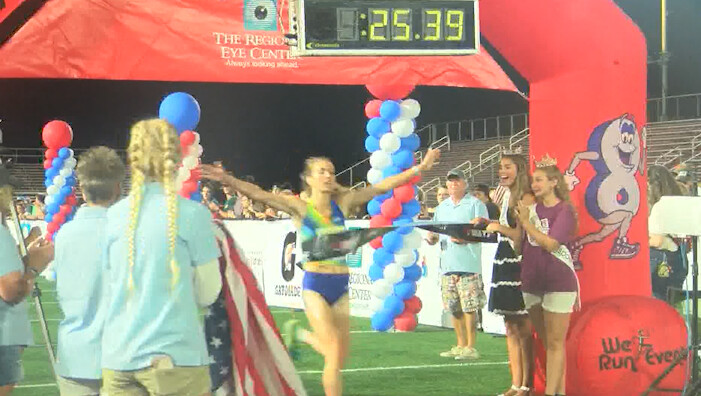
The elite start went off just after 9 p.m. ET, with the finish remaining just as tight as the starting line. Ahmed Muhumed crossed the finish line first, arms outstretched, in a time of 22:26 to claim the men’s 8K road race championship.
The former Boise State and Florida State star missed out on the 2024 Summer Games, but earned a confidence-boosting win in Tennessee.
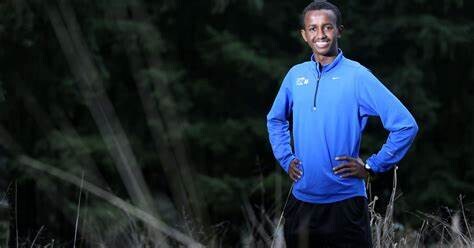
“I haven’t won any national titles – I came second in the 5K in New York,” he said. “The time – when I saw it I said ‘no way I just did that.’ It’s something that I can only dream of in terms of it being up there. But I didn’t really – I talk about splits on my watch, but I did not care about what pace I was running. It was all about competing and staying with the front guys.”
Isai Rodriguez finished just one second behind (22:27) in second place, while Hillary Bor claimed bronze with a time of 22:34.
In the women’s competition, former U.S. Olympian and World Championships participant, Rachel Smith, earned herself an 8K road race title with a time of 25:40.
“Any time you can win a national championship title, it’s so special,” she said. “I definitely don’t take any of these for granted, especially as I’m getting older. It’s always an honor to win a national championship title.”
Emma Grace Hurley took the silver on the women’s side with a time of 25:58, as Natosha Rogers turned in a 26:11 for third place.
Muhumed and Smith claimed a $5,000 prize and the title for their efforts, but said running in the Model City is a memory they’ll take with them, as well.
“This is one of the best environments I’ve been in, in terms of racing,” Muhumed said. “Just grateful for the City of Kingsport and the Tri-Cities and everybody who is out here supporting.”
“The hospitality and the event was so, so awesome,” Smith said. “I really enjoyed being here and I hope to come back again.”
by Nick Dugan
Login to leave a comment
Crazy 8s 8k Run
Run the World’s Fastest 8K on the world famous figure-8 course on beautiful candle-lit streets with a rousing finish inside J. Fred Johnson Stadium. Crazy 8s is home to womens’ 8-kilometer world record (Asmae Leghzaoui, 24:27.8, 2002), and held the men’s world record (Peter Githuka, 22:02.2, 1996), until it was broken in 2014. Crazy 8s wants that mens’ record back. ...
more...Simpson, Frisbie, Rodriguez, Estrada Commit to Run Crazy 8s 8K Hoping for USATF National Championshisp
With the announcement that the Ballad Health Niswonger Children’s Network Crazy 8s 8K Run will host both the USATF Men’s & Women’s 8K Road Championship Presented by Gatorade on July 20th, competition is heating up for both championships.
Olympic bronze medalist Jenny Simpson and Annie Frisbie will be two of the headliners in the women’s field with Isai Rodriguez and Diego Estrada the early favorites on the men’s side.“We’re off to a good start,” said co-director Hank Brown.
“We are receiving tremendous interest from some of the best runners from around the country. We’re expecting 40-50 elite runners in the USATF championship which will be very exciting.”
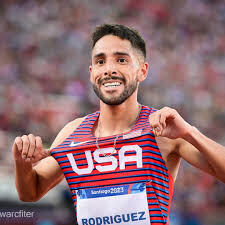
Simpson is arguably one of the more recognizable women’s middle/long distance runners in the United States. She won the bronze medal in the 1500 meters at the 2016 Rio Olympics, the gold medal at the 2011 World Championships, and followed with silver medals at the 2013 and 2017 World Championships Simpson is a former American record holder for the 3000 meter steeplechase and has represented the United States at three Olympics – 2008 Beijing, 2012 London, and 2016 Rio.
Frisbie is on a personal tear recently, running personal bests in 2024 for the 10K (31:49), 15K (49:28), 25K (1:22:37), and half marathon (1:07:34, 1st place). She is running her best and is in excellent shape.In 2023, the men’s race came down to a sprint finish in J. Fred Johnson Stadium with Clayton Young outlasting Andrew Colley and Isai Rodriguez. Young will be going to Paris to run the marathon and Colley is nursing a sore foot, so Rodriguez will be the top returning finisher (Colley is still tentative).
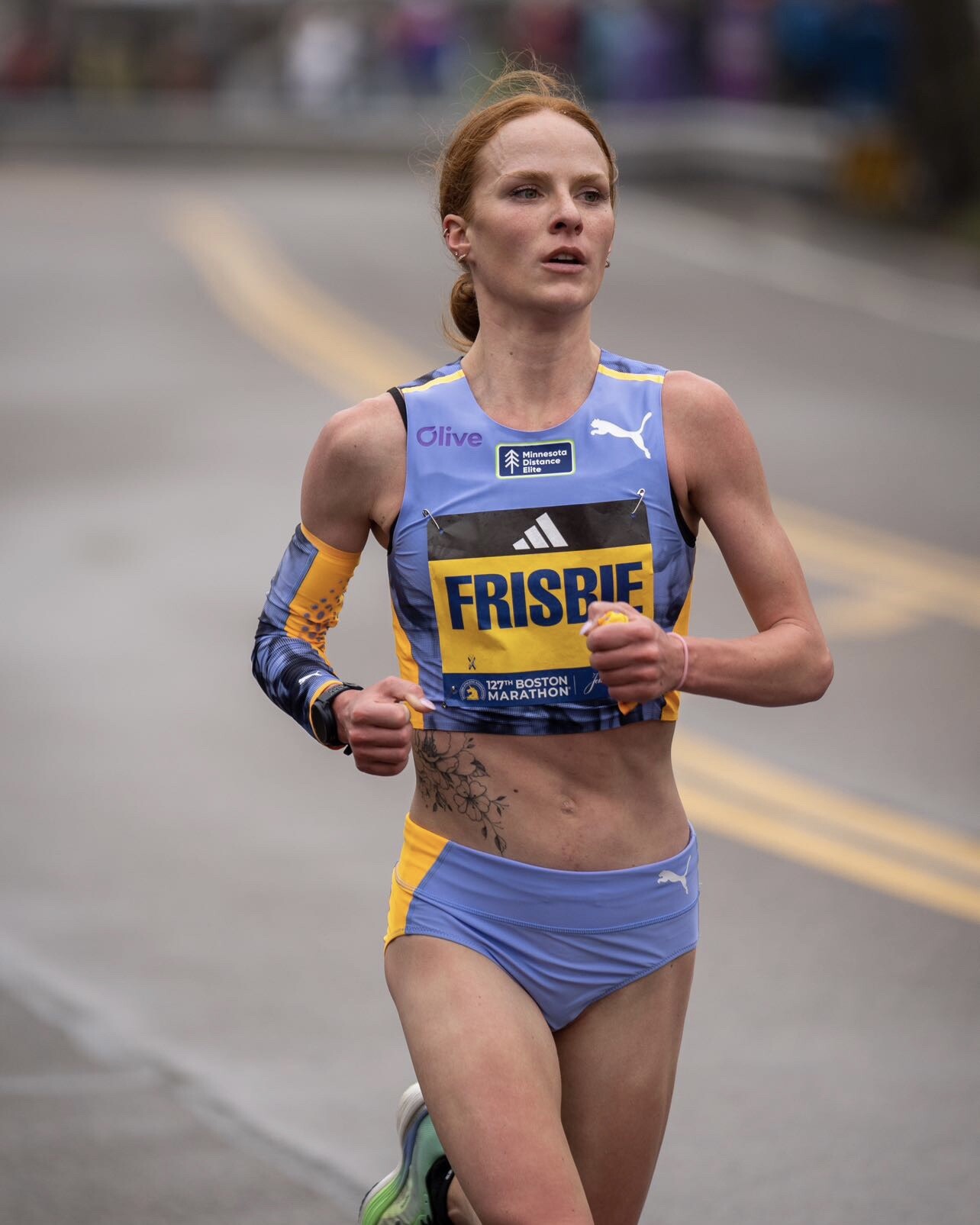
Rodriguez has a 10,000 meter personal-best under 28 minutes and was the Pan Am Games 10k champion in 2023.Estrada is a veteran runner making a successful comeback in 2024. He represented his native Mexico in the 10,000 meters in the 2012 London Olympics, but became a US citizen in 2014 at which time became eligible to represent the USA in international competition.
He has an impressive 10k time of 27:30 set in 2015, and 5K of 13:31 at the Carlsbad 5K in 2014. He is now 34 and quite possibly running his best times in 2024.
He placed fifth at the Aramco Houston Half Marathon in January, running a very fast 1:00:49, which is a personal best at that distance and tnen followed that a thrid-. place finish at the USATF 15K Championship in Jacksonville. In May he set an American best of 1:13:09 at the USATF 25K Championship, winning the Amway 25K River Run in Grand Rapids, MI.
“We are thrilled to have these guys and gals at Crazy 8s,” said Brown. “When we decided to host the USATF 8K Championship this is exactly the caliber of runners we were hoping to attract to Kingsport.”
The Regional Eye Center is offering a $10,008 American Record bonus for men who can break Alberto Salazar’s record of 22:04 (1981) or women who can break Deena Kastor’s record of 24:36 (2005).
In addition to the bonus, the race is offering prize money to the top 10 in the USATF Men’s and Women’s Championships.Sponsors are Ballad Health Niswonger Children’s Network, Gatorade, The Regional Eye Center, Eastman Credit Union, Kingsport Pediatric Dentistry, Food City, Martin Dentistry, Mycroft Signs, Culligan, Associated Orthopaedics of Kingsport, and JA Street.
by TriCitiesSports.com
Login to leave a comment
Crazy 8s 8k Run
Run the World’s Fastest 8K on the world famous figure-8 course on beautiful candle-lit streets with a rousing finish inside J. Fred Johnson Stadium. Crazy 8s is home to womens’ 8-kilometer world record (Asmae Leghzaoui, 24:27.8, 2002), and held the men’s world record (Peter Githuka, 22:02.2, 1996), until it was broken in 2014. Crazy 8s wants that mens’ record back. ...
more...1964 Olympic 5000m champion Bob Schul has died
We are deeply saddened to hear that Bob Schul, USA’s 1964 Olympic 5000m gold medallist, died on Sunday (16) at the age of 86.
As well as his Olympic success, Schul set a world best for two miles and was a US record-holder for 5000m and three miles. He remains the only US runner to have won the Olympic 5000m title and was inducted into the USATF Hall of Fame in 1991.
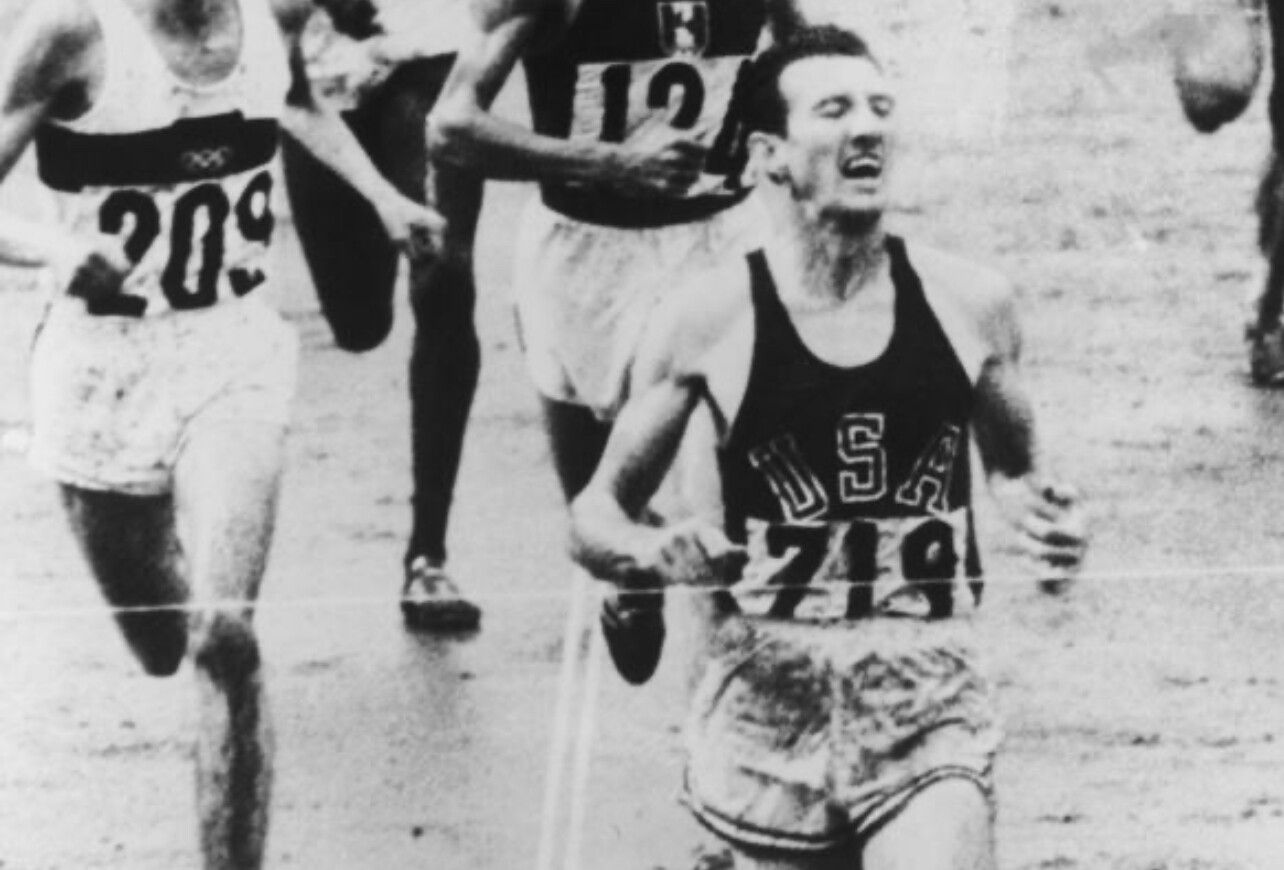
Schul was born in West Milton, Ohio, on 28 September 1937 and he took up running while at school. Despite his early career being impacted by an asthmatic condition, he went on to become a 4:34 high school miler and at collegiate level he ran for Miami University in Oxford, Ohio.
He then served in the US Air Force and was introduced to Hungarian coaching great Mihaly Igloi, who was last year honoured with a World Athletics Heritage Plaque.
He spent the next few years being coached by Igloi as part of the Los Angeles Track Club, which also featured athletes such as Laszlo Tabori, Jim Beatty, Jim Grelle and Max Truex.
Schul secured his first major medal in 1963, claiming 5000m bronze at the Pan American Games. The following year, he improved the US 5000m record by seven seconds to 13:38.0 and set a world best for two miles of 8:26.3.
His Olympic triumph came a couple of months later. Schul went into the 5000m final in Tokyo as the world leader and with a superb sprint finish he secured top spot there, too – getting gold in 13:48.8 ahead of Harald Norpoth of Germany and USA’s Bill Dellinger.
Schul had been in fifth place at the bell, with the race led by Michel Jazy of France. Schul was boxed in but found a gap with 300 metres to go. Despite racing on a rain-soaked cinder track, Schul ran 38.7 for that final 300 metres to take him to the title. He won by 0.8 seconds.
“What comes to mind is I was ready,” he told Karen Rosen during a 2019 interview for TeamUSA.org. “My workouts were fantastic. Nobody else did the workouts I did.”
Reflecting on the race in Tokyo, he added: “When we were in the last lap, coming around the turn, everybody was still there – there were probably 10 people. I got boxed in. I couldn’t get out, so I kept moving to the right a little bit, every step I took, and I forced the guys to go wider.
“Finally, I was free, but Jazy was way out there.”
In the end, Jazy – nor any of his other competitors – could respond to Schul’s ferocious kick.
In 1965 Schul set another US record, clocking 13:10.4 for three miles, but then a knee injury took its toll.
Following his own competitive career, Schul went into coaching and continued to run in masters events.
by World Athletics
Login to leave a comment
How to Find Your “Sweet Spot” Race Distance
Expert advice for focusing on your best event to maximize your running potential.Ever notice that some runs and races are more satisfying than others? These workouts aren’t necessarily the easiest runs or even the ones that are the most fun. Instead, they’re fulfilling because the distance feels challenging, but doable. You collect your medal and walk away thinking, “I bet I can do even better next time,” rather than, “thank goodness that’s over.”
If you have already clicked with a specific distance, you may have already found your running “sweet spot,” or the race length that fires up your inner athlete and gets you training for your next PR. But if you’re new to running or haven’t yet hit your racing stride, some experimentation and a little self-reflection will help you determine where to focus your time and effort when registering and training for events. To help you land on your sweet spot (and figure out what to do when you get there), we chatted with a few run coaches who have worked with athletes of all levels of experience and race preferences. Here’s what you need to know.
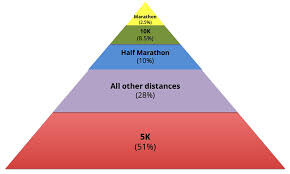
What factors determine your sweet spot race distance?
Before you declare yourself a 10K devotee or commit to running a marathon in every state, give yourself adequate time to build a personal relationship with running and experience different races.
“I don’t know if there’s really a set amount of time required to figure this out,” Matt Forsman, USATF/RRCA-certified running coach and race organizer at Sasquatch Racing, tells Runner’s World. “Some people run for years before determining what distance is their sweet spot. For others, a certain distance immediately speaks to them. If you’re new to running, I’d say give yourself at least six to nine months to build some running fitness, try a few distances, and go from there.”
As you rack up the miles and try different races on for size, it can be helpful to keep these factors in mind:
Fitness and Experience
“Your current level of running fitness should be an important part of the calculus in determining what race distance is best for you,” Forsman says, noting that shorter distances like 5K and 10K, while they present their own unique challenges, are generally more beginner-friendly than half marathons and marathons.
You may find that, even as a newbie, these shorter distances enable you to make noticeable progress that’s reflected in your race times. These wins are valuable, as they can keep you engaged and motivated.
Schedule and Lifestyle
Anyone who’s trained for a marathon or ultramarathon will tell you how all-consuming it can be. Some people have the necessary bandwidth or a flexible schedule. Others have the support and resources to fit training between competing priorities, like work, family obligations, and social events. But if you simply don’t have the time and energy to train for a specific distance, it’s probably not your sweet spot.“You should fit running in and around your life and not life in and around your running,” Todd Buckingham, Ph.D. exercise physiologist at PTSportsPRO in Grand Rapids, Michigan tells Runner’s World. “We do this because it’s fun. We do this because we want to push ourselves. But hopefully not to the extent of alienating friends and family. You need to find a distance that will work with your life.”
Location
If you train outdoors, you will always contend with temperature, climate, and terrain. Therefore, where you live will likely play a role in determining your sweet spot, Will Baldwin, USATF and VDOT-certified running coach in Flagstaff, Arizona tells Runner’s World
“If summer temperatures soar, focusing on local 5Ks instead of marathon training will be much more manageable,” Baldwin says. Of course, you can beat the heat by logging miles before or after sunrise, running on a treadmill, but workarounds often require extra planning and schedule adjustments. The same goes for training in frigid, icy temps.
In some cases, your zip code may present an advantage, as year-long temperate weather and extended daylight hours open up more opportunities for longer outdoor training runs.
“And if there’s a fantastic trail system nearby with plenty of races, it’s the perfect chance to test those trail-running skills and have some fun with it,” Baldwin adds.
Past Performance
Your race history is a clue to where your natural talents lie, which can help inform your sweet spot. “Genetics do play a role,” Buckingham says. “Some people have the diesel engine where they can just go all day long, but they can’t go any faster…other people are really good at short distances but struggle at long distances.” Buckingham and Baldwin recommend checking out online tools like the VDOT Running Calculator, which uses one race distance time to determine your estimated time for other distances. Runner’s World also has an easy-to-use race time predictor. Say, for example, your half-marathon PR is 2:10. The calculator uses this information to suggest an exhaustive list of predicted race times, including a 58:40 10K. However, if your 10K PR is actually 56:10, you may be better suited to the 10K.
“Athletes can use this tool to see which of their PRs is the most distinguished for each distance, helping them determine their ideal race distance,” Baldwin says.
You can also garner a lot of information by participating in local races and looking at race results. “See where you finish in relation to other people your age and sex because that will probably tell you just as well,” Buckingham says.
Injuries
“I think it's important to consider any aggravations and injuries you’ve incurred,” Forsman says. “Running is a high-impact sport that generates about three to seven times your bodyweight in impact force per foot strike. If you have [had] a number of injuries in your recent or distant past, shorter distances like the 5K or 10K may make the most sense. Conversely, if you’ve never had any running-related injuries and your running fitness level is high, a longer distance might work great for you.”
Your Happiness and Enjoyment
Do you notice that some races are simply more fun than others? Pay attention to those gut-level feelings, even if they contradict all of the other data you’ve collected, Baldwin says.
“When figuring out an athlete’s ideal race distance or their sweet spot, I love to start with what excites them the most,” he says. “Even if someone shines in a 10K or half marathon, their heart might be set on the full marathon. Passion is often the fuel source of consistent training, so tapping into that excitement is really important.”How do you level up in your sweet spot race distance?
Once you find your sweet spot, you may need to make some adjustments to your running routine because a training program should be tailored to your upcoming event, if you plan to race.
“If you’re currently running a few easy miles a few times a week but really want to run a fast 5K, you’re going to need to inject some ‘quality,’ like tempo, intervals, and hills, to develop strength and speed,” Forsman says. “If you want to simply tackle a longer distance like a half or full marathon, you’re going to need to gradually add some more miles into your training to build stamina and endurance.”
Focusing on one distance also allows you to fine-tune your fueling and hydration strategy, especially if you opt for longer distances. “If the event we’re training for is going to take us over 90 minutes to complete, we have to start talking about and practicing fueling. We’ll need to incorporate either some liquid fuel or energy gels to help us finish the race and utilize all of our fitness,” Baldwin says. “It’s an added expense to have fuel for all of the important long runs and races, so it’s also something to consider when choosing your ideal race distance,” he adds.
Are there downsides to sticking with one race distance?
It can be rewarding to climb the ranks in sweet spot events, but the experts caution against getting too “stuck” in your sweet spot.
“You should definitely be mixing up the types of races you do,” Baldwin says. “It’s common for a marathon runner to come to me who has been stuck at a certain level for years. When I go back through their training history, they almost always have been doing only marathons for several years in a row. They’ve neglected the shorter races, speed work, and their leg turnover.” Baldwin explains that training at different paces engages different energy systems, and temporarily focusing on shorter, faster distances can improve your speed and efficiency, even on slower endurance runs.
The same concept applies to runners with a shorter sweet spot. “If shorter distances like the 5K or 10K are your thing, there’s still utility in tackling longer distances. Training for a longer distance can help you better manage fatigue in the latter stages of your 5K or 10K,” Forsman says.
Plus, you could miss out on what got you hooked on running in the first place. “Professional athletes have to specialize and really just focus on one event because that’s how they earn their livelihood. But the average runner should have fun with it,” Buckingham says. “If you have fun doing one race distance, that’s fine. But don’t be afraid to jump in the local 5K if your friends ask you to join them.”
by Runner’s World
Login to leave a comment
Two B.A.A. Athletes Qualify For U.S. Olympic Team Trials
The Boston Athletic Association (B.A.A.) today announced that B.A.A. High Performance Team members Annie Rodenfels and Bethany Hasz have earned spots on the starting line for the U.S. Olympic Team Trials – Track & Field, to be held later this month in Eugene, Oregon from June 21-30.
Rodenfels will compete in the women’s 3000m steeplechase (preliminary round June 24/final on June 27), while Hasz will toe the line in the women’s 5000m (preliminary round on June 21/final on June 24).
The Trials will be held at historic Hayward Field in Eugene, Oregon, with top three finishers in each event slated to qualify for the Paris Olympic Games (so long as athletes have met the Olympic standard or earned enough qualifying points).
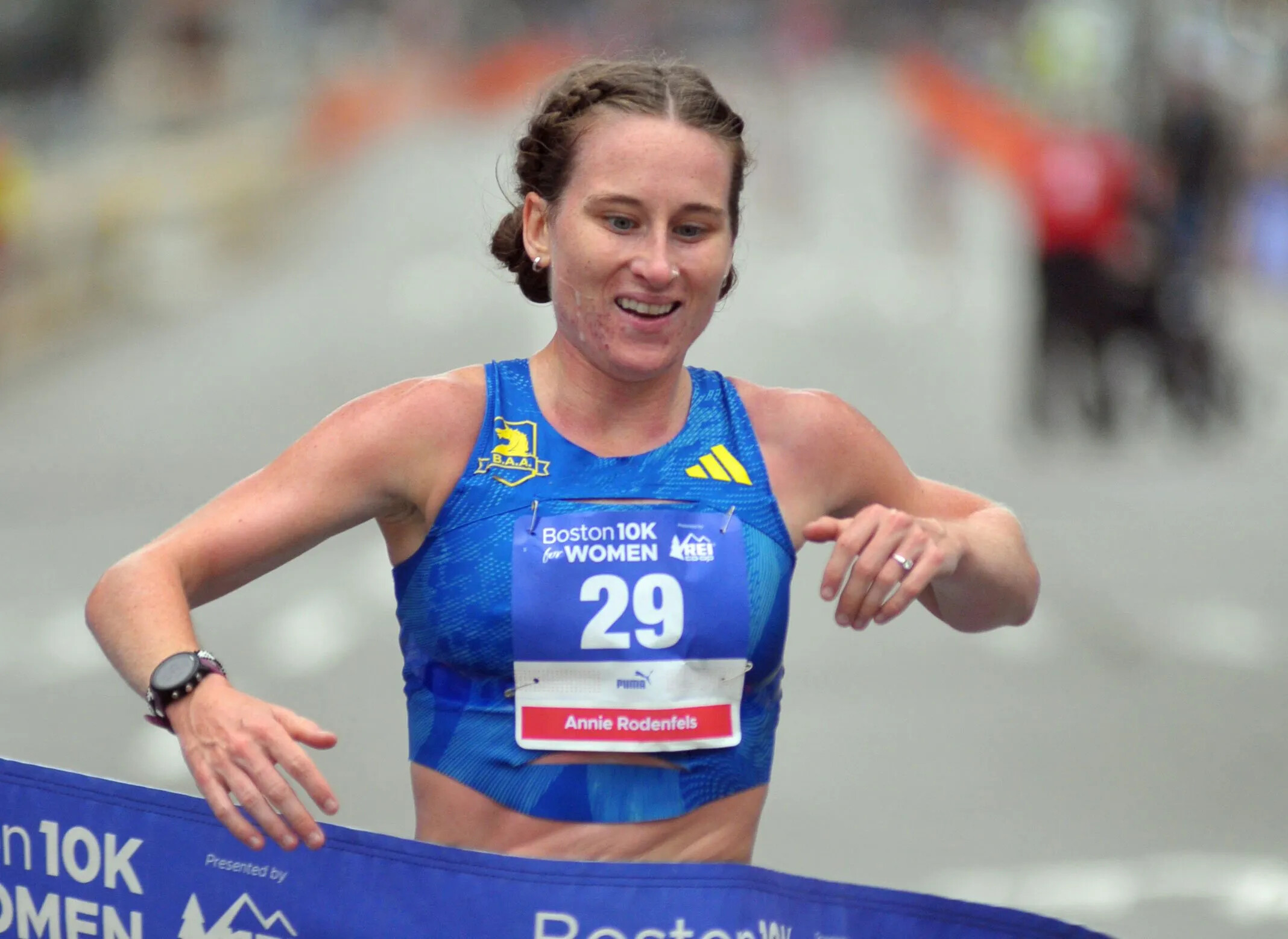
Rodenfels’ personal best in the steeplechase is 9:25.48, set last year. She won the steeplechase at the Drake Relays this year (9:31.03), was fourth at the Boston 5K in April, and clocked 15:03.97 indoors for 5000m in December 2023. Last fall she won the USATF 5K National Championship on the roads in New York City.
Hasz is coming off a 5000m lifetime best of 15:05.80 set May 17 in winning the Drake Relays 5000m. This year she’s also recorded personal bests in the road 5K (15:30), road 10K (32:03), and mile indoors (4:39.24). She earned a bronze medal at the 2023 USATF 5K National Championships, finishing third just behind Rodenfels and Olympian Rachel Smith.
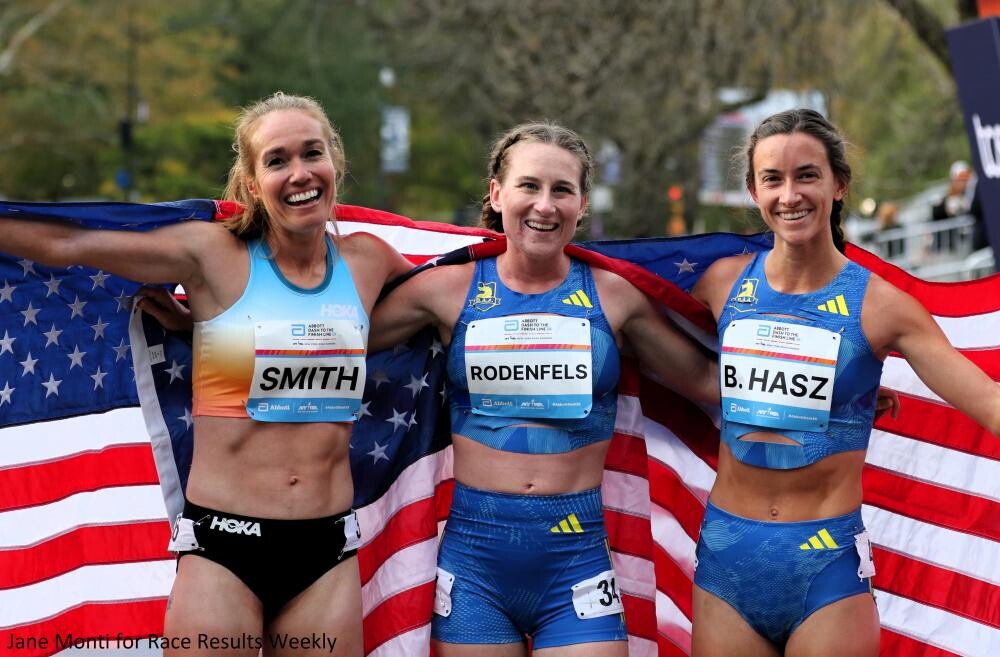
The B.A.A.’s High Performance team supports runners on their way towards making international teams, with the goal of competing at the highest level: the Olympic Games, World Athletics Championships, and Abbott World Marathon Majors. The B.A.A. is sponsored by adidas, which provides comprehensive support for the organization’s High Performance team, running club, and mass-participatory events.
B.A.A HIGH PERFORMANCE TEAM ROSTER:
Eric Hamer
Bethany Hasz
Megan Hasz
Josh Kalapos
Barry Keane
Matt McDonald
Annie Rodenfels
Abbey Wheeler
ABOUT THE BOSTON ATHLETIC ASSOCIATION (B.A.A.)
Established in 1887, the Boston Athletic Association is a non-profit organization with a mission of promoting a healthy lifestyle through sports, especially running. The B.A.A. manages the Boston Marathon, and supports comprehensive charity, youth, and year-round programming. The 129th Boston Marathon presented by Bank of America is scheduled to take place on Monday, April 21, 2025. The Boston Marathon is part of the Abbott World Marathon Majors, along with international marathons in Tokyo, London, Berlin, Chicago, and New York City. For more information on the B.A.A., please visit www.baa.org.
by B.A.A.
Login to leave a comment
U.S. Olympic Team Trials Track And Field
Eugene, Oregon has been awarded the 2024 U.S. Olympic Team Trials - Track & Field, USA Track & Field and the U.S. Olympic & Paralympic Committee announced today. From June 21 to 30, Hayward Field at the University of Oregon will be home to one of the biggest track and field competitions in the country, as the U.S. Olympic Team...
more...Noah Lyles says his goal is to win four gold medals in Paris
The world 100m champion appeared on The Tonight Show with Jimmy Fallon and said he wants to become the first male sprinter to win four Olympic gold medals.
The world 100m champion, Noah Lyles, appeared on The Tonight Show with Jimmy Fallon on Monday night to discuss his role in the upcoming Netflix documentary series “Sprint” and his goals for the Paris Olympics. Lyles confidently stated his ambition to achieve something no male track and field athlete has done before: win four gold medals at a single Olympics.
“Everyone knows Usain Bolt; I want to be faster and more decorated than Bolt,” Lyles told Jimmy Fallon. “He’s done three. I want four, that’s the Mount Rushmore–now you’re the greatest of the great.”
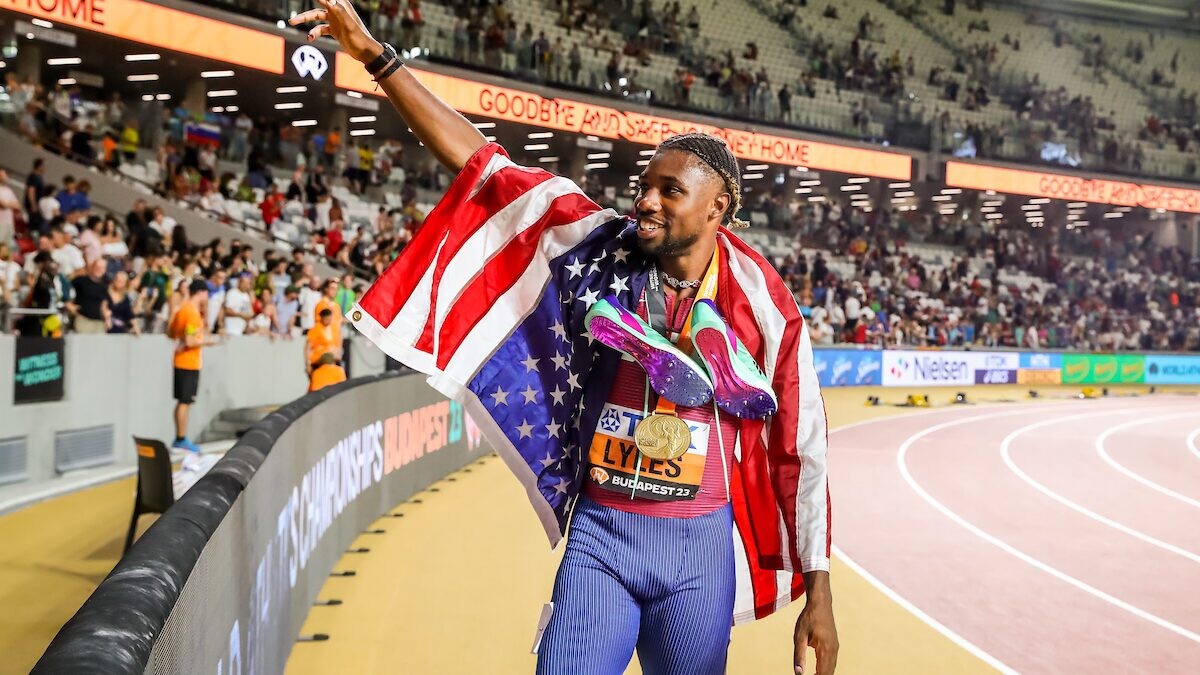
At the 2023 World Championships in Budapest, Lyles became the first athlete to win the sprint double (100m and 200m) at a major championship since Bolt did so at Rio 2016. He added another gold medal in the men’s 4x100m, where Team USA redeemed themselves after finishing second to Canada in 2022 on home soil.
For Lyles to win four gold in Paris, he would need to win the 100m and 200m, 4x100m relay and 4x400m relay.
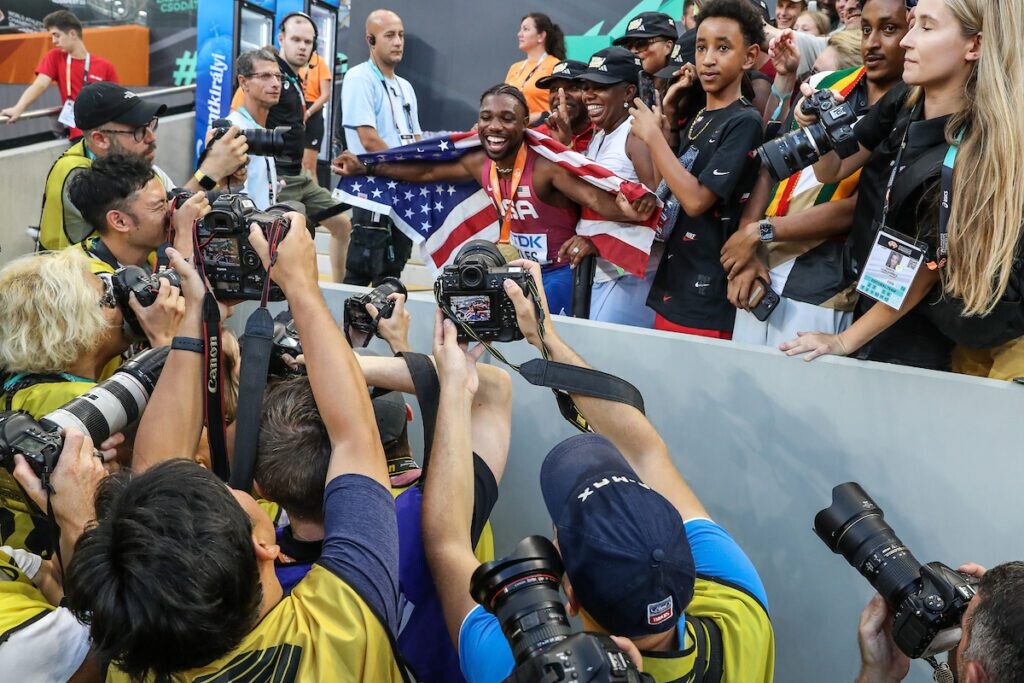
Only two athletes have won four medals at one Olympic Games: U.S. sprint icon Florence Griffith-Joyner won three golds and one silver medal (in the 4x400m) at Seoul in 1988. Fanny Blankers-Koen of The Netherlands is the only athlete to win four golds–at the 1948 Olympics in London, where she won the 100m, 200m, 4x100m relay, and 80m hurdles.
When Fallon asked Lyles why he wanted to put extra pressure on himself for Paris, Lyles said his goal is to win Olympic medals and break world records. “It’s been a long time since someone has done it, but growing up, I’ve always felt like that title belongs to me.” Bolt’s world records of 9.58 in the 100m, and 19.19 in the 200m have been untouched for the past 15 years.
Despite being the world champion in the 100m and 200m, Lyles’s first test will come at the USATF Olympic Trials from July 21-30 in Eugene, Ore., where he will aim to make his second Olympic team. The top three finishers in each event at trials will secure a spot on the U.S. Olympic team, provided they have met the Olympic standard or are in the World Athletics rankings quota.
by Marley Dickinson
Login to leave a comment
Paris 2024 Olympic Games
For this historic event, the City of Light is thinking big! Visitors will be able to watch events at top sporting venues in Paris and the Paris region, as well as at emblematic monuments in the capital visited by several millions of tourists each year. The promise of exceptional moments to experience in an exceptional setting! A great way to...
more...Sydney McLaughlin-Levrone on her U.S. Olympic Trials prep ahead of Paris 2024
With the U.S. Olympic Team Trials for track and field just few days away, the building blocks seem to be coming together for Sydney McLaughlin-Levrone.
"I'm feeling good," McLaughlin-Levrone told a small cluster of reporters at the USATF NYC Grand Prix on Sunday (9 June) after she soared to victory in the open 400m.
"Good" could be an understatement: She was just 0.05 seconds off of Sanya Richards Ross' 48.70 from 2006, the American record, in what was McLaughlin-Levrone's first outing in the event in the 2024 season.
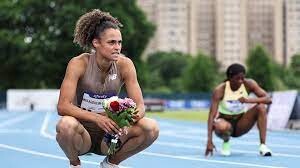
"OMG. That was unbelievable!" a more expressive - and perhaps somehwat relieved - Richards Ross said in the NBC commentary booth after Sydney's 48.75. "Wow. Wow. Wow! Great run by Sydney!"
The time was a world lead in the event.
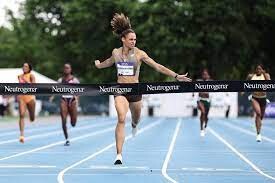
It came a little more than a week after her best-of-the-season 52.70 in the 400m hurdles - the event in which she is the world record holder and reigning Olympic champion.
"I'll take that," McLaughlin-Levrone said of the time and the victory, even if it wasn't exactly what she was going for. "[I wanted] the American record," she added when asked about the hope for the day.
The 24-year-old appears to have a one-track mind with the Olympic Games Paris 2024 drawing ever closer. The last five weeks have entailed five wins across four different events: The 400m flat, 200m, 100m hurdles and - her signature - 400m hurdles.
"I'm sure Bobby will have some notes for me," she said, cracking a smile when bringing up legendary coach Bobby Kersee after her New York win.
SYDNEY MCLAUGHLIN-LEVRONE: EYES ON PARIS 2024
McLaughlin-Levrone let her speed do the talking in New York with the 21 June start at Trials in Eugene, Oregon: "I'm just getting ready for the Trials... getting ready for the Games," she said.
She sat on the track for a good 10 minutes at Icahn Stadium in NYC after her win, catching her breath and doing a light amount of stretching. She's still cautious of the knee injury that interrupted her 2023 season, forcing her out of the World Championships.
The team is attacking from a technical perspective. Facing a headwind on Sunday, she was forced to dig deep in her training to finish strong.
"I wanted to get out there and get a race under me," she said on NBC of the 400m. "It's working on the back-end work. Working on coming home. I'm going to need it for those hurdles."
After her 52.70 world lead in the 400m hurldes on 31 May, Femke Bol, the Olympic bronze medallist from Tokyo 2020 in 2021, went 53.07 two days later at the Diamond League stop in Stockholm.
"I'm going to go back home and continue to plan some stuff," McLaughlin-Levrone said in New York.
A mere 0.05 off a national record, McLaughlin-Levrone shrugged it off in a way.
"I don't think I would count that as 'crazy,'" she said in response to one reporter.
A minute later, Sydney was thanking reporters and walking away... clearly determined to get to the next step in her path towards another Olympic podium.
by Nick McCarvel
Login to leave a comment
U.S. Olympic Team Trials Track And Field
Eugene, Oregon has been awarded the 2024 U.S. Olympic Team Trials - Track & Field, USA Track & Field and the U.S. Olympic & Paralympic Committee announced today. From June 21 to 30, Hayward Field at the University of Oregon will be home to one of the biggest track and field competitions in the country, as the U.S. Olympic Team...
more...U.S. sprinter Fred Kerley calls out track meet for bad starting blocks
This was supposed to be Kerley's first 100m since he stated he'd break Usain Bolt's world record the next time he raced the distance.
Former world 100m champion Fred Kerley was slated to be a headliner at Sunday’s USATF New York City Grand Prix in the men’s 100m. However, Kerley did not end up racing after he slipped in the starting blocks twice. Despite these mishaps, he chose not to race.
In a post-race interview with Citius Mag, Kerley said that one of his starting block pads was broken, and he had requested new blocks. “I slipped the first time, and then I slipped the second time. I wasn’t about to let it happen a third time,” Kerley said.
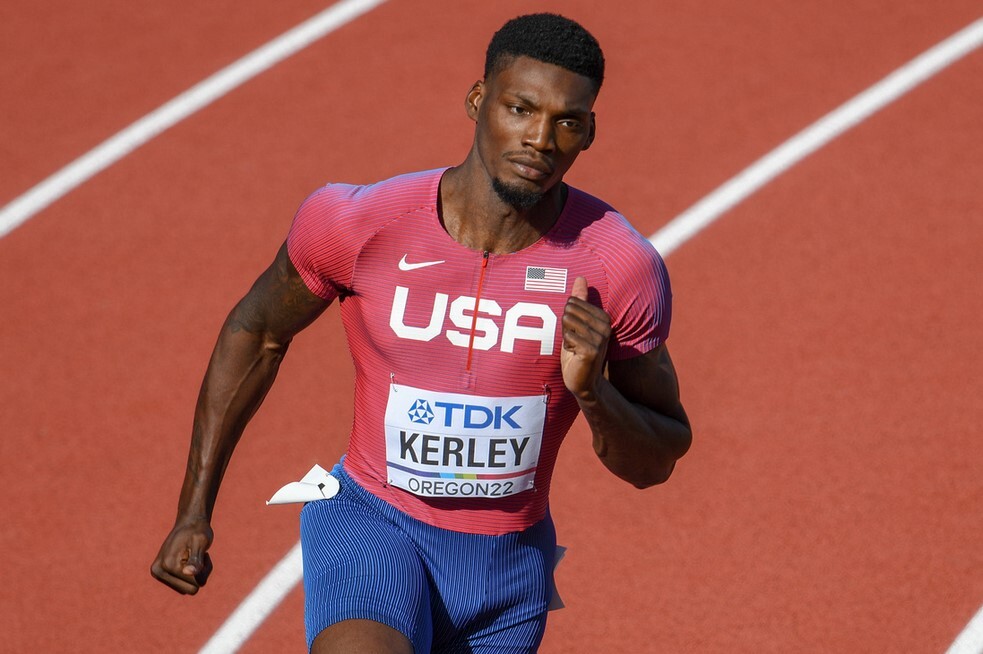
He took to Twitter after the race to criticize the World Athletics Continental Tour meet for using “high school level blocks.”
The 100m at the NYC Grand Prix ended up being won by Nigeria’s Udodi Onwuzurike, with a 10.24 second clocking into a -0.7 m/s headwind.
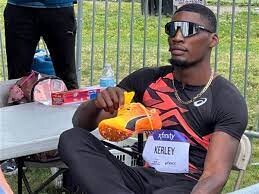
This race was supposed to be Kerley’s first 100m since he publicly stated he’d break Usain Bolt’s world record the next time he raced the distance. Kerley has not competed in the 100m since the Shanghai Diamond League on April 27 and has not yet broken the 10-second mark this season.
Kerley has a personal best of 9.76 seconds from the 2022 World Championships, which he won. He is also the reigning Olympic silver medalist in the 100 meters.
Before the race, Kerley drew attention in the warm-up area at Icahn Stadium, where he was spotted wearing Puma spikes (instead of his sponsor, Asics). It came out after the race that Kerley is now without a sponsor, as Asics announced that they had mutually parted ways with him after reaching a multi-year deal just last year. There has been no official statement on why the sponsorship ended, but Kerley was rumored to be frustrated with the custom “world champion” spikes the brand made for him.
The 29-year-old plans to compete in the 100m and 200m at the U.S. Olympic Trials in two weeks.
by Marley Dickinson
Login to leave a comment
American track star Parker Valby wins NCAA 10,000m title in controversial shoes
Valby wore customized Nike Vaporfly Next% 3 track spikes, which are 40 mm high.
There is no doubt University of Florida athlete Parker Valby is one of the best American distance runners on the scene today; on Thursday, she earned her fifth career NCAA track and field title, winning the women’s 10,000m event in a championship record 31:46.09. After the race, Valby told Citius Mag she had a boost from her custom 40 mm stack height Vaporfly Next% 3 track spikes, which, if the NCAA followed World Athletics competition rules, would be illegal.
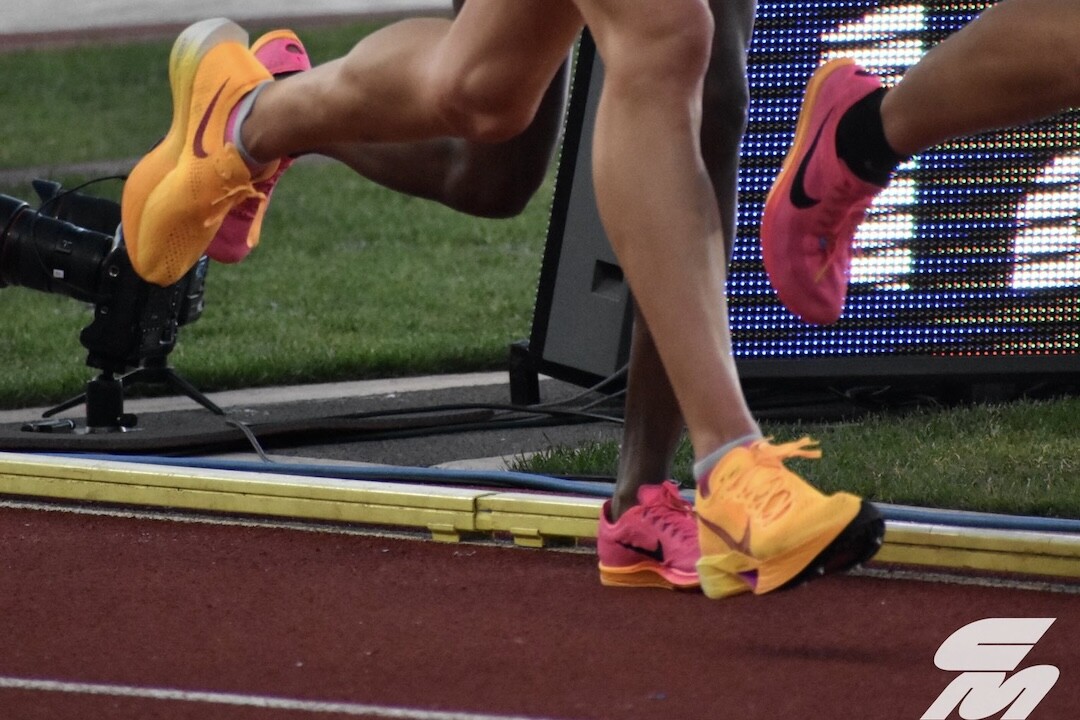
Since there are no rules against 40 mm shoes (with or without spikes) or prototypes in the NCAA, Valby was allowed to wear them. In World Athletics-accredited competitions, track spikes with a stack height over 25 mm are not allowed. When Valby was asked about her spikes post-race, she said Nike made them for her and presented several options for this race.
The Nike Vaporfly Next% 3 is typically used for road racing, and features a carbon-fiber plate and a max-cushioning midsole with a 40 mm stack height in the heel. This combination of the carbon-fiber plate and foam on impact increases energy return, meaning more of the runner’s exerted energy is converted into forward motion, improving speed and reducing fatigue. With spike pins added, this shoe would certainly enhance performance significantly on the track.
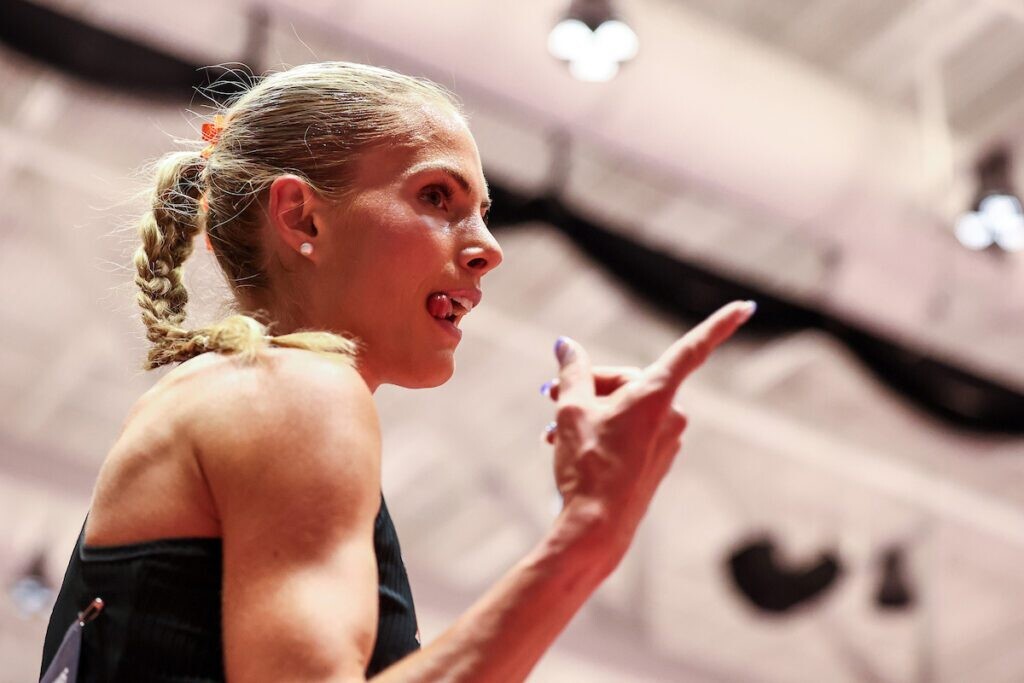
Valby will compete again at the 2024 NCAA Track and Field Championships on June 8 in the women’s 5,000m. She has not stated whether she will wear her personal prototype shoe. She is the reigning NCAA champion over the distance.
Valby, 21, was the only athlete in the women’s 10,000m final wearing these max-cushioned custom spikes, and she made it look easy, spending the first few laps of the 10,000m waving to herself on the Hayward Field jumbotron. Since USATF follows World Athletics competition rules, Valby’s winning time from this race would not be eligible for the U.S. Olympic Trials 10,000m qualification (though it doesn’t matter, since she has previously run a qualification time wearing a WA-legal pair of spikes).
World Athletics introduced in-competition stack height rules in 2021 to ensure fairness, maintain the integrity of the sport and address the performance advantages provided by technological advancements in footwear. As things stand in the NCAA, athletes who wear shoes with a heel stack height over the legal 25 mm will not have their times count for anything outside of the NCAA; this makes monitoring the issue extremely complicated, with hundreds of meets condensed over a 3.5-month season.
by Marley Dickinson
Login to leave a comment
World Athletics Adds Ranking Spots to Olympic Men’s Marathon Field — American Leonard Korir Will Run in Paris
The United States will have three men in the 2024 Olympic marathon after all. Following months of uncertainty, World Athletics added one universality place and four rankings places to the Olympic marathon field on Tuesday. The four ranking spots were awarded to athletes from Chile, South Africa, the United States, and Australia, meaning that Leonard Korir will join Americans Conner Mantz and Clayton Young on the Olympic marathon start line on August 10.
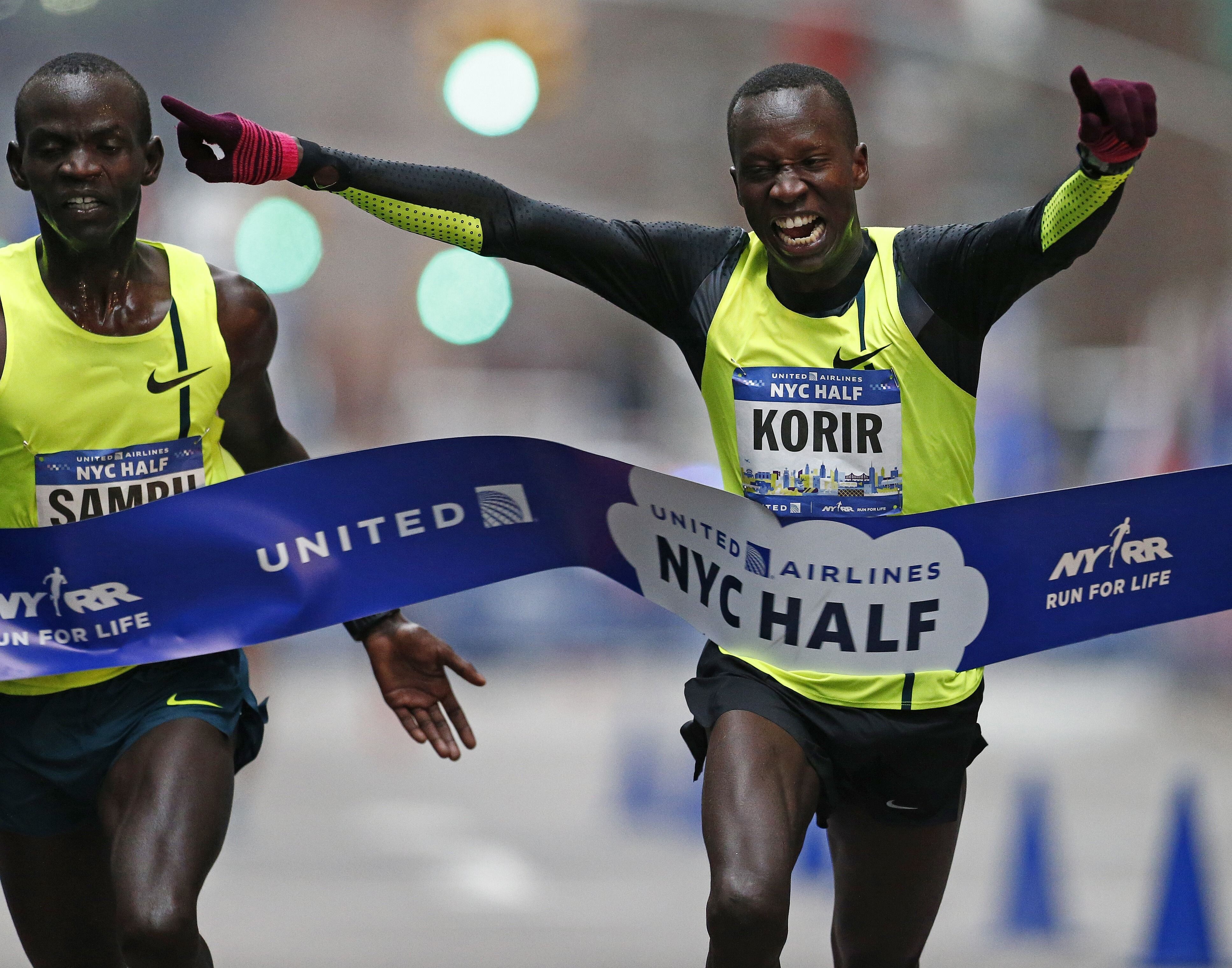
Korir’s spot had been in jeopardy after World Athletics added 11 universality places on May 8, but the Road to Paris list of qualifed athletes has been updated and American CJ Albertson is now listed as qualified at spot #84. Per USATF selection procedures, Albertson’s place will pass to Korir, the third-placer at February’s US Olympic Marathon Trials. Korir’s coach Scott Simmons confirmed to LetsRun.com that Korir is now qualified and will compete in the Olympic marathon on August 10.
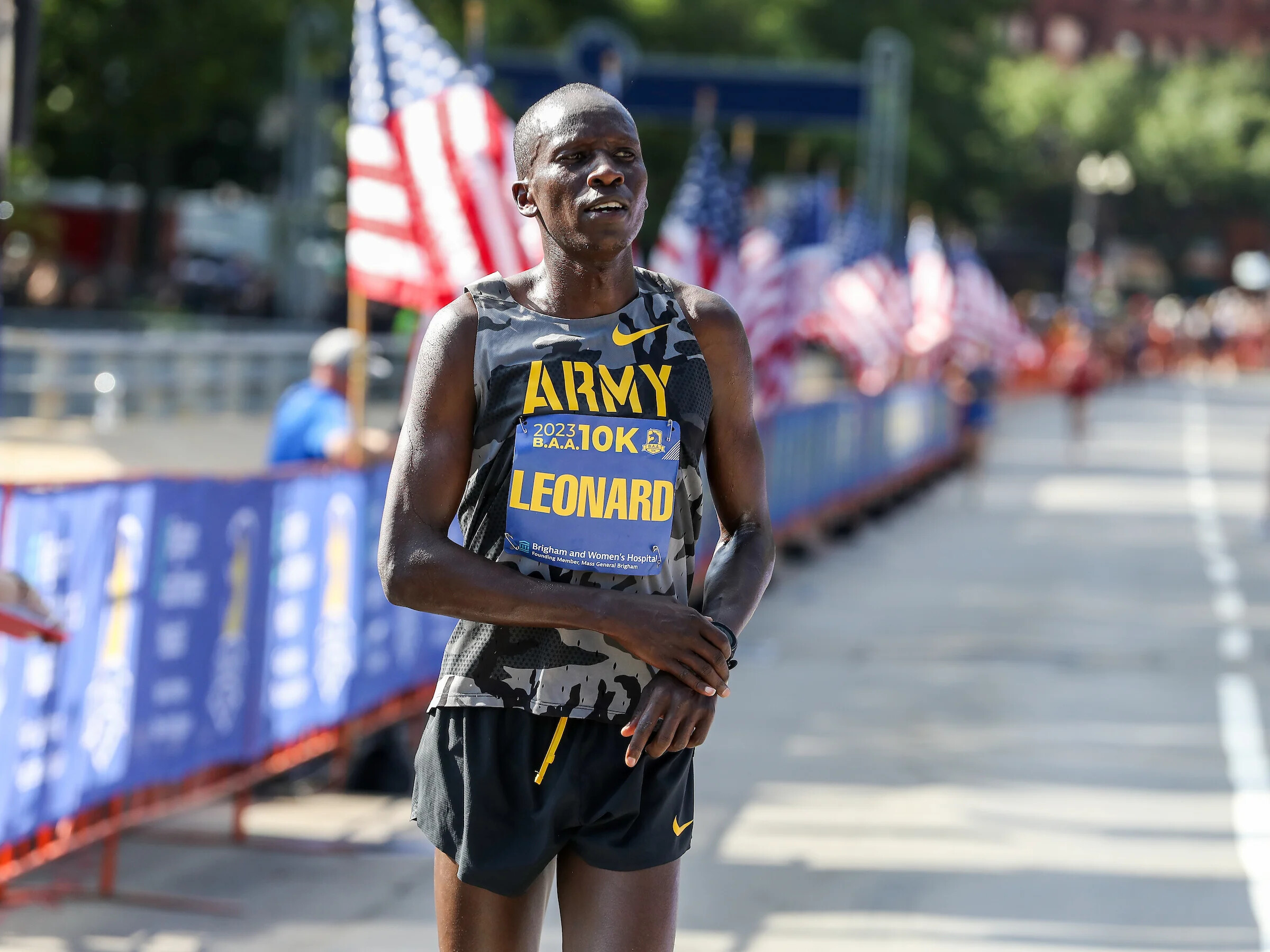
Australia’s Wide World of Sports reported that in recent weeks, World Athletics had been working on a solution to fit some highly-ranked athletes into the Olympic marathon while respecting Olympic sport quota limits set by the International Olympic Committee.
It was not immediately clear why World Athletics added four ranking places on Tuesday; this story will be updated as LetsRun.com learns more.
by Jonathan Gault
Login to leave a comment
Paris 2024 Olympic Games
For this historic event, the City of Light is thinking big! Visitors will be able to watch events at top sporting venues in Paris and the Paris region, as well as at emblematic monuments in the capital visited by several millions of tourists each year. The promise of exceptional moments to experience in an exceptional setting! A great way to...
more...This U.S Olympic medallist is boycotting race bibs for the 2024 season
An American hurdler is creating buzz in the track and field world in an unconventional way by boycotting race bibs for the 2024 track and field season. The Olympic silver medallist in the 400m hurdles, Rai Benjamin, has not worn a bib in either of his races to start the season, and plans to continue.
After winning the 400m hurdles event at the USATF Los Angeles Grand Prix over the weekend in 46.64 seconds, Benjamin told Citius Mag in a post-race interview that he considered the use of bibs a waste of money and felt they ruined the appearance of the uniform. “I’m not wearing that thing. It’s a waste of money and the uniform looks too good to wear a bib, so I’m continuing my no-bib campaign here today,” said Benjamin.
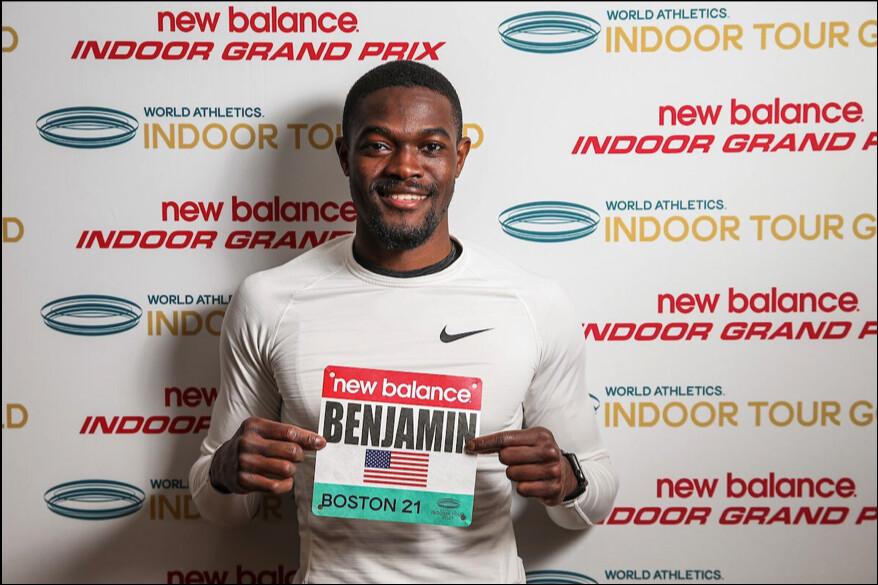
Benjamin is not the only professional athlete to speak out against wearing race bibs. Former U.S. Olympic champion Michael Johnson was quoted by The New York Times in 2023 as having similar beliefs: “When an athlete is trying to focus on performing at their best, the bibs are a distraction. The fastest, most efficient athletes in the world compete with a piece of paper safety-pinned on. It just reeks of amateurism.”
Race bibs are a mandatory staple of every runner’s race-day attire. While their main purposes are live-tracking and identifying runners, they also generate significant race-day revenue through sponsorships.
Per World Athletics competition rules, all athletes competing at a World Athletics sanctioned meet are required to wear a race bib. According to technical competition rules 5.8-9, “no athlete shall be allowed to take part in any competition without displaying the appropriate bib(s) and/or identification. These bibs must be worn as issued and may not be cut, folded or obscured in any way. If any aspect of Rule 5 of the technical rules is not followed, a disqualification may follow.”
Benjamin’s first two races of the season have been at low-key events; it will be interesting to see if race officials will follow the World Athletics rulebook and disqualify him at future events like the U.S. Olympic Trials in late June and the Olympic Games in August if he does not comply.
The 26-year-old is one of the favourites to medal in the 400m hurdles event in Paris. He has medalled at the last four major championships in the event, dating back to the 2019 World Championships in Doha.
by Running Magazine
Login to leave a comment
Mile clash the big attraction in Eugene
Going strictly by time, the Bowerman Mile at the Prefontaine Classic on Saturday (25) is one of the fastest races in the meeting’s 49-year history.
Add in the storylines, and it’s one of the most anticipated, too.
Featuring seven men with lifetime bests faster than 3:50, Olympic and world championship gold medallists, world record-holders and rivals whose banter has preceded the matchup for months, the mile caps a Wanda Diamond League meeting at Hayward Field whose potential for world-leading marks extends far beyond its final event.
Consider, for one, the women’s 800m, and the early window it will open into this summer’s Olympics. The field includes six of the eight competitors from last year’s World Championships final in Budapest, including gold medallist Mary Moraa and silver medallist Keely Hodgkinson. Notably absent will be bronze medallist Athing Mu, the Olympic champion, who was initially scheduled to race but has been withdrawn out of precaution because of a sore hamstring.
Raevyn Rogers, the 2019 world silver medallist whose image adorns a tower standing high above Hayward Field, also is entered, along with Jemma Reekie, Nia Akins and Halimah Nakaayi, who is coming off a victory at the USATF Los Angeles Grand Prix.
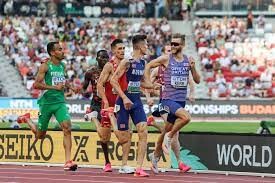
World champion Sha’Carri Richardson and Elaine Thompson-Herah headline the women’s 100m, along with world indoor 60m champion Julien Alfred and Marie-Josee Ta Lou-Smith, while world indoor 60m champion Christian Coleman and Ackeem Blake are among the fastest entered in the men's 100m.
Perhaps the most dominant athlete entering the meeting is Grant Holloway, the world 110m hurdles champion who has won all 10 races he has contested this year, including the indoor season and heats. That also includes running a world-leading 13.07 into a headwind to win in Atlanta last weekend.
The three-time world champion's last loss came on the very same Hayward Field track, at last September’s Prefontaine Classic. The only remaining gap on Holloway’s resume is an Olympic gold medal, and Saturday’s race could be an early preview of Paris, as the field includes five who raced in last summer’s World Championships final in Budapest, including silver medallist Hansle Parchment and Daniel Roberts, who earned bronze.
Shot put world record-holder and multiple world and Olympic champion Ryan Crouser will open his outdoor season in his home state and at the stadium where he owns the facility record, while trying to best Leonardo Fabbri’s world-leading mark of 22.95m.

Since 2023, Crouser has lost in just one final – and it was at September’s Prefontaine Classic to Joe Kovacs, who won in Los Angeles last weekend with 22.93m, and is entered again. Payton Otterdahl, who owns the world No.3 mark this year, also is in the field.
Those events offer no shortage of global medallists. Few, however, carry the prospect for as much drama as the mile.
Over the past year, Olympic 1500m champion Jakob Ingebrigtsen and Josh Kerr, who outkicked Ingebrigtsen for last year’s world title in Budapest, have carried on a battle of words through the press about who could prevail in Paris.
Commonwealth champion Olli Hoare, who is part of the field following his 1500m win in Los Angeles last week, said the sport was better for the attention drawn by the back-and-forth between Ingebrigtsen and Kerr – but added that other racers wanted to strike the appropriate level of respect for their competitors, such as Yared Nuguse, whose PB of 3:43.97 was set battling Ingebrigtsen (4:43.73) down to the line at September’s Pre Classic.
“This is a big one. This is going to be a big one for a lot of egos,” Hoare said in Los Angeles. “But I think it’s going to be a big one for me because it’ll be the first race where I’ll have an inkling of where I am with the world’s best. There’s a bit of tossing and turning with the banter but you can’t disrespect that field. If you do, you’ll get eaten alive.”
That list of seven men under 3:50, which includes Hoare, notably doesn’t include Jake Wightman, who will be racing Ingebrigtsen for the first time since their duel at the 2022 World Championships in Oregon, when Wightman won gold; Abel Kipsang, who was fourth at the Tokyo Olympics; Geordie Beamish, less than three months after he stormed to the world indoor title; or Lamecha Girma, the steeplechase world record-holder who is making his mile debut.
“Jake Wightman’s back, he’s a world champion,” Hoare said. “Yared Nuguse, 3:43 mile – these guys are keeping quiet and they’re going to wait for their opportunity to strike. And when they do strike, I guarantee they will make a comment.”
They are not the only accomplished names entered in the distances.
Athletics Kenya will determine its men's and women's Olympic 10,000m qualifiers at Hayward Field, with Kenya's two-time world cross-country champion Beatrice Chebet, the world leader at 5000m this season, part of a women's race that will include world champion Gudaf Tsegay of Ethiopia, eight months after Tsegay set the world 5000m record on the same track.
World record-holder Beatrice Chepkoech will attempt to retain her controlling hold over the steeplechase when she races top challenger Faith Cherotich. The Kenyan duo produced the two fastest times in the world this year at the Diamond League meeting in Xiamen, which Chepkoech won in 8:55.40 to Cherotich’s 9:05.91. Olympic silver medallist Courtney Frerichs will no longer run after injuring the ACL and meniscus in her right knee.
One week after winning in Los Angeles, Diribe Welteji leads the 1500m field that includes 13 women who have run under four minutes. World indoor 3000m champion Elle St Pierre, who won the 5000m in Los Angeles, is running her first 1500m of the season, with Laura Muir, Nikki Hiltz, Jessica Hull, Hirut Meshesha and Cory McGee also entered.
Multiple world and Olympic gold medallist Sifan Hassan, as well as world No.2 Ejgayehu Taye, will feature in the 5000m.
In the field, world and Olympic pole vault champion Katie Moon opens her outdoor season against Sandi Morris, and in the triple jump four of the top five women this season are entered, led by Thea LaFond, whose 15.01m jump to win the world indoor title in Glasgow still stands as the mark to beat.
Olympic discus champion Valarie Allman has not lost in Eugene in two years, a run that includes claiming September’s Diamond League final. That could change on Saturday because of the presence of world leader Yaime Perez, who finished second to Allman in Xiamen last month.
In the men’s 200m, top US sprinters who will duel at the Olympic trials only weeks later will face off. Kenny Bednarek, fresh off a world-leading 19.67 in Doha, is scheduled to race against world No.2 Courtney Lindsey (19.71), with world silver medallist Erriyon Knighton making his season debut. Joe Fahnbulleh and Kyree King, winner of the Los Angeles Grand Prix 100m, are also entered.
Another winner in Los Angeles, Rai Benjamin, headlines the men’s 400m hurdles, and he enters with considerable confidence after running 46.64, the ninth-fastest performance of all time.
“I think I’m the fastest guy in the field, honestly,” Benjamin said of potential Olympic chances.
The women’s 100m hurdles and women’s hammer will not count towards Diamond League points totals, but will be more potential previews for global championships.
Women who account for five of the year’s six fastest times, all of whom are separated by fractions of a second, will face off in the hurdles. Tonea Marshall, fresh off her victory in Los Angeles in 12.42, leads 2019 world champion Nia Ali, Olympic champion Jasmine Camacho-Quinn, two-time world champion Danielle Williams and world indoor champion Devynne Charlton.
Brooke Andersen’s 79.92m throw from earlier this month remains the world-leading hammer mark this season but she will be challenged by world champion Camryn Rogers, 2019 world champion DeAnna Price and world silver medallist Janee’ Kassanavoid, who own the next three farthest throws this season.
by Andrew Greif for World Athletics
Login to leave a comment
Prefontaine Classic
The Pre Classic, part of the Diamond League series of international meets featuring Olympic-level athletes, is scheduled to be held at the new Hayward Field in Eugene. The Prefontaine Classicis the longest-running outdoor invitational track & field meet in America and is part of the elite Wanda Diamond League of meets held worldwide annually. The Pre Classic’s results score has...
more...U.S. star Sydney McLaughlin-Levrone will run the 400m hurdles at Paris Olympics
American track star Sydney McLaughlin-Levrone will compete in her fourth meet of the season on Saturday in Los Angeles, matching the total number of races she ran last year. Ahead of the race, McLaughlin-Levrone and her coach, Bobby Kersee, addressed her training focus for the 2024 Paris Olympics, stating that her plans are only to run the 400m hurdles at the U.S. Olympic Track and Field Trials next month, returning to her signature event after racing the flat 400m in an injury-shortened 2023.
Kersee confirmed Friday that McLaughlin-Levrone’s plans for U.S. Trials is to stick to the 400m hurdles, which take place June 21-30 in Eugene, Ore. The top three finishers in each event (if they have the standard) will make Team U.S.A. for Paris. When Kersee was asked what went into the decision, he said: “That’s her main event. That’s what we want to defend our Olympic championship in.”
“I think Sydney’s love is the 400m hurdles, and so that’s the number-one event,” Kersee told NBC Sports. “My job is to make sure that she gets ready for the one that she wants to do the most.”
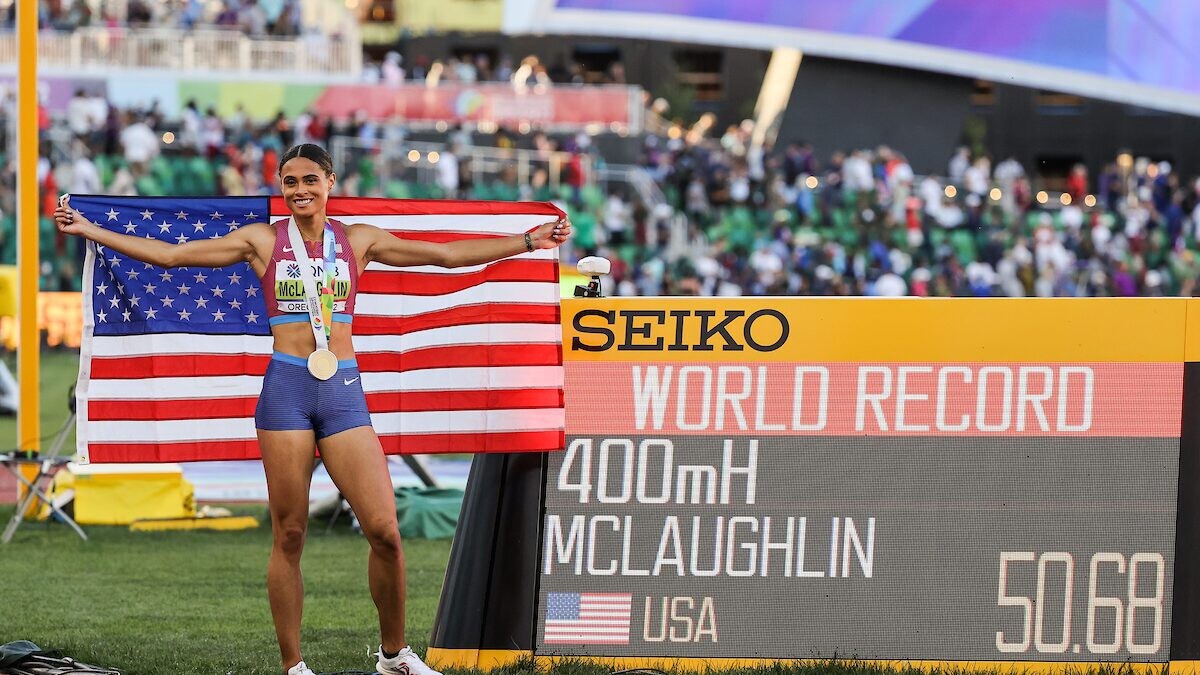
McLaughlin-Levrone won the 400m hurdles at the Tokyo Olympics and lowered the world record on four separate occasions between 2021 and 2022, bringing it down from 52.16 seconds to 50.68. After the 2022 season, McLaughlin-Levrone said she wanted to expand to the flat 400m to see what was possible in that event, while not giving up the 400m hurdles.
The 24-year-old did not contest the 400m hurdles in 2023. McLaughlin-Levrone won the U.S. title in the flat 400m last July in 48.74 seconds, the world’s fastest time last year, and the second-fastest time in American history. She planned to race the flat 400m at the world championships in August, then announced her withdrawal eight days before the event, due to a small tear in her left knee that led to patella issues and tendonitis.
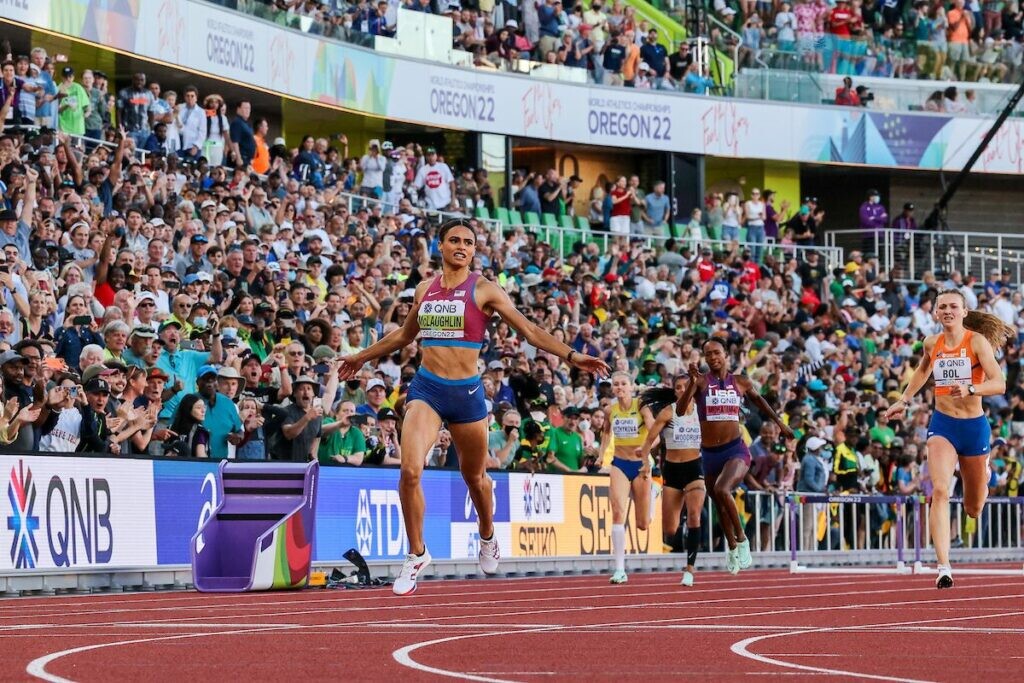
In McLaughlin-Levrone’s absence, Femke Bol of the Netherlands won the 400m hurdles event in Budapest last August in 51.70 seconds. Bol is the second-fastest woman in history in the event, with a personal best of 51.45. The 400m hurdles final could be the first matchup between Bol and McLaughlin-Levrone since the world record was last broken, at the 2022 World Athletics Championships in Eugene.
McLaughlin-Levrone has already raced three times this season in events outside the hurdles, and is on the entry list for the 200m at the USATF Los Angeles Grand Prix on Saturday, where she will face her U.S. teammate, Gabby Thomas.
Kersee also said that McLaughlin-Levrone, if she qualifies for the Olympics and is healthy in Paris, will also be available to run the mixed-gender 4x400m relay (final Aug. 3) and the women’s 4x400m relay (final Aug. 10).
by Marley Dickinson
Login to leave a comment
Paris 2024 Olympic Games
For this historic event, the City of Light is thinking big! Visitors will be able to watch events at top sporting venues in Paris and the Paris region, as well as at emblematic monuments in the capital visited by several millions of tourists each year. The promise of exceptional moments to experience in an exceptional setting! A great way to...
more...Fiona O’Keeffe, Emily Sisson, and Dakotah Lindwurm to headline New York Mini 10K
Fiona O’Keeffe, Emily Sisson, and Dakotah Lindwurm to headline world’s original women-only road race, which has garnered more than 200,000 finishers since 1972.
New York Road Runners (NYRR) has recruited the 2024 U.S. Olympic Women’s Marathon Team – Fiona O’Keeffe, Emily Sisson, and Dakotah Lindwurm – to headline its Mastercard® New York Mini 10K taking place Saturday, June 8 in Central Park.
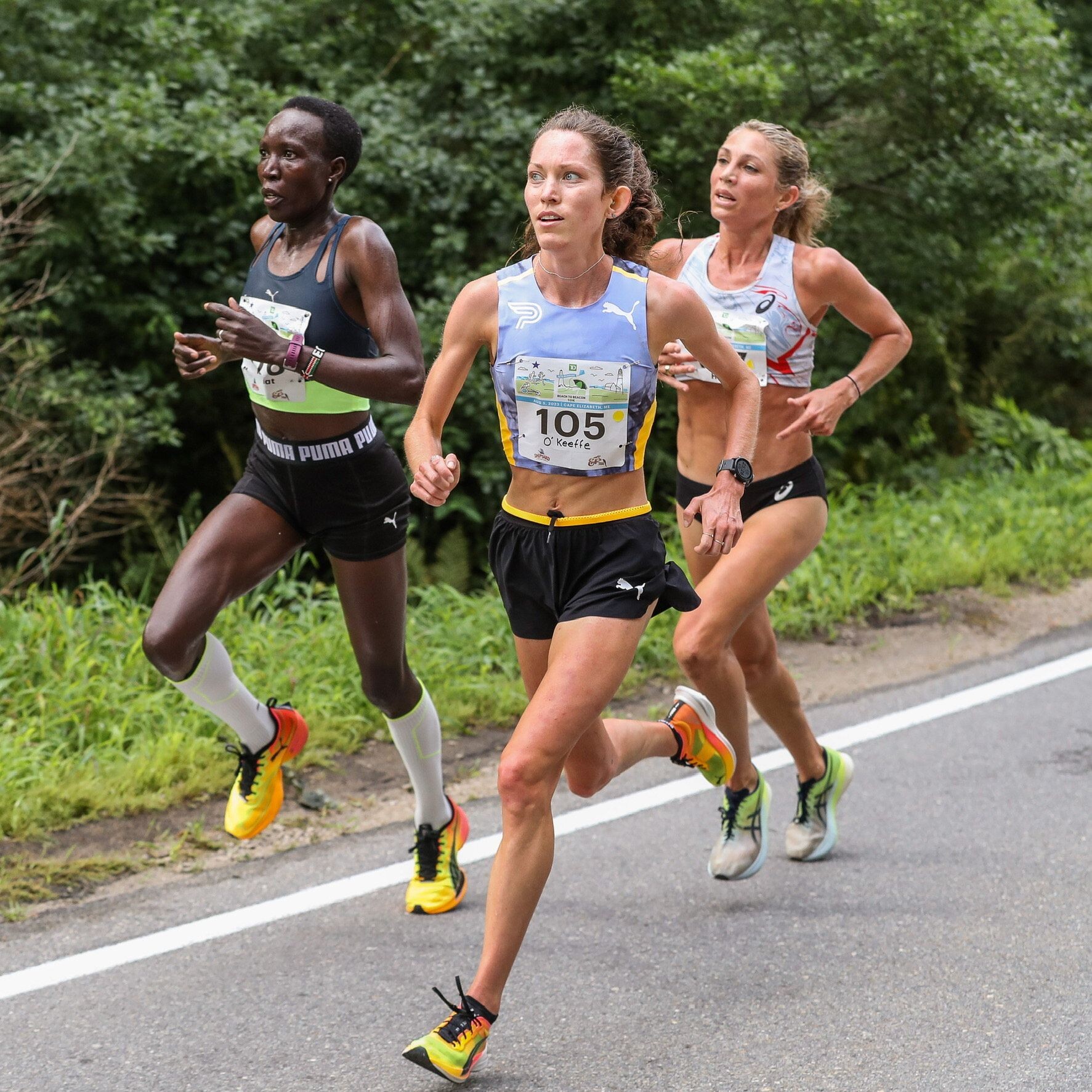
O’Keeffe won the 2024 U.S. Olympic Marathon Trials in February with an event record in her 26.2-mile debut and will now make her NYRR race debut. O’Keeffe joined the professional ranks in 2021 after a decorated career at Stanford University, where she was a six-time NCAA All-American.
“I’m excited to step to the line of my first road race since the U.S. Olympic Marathon Trials at the Mastercard New York Mini 10K on June 8,” O’Keeffe said. “It’s my first time running the Mini and I’m looking forward to running alongside a great group of women, some of whom I’ll be seeing in Paris later this summer.”
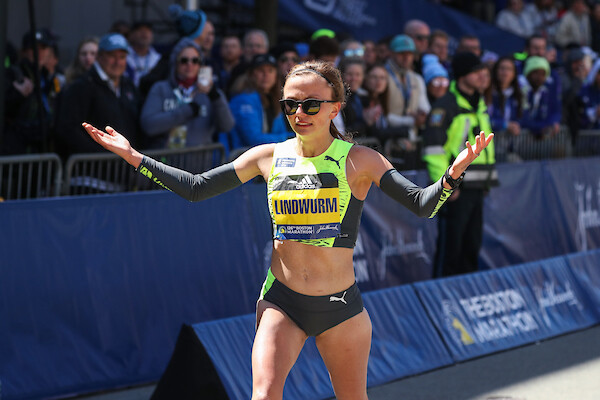
Sisson, the American record-holder in the marathon, finished runner-up at the U.S. Olympic Marathon Trials to qualify for her second Olympics and first in the 26.2-mile distance. She is a six-time national champion and has been successful in New York, finishing as runner-up at the United Airlines NYC Half twice and winning the USATF 5K Championships. Sisson was fourth at last year’s Mastercard® New York Mini 10K.
“The Mastercard New York Mini 10K is one of those special races that I always have circled on my calendar,” Sisson said. “Although my summer will look a little different this year with a marathon in Paris in August, I wouldn’t miss the chance to race with New York Road Runners in Central Park with my Olympic teammates and thousands of women from around the globe.”
Lindwurm finished third at the U.S. Olympic Marathon Trials and first gained notoriety after winning back-to-back titles at the Grandma’s Marathon in 2021 and 2022. Her highest finish at an NYRR race previously was sixth place at the 2023 United Airlines NYC Half.
“I’m really excited to join my Olympic teammates Fiona and Emily for the Mastercard New York Mini 10K,” Lindwurm said. “I’ve heard great things about the Mini my entire career, but it’s never quite worked with my racing and training schedule. This year, it works as a great step toward the starting line in Paris.”
New York Road Runners started the Mini 10K in 1972 as the first women-only road race, known then as the Crazylegs Mini Marathon. Seventy-two women finished the first race, and three weeks later Title IX was signed into law, guaranteeing girls and women the right to participate in school sports and creating new opportunities for generations of female athletes.
The Mastercard® New York Mini 10K is now one of non-profit NYRR’s 60 adult and youth races annually and has garnered more than 200,000 total finishers to date.
The 2024 Mastercard® New York Mini 10K will offer $39,500 in total prize money, including $10,000 to the winner of the open division.
Mastercard® will serve as title sponsor of the event for the fourth year, and as part of its ongoing partnership with NYRR will also serve as the presenting sponsor of professional women’s athlete field.
The event will be covered locally in the tri-state area by ABC New York, Channel 7 with live news cut-ins. The professional race will be covered by a livestream, distributed by ESPN+, abc7ny.com, and NYRR’s digital channels beginning at 7:40 a.m. ET.
The full professional athlete field for the Mastercard® New York Mini 10K will be announced later this month.
by Running USA
Login to leave a comment
New York Mini 10K
Join us for the NYRR New York Mini 10K, a race just for women. This race was made for you! It’s the world’s original women-only road race, founded in 1972 and named for the miniskirt, and it empowers women of all ages and fitness levels to be active and to look and feel great on the run. Every woman who...
more...U.S. Olympic Marathoners Will Race the Bolder Boulder 10K as a Pre-Paris Tune-Up
Conner Mantz, Clayton Young, and Leonard Korir will run in the International Pro Team Challenge on May 27.
Memorial Day is always an exceptional celebration for runners in Boulder, Colorado, but this year, it will have some extra special Olympic flair.
On Monday, May 27, more than 40,000 runners will run through the city that’s known for the iconic Flatirons rock formations, the Pearl Street pedestrian mall, and an exceptionally active population in the annual Bolder Boulder 10K. Now in its 44th year, it’s been one of the top road running races in the U.S. since its inception, and this year will serve as one of the final tune-ups for the men’s U.S. Olympic marathon squad before racing in the Paris Olympics later this summer.
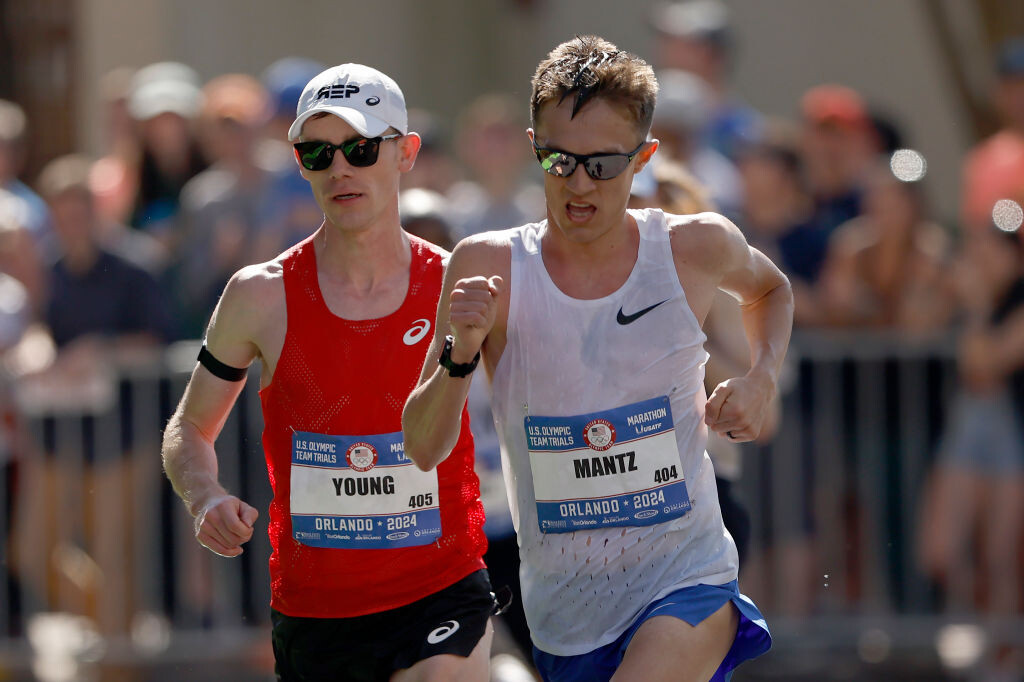
Conner Mantz, Clayton Young, and Leonard Korir, the top three finishers in the 2024 U.S. Olympic Trials who will be racing the marathon in the Paris Olympics on August 10, will be competing as Team USA Red in the Bolder Boulder’s International Pro Team Challenge that follows the citizen’s races. (Korir is expected to officially be named to the U.S. team in early May based on final pre-Olympic international rankings.)
The pro race, which has a prize purse of $83,700 before potential bonuses, is one of the things that makes the Bolder Boulder so unique. After all the runners in 98 citizen waves have completed the race, professional men’s and women’s international teams from more than a dozen countries compete on the same course for team and individual titles. The races feature a staggered start, with women beginning 15 minutes before the men so the winners of each race will finish about 10 minutes apart inside the University of Colorado’s Folsom Field football stadium.
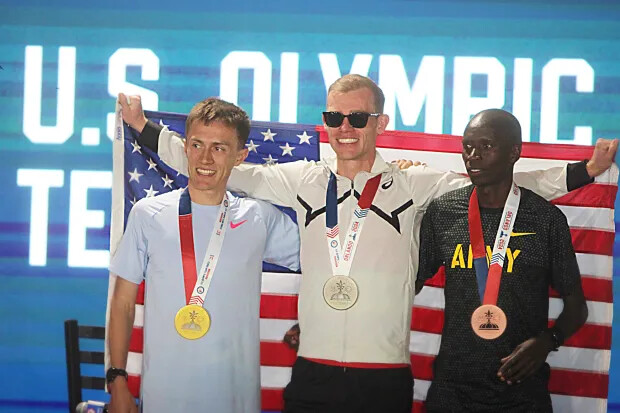
The finishing moments are among the thrilling spectacles in American running. By that point, the stadium is filled with a near-capacity crowd of roaring runners, family, and friends who have been watching the action play out on the massive video screens.
“The finish in the full stadium is like nothing else in the sport,” says Mantz, 27, who won the men’s race last year in 29:08 with a thrilling late-race surge to pass Kenya’s Alex Masai in the final 200 meters before the finish. “It was pretty electric. It took away all the pain you’re feeling mid-race. I was like, ‘Just race as hard as you can.’”
Team USA Red will have plenty of competition, from Team USA White, the secondary American team of Jared Ward, Futsum Zienasellassie, and Sam Chelanga, as well as teams from Kenya, Ethiopia, Mexico, and Rwanda. Teams are scored like a cross country race, with points awarded on the basis of finishing place, which means the team with the lowest combined score for all three runners is the winner. Ties are decided by the positions of the third-place finishers.
The women’s Team USA Red team will be led by defending champion Emily Durgin, along with Sara Hall and Boulder native Nell Rojas. Durgin finished ninth at the U.S. Olympic Trials in February and won the USATF 10 Mile Championships on April 7 in Washington D.C. At last year’s Bolder Boulder, she stormed to victory in 33:24, winning by 24 seconds over Kenya’s Daisy Kimeli.
Hall placed fifth in the U.S. Olympic Trials Marathon on February 3 in a U.S. master’s record (2:26:06) and 15th in the Boston Marathon on April 15. The women’s Team USA White roster will be composed of an all-University of Colorado alumnae squad—Makena Morley, Sara Vaughn, and Carrie Verdon.
“I can’t wait to be back in Boulder for the best day of the year,” says Durgin, 29, who will compete in the U.S. Olympic Trials 10,000 meters on the track in late June with the hopes of making the U.S. Olympic team. “Competing with Nell and Sara will make the experience even better.”
The women’s U.S. Olympic marathon team of Fionna O’Keefe, Emily Sisson, and Dakotah Lindwurm were invited to race in the Bolder Boulder but each runner declined, citing scheduling timing conflicts or a disinterest in racing at Boulder’s lofty altitude (5,430 feet). All of the runners who are racing for the U.S. teams in Boulder live at 4,500 feet or higher.
An Olympic Legacy
Boulder is known as one of the top running meccas in the U.S., in part because elite-level American and international runners have made it their training base since Olympic gold medalist Frank Shorter arrived in the early 1970s. Emma Coburn, Jenny Simpson, Yared Nuguse, Joe Klecker, Jake Riley, Hellen Obiri, and Edna Kiplagat are among the many top-level runners who are currently training in Boulder. Shorter, the 1972 marathon gold medalist, was a co-founder of Bolder Boulder 10K in 1979, and helped it grow into one of the country’s largest races.
Since then, numerous U.S. Olympians have raced in the Bolder Boulder, including Deena Kastor (a three-time women’s champion), Aliphine Tuliamuk (the 2022 women’s winner), Alan Culpepper, Elva Dyer, Ryan Hall, Abdi Abdirahman, Jorge Torres, Shalane Flanagan, Amy Cragg, Magdalena Boulet, and Libby Hickman, as well as Korir (who won it in 2022), and Ward (who was fourth in 2022).
Thanks to Boulder’s robust running community and the prestige of the race, the Bolder Boulder has also always featured fast sub-elite runners competing in the early citizen waves. Yet, the race has also celebrated dedicated middle-of-the-pack runners, as well as the first-time runners and walkers in the later waves. It was one of the first races to have bands playing along the course (as well as belly dancers and other entertainers), runners dressed up in costumes, elite wheelchair races, and in recent years, it has been known for a mid-race slip-and-slide and unofficial bacon aid station.
For the past 25 years, the Bolder Boulder has organized a special Memorial Day tribute—one of the largest in the country—that honors military veterans and new cadets.
The U.S. men’s Olympic marathon team competing in this year’s Bolder Boulder will be a legacy moment for the race, says Bolder Boulder race director Cliff Bosley.
“Having the three men that will represent our country in the marathon at this summer’s Paris Olympic Games is something we are extremely proud of,” Bosley says. “All three ran here last year, and to have them back is just incredible for the race, the city of Boulder, and the sport of running.”
by Brian Metzler
Login to leave a comment


